FIRM
/ NEWS
<
-
 HED Recognized Among Top Laboratory Design Firms for 2024We are proud to share that HED has been ranked among the nation's leading laboratory design firms for 2024 by Building Design+Construction, as highlighted in their recent Giants 400 Report.
HED Recognized Among Top Laboratory Design Firms for 2024We are proud to share that HED has been ranked among the nation's leading laboratory design firms for 2024 by Building Design+Construction, as highlighted in their recent Giants 400 Report.
This recognition underscores our commitment to creating state-of-the-art laboratory spaces that foster innovation and support the evolving needs of the scientific community. Our team's expertise in integrating advanced technologies, sustainable practices, and user-centric designs ensures that we deliver environments where researchers can thrive.
-
 HED Recognized with 2024 Cigna Healthy Workforce DesignationTMCigna Healthcare has selected [Company Name] as a recipient of their 2024 Gold-level Healthy Workforce Designation for demonstrating a strong commitment to improving the health and vitality of its employees through a comprehensive workplace well-being program!
HED Recognized with 2024 Cigna Healthy Workforce DesignationTMCigna Healthcare has selected [Company Name] as a recipient of their 2024 Gold-level Healthy Workforce Designation for demonstrating a strong commitment to improving the health and vitality of its employees through a comprehensive workplace well-being program!
Promoting the health of our employees and fostering a healthy work environment is of great importance to HED. We believe that effective workplace programs and policies can help support our employees’ health and well-being reducing the risk of health risks. At HED we nurture a culture of wellness focused on the employee: improving health, reducing stress, promoting work-life balance, boosting employee morale and enhancing productivity.
Vitality is defined as the capacity to pursue life with health, strength, and energy. It is both a driver and an outcome of health and work/life engagement. Cigna Healthcare believes vitality is essential not only for individuals but also as a catalyst for business and community growth. Research conducted as part of the Evernorth Vitality Index confirms that individuals with higher vitality experience better mental and physical health, along with higher levels of job satisfaction and performance. Despite this, less than one in five U.S. adults report having high levels of vitality. A workplace well-being program that takes a comprehensive approach to employee health is critical in boosting vitality and building a workforce that experiences improved health and job productivity.
-
 HED's Newest Principals, Associate Principals, and AssociatesCongratulations to our newest Principals, Associate Principals, and Associates!
HED's Newest Principals, Associate Principals, and AssociatesCongratulations to our newest Principals, Associate Principals, and Associates!
Please join us in celebrating the contributions of our newest Principals, whose continued leadership has been a driving force behind the positive impact we bring to our clients and communities:
Chauncey Kingsbury, AIA, LEED AP BD+C
Chauncey Kingsbury is a skilled project manager and the Operations Leader for HED’s national Workplace sector. With extensive experience in construction administration, she leads multidisciplinary teams with precision and clarity, transforming client needs into innovative, cost-effective solutions. A champion of sustainable design, Chauncey’s portfolio showcases high-performance buildings that balance environmental stewardship with operational and budgetary excellence.
Angie Janssen, CPA
Angela Janssen, serves as HED’s Corporate Financial Officer, bringing decades of financial expertise and a proven record of excellence. Since joining HED as Financial Controller, Angela has played a pivotal role in strengthening the firm’s financial operations and supporting its growth. She combines strategic insight with a collaborative approach, ensuring the firm’s financial stability and positioning HED for continued success.
Tim Gawel, NCIDQ
Tim Gawel is a seasoned and dynamic leader with extensive experience across diverse sectors, including workplace, community, and science & manufacturing. Renowned for his ability to seamlessly blend design excellence with operational efficiency, Tim consistently delivers innovative, purpose-driven spaces tailored to the unique needs of each project and client. His strategic approach to managing complex projects, coupled with a steadfast commitment to sustainable and human-centered design, ensures that every endeavor leaves a meaningful and transformative impact.
With well-established connections in the corporate and commercial design communities, Tim thrives in fostering collaboration and spearheading the creation of forward-thinking spaces that inspire productivity, creativity, adaptability, and moments of play. Beyond his impactful work in the workplace sector, Tim channels his passion for architecture into community-focused projects, where he leads teams in crafting spaces that enhance quality of life and build enduring legacies. Whether shaping innovative workplaces or revitalizing communities, Tim’s leadership and vision set the foundation for environments that elevate experience, inspire connection, and stand as a testament to thoughtful design.
Jon Howard, AIA, CDT
Jon Howard is a dedicated leader whose approach to design emphasizes the critical role of quality and rigor in project success. With extensive experience leading multidisciplinary teams of architects, engineers, and consultants, he excels in delivering innovative solutions across diverse project types. Specializing in the science and advanced manufacturing sector, he also leads HED’s specialty forensic lab design practice, Crime Lab Design. Driven by a passion for tackling complex challenges, he takes pride in supporting his clients' scientific endeavors.
Melina Aluwi, AIA, LEED AP
Melina Aluwi is an accomplished designer with extensive expertise in creating educational spaces that inspire collaboration and innovation. With a focus on higher education and PreK-12 environments, she has planned and delivered award-winning facilities that balance sustainability, functionality, and creativity. Melina’s dedication to fostering learning at every stage of development is evident in her thoughtful designs, which cater to diverse needs and encourage exploration. A leader in her field, she has been recognized with multiple accolades and actively contributes to her community through mentorship and professional organizations.
Peter Norris, AIA, LEED AP
Peter Norris is a design leader at HED with extensive experience in master planning, programming, and designing data center projects of all scales. Known for delivering innovative and efficient solutions, Peter consistently exceeds client expectations while meeting complex technical and programmatic requirements. His collaborative approach has resulted in numerous LEED-certified projects and recognition for design excellence. From new construction to adaptive reuse, Peter’s work exemplifies a commitment to creating impactful, future-ready spaces that align with client goals and priorities.
And please join us in congratulating our newest Associate Principals and Associates. These individuals come from across disciplines, and their dedication to client service, innovation, and design excellence is reflected in their work and conduct.
Congratulations to our newest Associate Principals:
· Hue Eryigit
· Shawn Henry
· Nicole Buhles
· Mike Baker
· Tracy Sweeny
· Chris Coates
· Maru Kim
· Leah Marthinson
· Brad Pepperell
And to our newest Associates:
· Arlie Schrantz
· Syed Ashraf
· Dhruv Shah
· Brandon Rossman
· Jillian Skelton
· Beth Moler
· Scott Corey
· Bryan Howard
· Ersa Llakmani
· Korina Macias
· Kylin Vail
· Scott Gustafson
· Johnathan Tull
· Nikhita Sapuram
· Nilou Golkar
These promotions mark the close of a strong year and reflect the positive impact these individuals’ contributions create for our clients, communities, and our firm. Thank you and congratulations to each of you!
-
 HED Recognized in the Top 30 Data Center Architecture Firms for 2024HED is proud to be ranked among the Top 30 Data Center Architecture Firms for 2024 by Building Design+Construction's Giants 400 Report. This prestigious recognition highlights our contributions to the ever-evolving data center sector, where innovation and sustainability are paramount.
HED Recognized in the Top 30 Data Center Architecture Firms for 2024HED is proud to be ranked among the Top 30 Data Center Architecture Firms for 2024 by Building Design+Construction's Giants 400 Report. This prestigious recognition highlights our contributions to the ever-evolving data center sector, where innovation and sustainability are paramount.
About the Giants 400 Report:
Building Design+Construction's annual Giants 400 Report is a comprehensive ranking of the largest architecture, engineering, and construction firms in the United States. It identifies leaders across various sectors, emphasizing their impact on the built environment.
HED extends its gratitude to our clients and partners who make achievements like this possible. Together, we continue to push boundaries and redefine possibilities in data center design.
-
 HED Named One of the Best Places to Work in Architecture for 2025We are proud to announce that HED has been recognized as one of the Best Places to Work in Architecture for 2025 by Best Companies Group! This award highlights our commitment to fostering a workplace culture that prioritizes collaboration, innovation, and the well-being of our team members.
HED Named One of the Best Places to Work in Architecture for 2025We are proud to announce that HED has been recognized as one of the Best Places to Work in Architecture for 2025 by Best Companies Group! This award highlights our commitment to fostering a workplace culture that prioritizes collaboration, innovation, and the well-being of our team members.
What Makes HED a Great Place to Work?
At HED, we believe that our people are our greatest asset. We strive to create an environment where everyone can thrive, contribute, and grow. This recognition would not be possible without the dedication of our team members who make HED a truly exceptional place to work. We are inspired every day by the passion, talent, and collaboration that defines our workplace.
As we celebrate this achievement, we remain committed to creating a workplace where every individual feels valued and empowered to succeed. -
 HED named one of the Top 100 A/E Firms for 2024 by BD+CWe are thrilled to announce that HED has earned a spot among the Top 100 Architecture/Engineering Firms for 2024 as part of Building Design+Construction's annual Giants 400 Report. This prestigious recognition underscores our dedication to delivering innovative and sustainable design solutions that make a positive impact across the communities we serve.
HED named one of the Top 100 A/E Firms for 2024 by BD+CWe are thrilled to announce that HED has earned a spot among the Top 100 Architecture/Engineering Firms for 2024 as part of Building Design+Construction's annual Giants 400 Report. This prestigious recognition underscores our dedication to delivering innovative and sustainable design solutions that make a positive impact across the communities we serve.
The Giants 400 Report highlights firms that demonstrate excellence and leadership in the architecture, engineering, and construction (AEC) industry. This year's ranking reflects our continued growth and success in delivering projects that address complex challenges with forward-thinking, client-centered solutions. Our multi-disciplinary expertise and commitment to collaboration have enabled us to drive impactful change in healthcare, workplace, science, housing, education, and other critical sectors.
Highlights from 2024:
Innovative Projects: From redefining workplace environments to designing cutting-edge healthcare facilities, HED has consistently delivered spaces that enhance experiences and support growth for our clients.
Sustainability Leadership: Our focus on sustainable practices continues to guide our designs, contributing to resilient and environmentally responsible communities.
Collaborative Success: Partnerships with visionary clients and consultants have been instrumental in achieving remarkable project outcomes.
This recognition is a testament to the dedication and talent of our team members across nine locations, as well as the trust and collaboration of our clients and partners. We extend our heartfelt thanks to everyone who has contributed to this achievement. Together, we are shaping a future where great design transforms lives.
As we celebrate this milestone, we remain focused on advancing our mission to create thoughtful, impactful solutions that address today’s challenges and anticipate tomorrow’s opportunities. -
 HED Receives Multiple AIA Michigan AwardsHED is proud to announce that two of its projects have been recognized by the AIA Michigan Design and Honor Awards program for 2024. The Judy and Stanley Frankel Detroit Observatory Addition and the University of Michigan Ruthven Building Renovation and Addition have both received prestigious accolades.
HED Receives Multiple AIA Michigan AwardsHED is proud to announce that two of its projects have been recognized by the AIA Michigan Design and Honor Awards program for 2024. The Judy and Stanley Frankel Detroit Observatory Addition and the University of Michigan Ruthven Building Renovation and Addition have both received prestigious accolades.
The Judy and Stanley Frankel Detroit Observatory Addition, designed in partnership with HopkinsBurns Design Studio, won a Building Award. This project involved transforming the second-oldest building on the University of Michigan campus into a modern, accessible space that preserves its historic integrity while providing new amenities for visitors.
The University of Michigan Ruthven Building Renovation and Addition, a collaboration with The S/L/A/M Collaborative, received the Masonry Institute of Michigan Masonry Award. This project introduced state-of-the-art learning spaces, including a 550-seat auditorium and flexible high-tech classrooms, to support the university's evolving pedagogical needs.
HED extends its gratitude to AIA Michigan for this recognition and congratulates its design partners, HopkinsBurns and The S/L/A/M Collaborative, for their outstanding contributions to these projects. -
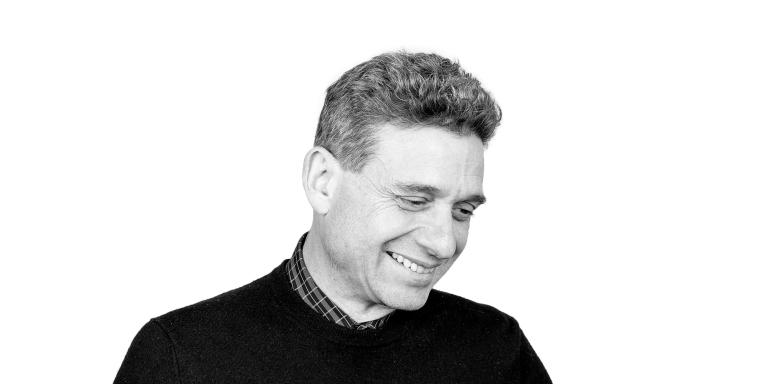 Enrique Suarez Named a Crain’s Chicago Business Notable Latino Leader for 2024HED is thrilled to announce that our CEO, Enrique Suarez, has been recognized as one of Crain's Chicago Business Notable Latino Leaders for 2024. This prestigious honor celebrates over 100 exceptional individuals who are making meaningful contributions across industries, from driving billion-dollar business decisions to championing social change in their communities.
Enrique Suarez Named a Crain’s Chicago Business Notable Latino Leader for 2024HED is thrilled to announce that our CEO, Enrique Suarez, has been recognized as one of Crain's Chicago Business Notable Latino Leaders for 2024. This prestigious honor celebrates over 100 exceptional individuals who are making meaningful contributions across industries, from driving billion-dollar business decisions to championing social change in their communities.
As CEO, Enrique embodies the leadership, innovation, and commitment to purpose that define HED. Since joining the firm, Enrique has been instrumental in strengthening HED’s position as a leader in architectural and design excellence. Under his guidance, we continue to deliver projects that make a positive impact by addressing the complex needs of clients and creating spaces that inspire, serve, and uplift the communities they touch.
Enrique’s leadership is rooted in a purpose-driven philosophy, reflected in his own words:
"We all make choices in our lives, and those choices must have a purpose. When we design an environment, the quality of that environment needs to reflect the intrinsic meaning of that client’s sole purpose."
His vision resonates throughout HED, where we believe in designing spaces that advance the quality of life for all. By fostering collaboration, championing innovation, and maintaining a client-centered focus, Enrique ensures that HED continues to deliver exceptional design solutions that leave a lasting legacy.
We are proud to see Enrique’s impactful leadership recognized on this esteemed platform and look forward to his continued contributions to HED and the broader design industry.
-
 HED Partners with Third Coast Music to Transform Chicago’s South Side with a Landmark Music CampusChicago is an extraordinary city with a vibrant and storied history. In addition to its unique architecture, unparalleled dining, and beautiful shoreline, Chicago has emerged as the Midwest’s hub for music, television, and film. With the construction of multiple movie and recording studios to accompany the diverse talent that Chicago attracts, our city has the infrastructure to accommodate various production needs.
HED Partners with Third Coast Music to Transform Chicago’s South Side with a Landmark Music CampusChicago is an extraordinary city with a vibrant and storied history. In addition to its unique architecture, unparalleled dining, and beautiful shoreline, Chicago has emerged as the Midwest’s hub for music, television, and film. With the construction of multiple movie and recording studios to accompany the diverse talent that Chicago attracts, our city has the infrastructure to accommodate various production needs.
But Chicago is still missing a pillar of cinema, which is why three musicians with decades of combined experience in the entertainment business have created the nonprofit Third Coast Music. Their mission is to foster the rich music culture of Chicago through educational and community outreach, while developing infrastructure to create new recording opportunities. To
that end, they have developed plans for an all-inclusive music campus featuring a world-class scoring stage.
This major recording studio would comprise a full-service facility including a Dub stage, Foley/ADR stage, screening room, and mixing and mastering rooms to enable the complete realization of cinematic projects in Illinois. A scoring stage of this caliber would be the first of its kind in the Midwest, providing a multitude of employment opportunities and eliminating the need for local talent to travel to other major production destinations to fulfill their recording and post-production needs.
Third Coast Music has been awarded the historic Stock Yards Bank building and adjacent lot for this monumental project, a cornerstone of Chicago’s industrial history in the South Side community. This hundred year- old building has been vacant for fifty years, and the City of Chicago has long awaited a cause worthy of its revival.
Situated on the South Side, their music campus is poised to serve the music industry as well as the local community. In addition to a state-of-the art scoring stage, the campus will include performance/event spaces, a music museum, creative incubators, classrooms, and a café. Furthermore, the campus will serve as a center for Third Coast Music’s operations and that of other nonprofits, fueling community-based initiatives and opportunities to nurture musicianship, entrepreneurship, academic excellence, and leadership.
-
 HED Ranks among Crain’s Detroit Business’ Top Architectural FirmsHED is ranked as the 4th largest architectural firm in the Detroit area by Crain’s Detroit Business!
HED Ranks among Crain’s Detroit Business’ Top Architectural FirmsHED is ranked as the 4th largest architectural firm in the Detroit area by Crain’s Detroit Business!
This growth is a direct reflection of our team's commitment to creating exceptional design that creates positive impact for our clients and communities. We thank every staff member and client who has made our growth possible.
Being recognized in the top 5 is emblematic of HED's history as a Detroit institution — serving our clients and community proudly for all of our 100+ years!
-
 Via Del Campo II Receives Tilt-Up Achievement AwardHED is proud to share that the Class ‘A’ research and development building, Via Del Campo II, has been selected for a Tilt-Up Achievement Award!
Via Del Campo II Receives Tilt-Up Achievement AwardHED is proud to share that the Class ‘A’ research and development building, Via Del Campo II, has been selected for a Tilt-Up Achievement Award!
Working with Drawbridge Realty Trust LLC, the facility is an adaptive, distinctive, and sustainable workplace, fit for a multitude of workstyles and cultures. The distinctive design blends contemporary building materials with generous fenestration while maintaining its energy-efficient envelope.
The TCA Tilt-Up Achievement Awards program was established to honor projects that use site-cast tilt-up concrete to introduce new building types, advance industry technology and provide unique solutions to building programs. The winning entries illustrate the variety, beauty, and flexibility of the tilt-up construction concept. -
 Chicago Welcomes the Conservatory Apartments: A Landmark in Sustainable Affordable Housing and First of Its Size to Be PHIUS Certified in the City of ChicagoThe Interfaith Housing Development Corporation, in collaboration with the integrated architectural and engineering firm HED, proudly announces the grand opening and ribbon-cutting ceremony of the Conservatory Apartments, a groundbreaking development in the heart of Chicago. This innovative project represents a significant milestone in the city's pursuit of sustainable and affordable housing solutions.
Chicago Welcomes the Conservatory Apartments: A Landmark in Sustainable Affordable Housing and First of Its Size to Be PHIUS Certified in the City of ChicagoThe Interfaith Housing Development Corporation, in collaboration with the integrated architectural and engineering firm HED, proudly announces the grand opening and ribbon-cutting ceremony of the Conservatory Apartments, a groundbreaking development in the heart of Chicago. This innovative project represents a significant milestone in the city's pursuit of sustainable and affordable housing solutions.
Designed by HED, the Conservatory Apartments stand as a testament to the power of creative collaboration and forward-thinking design. With a total area of 24,950 square feet, this development addresses a critical need for attainable housing while pushing the boundaries of sustainable architecture by providing 43 affordable units.
Situated just north of the iconic Garfield Park Conservatory, on a boulevard, the Conservatory Apartments boast a first-of-its-kind design challenge at scale in Chicago. Notably, it is the first PHIUS Certified large, affordable, multi-family passive house project in Chicago, setting a new standard for environmentally conscious construction in the region. Despite the challenges posed by the seasonal climate, the project demonstrates that highly sustainable and affordable design is achievable, offering a blueprint for future developments.
Interfaith has partnered with two social service providers, Deborah’s Place and Trilogy Behavioral Health, to ensure that individuals who have experienced homelessness and other challenges are supported in a permanent housing setting. “Interfaith’s mission is to ensure those most in need are housed in a setting that promotes their stability and growth and we are thrilled that Conservatory Apartment achieves that with high quality architecture and design,” states Perry Vietti, President of Interfaith Housing Development Corporation.
The design ethos of the Conservatory Apartments revolves around biophilic principles, seamlessly integrating nature into urban living spaces. By incorporating elements such as a captivating moss wall in the lobby, natural wood accents for ceiling treatments and light fixtures and daylighting in the corridors the project blurs the boundaries between indoor and outdoor environments, creating a harmonious connection with its natural surroundings. This biophilic approach not only enhances the living experience for residents but also pays homage to the nearby conservatory and park.
Moreover, the sustainability goals of the project extend beyond PHIUS passive house certification. The Conservatory Apartments was also selected to participate in the Living Building Challenge (LBC) Pilot Program for affordable housing, underscoring its commitment to achieving the highest standards of environmental performance.
“Not only will this first-of-its kind development provide residents with quality housing and supportive services, but it will do so in an environmentally-conscious manner,” Chicago Housing Commissioner Lissette Castañeda said. “The Conservatory Apartments sets a new standard in sustainability for affordable housing in Chicago.”
The successful realization of the Conservatory Apartments would not have been possible without the dedicated efforts of all involved parties. HED provided comprehensive architectural design services, structural engineering, and landscape architecture, while partners Henry Brothers served as the Contractor, CCJM Engineers provided Electrical, Plumbing and Fire Protection engineering, d'Escoto, Inc. served as the Civil Engineer, Boeman Design served as the PHIUS CPHC consultant, and Eco Achievers served as the PHIUS Certified Verifier.
With its blend of sustainability, affordability, and visionary design, this landmark development promises to redefine urban living and inspire future generations of builders, designers, and community leaders.
-
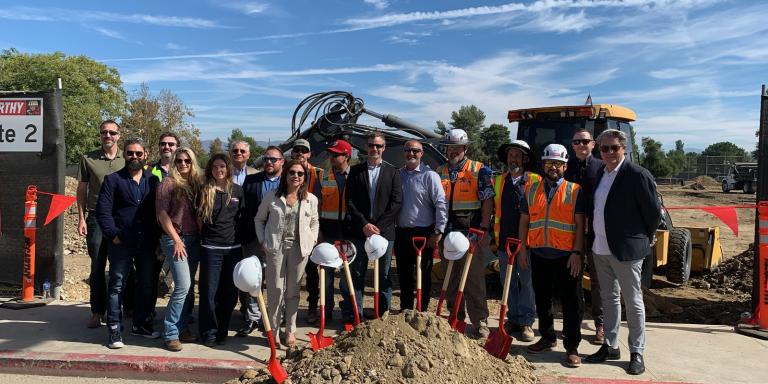 HED Celebrates Groundbreaking of Los Angeles Pierce College Academic East Building in Woodland Hills, CAHED proudly announces the groundbreaking of the Los Angeles Pierce College (LAPC) Academic East Building (AEB) in Woodland Hills, CA. Designed by HED, with McCarthy Building Co. as the General Contractor, the AEB marks a significant milestone for the LAPC campus, setting the stage for a dynamic and integrated educational environment.
HED Celebrates Groundbreaking of Los Angeles Pierce College Academic East Building in Woodland Hills, CAHED proudly announces the groundbreaking of the Los Angeles Pierce College (LAPC) Academic East Building (AEB) in Woodland Hills, CA. Designed by HED, with McCarthy Building Co. as the General Contractor, the AEB marks a significant milestone for the LAPC campus, setting the stage for a dynamic and integrated educational environment.
The project team includes esteemed partners such as Saiful Bouquet as the structural engineer, Introba, Inc. as the MEP engineer, Psomas and Associates as the civil engineer, Nuvis as the landscape architect, DTR Consulting Services as the building envelope consultant, NV5 (The Sextant Group) as low voltage / ICT designer, KGM Architectural Lighting as the lighting designer, Introba, Inc. as the technology integration consultant, MZM Consulting as the CaSP Consultant, and Veneklasen as the acoustical designer. Together, this collaborative team is dedicated to bringing the vision of the AEB to life, ensuring it becomes a prominent and sustainable addition to the LAPC campus.
The Academic East Building, spanning approximately 56,000 square feet over two stories, will serve as the new home for the math, psychology, and computer science programs. Positioned on a site currently used as an athletic practice field, the AEB will integrate seamlessly with the existing topography and adjacent campus amenities. This strategic location aims to create a bustling campus hub, fostering cross-disciplinary synergies and providing a gateway to the northeast campus.
-
 Dana Starner joins HED as Federal Sector LeaderHED is pleased to welcome Dana Starner as Associate Principal, Market Sector Leader focused on the Federal market.
Dana Starner joins HED as Federal Sector LeaderHED is pleased to welcome Dana Starner as Associate Principal, Market Sector Leader focused on the Federal market.
Dana Brings over fourteen years of experience in the federal market sector, specializing in high-stakes projects from conception to completion. With a proven track record, she utilizes a blend of analytical and creative approaches to navigate challenges and improve project outcomes.
We are confident Dana will be a valuable addition to our team and to our clients. Please join us in welcoming Dana to HED!
-
 HED Ranked MEP Top 100 GiantsWe're proud to share that our firm has once again been ranked among the Top 100 Consulting-Specifying Engineer MEP Design Giants! From safety to service, structural integrity to sustainability, engineers play a vital role in our integrated process, impacting every aspect of design from concept to construction. It is thanks to the dedication and professional integrity of our engineering teams that we are able to deliver exceptional solutions to our clients, and our continued place in this ranking is one among the many recognitions they have earned.
HED Ranked MEP Top 100 GiantsWe're proud to share that our firm has once again been ranked among the Top 100 Consulting-Specifying Engineer MEP Design Giants! From safety to service, structural integrity to sustainability, engineers play a vital role in our integrated process, impacting every aspect of design from concept to construction. It is thanks to the dedication and professional integrity of our engineering teams that we are able to deliver exceptional solutions to our clients, and our continued place in this ranking is one among the many recognitions they have earned.
-
 AIA Michigan Recognizes Two HED ProjectsHED is proud to share that the AIA Michigan Design and Honor Awards program has recognized not one, but two of our higher education projects in 2024!
AIA Michigan Recognizes Two HED ProjectsHED is proud to share that the AIA Michigan Design and Honor Awards program has recognized not one, but two of our higher education projects in 2024!
The University of Michigan Judy and Stanley Frankel Detroit Observatory Addition, designed in partnership with HopkinsBurns Design Studio, is a Building Award winner. Additionally, our design partner, The S/L/A/M Collaborative, was awarded a Masonry Institute of Michigan Masonry Award for our work together on the University of Michigan Ruthven Building Renovation and Addition!
Thank you to the AIA Michigan chapter for this tremendous honor, and congratulations to our design partners, HopkinsBurns and S/L/A/M!
-
 Chicago Office Named 2024 Best and Brightest Elite WinnerWe're excited to share that we have once again been named a Best & Brightest Company to Work For in Chicago!
Chicago Office Named 2024 Best and Brightest Elite WinnerWe're excited to share that we have once again been named a Best & Brightest Company to Work For in Chicago!
The Best and Brightest Companies to Work For® competition identifies and honors organizations that display a commitment to excellence in their human resource practices and employee enrichment.
Organizations are assessed based on categories such as communication, work-life balance, employee education, diversity, recognition, retention and more. Across the country in the metro areas where we work, HED continues to be ranked among this cohort of companies dedicated to creating a company culture worth working for.
In addition to this recognition, we are proud to announce that we have been selected as an Elite winner in the Creative, Wellness and Wellbeing Solutions category!
Companies selected in the Elite award categories have scored in the top 10% of all categories, and have demonstrated exceptionally innovative human resource practices and set high standards for all of Chicago’s businesses.
Thank you to the Best and Brightest Companies Group, and congratulations to our Chicago office!
-
 Ribbon Cutting Celebrates the Opening of Otto Veterans Square ApartmentsHED, in partnership with the Housing Authority of Cook County (HACC) and the City of Chicago Heights, proudly announces the ribbon-cutting ceremony for Otto Veterans Square, a newly completed 82-unit apartment complex designed to serve veterans and families earning 50% or less of the Area Median Income (AMI). The 77,253 GSF development sits on 2.1 acres in the heart of Chicago Heights and marks a significant milestone in the Downtown / EastSide Choice Neighborhoods Plan, aimed at neighborhood renewal.
Ribbon Cutting Celebrates the Opening of Otto Veterans Square ApartmentsHED, in partnership with the Housing Authority of Cook County (HACC) and the City of Chicago Heights, proudly announces the ribbon-cutting ceremony for Otto Veterans Square, a newly completed 82-unit apartment complex designed to serve veterans and families earning 50% or less of the Area Median Income (AMI). The 77,253 GSF development sits on 2.1 acres in the heart of Chicago Heights and marks a significant milestone in the Downtown / EastSide Choice Neighborhoods Plan, aimed at neighborhood renewal.
Otto Veterans Square, built on a portion of the former St. James Hospital campus, is the first phase of a broader vision to revitalize downtown Chicago Heights. This project stands as a beacon of hope and community, offering veterans and their families a safe, affordable, and supportive living environment.
Designed by HED in collaboration with dbHMS (MEP/FP & Energy Rater), d’escoto Inc. (Civil Engineer and Cost Estimating), and Upland Design (Landscape Architecture), Otto Veterans Square meets rigorous standards for sustainability and resident well-being. The design will achieve dual certification under the Enterprise Green Communities Criteria 2020 and the WELL Standard, and also complies with ComEd’s Energy Efficiency Program sustainable design guidelines.
Veteran-Centered Design
“HED’s approach to the design of Otto Veterans Square was deeply informed by the unique needs of its veteran residents,” says Susan King, FAIA, LEED AP BD+C, LFA, Housing & Mixed-Use Sector Leader of HED. “The building features calm interior color palettes, quiet spaces with heightened acoustic standards, and open-plan units and common areas that ensure clear visibility with no hidden corners. These design choices foster a peaceful and secure environment for residents.”
The building's exterior reflects a subtle patriotic theme, using a palette of purplish-blue and white masonry, accented by copper window shrouds. The design aims to create a dignified street presence while blending harmoniously with the surrounding community.
Community and Sustainability
Otto Veterans Square is more than just housing; it’s a community hub. The development includes exercise facilities, office space, meeting areas, and designated spaces for service animals. Outdoor amenities, such as a patio, secured yard, and raised garden beds, encourage resident interaction and foster a sense of purpose.
The project’s sustainable design ensures high performance over time, contributing to both environmental responsibility and the long-term health of its residents. Achieving dual certifications under the Enterprise Green Communities Criteria and the WELL Standard underscores the development’s commitment to sustainability and resident well-being.
A Collaborative Effort
“The Otto Veterans Square development represents another significant milestone in our ongoing efforts to provide high-quality, affordable housing that addresses the specific needs of the community,” said Danita W. Childers, Executive Director, HACC. “We appreciate all of the stakeholders that collaborated with the City of Chicago Heights and the design team to bring this vision to life. Collectively, we are thrilled about the positive impact and opportunity this creates for residents and the entire community.”
For more information about Otto Veterans Square, please visit www.thehacc.org or call (312) 663-5447.
-
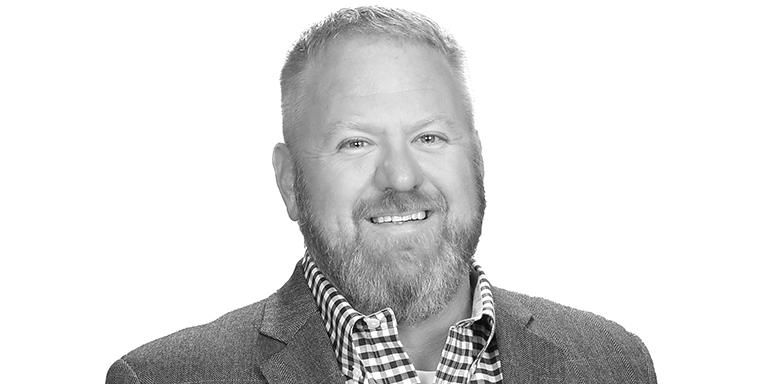 Jeff Joerling joins HED as Strategy and Development LeaderWe are thrilled to announce the newest addition to our team, Jeff Joerling, as Strategy and Development Leader based in Denver Colorado. A dynamic and growth-focused design-thinker and operations leader, Jeff brings a rich background in real estate development coupled with a successful record leading community-focused initiatives and managing large-scale corporate projects.
Jeff Joerling joins HED as Strategy and Development LeaderWe are thrilled to announce the newest addition to our team, Jeff Joerling, as Strategy and Development Leader based in Denver Colorado. A dynamic and growth-focused design-thinker and operations leader, Jeff brings a rich background in real estate development coupled with a successful record leading community-focused initiatives and managing large-scale corporate projects.
We are confident Jeff will be a valuable addition to our team and to our clients. Please join us in welcoming Jeff to HED! -
 Sarah Davis joins HED as Workplace StrategistWe are excited to announce the appointment of Sarah Davis as our new workplace strategist. Sarah brings experience in data
Sarah Davis joins HED as Workplace StrategistWe are excited to announce the appointment of Sarah Davis as our new workplace strategist. Sarah brings experience in data
assessment, business intelligence, and design thinking. Sarah will be instrumental in assisting clients in multiple sectors to create and implement innovative, efficient, and effective workplace environments.
Throughout her successful career, Sarah has led a variety of complex workplace strategy engagements, provided valuable insights, and thought leadership, and made significant contributions to the cultures of each organization she has been a part of.
We are confident that Sarah will be a valuable addition to our team and to our clients. Please join us in welcoming Sarah to HED! -
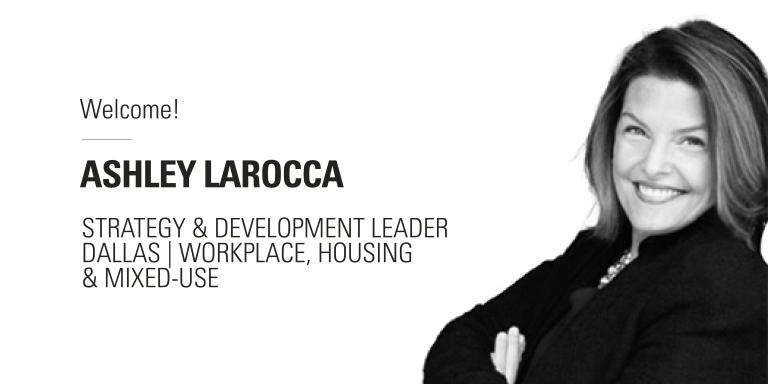 HED Announces New Hire: Ashley LaRocca as Strategy and Development Leader in DallasHED is thrilled to welcome Ashley LaRocca to the firm as Strategy and Development Leader in our Dallas office. Ashley joins the national housing and mixed-use and workplace market sector teams, bringing extensive expertise in strategy within the residential real estate and development industry both locally and nationally.
HED Announces New Hire: Ashley LaRocca as Strategy and Development Leader in DallasHED is thrilled to welcome Ashley LaRocca to the firm as Strategy and Development Leader in our Dallas office. Ashley joins the national housing and mixed-use and workplace market sector teams, bringing extensive expertise in strategy within the residential real estate and development industry both locally and nationally.
With over 25 years of successful sales and business development experience, Ashley has a proven track record of relationship-building, strategic vision for revenue generation, and data-driven decision-making. In her new role, Ashley will collaborate with HED's leadership and national and local design teams to develop and execute effective strategies for solving client challenges in both the residential and commercial real estate sectors. Her extensive industry network, combined with her deep knowledge and client-focused approach, will enhance the capabilities of our talented team of architects and engineers.
Prior to joining HED, Ashley served as Director of Business Development for the Canada and Texas Division of Humphreys & Partners Architects where she successfully secured high-profile projects with budgets exceeding $500 million. Ashley also has held key positions at Harwood International and BKV Group.
-
 San Diego Business Journal Names 4 HED Members Leaders of InfluenceEvery year, the San Diego Business Journal honors industry leaders, highlighting their careers and accomplishments in all facets of the workplace, all things from Commercial Real Estate, Business, and Education to name a few.
San Diego Business Journal Names 4 HED Members Leaders of InfluenceEvery year, the San Diego Business Journal honors industry leaders, highlighting their careers and accomplishments in all facets of the workplace, all things from Commercial Real Estate, Business, and Education to name a few.
Leaders are selected from outstanding achievements in the workplace, along with their participation in the local community.
In the Life Sciences category, HED is proud to share that not one, but FOUR of our team members have been named a 2024 Leader of Influence!
Congratulations to Rachel Carr, Laurian Dixon, Kevin Perry, and Neville Willsmore for this outstanding recognition! We are proud to have you as part of our talented group of industry innovators creating positive impact each day.
Please read below for each team members' featured bio!
-
 HED welcomes Tom Awai as a Strategy and Development Leader in Los AngelesHED is thrilled to welcome Tom Awai as Strategy and Development Leader in our Los Angeles office. Tom joins the national housing and mixed-use and healthcare market sector teams, bringing extensive expertise in strategy and supporting client goals.
HED welcomes Tom Awai as a Strategy and Development Leader in Los AngelesHED is thrilled to welcome Tom Awai as Strategy and Development Leader in our Los Angeles office. Tom joins the national housing and mixed-use and healthcare market sector teams, bringing extensive expertise in strategy and supporting client goals.
Tom is an experienced, action-oriented business development leader with success as a practice builder, driving value, financial growth, and enhanced market positioning for firms ranging from local offices to transnational corporations. With over 30 years of successful sales experience, Tom has a proven track record in relationship-building and strategic vision. In his new role, Tom will collaborate with HED's leadership and national and local design teams to develop and execute effective strategies for solving client challenges in housing, mixed-use, and healthcare. His vast industry network, knowledge in cross-functional team building, and focus on client needs will complement the seasoned team of architects and engineers he is joining at HED.
Tom’s passion for client service and strategic insight will be integral to HED’s effectiveness toward its mission: Advancing Your World. Through the positive impact of design, our teams create responsive, innovative, and sustainable design solutions for our clients, the community, and the world.
-
 Santa Monica High School Discovery Building Wins 2024 Green GOOD DESIGN® AwardWe are thrilled to share that the Santa Monica High School Discovery Building has won the 2024 Green GOOD DESIGN® Award from The European Centre for Architecture Art Design and Urban Studies and The Chicago Athenaeum Museum for Architecture and Design!
Santa Monica High School Discovery Building Wins 2024 Green GOOD DESIGN® AwardWe are thrilled to share that the Santa Monica High School Discovery Building has won the 2024 Green GOOD DESIGN® Award from The European Centre for Architecture Art Design and Urban Studies and The Chicago Athenaeum Museum for Architecture and Design!
The GOOD DESIGN® Awards recognizes the innovation in sustainable design on an annual basis, aligning with HED's commitment to creating a positive impact in the built environment around us.
This recognition highlights design excellence and gathers a great community of professional designers, companies, and talented people around the world who share the same ideas and dreams about design.
Congratulations to the SAMOHI Discovery Building design team, and everyone involved in this cutting-edge new complex.
-
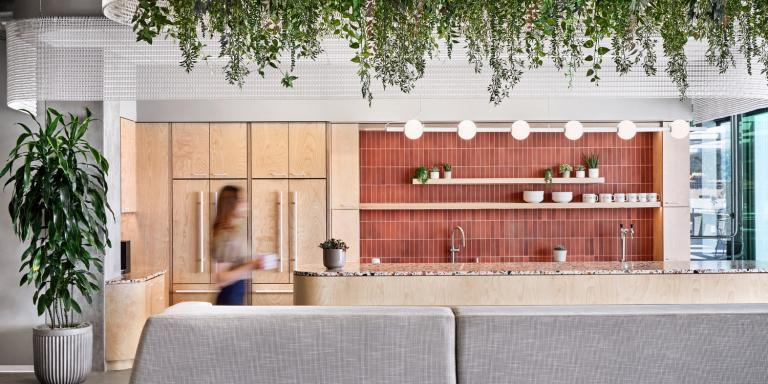 HED Ranked top 10 Architecture Firms by SDBJHED's award-winning presence in the local area has won the San Diego office into the local San Diego Business Journal Top Ten Architecture firms list for 2024! HED has been a member of the AEC community in San Diego since the early 2000's, with
HED Ranked top 10 Architecture Firms by SDBJHED's award-winning presence in the local area has won the San Diego office into the local San Diego Business Journal Top Ten Architecture firms list for 2024! HED has been a member of the AEC community in San Diego since the early 2000's, with
growing commercial, education, and life science design sectors, creating a positive impact within the community.
We would like to thank our clients and design partners for being an integral part of our continued growth in the region, and would like to share praise for the commitment of our San Diego design team, who create such a meaningful and positive impact in their community.
-
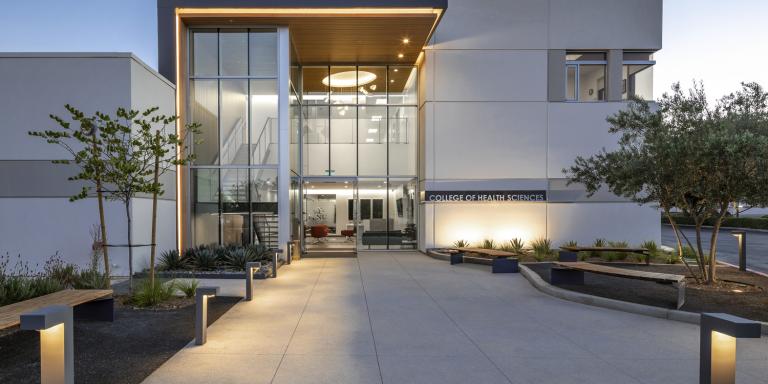 San Diego Business Journal selects HED Project as Outstanding Architectural DesignHED's recent redesign of the Point Loma Nazarene University's Balboa campus extension has been selected as an Outstanding Architectural Design by The San Diego Business Journal!
San Diego Business Journal selects HED Project as Outstanding Architectural DesignHED's recent redesign of the Point Loma Nazarene University's Balboa campus extension has been selected as an Outstanding Architectural Design by The San Diego Business Journal!
Each year the San Diego Business Journal publishes their select list of innovative and eye-catching designs, and we are proud to be recognized this year! -
 HED Named LA Best Places to Work 2024We're very excited to share that HED's LA office has once again been named a Top 100 Best Places To Work For by the Los Angeles Business Journal in 2024!
HED Named LA Best Places to Work 2024We're very excited to share that HED's LA office has once again been named a Top 100 Best Places To Work For by the Los Angeles Business Journal in 2024!
The annual Best Places to Work awards honors the TOP 100 companies in Los Angeles that are setting trends and redefining the employee experience. This list comes from top local employers that participated in a detailed survey conducted by Workforce Research Group. The survey ranks small, medium and large companies on subjects such as leadership, corporate culture, communications and much more.
-
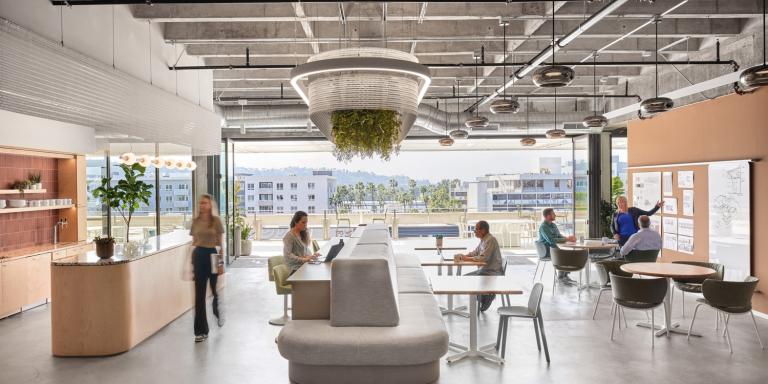 HED Named National Best & Brightest Company to Work ForHED is proud to be honored with a place on the Best & Brightest National Best Places to Work For List!
HED Named National Best & Brightest Company to Work ForHED is proud to be honored with a place on the Best & Brightest National Best Places to Work For List!
The Best and Brightest Companies to Work For® program recognizes companies that deliver exceptional human resource
practices and an impressive commitment to their employees. The program is presented throughout the United States by the National Association for Business Resources.
Determination, exceptional leadership, and daily ingenuity are three of the key components to any successful organization. The Best and Brightest programs identify, recognize, and celebrate the organizations that epitomize Better Business. Richer Lives. Stronger Communities.
Since 2019, our offices have been awarded the Best and Brightest Companies to Work for recognition, and we are proud to continue the legacy. -
 HED and McCarthy Building Companies, Inc. selected to design new East Los Angeles Community College District Kinesiology, Wellness, and Athletic ComplexWe are proud to announce the HED and McCarthy Building Companies, Inc. design-build team has been selected to spearhead the design and construction of the new East Los Angeles Community College (ELAC) District Kinesiology, Wellness, and Athletic Complex (KWAC) in Monterey Park, CA. The new, 110,000 square foot KWAC is positioned to be the catalyst for the evolution of the west side of campus, acting as the anchor for a Student Wellness Village that will be counterpart and complementary to the Student Success Village centered around the library. This new complex will offer students a place to develop connections with peers, the larger community and outdoors, increasing student success and academic excellence.
HED and McCarthy Building Companies, Inc. selected to design new East Los Angeles Community College District Kinesiology, Wellness, and Athletic ComplexWe are proud to announce the HED and McCarthy Building Companies, Inc. design-build team has been selected to spearhead the design and construction of the new East Los Angeles Community College (ELAC) District Kinesiology, Wellness, and Athletic Complex (KWAC) in Monterey Park, CA. The new, 110,000 square foot KWAC is positioned to be the catalyst for the evolution of the west side of campus, acting as the anchor for a Student Wellness Village that will be counterpart and complementary to the Student Success Village centered around the library. This new complex will offer students a place to develop connections with peers, the larger community and outdoors, increasing student success and academic excellence.
-
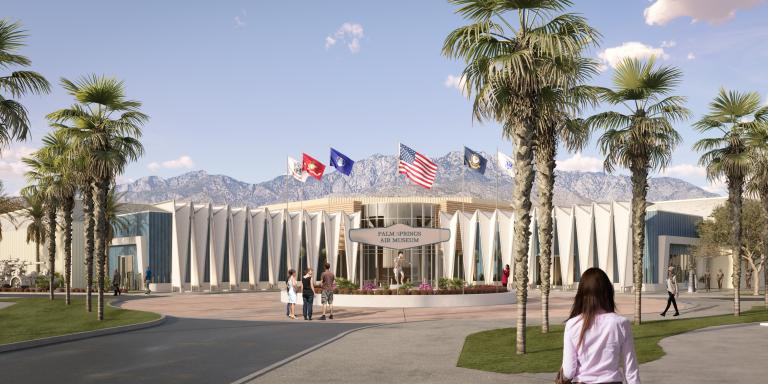 HED and Cioffi Architect Celebrate the Groundbreaking of the Palm Springs Air Museum ExpansionHED, in collaboration with Cioffi Architect, proudly celebrated the groundbreaking of the significant expansion of the Palm Springs Air Museum. This monumental project marks a transformative phase for the museum, evolving it from a beloved local attraction to a premier destination dedicated to preserving and educating the public on the crucial role air power has played in maintaining the American way of life since World War II.
HED and Cioffi Architect Celebrate the Groundbreaking of the Palm Springs Air Museum ExpansionHED, in collaboration with Cioffi Architect, proudly celebrated the groundbreaking of the significant expansion of the Palm Springs Air Museum. This monumental project marks a transformative phase for the museum, evolving it from a beloved local attraction to a premier destination dedicated to preserving and educating the public on the crucial role air power has played in maintaining the American way of life since World War II.
HED created the design concept for the expansion, while Cioffi Architect serves as the Architect of Record, ensuring the project's successful execution. The expansion includes two new building additions: a multi-purpose room and a gift shop with corporate offices, significantly enhancing the museum's offerings and visitor experience.
The design focuses on functional improvements and aesthetic enhancements. The enlarged areas for queuing and ticketing will facilitate better pedestrian flow and a more comfortable experience for visitors. The facade design, inspired by the blades of a turbine engine, incorporates elements of Palm Springs' iconic Mid-Century Modern architecture. This modern facade not only provides an aesthetic upgrade but also serves a practical purpose by shielding and protecting the museum's historical archives within their appropriate war-era hangar environments.
"The expansion of the Palm Springs Air Museum is a testament to our commitment to creating spaces that are functional, compelling, and create a positive impact for the client and surrounding community," said Dan Ringler, Sector Leader at HED. "We are honored to contribute to a project that preserves such an important part of our history and enhances the educational experience for all visitors."
-
 HED and LIA Announce Merger to Bring Strategic Expertise and Drive Community Impact in Denver, ColoradoHED is proud to announce a merger with award-winning, Denver-based Larson Incitti Architects (LIA). The merger combines LIA's staff with HED's Denver office, significantly expanding the local team and leveraging community relationships to create new opportunities across multiple market sectors.
HED and LIA Announce Merger to Bring Strategic Expertise and Drive Community Impact in Denver, ColoradoHED is proud to announce a merger with award-winning, Denver-based Larson Incitti Architects (LIA). The merger combines LIA's staff with HED's Denver office, significantly expanding the local team and leveraging community relationships to create new opportunities across multiple market sectors.
With over 25 years of experience in the greater Denver area, the LIA team has established trust among clients in the pre K-12 education and community sectors by consistently delivering excellence through collaborative design innovation and dedication to client service. HED is proud to continue that tradition of excellence and build upon its market sector expertise with the recently combined Denver staff.
"Our strategic merger with LIA is a great fit because of our shared commitment to create positive impact for clients and the greater community while providing growth opportunities for our talented staff," said Enrique Suarez, AIA, LEED AP BD+C, Co-CEO of HED. "We are pleased to welcome the LIA team into the HED family and look forward to using our combined strength to explore new opportunities and fulfill our common commitment to ensuring long-term success for our clients."
HED creates integrated, innovative, sustainable design solutions for clients in the healthcare, higher education, housing and mixed-use, manufacturing and product development, mission-critical, preK-12, science, federal and transportation, and workplace sectors.
HED is known for its aspirational company culture, which emphasizes continual learning and growth. HED values diversity in perspectives, experiences, abilities, and expertise.
"LIA has always been dedicated to client service and committed to the Denver community, and since our founding, we've emphasized learning and collaboration in our company culture — values we share with HED," said LIA Co-Founder Bruce Larson, AIA. "Those shared values and commitments are strengthened by joining forces through the merger, and we look forward to working as part of the HED team to continue creating positive impact for clients in Denver and the surrounding area." -
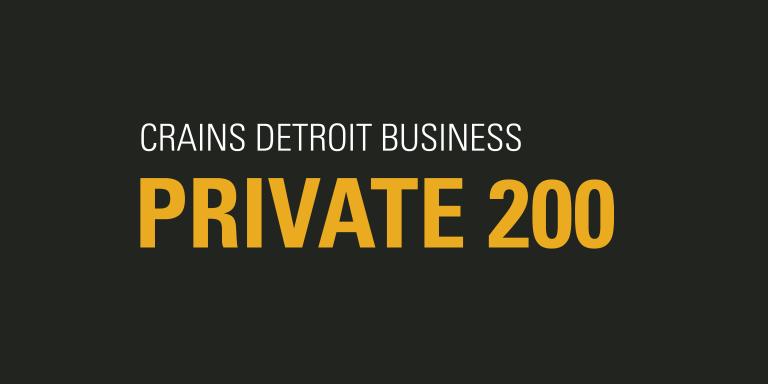 HED named to Crains Detroit Business Private 200 list of 2024HED has held a place on the Crain's Detroit Business Private 200 for over a decade, and 2024 is no different!
HED named to Crains Detroit Business Private 200 list of 2024HED has held a place on the Crain's Detroit Business Private 200 for over a decade, and 2024 is no different!
Being a consistent member of the Private 200 is emblematic of HED's history as a Detroit institution -- serving our clients and community proudly for all of our 100+ years!
-
 HED Named Crain's Chicago Top Architecture FirmsCrain’s brand-new list of Chicago’s top architecture firms is here, featuring 20 firms ranked by number of local licensed architects in 2024.
HED Named Crain's Chicago Top Architecture FirmsCrain’s brand-new list of Chicago’s top architecture firms is here, featuring 20 firms ranked by number of local licensed architects in 2024.
HED is proud to announce that we have been named in the top 15!
This growth is a direct reflection of our team's commitment to creating exceptional design that creates positive impact for our clients and communities. We thank every staff member and client who has made our growth possible. -
 HED Named Best and Brightest in Southern CaliforniaWe're proud to share that our firm has been named a Best and Brightest Company to Work For in Southern California for 2024!
HED Named Best and Brightest in Southern CaliforniaWe're proud to share that our firm has been named a Best and Brightest Company to Work For in Southern California for 2024!
The Best and Brightest Companies to Work For® competition identifies and honors organizations that display a commitment to excellence in their human resource practices and employee enrichment. Organizations are assessed based on categories such as communication, work-life balance, employee education, diversity, recognition, retention and more.
At HED, we strive to create a culture of aspiration—not end points. We believe in embracing change and challenges, listening to each other, and learning from each other. As an inclusive, integrated practice, we value the diversity of perspectives, experiences, abilities and expertise that advance both the work we do, and the world we share. We're very pleased to be honored in SoCal for our culture and investment in our teams. -
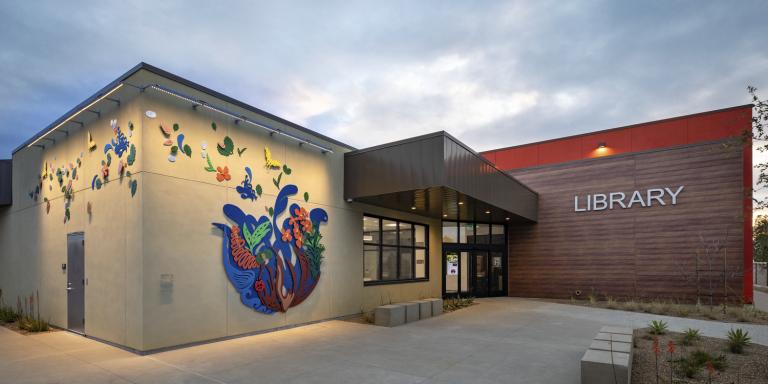 Lakeside Library Selected for USGBC-CA 2024 Civic Building AwardWhere innovation meets sustainability, uniting advocates and companies statewide to shape a greener California, the USGBC-CA recently held its 2024 conference, where Lakeside Library was announced the winner of the Civic Building Award!
Lakeside Library Selected for USGBC-CA 2024 Civic Building AwardWhere innovation meets sustainability, uniting advocates and companies statewide to shape a greener California, the USGBC-CA recently held its 2024 conference, where Lakeside Library was announced the winner of the Civic Building Award!
The theme of this years' conference? Unification, with a goal of bringing together green building leaders from across the state to strengthen our connections and learn from one another
USGBC-CA's commitment to a converge innovation and sustainability, uniting advocates and companies statewide to shape a greener California directly aligns with our mission to create positive impact in the built environment. -
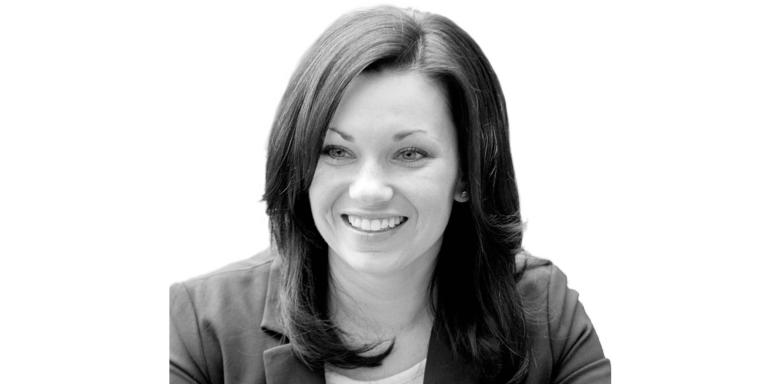 Lauren Roller Elected to ACEC Michigan Board of DirectorsThis May, the American Council of Engineering Companies of Michigan has announced their newly elected President and Board of Directors! Richard Chelotti, PE, from Colliers Engineering and Design will be the ACEC Michigan 2024-2025 President.
Lauren Roller Elected to ACEC Michigan Board of DirectorsThis May, the American Council of Engineering Companies of Michigan has announced their newly elected President and Board of Directors! Richard Chelotti, PE, from Colliers Engineering and Design will be the ACEC Michigan 2024-2025 President.
Alongside Richard are newly elected officers and board of directors, one of which is an HED team member. Structural Engineer Lauren Roller has been elected as an ACEC Director for 2024-2025!
Congratulations to Lauren and the following elected leaders:
2024-2025 ACEC/Michigan Officers:
President: Rick Chelotti, PE, Colliers Engineering and Design, Lansing
President-Elect: Barbara Arens, PE, Cincar Consulting Group, Detroit
Treasurer: Matt Stacey, PE, Wade Trim, Taylor
National Director: G. Ramanujam (Ram), PE, Somat Engineering, Detroit
Past-President: Jon Kramer, PE, OHM Advisors, Livonia
2024-2025 ACEC/Michigan Directors:
Roland Alix, PE, Hubbell, Roth & Clark, Inc., Bloomfield Hills
Eric Barden, PS, Spicer Group, Saginaw
Steve Carlisle, PE, Wightman, Benton Harbor
Chuck Gemayel, PE, SME, Plymouth
Cheryl Gregory, PE, ROWE Professional Services Company, Flint
Brenda Longman, Abonmarche, Kalamazoo
Lauren Roller, PE, HED, Royal Oak
Jeff Schumaker, PE, Fishbeck, Grand Rapids
Scott Shogan, PE, HNTB, Detroit
Matt Wendling, PE, WSP, Lansing
-
 HED Named LA Times Top Architecture FirmThe Los Angeles Times has published the 40 largest architecture firms, and HED is in the elite list!
HED Named LA Times Top Architecture FirmThe Los Angeles Times has published the 40 largest architecture firms, and HED is in the elite list!
All firms on the list are ranked by Southern California architectural fee income for 2023.
Though founded in Detroit, HED has grown from a collection of regional offices to a national practice, and is one of the 200 largest design firms in the US, serving clients in the Southern California region.
-
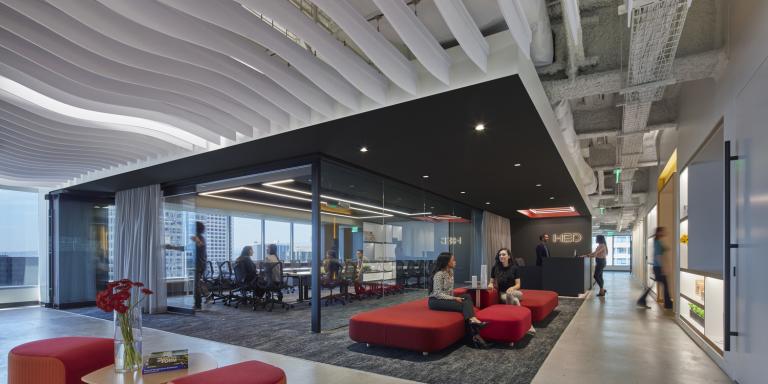 Los Angeles Office Named Best and BrightestWe're very proud to share that we have once again been named a Best & Brightest Company to Work For in Los Angeles!
Los Angeles Office Named Best and BrightestWe're very proud to share that we have once again been named a Best & Brightest Company to Work For in Los Angeles!
The Best and Brightest Companies to Work For® competition identifies and honors organizations that display a commitment to excellence in their human resource practices and employee enrichment.
Organizations are assessed based on categories such as communication, work-life balance, employee education, diversity, recognition, retention and more. Across the country in the metro areas where we work HED continues to be ranked among this cohort of companies dedicated to creating a company culture worth working for.
-
 HED Chicago Office Becomes LEED Platinum CertifiedWe are excited to share that our Chicago office has been certified LEED Platinum!
HED Chicago Office Becomes LEED Platinum CertifiedWe are excited to share that our Chicago office has been certified LEED Platinum!
Designed with sustainable considerations implemented throughout the space to enhance efficiency and user comfort, we have achieved platinum level certification in our experiential, collaborative office.
LEED (Leadership in Energy and Environmental Design) is the world's most widely used green building rating system. LEED certification provides a framework for healthy, highly efficient, and cost-saving green buildings, which offer environmental, social and governance benefits. LEED certification is a globally recognized symbol of sustainability achievement, and it is backed by an entire industry of committed organizations and individuals paving the way for market transformation.
At HED, we are proud to offer sustainable design solutions with projects like our Chicago office being an example of sustainable design excellence. -
 San Diego Office Named Best and Brightest 2024We're proud to share that our San Diego office has won the Best and Brightest award for 2024!
San Diego Office Named Best and Brightest 2024We're proud to share that our San Diego office has won the Best and Brightest award for 2024!
The Best and Brightest Companies to Work For® competition identifies and honors organizations that display a commitment to excellence in their human resource practices and employee enrichment. Organizations are assessed based on categories such as communication, work-life balance, employee education, diversity, recognition, retention and more.
At HED, we strive to create a culture of aspiration—not end points. We believe in embracing change and challenges, listening to each other, and learning from each other. As an inclusive, integrated practice, we value the diversity of perspectives, experiences, abilities and expertise that advance both the work we do, and the world we share. We're very pleased to be honored in San Diego for our culture and investment in our teams.
-
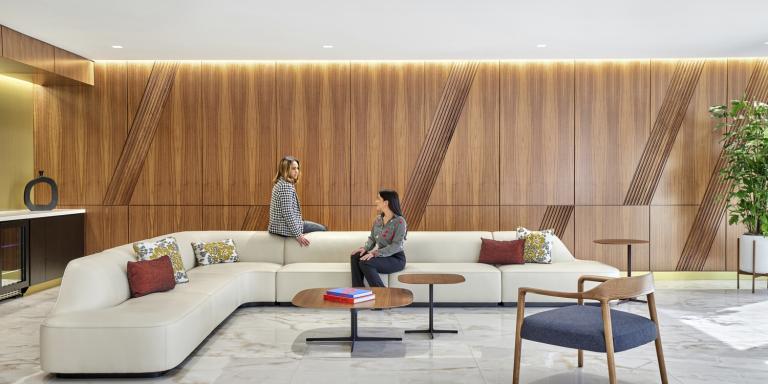 Taft Office Expansion Receives CBC Merit AwardThe New Taft, Stettinius & Hollister, LLP Chicago Headquarters has been Awarded The Chicago Building Congress Merit Award for Interior Design of the Year!
Taft Office Expansion Receives CBC Merit AwardThe New Taft, Stettinius & Hollister, LLP Chicago Headquarters has been Awarded The Chicago Building Congress Merit Award for Interior Design of the Year!
HED, working with Taft, provided a dynamic new workplace, combining dedicated client, conferencing and collaboration spaces, juxtaposed against light-filled workplace environments. Anchoring the space is a dynamic three story spiral stair linking all levels of Taft's HQ at 111 E. Wacker.
The Merit Awards have celebrated the building industry since 1956 by singling out the outstanding projects in greater Chicagoland built during the past three years. We are proud to be recognized! Congratulations and thank you to our client Taft Stettinius & Hollister LLP, and partner Valenti Builders for this exciting recognition! -
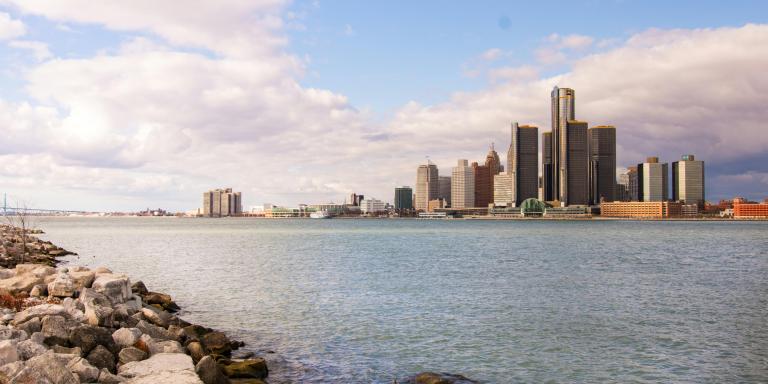 Detroit Office Named Best and BrightestWe're proud to share that our Detroit office has been named a Best and Brightest Company to Work For in 2024!
Detroit Office Named Best and BrightestWe're proud to share that our Detroit office has been named a Best and Brightest Company to Work For in 2024!
The Best and Brightest Companies to Work For® competition identifies and honors organizations that display a commitment to excellence in their human resource practices and employee enrichment. Organizations are assessed based on categories such as communication, work-life balance, employee education, diversity, recognition, retention and more.
At HED, we strive to create a culture of aspiration—not end points. We believe in embracing change and challenges, listening to each other, and learning from each other. As an inclusive, integrated practice, we value the diversity of perspectives, experiences, abilities and expertise that advance both the work we do, and the world we share. We're very pleased to be honored in Detroit for our culture and investment in our teams. -
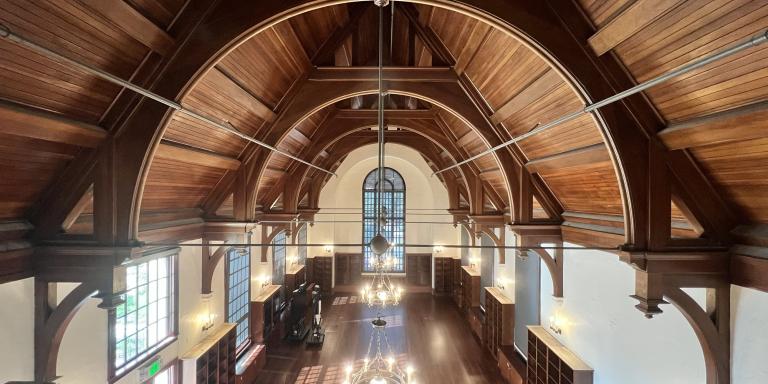 Paly Tower Wins Historic Preservation AwardThis weekend the Paly Tower at Paly High School remodel project was awarded the Preservation Award by the joint Palo Alto Stanford Heritage & Palo Alto Historical Association!
Paly Tower Wins Historic Preservation AwardThis weekend the Paly Tower at Paly High School remodel project was awarded the Preservation Award by the joint Palo Alto Stanford Heritage & Palo Alto Historical Association!
Congratulations to our client Palo Alto Unified School District and our partners fs3H (PM) and Cal Pacific (GC)!
Each year, the Palo Alto Stanford Heritage (PAST), in cooperation with the Palo Alto Historical Association (PAHA), hosts a presentation of Centennial Plaques to owners of circa 1923 buildings in Palo Alto, CA.
This event was started in 1994 by the City of Palo Alto’s Historic Resources Board as part of Palo Alto’s Centennial celebration, recognizing preservation projects that renovate, rehabilitate, or restore local historic buildings. -
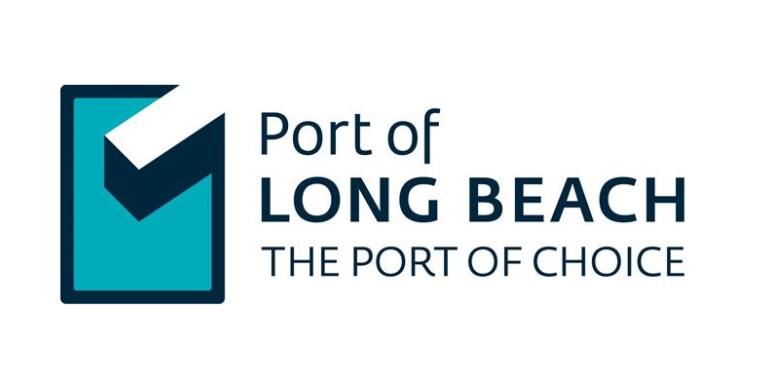 HED and Environ team Selected to Design New Port of Long Beach Field Support OfficeWe are proud to announce that the HED and Environ team has been selected to spearhead the design of the new Field Support Office (FSO) Building Project at the Port of Long Beach (POLB). Environ is leading the project as Design Architect, supported by HED interior design and engineering teams. This project marks a significant step forward in providing a permanent facility to support field staff while enhancing security measures for the entire FSO and Maintenance Facility complex, providing offices and operational space to house Field Service Operations Staff.
HED and Environ team Selected to Design New Port of Long Beach Field Support OfficeWe are proud to announce that the HED and Environ team has been selected to spearhead the design of the new Field Support Office (FSO) Building Project at the Port of Long Beach (POLB). Environ is leading the project as Design Architect, supported by HED interior design and engineering teams. This project marks a significant step forward in providing a permanent facility to support field staff while enhancing security measures for the entire FSO and Maintenance Facility complex, providing offices and operational space to house Field Service Operations Staff.
The upcoming project, situated adjacent to the POLB Maintenance Facility in the Long Beach Harbor District, aims to introduce a unified and consolidated approach to security, alongside essential site enhancements. These enhancements encompass parking accommodations, a PV solar system for both the building and parking lot, storage facilities, open areas, landscaping, walkways, and fencing.
Key objectives of the Project include achieving Net Zero and LEED Gold Certification, and adhering to a timeline that anticipates bid advertisement in Spring 2026, with construction substantial completion expected by Fall 2027. The team also includes KPFF Engineers (Civil), Lynn Capouya (Landscape Architecture), and Engeo (Geotechnical Engineering).
With a commitment to excellence and innovation, the team looks forward to collaborating closely with all stakeholders to bring this visionary project to fruition, ensuring it serves as a model of efficiency, sustainability, and security for years to come.
-
 Lathrop Homes Wins Commercial Real Estate AwardWe are excited to share that our recent work in partnership with Related Midwest on Lathrop Homes Phase 1B has been selected as the Community Impact Project of the Year by the Greater Chicago Food Depository - Commercial Real Estate Awards!
Lathrop Homes Wins Commercial Real Estate AwardWe are excited to share that our recent work in partnership with Related Midwest on Lathrop Homes Phase 1B has been selected as the Community Impact Project of the Year by the Greater Chicago Food Depository - Commercial Real Estate Awards!
Lathrop Phase 1B is the latest phase of our ongoing transformation of the Lathrop campus in Chicago, which seeks to combine CHA, affordable and market rate housing into single, mixed income developments, Lathrop continues the tradition of collaboration. -
 HED's Dallas Office Recognized as Best and BrightestWe're proud to share that our Dallas office has won the Best and Brightest award for 2024!
HED's Dallas Office Recognized as Best and BrightestWe're proud to share that our Dallas office has won the Best and Brightest award for 2024!
The Best and Brightest Companies to Work For® competition identifies and honors organizations that display a commitment to excellence in their human resource practices and employee enrichment. Organizations are assessed based on categories such as communication, work-life balance, employee education, diversity, recognition, retention and more.
At HED, we strive to create a culture of aspiration—not end points. We believe in embracing change and challenges, listening to each other, and learning from each other. As an inclusive, integrated practice, we value the diversity of perspectives, experiences, abilities and expertise that advance both the work we do, and the world we share. We're very pleased to be honored in Dallas for our culture and investment in our teams.
-
 HED listed in ENR's Top 500 Design FirmsHED is proud to be listed once again in the Engineer News Record Top 500 Design Firms ranking!
HED listed in ENR's Top 500 Design FirmsHED is proud to be listed once again in the Engineer News Record Top 500 Design Firms ranking!
From safety to service, structural integrity to sustainability, engineers play a vital role in our integrated process, impacting every aspect of design from concept to construction.
Each year, ENR performs annual surveys of its key segments, and ranking companies engaged in general contracting, specialty contracting, engineering, architecture and environmental services, among other specialties. The rankings, based on annual revenue at home and abroad, are further divided into specific market categories. HED is proud to be part of these rankings since 1964. -
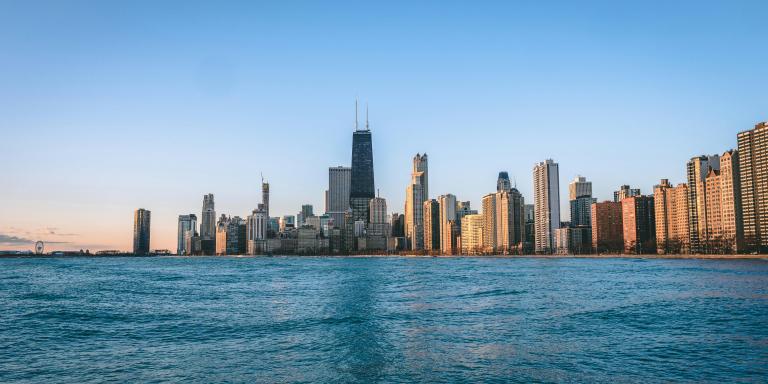 HED named a Chicago Best & Brightest Company to Work For in 2024We're excited to share that we have once again been named a Best & Brightest Company to Work For in Chicago!
HED named a Chicago Best & Brightest Company to Work For in 2024We're excited to share that we have once again been named a Best & Brightest Company to Work For in Chicago!
The Best and Brightest Companies to Work For® competition identifies and honors organizations that display a commitment to excellence in their human resource practices and employee enrichment.
Organizations are assessed based on categories such as communication, work-life balance, employee education, diversity, recognition, retention and more. Across the country in the metro areas where we work, HED continues to be ranked among this cohort of companies dedicated to creating a company culture worth working for. -
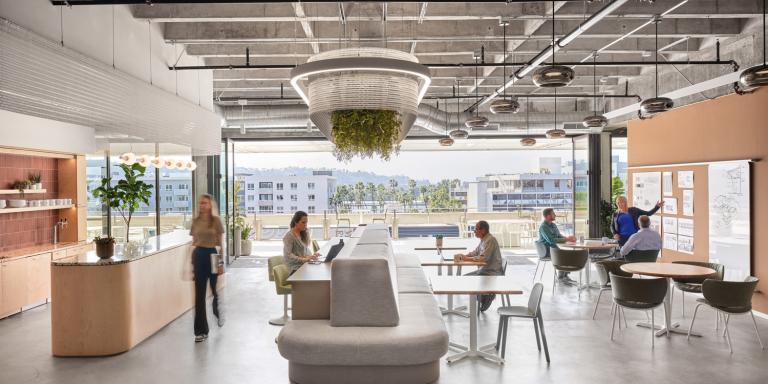 HED named a 2024 Top 100 Interior Design GiantHED is very pleased to share that we have once again ranked with the Interior Design Top 100 Giants - a list of the 100 most prominent firms in interior design. We're proud of this standing, which reflects a large body of work and experience in interior design, and thank our clients and design partners, with whom we continue to approach each project without preconceptions.
HED named a 2024 Top 100 Interior Design GiantHED is very pleased to share that we have once again ranked with the Interior Design Top 100 Giants - a list of the 100 most prominent firms in interior design. We're proud of this standing, which reflects a large body of work and experience in interior design, and thank our clients and design partners, with whom we continue to approach each project without preconceptions.
-
 HED and Larson Incitti Architects Chosen for Boulder Valley School District Boulder High School Facility Enhancements and New Career Technical Education CenterThe Boulder Valley School District (BVSD) has announced the selection of a powerhouse team to spearhead the facility improvements and Career Technical Education (CTE) renovation project at Boulder High School in Boulder, CO. National design firm HED, in collaboration with Denver-based Larson Incitti Architects (LIA), has been awarded the project.
HED and Larson Incitti Architects Chosen for Boulder Valley School District Boulder High School Facility Enhancements and New Career Technical Education CenterThe Boulder Valley School District (BVSD) has announced the selection of a powerhouse team to spearhead the facility improvements and Career Technical Education (CTE) renovation project at Boulder High School in Boulder, CO. National design firm HED, in collaboration with Denver-based Larson Incitti Architects (LIA), has been awarded the project.
Larson Incitti Architects brings decades of expertise in Pre-K-12 architectural design within the Denver area, while HED's national footprint and specialized knowledge in Pre-K-12 best practices, particularly in Career Technical Education, promises an innovative approach to the project. HED's recent establishment of a Denver location in 2023 further solidifies their commitment to expanding their national practice to the region.
For this transformative project, HED will serve as the Design Consultant for the Career Technical Education component, focusing on creating an environment that fosters innovation, entrepreneurship, and future job readiness among Boulder High School students. The total renovation, which includes building envelope, systems, site and infrastructure improvements and ADA and code compliance totals approximately 225,000 GSF.
The new Career Technical Education spaces will include:
• A state-of-the-art culinary arts laboratory and classroom, designed to prepare students for careers in culinary arts and equip them with essential life skills.
• An "Innovation lab," envisioned as a dynamic space for engineering and computer science projects, akin to a maker space, facilitating activities such as high school robotics teams and hands-on mechanical projects, including 3D printing.
• An adjacent computer lab dedicated to programming, programming languages, software mastery, and development.
• A business program classroom situated adjacent to the computer lab, promoting synergies between business, STEM, engineering, and programming education.
These strategically placed facilities aim to establish an entrepreneurial and innovation hub within Boulder High School, geared towards preparing students for the careers of tomorrow. The emphasis on agile skills and practical, hands-on instruction underscores BVSD's commitment to providing students with the tools they need to succeed in an ever-evolving job market.
"We are thrilled to partner on this transformative project for Boulder High School," said Jennette La Quire, National Pre-K-12 Business Leader at HED. "Together, we aim to create an environment that not only inspires creativity and innovation but also equips students with the skills and knowledge necessary to thrive in an ever-evolving workforce."
The BVSD, HED, and Larson Incitti Architects team are excited to embark on this collaborative journey towards shaping the future of education in Boulder, Colorado. -
 HED completes Drawbridge Realty Via Del Campo II Scientific Workplace and R&D Facility in San Diego, CAHED and Drawbridge Realty have completed the 16705 Via Del Campo Ct. in Rancho Bernardo.
HED completes Drawbridge Realty Via Del Campo II Scientific Workplace and R&D Facility in San Diego, CAHED and Drawbridge Realty have completed the 16705 Via Del Campo Ct. in Rancho Bernardo.
HED led the architectural and interior design of this three-story, Class A scientific workplace, office, and R&D facility, performing the master planning, schematic design, substantial conformity review, design development and construction documentation and administration, collaborating with Wiseman and Rohy (Structural Engineer), H+W Engineers (Mechanical & Plumbing Engineer) and Ridge Landscape Architect (Landscape Architect).
The 81,130 total SF facility contains spaces for office, R&D manufacturing, and laboratory functions. The building height creates a 16' floor-to-floor height required for flexibility in the potential R&D manufacturing and laboratory functions as well as enabling for 11’ clear height ceilings and glass throughout. This allows natural light deep into building for greater user wellness and a more airy and comfortable feel. The 125 PSF floor loading supports a variety of R&D equipment and uses. The tilt-up building features stone/metal accent panels and accent glass curtain wall exterior for a modern aesthetic inline with the surroundings, as well as outdoor site amenities contained on the surrounding 4 acres of site for campus users.
-
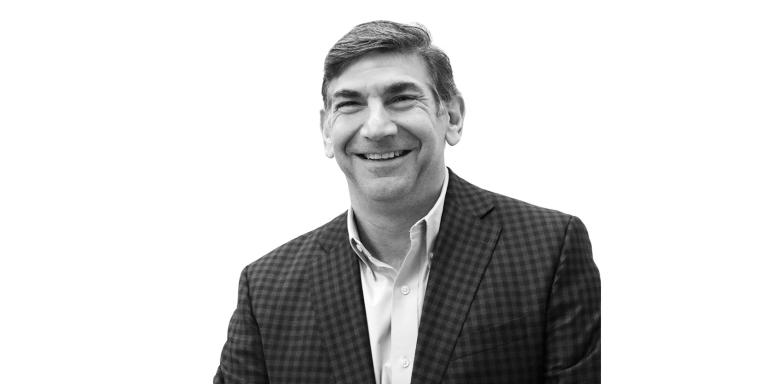 Mike Cooper Receives Leadership Award at ACEC GalaCongratulations to Mike Cooper PE, LEED AP, MBA, FACEC, Principal and President of HED on receiving the Vernon B. Spalding Leadership Award at the recent ACEC MI Engineering Excellence Awards Gala in Detroit!
Mike Cooper Receives Leadership Award at ACEC GalaCongratulations to Mike Cooper PE, LEED AP, MBA, FACEC, Principal and President of HED on receiving the Vernon B. Spalding Leadership Award at the recent ACEC MI Engineering Excellence Awards Gala in Detroit!
Nominees for the Vernon B. Spalding Leadership Award must be outstanding individuals who have contributed significantly to the profession through their leadership role in ACEC, professional societies, academic, and community service organizations. The nominees are leaders in their communities and the profession and who demonstrate through their civic involvement, how the quality of life in their community has been enhanced.
Mike has a deep history of impactful leadership roles with ACEC/Michigan, including serving as President and as an Executive Committee Member. He remains heavily involved in the national organization, currently serving as Vice Chair of the Diversity, Equity, Inclusion, and Belonging Committee and as a member of the Strategic Planning Cabinet. Alongside these roles, Mike is an active member in other industry committees nationally and locally, creating Positive Impact through his work.
Very well deserved Mike!
-
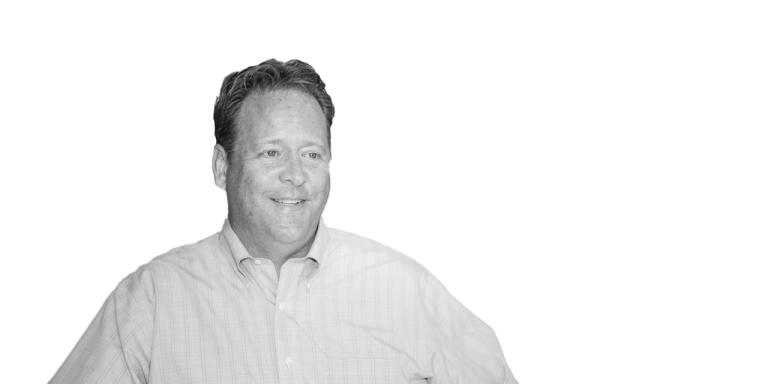 HED welcomes Phillip Soule as Healthcare Sector Leader in San DiegoHED is pleased to welcome Phillip Soule, AIA, ACHA, DBIA, to the firm as Healthcare Sector Leadership in the San Diego office, bringing over thirty years of experience in the delivery of innovative and sustainable healthcare facilities. In this role, Phillip will lead integrated planning, architectural, interiors, equipment, and engineering teams to develop and execute effective strategies for quality project execution in healthcare.
HED welcomes Phillip Soule as Healthcare Sector Leader in San DiegoHED is pleased to welcome Phillip Soule, AIA, ACHA, DBIA, to the firm as Healthcare Sector Leadership in the San Diego office, bringing over thirty years of experience in the delivery of innovative and sustainable healthcare facilities. In this role, Phillip will lead integrated planning, architectural, interiors, equipment, and engineering teams to develop and execute effective strategies for quality project execution in healthcare.
Prior to joining HED, Phillip acted as the Director of the Western Healthcare practice of the global architecture, engineering, and construction firm Haskell, where he expanded visibility for their service offerings and led client relations. His industry network, knowledge of market trends, and focus on client needs will complement the seasoned team he is joining at HED.
-
 Wacker Innovation Center Named Top 12 Outstanding Projects of 2023!HED is excited to share that our recent work with KIRCO on the Wacker Chemical Innovation Center and Regional Headquarters in Ann Arbor, MI has been named a finalist in the Construction Association of Michigan 2023 Project of the Year awards!
Wacker Innovation Center Named Top 12 Outstanding Projects of 2023!HED is excited to share that our recent work with KIRCO on the Wacker Chemical Innovation Center and Regional Headquarters in Ann Arbor, MI has been named a finalist in the Construction Association of Michigan 2023 Project of the Year awards!
CAM Magazine annually publishes a project awards issues, where members submit their best construction projects of the previous year. Every year, 12 finalists are selected and this year, the Wacker Chemical Innovation Center is one of them.
Thank you to CAM Magazine for this recognition, and congratulations to our client, KIRCO, and civil engineering teammate, PEA Group, for this achievement! -
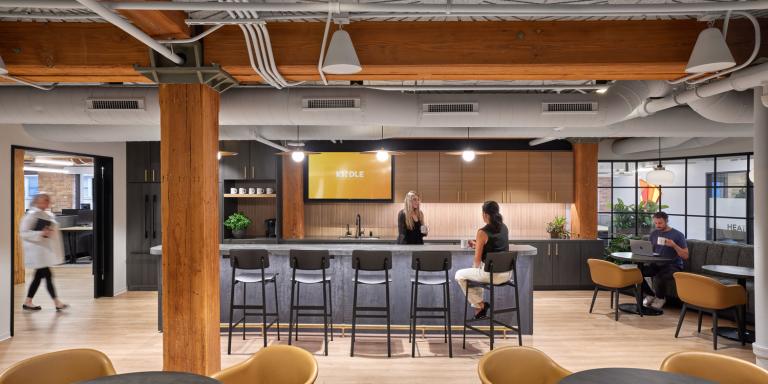 HED ranks Top 200 Office Building Architecture Firms by BD+CHED is excited to share that we have ranked in BD+C's Top 200 Office Building Architecture Firms for 2023! HED can trace it's BD+C Office Building giants rankings since 2020, and we are proud to continue the legacy!
HED ranks Top 200 Office Building Architecture Firms by BD+CHED is excited to share that we have ranked in BD+C's Top 200 Office Building Architecture Firms for 2023! HED can trace it's BD+C Office Building giants rankings since 2020, and we are proud to continue the legacy!
BD+C's ranking of the nation's largest workplace sector architecture and architecture/engineering (AE) firms for 2023, is reported in Building Design + Construction's 2023 Giants 400 Report.
-
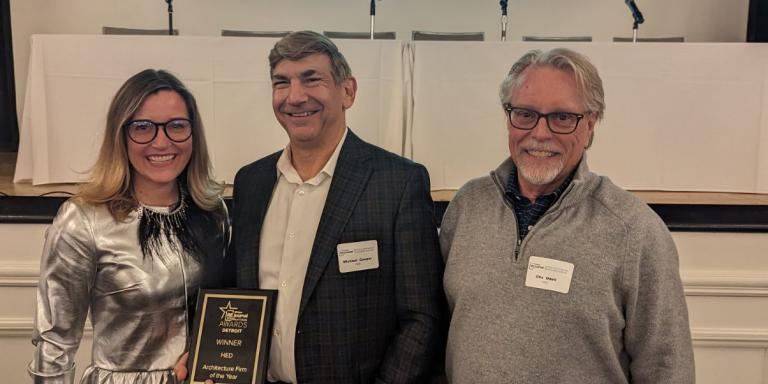 HED wins Architecture Firm of the Year at Detroit Commercial Real Estate Awards!HED is proud to share that we have been named Architecture Firm of the Year for 2023 by the Michigan Real Estate Journal!
HED wins Architecture Firm of the Year at Detroit Commercial Real Estate Awards!HED is proud to share that we have been named Architecture Firm of the Year for 2023 by the Michigan Real Estate Journal!
Our team members Kelli Herman, Mike Cooper, and Otis Odell were in attendance to accept the award, but on behalf of all of HED, we thank Michigan REJournal for this great recognition!
Each year, the Michigan Real Estate Journal honors the most successful commercial real estate professionals in the Detroit market. Nine top professionals took home honors, and HED was fortunate enough to be one of them!
-
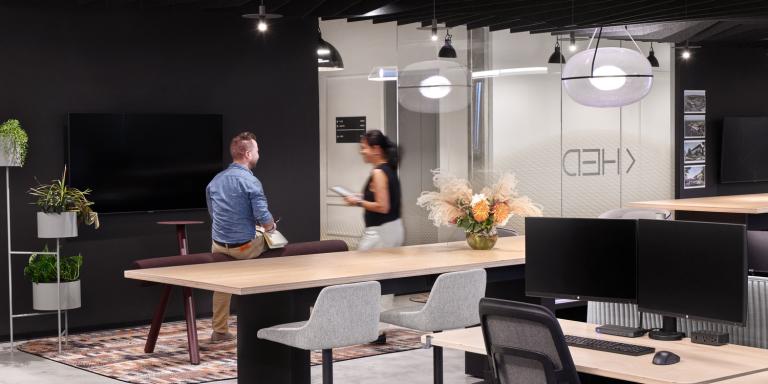 HED Ranks #48 Workplace Interior Architecture FirmsHED is excited to share that we have ranked #48 of the Top 160 Workplace Interior Architecture Firms for 2023! HED can trace it's BD+C workplace rankings back to 2020, and we are proud to continue the legacy!
HED Ranks #48 Workplace Interior Architecture FirmsHED is excited to share that we have ranked #48 of the Top 160 Workplace Interior Architecture Firms for 2023! HED can trace it's BD+C workplace rankings back to 2020, and we are proud to continue the legacy!
BD+C's ranking of the nation's largest workplace interior architecture and architecture/engineering (AE) firms for 2023, is reported in Building Design + Construction's 2023 Giants 400 Report. -
 Melina Aluwi Named San Diego Architectural Foundation Board of DirectorsCongratulations to Higher Education Sector Leader, Melina Aluwi, for being named to the San Diego Architectural Foundation Board of Directors!
Melina Aluwi Named San Diego Architectural Foundation Board of DirectorsCongratulations to Higher Education Sector Leader, Melina Aluwi, for being named to the San Diego Architectural Foundation Board of Directors!
-
 Taft Named Top 9 Most Inspiring Projects of 2023Taft has been named one of the most inspiring project profiles of 2023 by Work Design Magazine!
Taft Named Top 9 Most Inspiring Projects of 2023Taft has been named one of the most inspiring project profiles of 2023 by Work Design Magazine!
Work Design Magazine is a digital publication with a global reach, focusing on the innovative design of the places we work, the performance of individuals, and value for the organization. Led by professionals, we serve the full spectrum of workplace-related disciplines including technology, wellbeing, sustainability and beyond.
Each year, they take the top workplace projects of the year to feature as their most innovative. We are proud to have been named in the top 9 selected for 2023! -
 HED Ranks in Top 30 Hospital Facility Design FirmsHED is excited to share that we have ranked #29 of the Top 130 Hospital Facility Architecture Firms for 2023! HED can trace it's BD+C healthcare giants rankings since 2017, and we are proud to continue the legacy!
HED Ranks in Top 30 Hospital Facility Design FirmsHED is excited to share that we have ranked #29 of the Top 130 Hospital Facility Architecture Firms for 2023! HED can trace it's BD+C healthcare giants rankings since 2017, and we are proud to continue the legacy!
BD+C's ranking of the nation's largest S&T sector architecture and architecture/engineering (AE) firms for 2023, is reported in Building Design + Construction's 2023 Giants 400 Report. -
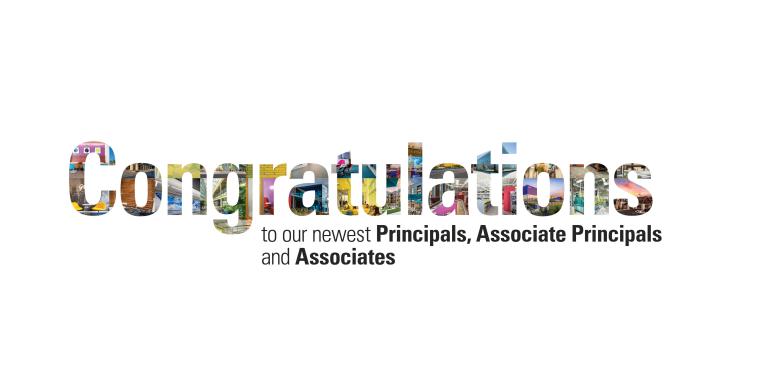 HED announces new Principals, Associate Principals, and Associates in 2024Congratulations to our newest Principals, Associate Principals, and Associates!
HED announces new Principals, Associate Principals, and Associates in 2024Congratulations to our newest Principals, Associate Principals, and Associates!
Please join us in celebrating the contributions of our newest Principals, whose continued leadership has been a driving force behind the positive impact we bring to our clients and communities:
Todd Drouillard, AIA
With over twenty-five years of practice in architecture, project management, and dedicated client service, Todd leads HED’s Manufacturing & Product Development sector as its National Business Leader. He oversees integrated architectural and engineering teams in the development and implementation of strategies for quality project execution within highly technical and demanding environments. He is instrumental in providing reliable, state-of-the-art design services to global brands, leading teams in the United States and abroad to meet their evolving needs. He is also active in the architecture community. Currently, he is serving a term as the President of AIA Michigan, and previously has held roles as the AIA Michigan Board Secretary, as the Director of AIA Detroit, as a Director on the Michigan Architectural Foundation Board (MAF), and most recently on the State of Michigan Construction Code Commission, representing the architecture discipline.
David Klug, PE, HBPD, LFA
A seasoned engineering leader with a reputation for expertise in conceptual design, energy modeling and optimization, life cycle analysis, and green building design, David serves as the Mechanical Engineering Leader of HED’s mechanical design group, where he guides multidiscipline teams on a variety of project typologies and scales. David has been instrumental in advancing HED’s commitments to advancing sustainable design, spearheading HED’s commitment to the Carbon Leadership Forum's MEP 2040 Challenge. With over a decade of experience in the A/E industry, David’s advancing leadership of HED’s national engineering practice will continue to deliver innovative, sustainable design solutions that deliver measurable positive impact to clients.
And please join us in congratulating our newest Associate Principals and Associates. These individuals come from across disciplines, and their dedication to client service, innovation, and design excellence is reflected in their work and conduct.
Congratulations to our newest Associate Principals:
• Steven Crook, PE, SE
• Brian Fiander, PE, LEED AP BD+C
• Matt Smerud, PE, LEED Green Associate
• Karen Szostak, SHRM-SCP
• Catherine Van Leer, AIA
And to our newest Associates:
• Steve Carter
• Amanda Gioia, RA, ACP
• Tom Hoff, PE
• Steve Jackson, RAS, CAPS, CGP, CGB
• Denise Ramos, NCIDQ
• Donovan Rivas, PE
These promotions mark the close of a strong year and reflect the positive impact these individuals’ contributions create for our clients, communities, and our firm. Thank you and congratulations to each of you!
-
 HED Awarded Best and Brightest Companies to Work For in the NationHED has been named in the top 101 Best Companies to Work For in the nation for 2023!
HED Awarded Best and Brightest Companies to Work For in the NationHED has been named in the top 101 Best Companies to Work For in the nation for 2023!
The Best and Brightest Companies to Work For® competition identifies and honors organizations that display a commitment to excellence in their human resource practices and employee enrichment. Organizations are assessed based on categories such as communication, work-life balance, employee education, diversity, recognition, retention and more.
Since 2019, our offices have been awarded the Best and Brightest Companies to Work for recognition, and we are proud to continue the legacy!
-
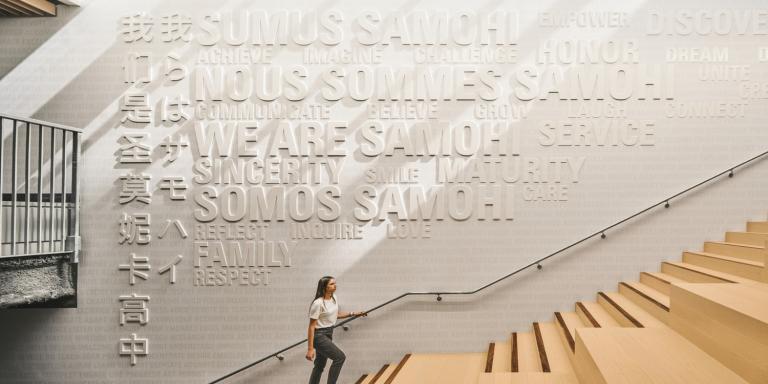 Santa Monica High School Discovery Building Wins American Architecture Award!HED is proud to announce that the Santa Monica High School Discovery Building has been selected for the American Architecture Awards Honorable Mention from The Chicago Athenaeum: Museum of Architecture and Design & The European Centre for Architecture Art Design and Urban Studies!
Santa Monica High School Discovery Building Wins American Architecture Award!HED is proud to announce that the Santa Monica High School Discovery Building has been selected for the American Architecture Awards Honorable Mention from The Chicago Athenaeum: Museum of Architecture and Design & The European Centre for Architecture Art Design and Urban Studies!
The American Architecture Award is the nation’s highest public awards given by a non-commercial, non-trade affiliated, public arts, culture, and educational institution.
-
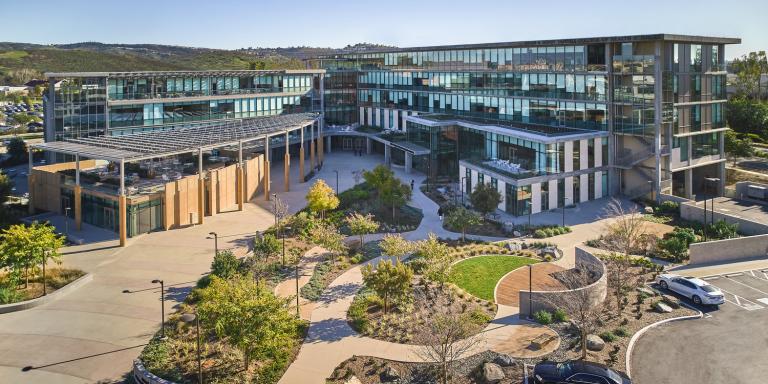 HED Wins 2023 USGBC-LA Sustainable Innovation AwardHED and the University of California Irvine College of Health Sciences and Nursing School building were recognized for excellence in sustainable design with the 2023 US Green Building Council Los Angeles (USGBC-LA) Sustainable Innovation Award, for Honor in Health & Wellbeing category. The project received LEED v4 Platinum certification this year.
HED Wins 2023 USGBC-LA Sustainable Innovation AwardHED and the University of California Irvine College of Health Sciences and Nursing School building were recognized for excellence in sustainable design with the 2023 US Green Building Council Los Angeles (USGBC-LA) Sustainable Innovation Award, for Honor in Health & Wellbeing category. The project received LEED v4 Platinum certification this year.
-
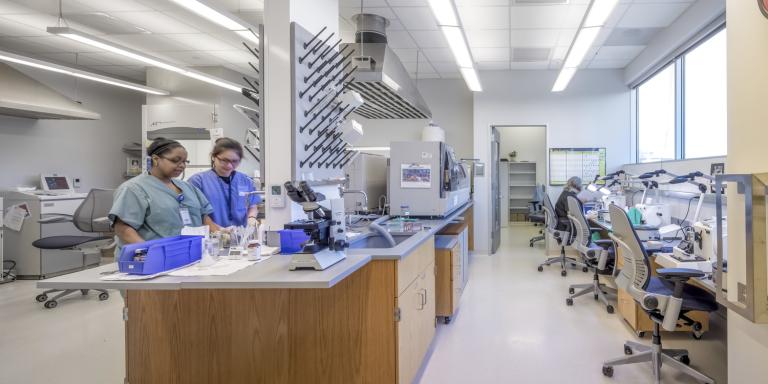 HED Ranks Top 100 Science & Technology GiantsHED is excited to share that we have ranked #26 of the Top 100 Science and Technology Architecture Firms for 2023! HED can trace it's BD+C S&T giants rankings since 2017, and we are proud to continue the legacy!
HED Ranks Top 100 Science & Technology GiantsHED is excited to share that we have ranked #26 of the Top 100 Science and Technology Architecture Firms for 2023! HED can trace it's BD+C S&T giants rankings since 2017, and we are proud to continue the legacy!
BD+C's ranking of the nation's largest S&T sector architecture and architecture/engineering (AE) firms for 2023, is reported in Building Design + Construction's 2023 Giants 400 Report. -
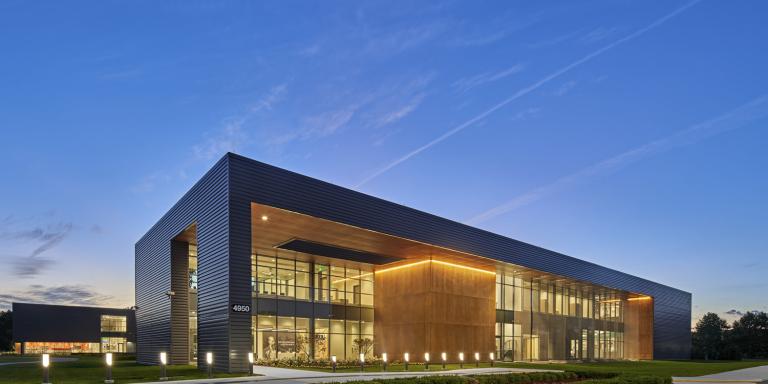 WACKER Chemical Innovation Center Wins DBusiness Best New Office ProjectHED is proud to share that the WACKER Innovation Center & Regional Headquarters has won the DBusiness Magazine Commercial Real Estate Awards for Best New Office Project!
WACKER Chemical Innovation Center Wins DBusiness Best New Office ProjectHED is proud to share that the WACKER Innovation Center & Regional Headquarters has won the DBusiness Magazine Commercial Real Estate Awards for Best New Office Project!
Thanks to our clients Kirco and Wacker, and partners PEA group for this opportunity and collaboration on a beautiful new scientific workplace!
-
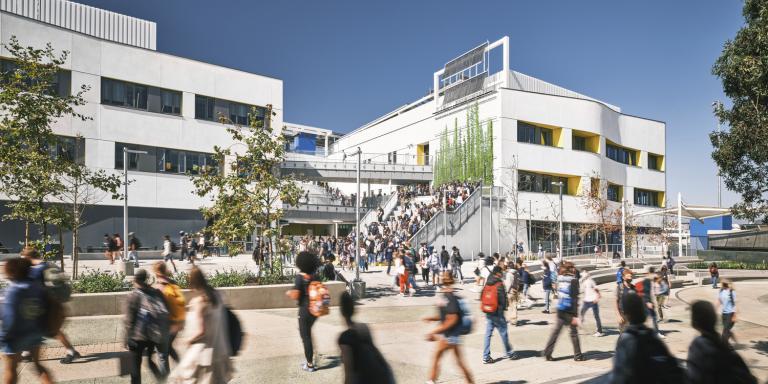 HED Ranks Top 20 BD+C K-12 GiantsHED is excited to share that we have ranked #17 of the Top 170 K-12 School Architecture Firms for 2023! HED can trace it's BD+C K-12 giants rankings since 2020, and we are proud to continue the legacy!
HED Ranks Top 20 BD+C K-12 GiantsHED is excited to share that we have ranked #17 of the Top 170 K-12 School Architecture Firms for 2023! HED can trace it's BD+C K-12 giants rankings since 2020, and we are proud to continue the legacy!
BD+C's ranking of the nation's largest K-12 sector architecture and architecture/engineering (AE) firms for 2023, is reported in Building Design + Construction's 2023 Giants 400 Report. -
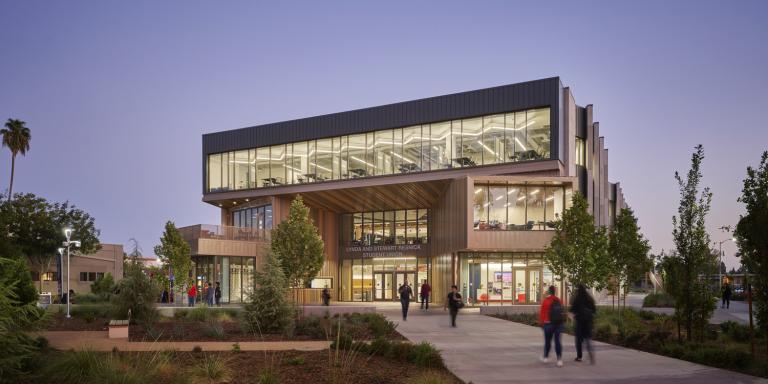 HED Awarded and Published in American School & UniversityHED is excited to share that the Lynda and Stewart Resnick Student Union is the recipient of the Outstanding Design award by American School & University Magazine!
HED Awarded and Published in American School & UniversityHED is excited to share that the Lynda and Stewart Resnick Student Union is the recipient of the Outstanding Design award by American School & University Magazine!
Our work on the University of California Fresno campus, in partnership with McCarthy Building Companies can be found in the American School and University November/December 2023 publication! -
 HED Dallas Awarded Best and Brightest 2023We're proud to share that our Dallas office has won the Best and Brightest award for 2023 and for the 3rd year in a row!
HED Dallas Awarded Best and Brightest 2023We're proud to share that our Dallas office has won the Best and Brightest award for 2023 and for the 3rd year in a row!
The Best and Brightest Companies to Work For® competition identifies and honors organizations that display a commitment to excellence in their human resource practices and employee enrichment. Organizations are assessed based on categories such as communication, work-life balance, employee education, diversity, recognition, retention and more.
At HED, we strive to create a culture of aspiration—not end points. We believe in embracing change and challenges, listening to each other, and learning from each other. As an inclusive, integrated practice, we value the diversity of perspectives, experiences, abilities and expertise that advance both the work we do, and the world we share. We're very pleased to be honored again in Dallas for our culture and investment in our teams.
-
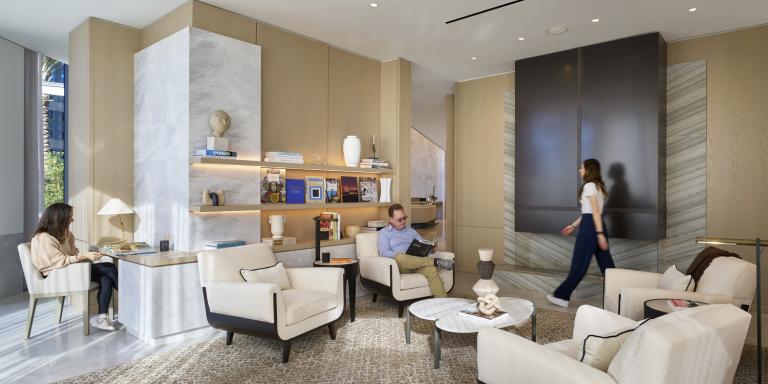 HED Ranks BD+C's Top 50 Multi-Family Architecture FirmsHED is excited to share that we have ranked #42 of the Top 190 Multi-Family for 2023! HED can trace it's BD+C multi-family giants rankings since 2020, and we are proud to continue the legacy!
HED Ranks BD+C's Top 50 Multi-Family Architecture FirmsHED is excited to share that we have ranked #42 of the Top 190 Multi-Family for 2023! HED can trace it's BD+C multi-family giants rankings since 2020, and we are proud to continue the legacy!
BD+C's ranking of the nation's largest industrial sector architecture and architecture/engineering (AE) firms for 2023, is reported in Building Design + Construction's 2023 Giants 400 Report. -
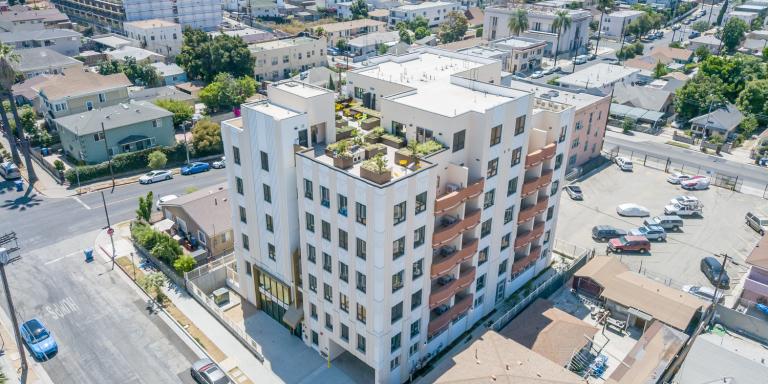 Mariposa Lily Welcomes 41 Households Home in Los AngelesLos Angeles 10th District City Councilwoman Heather Hutt, Los Angeles County officials, community partners, project funders, project team members, and new residents celebrated the grand opening of West Hollywood Community Housing Corporation’s (WHCHC) all-new affordable apartment community, Mariposa Lily, on Thursday, November 2, 2023!
Mariposa Lily Welcomes 41 Households Home in Los AngelesLos Angeles 10th District City Councilwoman Heather Hutt, Los Angeles County officials, community partners, project funders, project team members, and new residents celebrated the grand opening of West Hollywood Community Housing Corporation’s (WHCHC) all-new affordable apartment community, Mariposa Lily, on Thursday, November 2, 2023!
“This is wonderful!” exclaimed Councilwoman Hutt. “This is about dignity. The dignity to come home to housing that is affordable, where you feel safe and don’t have to worry about rent. Congratulations to the new residents.”
Located in the Koreatown/Pico-Union neighborhood of Los Angeles, Mariposa Lily provides 41 high-quality affordable rental apartments for individuals and families with limited income, with 20 units reserved as permanent supportive housing for households who have experienced homelessness.
“We are excited to welcome our newest residents to their homes,” said Jesse Slansky, WHCHC President & CEO. “At the same time, we were overwhelmed with the need for high quality, affordable housing. More than 10,000 people applied for Mariposa Lily.”
“I’ve been stable in my employment for years, but it’s not enough to cover the constant rising rents,” said new resident, Shontique. “I am very grateful to have this opportunity. I still well up with relief and gratitude.”
Mariposa Lily is built on formerly under-utilized city-owned land and is partially funded by the Los Angeles Housing Department’s Measure HHH. Additional funders include Bank of America, California Department of Housing and Community Development, California Debt Limit Allocation Committee, California Tax Credit Allocation Committee, Citibank, Corporation for Supportive Housing, Los Angeles County Development Authority, Los Angeles County Department of Mental Health (No Place Like Home), and Los Angeles Housing Department.
-
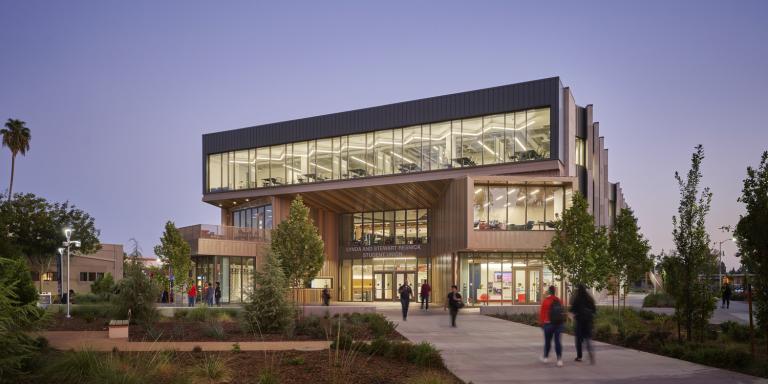 HED Ranks BD+C's Top 30 University Building Architecture FirmsHED is excited to share that we have ranked #26 of the Top 170 University Building Architects for 2023! HED can trace it's BD+C university rankings since 2013, and we are proud to continue the legacy!
HED Ranks BD+C's Top 30 University Building Architecture FirmsHED is excited to share that we have ranked #26 of the Top 170 University Building Architects for 2023! HED can trace it's BD+C university rankings since 2013, and we are proud to continue the legacy!
BD+C's ranking of the nation's largest industrial sector architecture and architecture/engineering (AE) firms for 2023, is reported in Building Design + Construction's 2023 Giants 400 Report. -
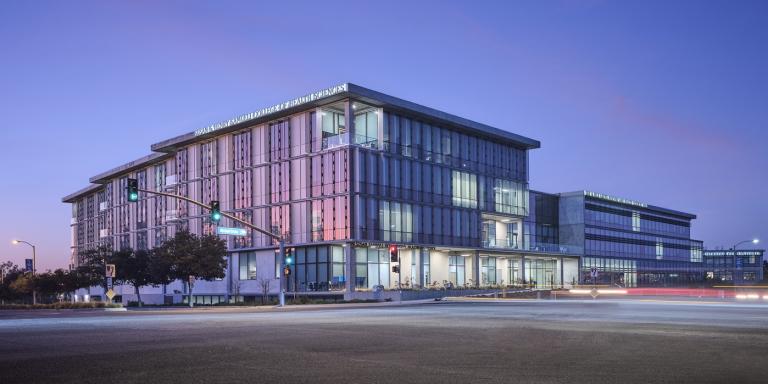 UC Irvine College of Health Sciences Wins its Third DBIA Award!HED is proud to share that the University of California, Irvine, Susan & Henry Samueli College of Health Sciences Building and Sue & Bill Gross Nursing and Health Sciences Hall project has won its third Design Build Institute of America (DBIA) award of 2023! Earning the:
UC Irvine College of Health Sciences Wins its Third DBIA Award!HED is proud to share that the University of California, Irvine, Susan & Henry Samueli College of Health Sciences Building and Sue & Bill Gross Nursing and Health Sciences Hall project has won its third Design Build Institute of America (DBIA) award of 2023! Earning the:
• Design Build Institute of America (DBIA) – Best in Process, Best Value, 2023
• Design Build Institute of America (DBIA) - Excellence in Healthcare Facilities, 2023
• Design Build Institute of America (DBIA) - Merit Award – Healthcare Facilities, 2023
The University of California, Irvine’s (UCI) Susan and Henry Samueli College of Health Sciences Building and Sue and Bill Gross Nursing and Health Sciences Hall was an ambitious project consisting of two interconnected buildings designed to create a transdisciplinary experience. The facilities offer instructional, academic and administrative spaces that foster collaboration and innovation. It spans approximately 118,200 SF and houses the Samueli Integrative Health Institute, including: research areas, instructional spaces, student support facilities, academic and administrative offices and a food service facility. The Sue and Bill Gross Nursing and Health Sciences Hall, approximately 81,500 SF, is home to a clinical skills laboratory, instructional spaces, student support areas, research facilities and administrative offices.
The design-build team integrated advanced technology and innovative design concepts to construct a physical space for clinical treatment, research and health science education. This project notably serves as a gateway and destination, effectively merging medical research, academic study and clinical treatment within one building.
At the start of the procurement process, the design-build team and trade partners worked together to identify project risks and then allocated and shared the risks based on their respective roles and expertise. The team kicked off the project with a partnering session and partnering agreement that committed each team member to the project’s goals. Project partners were carefully selected based on qualifications, including past performance, collaborative history, working relationships, and commitment to project goals, as evidenced by the inclusion of five DBIA certified professionals. This team embraced UCI’s project vision of health and wellness as well as the inherent culture of collaboration and innovation of design-build and committed to providing best value in all categories.
-
 HED joins iMasons Climate Accord, Committing to carbon reduction in digital infrastructureHED is proud to announce that we have been named a Mover within the iMasons Climate Accord.
HED joins iMasons Climate Accord, Committing to carbon reduction in digital infrastructureHED is proud to announce that we have been named a Mover within the iMasons Climate Accord.
The iMasons Climate Accord is a coalition united on carbon reduction in digital infrastructure. Together, our mandate is to achieve global carbon accounting of digital infrastructure to influence market-based decisions and drive the industry to achieve carbon neutrality.
“HED’s firmwide mission is to have a positive impact for our clients, the community, and the world through design excellence," says Michael Cooper, PE, LEED AP, MBA, FACEC, President of HED, "Our definition of design excellence is a solution built from thoughtful decision-making that creates measurable, real world positive impact, and we believe sustainability is inseparable from that. We believe that as an integrated architectural and engineering design firm of national scale, we’re uniquely positioned to assist clients in reducing their operational and embodied carbon, and take that role seriously."
HED is committed to using our design talent and skill to build a better future. HED was an early signatory to both the 1.5°C COP26 Communiqué and AEC Sustainable Leaders Group Build Back Greener campaigns, and is one of only a handful of firms to be a signatory of both the The American Institute of Architects (AIA) 2030 commitment and the Carbon Leadership Forum's MEP 2040 Challenge—committing ourselves to reducing operational and embodied carbon across all projects, to reduce each project’s energy use, and decarbonize building systems with a goal of being Net Zero by the year 2030. We see participation as a Mover within the iMasons Climate Accord to be a complimentary and equally important effort, and are committed to playing our part. HED is committed to these programs and supporters of these causes because we believe it aligns with our firm's values and dedication to supporting clients with climate-resilient design.
HED has a proud legacy of many “firsts” in sustainable design, and is among the exclusive list of approximately 50 firms that have won the AIA COTE Top Ten award more than once. At HED, great design is about thinking creatively to overcome challenges and improve real world outcomes. -
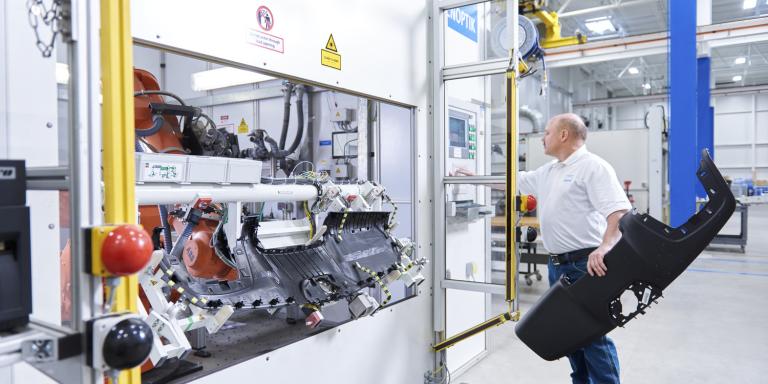 HED Ranks #24 in Top 100 Industrial Sector GiantsHED is excited to share that we have ranked #24 of the Top 100 Industrial Design Sector Giants for 2023! HED can trace it's roots to industrial, manufacturing and product development projects in Detroit as far back as 1908, and our teams are proud to continue that legacy!
HED Ranks #24 in Top 100 Industrial Sector GiantsHED is excited to share that we have ranked #24 of the Top 100 Industrial Design Sector Giants for 2023! HED can trace it's roots to industrial, manufacturing and product development projects in Detroit as far back as 1908, and our teams are proud to continue that legacy!
BD+C's ranking of the nation's largest industrial sector architecture and architecture/engineering (AE) firms for 2023, is reported in Building Design + Construction's 2023 Giants 400 Report.
-
 HED Ranks in the Top 175 Healthcare Giants by BD+CHED is excited to share that we have ranked #35 of the top 175 Healthcare Giants for 2023!
HED Ranks in the Top 175 Healthcare Giants by BD+CHED is excited to share that we have ranked #35 of the top 175 Healthcare Giants for 2023!
BD+C's ranking of the nation's largest healthcare sector architecture and architecture/engineering (AE) firms for 2023, is reported in Building Design+Construction's 2023 Giants 400 Report. -
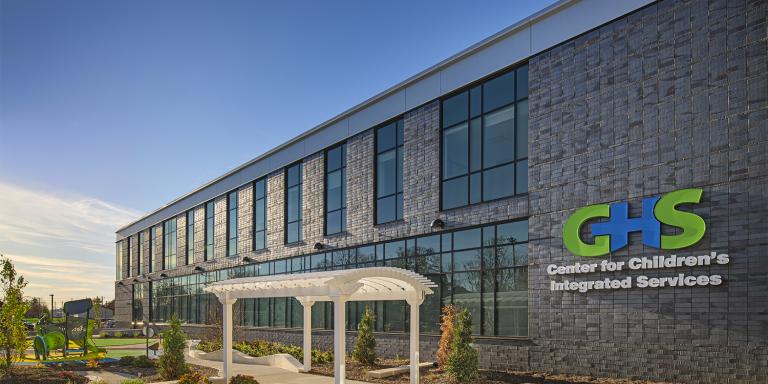 HED Wins CREW Detroit Special Impact Award!HED is proud to announce that our work with Genesee Health System at the Center for Children's Integrated Services has been awarded the Special Impact Award by CREW Detroit!
HED Wins CREW Detroit Special Impact Award!HED is proud to announce that our work with Genesee Health System at the Center for Children's Integrated Services has been awarded the Special Impact Award by CREW Detroit!
-
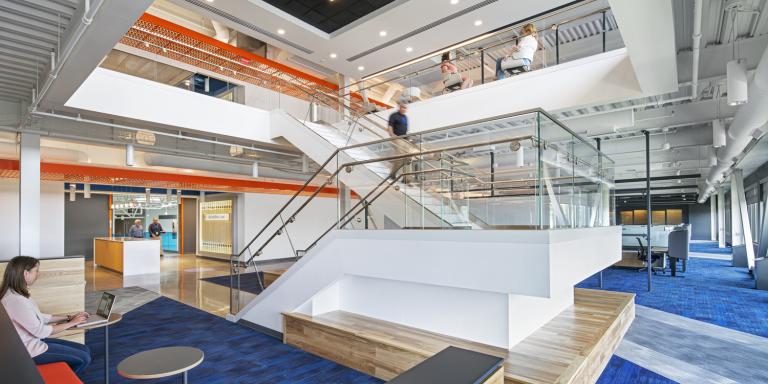 HED Ranks Top 100 BD+C Office Sector GiantsHED is excited to share that we have ranked in the nation's largest office building architecture firms for 2023!
HED Ranks Top 100 BD+C Office Sector GiantsHED is excited to share that we have ranked in the nation's largest office building architecture firms for 2023!
Ranked in the top 100, BD+C's ranking of the nation's largest office building sector architecture and architecture/engineering (AE) firms for 2023, is reported in Building Design+Construction's 2023 Giants 400 Report. -
 HED San Diego Office wins Best and Brightest 2023We're proud to share that our San Diego office has won the Best and Brightest award for 2023!
HED San Diego Office wins Best and Brightest 2023We're proud to share that our San Diego office has won the Best and Brightest award for 2023!
The Best and Brightest Companies to Work For® competition identifies and honors organizations that display a commitment to excellence in their human resource practices and employee enrichment. Organizations are assessed based on categories such as communication, work-life balance, employee education, diversity, recognition, retention and more.
At HED, we strive to create a culture of aspiration—not end points. We believe in embracing change and challenges, listening to each other, and learning from each other. As an inclusive, integrated practice, we value the diversity of perspectives, experiences, abilities and expertise that advance both the work we do, and the world we share. We're very pleased to be honored in San Diego for our culture and investment in our teams. -
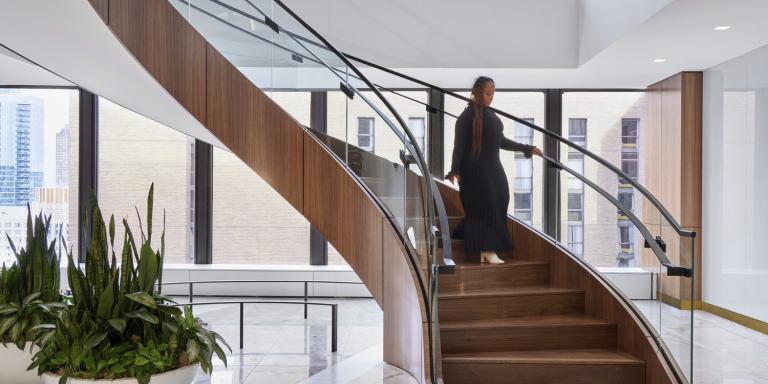 HED Ranks BD+C in the Top 20 A/E FirmsHED is excited to share that we have ranked in the nation's largest architecture and engineering (AE) firms for 2023!
HED Ranks BD+C in the Top 20 A/E FirmsHED is excited to share that we have ranked in the nation's largest architecture and engineering (AE) firms for 2023!
We are ranked in the top 20, as reported in Building Design+Construction's 2023 Giants 400 Report.
-
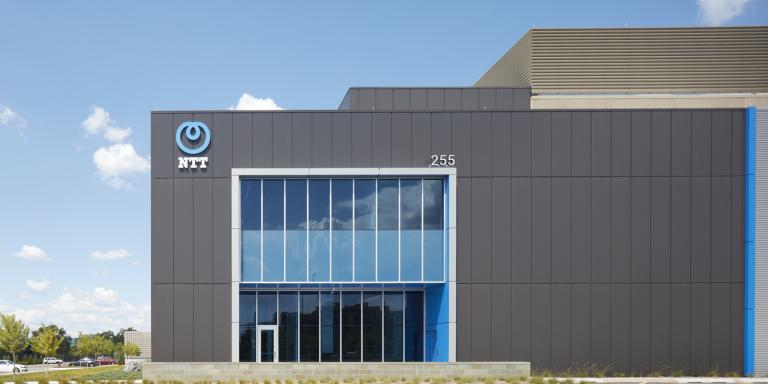 HED Ranks #5 in BD+C's Data Center Design GiantsHED is excited to share that we have ranked in the top 30 of the nation's largest data center sector architecture and architecture/engineering (AE) firms for 2023!
HED Ranks #5 in BD+C's Data Center Design GiantsHED is excited to share that we have ranked in the top 30 of the nation's largest data center sector architecture and architecture/engineering (AE) firms for 2023!
We are ranked at #5, as reported in Building Design+Construction's 2023 Giants 400 Report.
-
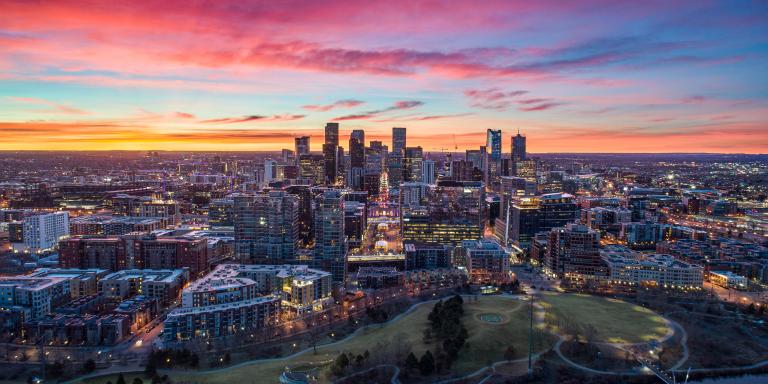 HED Announces Strategic Partnership with Denver-based Larson Incitti ArchitectsHED is proud to announce a new strategic partnership with Denver-based Larson Incitti Architects. This formal partnership combines Larson Incitti Architects' staff with HED's national, award-winning integrated architecture and engineering team, significantly expanding Larson Incitti Architects' capabilities in education, religious and community design. Together, the firms will leverage community relationships to create new opportunities across multiple market sectors.
HED Announces Strategic Partnership with Denver-based Larson Incitti ArchitectsHED is proud to announce a new strategic partnership with Denver-based Larson Incitti Architects. This formal partnership combines Larson Incitti Architects' staff with HED's national, award-winning integrated architecture and engineering team, significantly expanding Larson Incitti Architects' capabilities in education, religious and community design. Together, the firms will leverage community relationships to create new opportunities across multiple market sectors.
Marking its 25-year anniversary of experience in the greater Denver area, the Larson Incitti Architects team has established trust among clients in the community and Pre-K-12 education sectors by consistently delivering excellence through collaborative design innovation and dedication to client service. HED is well positioned to build upon that tradition of excellence with expanded market sector expertise in housing, science, mission critical, workplace, healthcare, higher education, manufacturing and product development. HED offers the support of a national team of architects, planners, MEP and structural engineers, and design specialists in laboratory planning, experiential graphic design, and landscape architecture.
"Our strategic partnership with Larson Incitti Architects is a great fit because of our shared commitment to create a positive impact for clients and the greater community," said Enrique Suarez, AIA, LEED AP BD+C, CO-CEO of HED. "We are pleased to formally announce our partnership and look forward to using our combined strength to explore new opportunities in the Denver area and deliver long-term success for our clients."
HED is known for its aspirational company culture and innovative professional services, and collaborative approach to project teaming. As an inclusive and integrated practice, HED values diversity in perspectives, experiences, abilities, and expertise, and this reputation and culture fits neatly with Larson Incitti Architects values. An award-winning integrated firm of architects and engineers, HED has recently been honored with national recognition for its collaborative, innovative solutions and project leadership by the Design-Build Institute of America (DBIA) and the American Council of Engineering Companies (ACEC).
"Larson Incitti Architects has always been dedicated to client service and committed to the Denver community, and since our founding, we've emphasized learning and collaboration in our company culture — values we share with HED," said Bruce Larson, AIA, Principal of Larson Incitti Architects. "Those shared values and commitments are strengthened by joining forces with a national team, and we look forward to working with HED to continue creating positive impact for our clients in Denver and the surrounding area." -
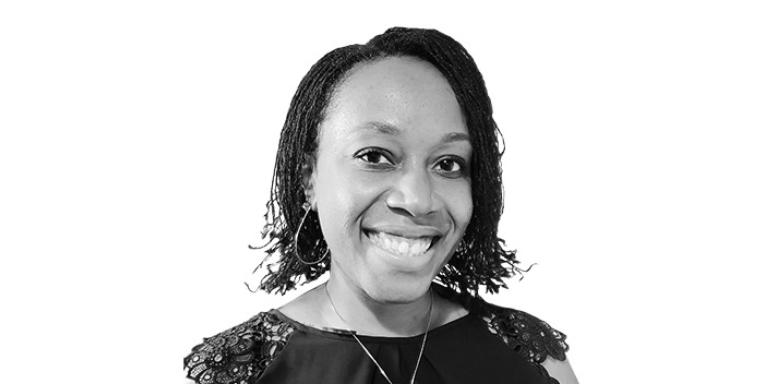 HED announces promotion of new Sector Leader in Healthcare, Catherine Van Leer, AIAHED is pleased to share that, effective immediately, architect Catherine Van Leer, AIA, has been elevated to the position of Healthcare Market Sector Leader in Chicago. Catherine is a passionate, practiced architect with a depth of knowledge in the healthcare space, known for leveraging her diverse capabilities to arrive at creative solutions that showcase thought leadership and commitment to healing environments. With over 15 years of industry experience serving clients such as Northwestern Medicine and Loyola Medicine, she leads multidisciplinary teams through the design and construction process. “The guiding principles of LEAN design are at the core of how I approach every project,” says Catherine, “this framework enables me to collaborate effectively across design disciplines and maintain high project performance.”
HED announces promotion of new Sector Leader in Healthcare, Catherine Van Leer, AIAHED is pleased to share that, effective immediately, architect Catherine Van Leer, AIA, has been elevated to the position of Healthcare Market Sector Leader in Chicago. Catherine is a passionate, practiced architect with a depth of knowledge in the healthcare space, known for leveraging her diverse capabilities to arrive at creative solutions that showcase thought leadership and commitment to healing environments. With over 15 years of industry experience serving clients such as Northwestern Medicine and Loyola Medicine, she leads multidisciplinary teams through the design and construction process. “The guiding principles of LEAN design are at the core of how I approach every project,” says Catherine, “this framework enables me to collaborate effectively across design disciplines and maintain high project performance.”
“Catherine’s elevation to Market Sector Leader reflects a new generation of leaders within the firm,” says Brett Paloutzian AIA, NCARB, MBA, Business Leader – Healthcare, “We continue to shape the formation of our design teams around experience that best meets the challenges our clients face, and this expansion of the leadership team reflects that.”
-
 HED Celebrates Graduates of the Chicago Women in Architecture Foundation Inaugural Ladders to Leadership ProgramThe Chicago Women in Architecture Foundation (CWAF) has recently celebrated the graduation of its inaugural Ladders to Leadership Program, a unique six-month intensive educational series for up-and-coming female leaders in the architecture industry.
HED Celebrates Graduates of the Chicago Women in Architecture Foundation Inaugural Ladders to Leadership ProgramThe Chicago Women in Architecture Foundation (CWAF) has recently celebrated the graduation of its inaugural Ladders to Leadership Program, a unique six-month intensive educational series for up-and-coming female leaders in the architecture industry.
Designed for mid-career, licensed women architects on the path to becoming equity owners, principals and C-suite leaders, 15-women were selected in January 2023, to participate in the program at no cost to them through a discerning application process. The program is underwritten by sponsors including The Driehaus Foundation, the Illinois chapter of the American Institute of Architects (AIA) and individual CWAF board members. Twelve day-long sessions featured senior level executive guest speakers of architecture practices and architecture firm-adjacent businesses such as law firms, accounting firms, banks, insurance, and public relations firms on the topics of business development, negotiations, financial health assessments, risk management, operations structures, HR practices, and evaluating performance, and ownership and shareholder structures. HED was uniquely privileged to have two team members applications accepted to the program this year: Chauncey Kingsbury and Catherine Van Leer.
-
 HED Ranks Top 100 Green Design Giants by ENRWe're extremely pleased to share that our firm has been ranked for the second year among the Top 100 Green Design Firms by Engineering News Record!
HED Ranks Top 100 Green Design Giants by ENRWe're extremely pleased to share that our firm has been ranked for the second year among the Top 100 Green Design Firms by Engineering News Record!
Our team’s knowledge and experience with high performing building projects is just one part of a much larger story about our values and culture. HED’s firmwide mission is to have a positive impact for our clients, the community, and the world through design excellence. We define that as a solution built from thoughtful decision-making that creates measurable, real world positive impact. Sustainability is inseparable from design excellence, and significantly benefits what we refer to as “the triple bottom line” - the social, economic, and environmental impacts of a project.
-
 HED Shares Its Design of the Perceptive Real Estate Equities, Inc - Ardenwood Innovation and Life Sciences Center and Hub for Biotech and Life Science Companies, Located within the Renowned Ardenwood Technology Park in Fremont, CAHED has revealed the design of the second phase of the Ardenwood Innovation and Life Sciences Center expansion, adding a new 75,000 square foot facility to its existing 100,000 square foot built-to-suit for cancer genomics company, Personalis, Inc. who occupied their corporate headquarters and laboratory facility in October of last year.
HED Shares Its Design of the Perceptive Real Estate Equities, Inc - Ardenwood Innovation and Life Sciences Center and Hub for Biotech and Life Science Companies, Located within the Renowned Ardenwood Technology Park in Fremont, CAHED has revealed the design of the second phase of the Ardenwood Innovation and Life Sciences Center expansion, adding a new 75,000 square foot facility to its existing 100,000 square foot built-to-suit for cancer genomics company, Personalis, Inc. who occupied their corporate headquarters and laboratory facility in October of last year.
With central access to airports, freeways, research and higher education facilities, a strong supply chain of services providers, and supportive zoning, Fremont, CA has positioned itself as a hub of biomedical investment in Northern California. A few short years ago, the city recently received a federal grant to build an East Bay biomedical manufacturing cluster, and The Biomedical Manufacturing Network, a three-year program designed to boost the region’s strength in the biotech industry, has strengthened Fremont’s reputation as a prime location for companies to scale operations with relative ease.
This building will be a new addition to the existing site and will expand Perceptive Real Estate Equities, Inc’s life science offerings by an additional 75,000 SF two-story life sciences building. The new building will be positioned adjacent to an existing 100,000 SF Personalis, Inc. laboratory and headquarters facility, offering the opportunity for a single tenant to occupy the 75,000 SF expansion building or for multiple tenants to be spread across the building with strategic adjacencies of parking and shared outdoor amenities.
-
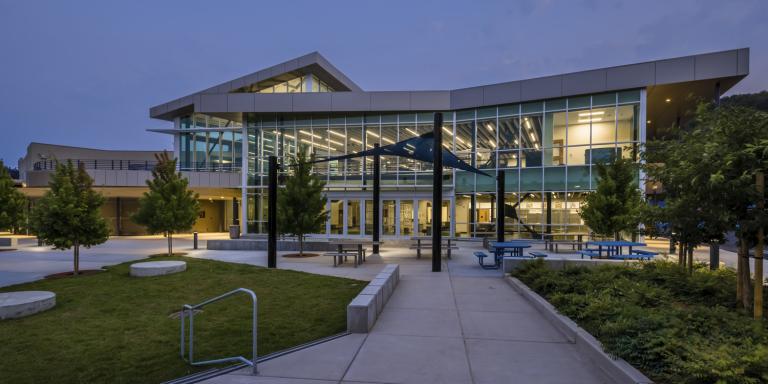 HED Ranks Top 100 MEP GiantHED is excited to share that we are ranked #96 in the 2023 Top 100 MEP Giants by Consulting-Specifying Engineer!
HED Ranks Top 100 MEP GiantHED is excited to share that we are ranked #96 in the 2023 Top 100 MEP Giants by Consulting-Specifying Engineer!
The MEP Giants program lists the top mechanical, electrical, plumbing (MEP) and fire protection engineering firms in North America. The detailed analysis of these firms reveals industry insights and how it has changed over the past several years.
HED has earned this title by proving that we find opportunity in the many variations in the building engineering industry. The 100 firms selected as the 2023 MEP Giants continuously push the boundaries in the mechanical, electrical, plumbing and fire protection engineering sectors, providing the top engineered systems in the building business. Data collected from these firms over the past several years has helped Consulting-Specifying Engineer analyze and identify trends in the building engineering community. -
 HED San Francisco Office wins Best and Brightest 2023We're proud to share that our San Francisco office has won the Best and Brightest award for 2023 and for the 8th year in a row!
HED San Francisco Office wins Best and Brightest 2023We're proud to share that our San Francisco office has won the Best and Brightest award for 2023 and for the 8th year in a row!
The Best and Brightest Companies to Work For® competition identifies and honors organizations that display a commitment to excellence in their human resource practices and employee enrichment. Organizations are assessed based on categories such as communication, work-life balance, employee education, diversity, recognition, retention and more.
At HED, we strive to create a culture of aspiration—not end points. We believe in embracing change and challenges, listening to each other, and learning from each other. As an inclusive, integrated practice, we value the diversity of perspectives, experiences, abilities and expertise that advance both the work we do, and the world we share. We're very pleased to be honored again in San Francisco for our culture and investment in our teams.
-
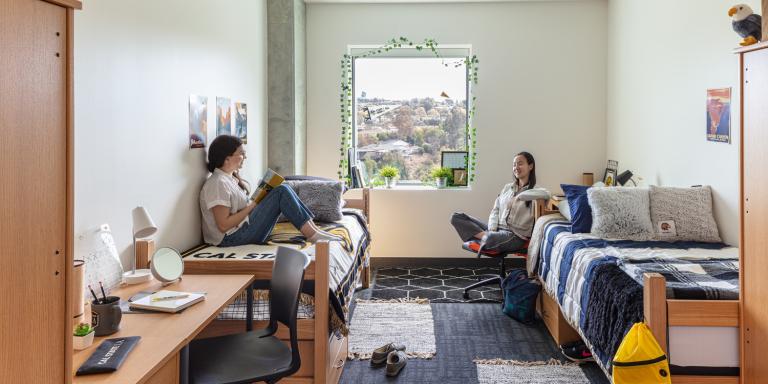 CSULA South Village Wins DBIA WPR Design Excellence AwardHED is proud to share that the California State University, Los Angeles South Village project has been selected the winner of the DBIA Western Pacific Region’s Design Excellence Award!
CSULA South Village Wins DBIA WPR Design Excellence AwardHED is proud to share that the California State University, Los Angeles South Village project has been selected the winner of the DBIA Western Pacific Region’s Design Excellence Award!
Designed in partnership with McCarthy Building Company, this student housing development promotes a strong residential community through thoughtful design.
-
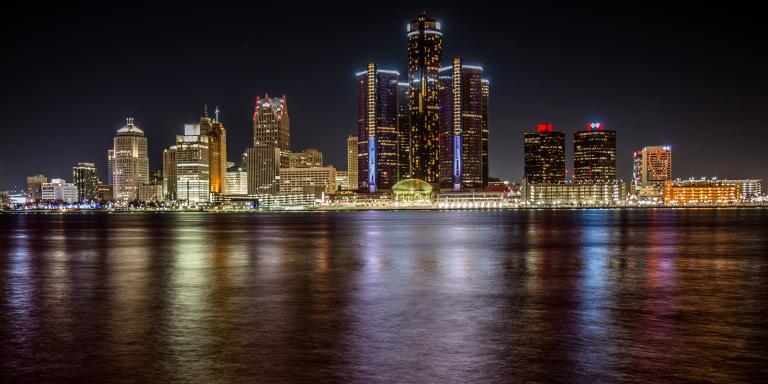 HED Ranks #4 on Crain's Detroit Largest Architecture Firms ListHED is excited to share that our Detroit office has been ranked fourth on the 2023 Largest Architecture Firms list by Crain's Detroit Business!
HED Ranks #4 on Crain's Detroit Largest Architecture Firms ListHED is excited to share that our Detroit office has been ranked fourth on the 2023 Largest Architecture Firms list by Crain's Detroit Business!
Being a consistent member of the Crain's Detroit rankings is emblematic of HED's history as a Detroit institution — serving our clients and community proudly for all of our 100+ years!
-
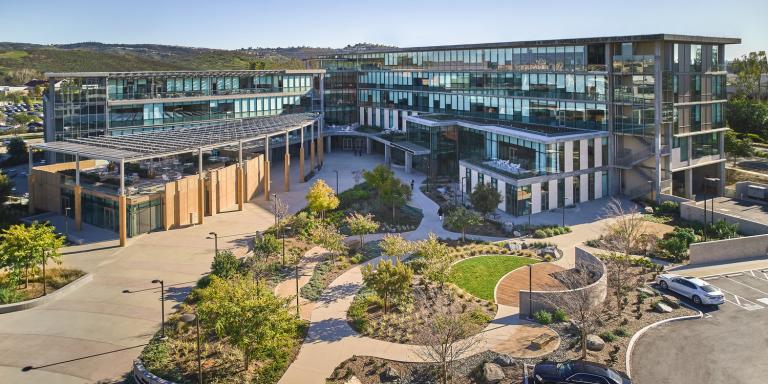 UC Irvine College of Health Sciences and Nursing wins 2023 DBIA Award of Merit in HealthcareHED is proud to announce that the University of California, Irvine College of Health Sciences and Nursing Hall has won a National Award of Merit in Healthcare from the Design-Build Institute of America!
UC Irvine College of Health Sciences and Nursing wins 2023 DBIA Award of Merit in HealthcareHED is proud to announce that the University of California, Irvine College of Health Sciences and Nursing Hall has won a National Award of Merit in Healthcare from the Design-Build Institute of America!
Designed in partnership with Hathaway Dinwiddie Construction Company, The Susan and Henry Samueli College of Health Sciences Building and Sue and Bill Gross Nursing and Health Sciences Hall was recognized in the Healthcare Facilities category for 2023.
-
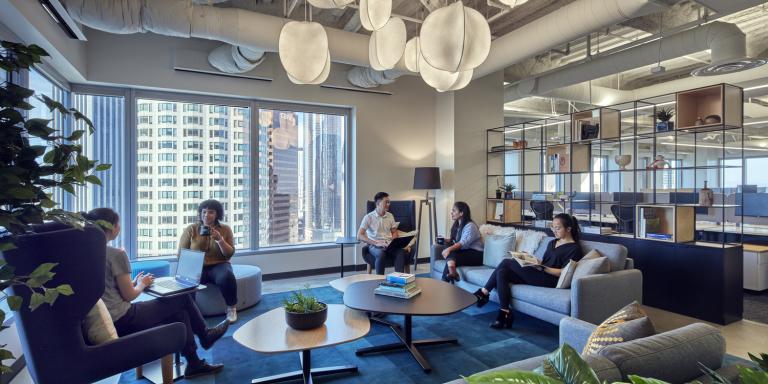 100 Best Places to Work in Los AngelesHED has been ranked in the top 100 Best Places to Work for in the Large Employers Category!
100 Best Places to Work in Los AngelesHED has been ranked in the top 100 Best Places to Work for in the Large Employers Category!
This list of companies comes from top local employers that participated in a detailed survey conducted by Workforce Research Group. The survey ranks small, medium, and large companies on subjects such as leadership, corporate culture, communications and much more.
-
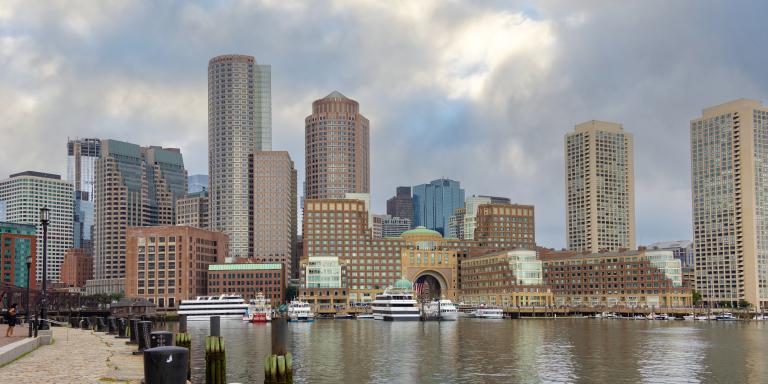 HED named a Boston Best & Brightest Company to Work For in 2023We're very proud to share that we have once again been named a Best & Brightest Company to Work For in Boston!
HED named a Boston Best & Brightest Company to Work For in 2023We're very proud to share that we have once again been named a Best & Brightest Company to Work For in Boston!
The Best and Brightest Companies to Work For® competition identifies and honors organizations that display a commitment to excellence in their human resource practices and employee enrichment.
Organizations are assessed based on categories such as communication, work-life balance, employee education, diversity, recognition, retention and more. Across the country in the metro areas where we work HED continues to be ranked among this cohort of companies dedicated to creating a company culture worth working for.
-
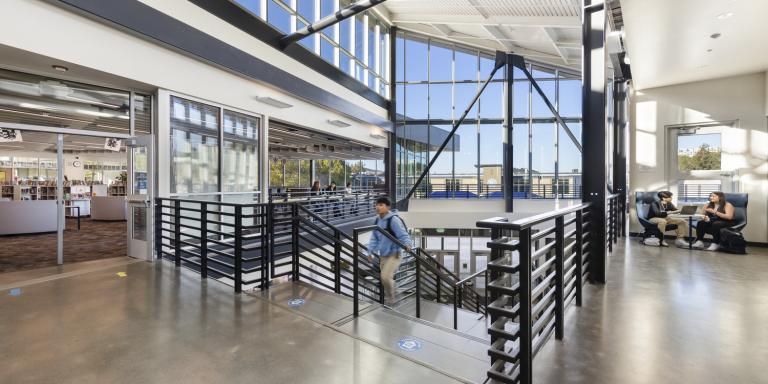 San Diego Business Journal Leaders of Influence HonoreeEvery year, the San Diego Business Journal honors industry leaders, highlighting their careers and accomplishments in all facets of the workplace, all things from Commercial Real Estate, Business, and Education, to name a few.
San Diego Business Journal Leaders of Influence HonoreeEvery year, the San Diego Business Journal honors industry leaders, highlighting their careers and accomplishments in all facets of the workplace, all things from Commercial Real Estate, Business, and Education, to name a few.
Leaders are selected from outstanding achievements in the workplace, along with their participation in the local community.
-
 HED named a Best & Brightest Best Places to Work in Detroit & Chicago and a Brilliance Award WinnerWe're proud to share that both of our Midwest locations (Detroit, MI and Chicago, IL) have been named to the Best & Brightest Best Places to Work For lists in both their metro areas!
HED named a Best & Brightest Best Places to Work in Detroit & Chicago and a Brilliance Award WinnerWe're proud to share that both of our Midwest locations (Detroit, MI and Chicago, IL) have been named to the Best & Brightest Best Places to Work For lists in both their metro areas!
Notably, HED's Chicago office also received a Brilliance Award for being named to the Best Places to Work For list since the program’s inception in 2005!
The Best and Brightest Companies to Work For® competition identifies and honors organizations that display a commitment to excellence in their human resource practices and employee enrichment. Organizations are assessed based on categories such as communication, work-life balance, employee education, diversity, recognition, retention and more.
At HED, we strive to create a culture of aspiration—not end points. We believe in embracing change and challenges, listening to each other, and learning from each other. As an inclusive, integrated practice, we value the diversity of perspectives, experiences, abilities and expertise that advance both the work we do, and the world we share. We're very pleased to be honored again in both of these regions for our culture and investment in our teams. -
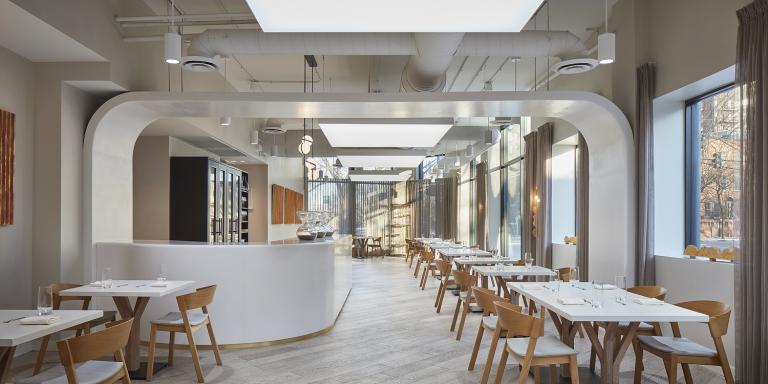 ESME Restaurant wins IIDA RED AwardESME Restaurant has won the 2023 IIDA Illinois Chapter RED Award for the Hospitality-Restaurant category!
ESME Restaurant wins IIDA RED AwardESME Restaurant has won the 2023 IIDA Illinois Chapter RED Award for the Hospitality-Restaurant category!
The IIDA RED awards to recognize exemplary design and continue to build awareness of the impact of interior design in the state of Illinois.
-
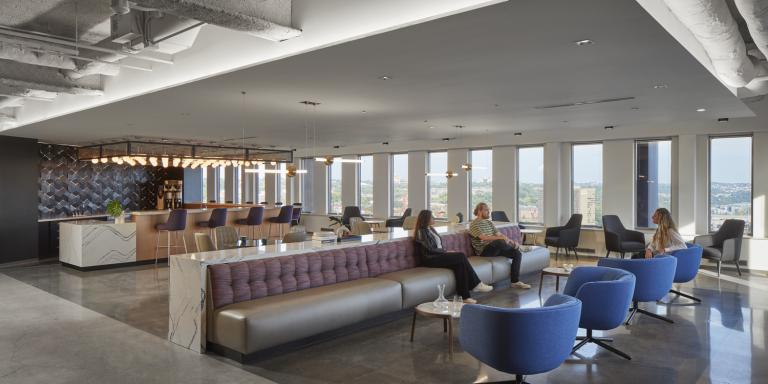 San Diego Business Journal Leaders of Influence in Architecture and Design NomineesEvery year, the San Diego Business Journal honors industry leaders, highlighting their careers and accomplishments in all facets of the workplace, all things from Commercial Real Estate, Business, and Science, to name a few.
San Diego Business Journal Leaders of Influence in Architecture and Design NomineesEvery year, the San Diego Business Journal honors industry leaders, highlighting their careers and accomplishments in all facets of the workplace, all things from Commercial Real Estate, Business, and Science, to name a few.
Leaders are selected from outstanding achievements in the workplace, along with their participation in the local community.
In the Architecture and Design category, HED's Science Business Leader, Neville Willsmore has been named an honoree 2023 Leader of Influence! -
 HED Wins Best Places to Work SoCal!HED's award-winning presence in Southern California has been recognized again in the Best Companies Group's Best Places to Work in SoCal list!
HED Wins Best Places to Work SoCal!HED's award-winning presence in Southern California has been recognized again in the Best Companies Group's Best Places to Work in SoCal list! -
 HED / Amoroso Construction Team Awarded $84M Five Building UC Davis Seismic Improvement ProjectHED is proud to announce our award for the 5-building, $84 seismic design-build improvement project at UC Davis with our construction partner Amoroso Construction.
HED / Amoroso Construction Team Awarded $84M Five Building UC Davis Seismic Improvement ProjectHED is proud to announce our award for the 5-building, $84 seismic design-build improvement project at UC Davis with our construction partner Amoroso Construction.
While this project does not include obvious changes to the building, it includes critical life-safety seismic plus fire/life-safety improvements, plus significant deferred building maintenance. The scope of work spans 5 campus buildings - Jungerman Hall, Young Hall, Voorhies Hall, the Sprocket Building, and the Social Science and Humanities Building.
This project marks the latest of multiple successful design-build collaborations between the Amoroso and HED Teams. The design team also includes structural engineer Miyamoto International.
Project design kicked off May 2023 and project completion is expected mid-2026. -
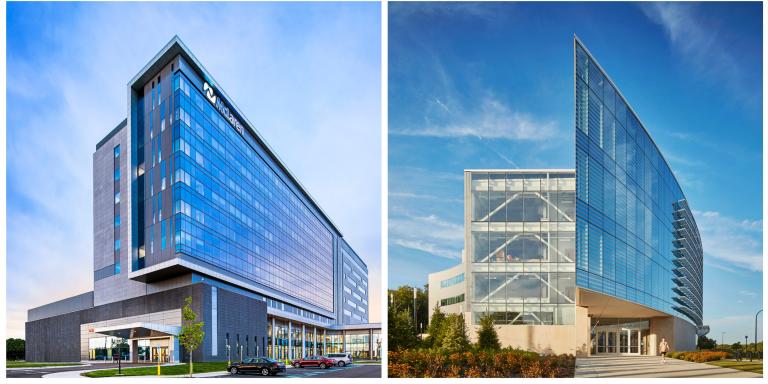 HED Awarded Two ESD Awards for Construction & Design ExcellenceWe're very pleased to share that HED has been awarded two Engineering Society of Detroit Construction and Design Awards for the McLaren Greater Lansing Replacement Hospital in Lansing, MI, and the University of Michigan Ford Robotics building in Ann Arbor, MI!
HED Awarded Two ESD Awards for Construction & Design ExcellenceWe're very pleased to share that HED has been awarded two Engineering Society of Detroit Construction and Design Awards for the McLaren Greater Lansing Replacement Hospital in Lansing, MI, and the University of Michigan Ford Robotics building in Ann Arbor, MI!
The Engineering Society of Detroit’s Construction and Design Awards (C&D award) are among the premier recognitions awarded to members of the construction industry and their projects. These awards are unique in that they honor the three primary members of the building team—owners, designers and constructors—and recognize outstanding achievement and innovative use of technology. The awards were conceived 49 years ago to encourage elevation of the standard of practice in the construction industry.
-
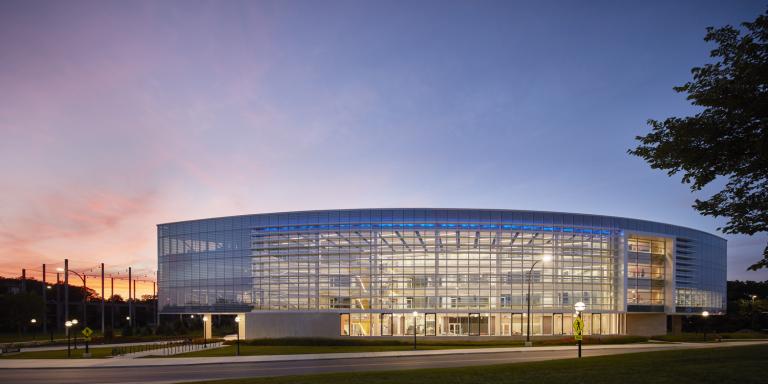 Ford Robotics Building Wins ACEC Engineering Excellence Award!We are proud to announce that the Ford Robotics Building has been honored with a National Recognition Award for exemplary engineering achievement in the 56th annual Engineering Excellence Awards (EEA) by the American Council of Engineering Companies (ACEC).
Ford Robotics Building Wins ACEC Engineering Excellence Award!We are proud to announce that the Ford Robotics Building has been honored with a National Recognition Award for exemplary engineering achievement in the 56th annual Engineering Excellence Awards (EEA) by the American Council of Engineering Companies (ACEC).
The award recognizes HED's outstanding leadership of the 140,000 square foot Ford Motor Company Robotics Building (FRB) project at the University of Michigan in Ann Arbor, MI.
"We are honored to receive this National Recognition Award from the American Council of Engineering Companies," said Michael Cooper, PE, LEED AP, MBA, FACEC, President of HED. "This award is a testament to the dedication and expertise of our talented team, as well as our strong partnership with the University of Michigan and Ford Motor Company. At HED, we believe in the power of integrated architectural and engineering design to create exceptional spaces that not only function effectively but inspire and enrich the lives of the people who use them. The Ford Motor Company Robotics Building project is a shining example of this, bringing together architecture and engineering best practices to deliver an inspiring learning environment for students and faculty."
The Ford Motor Company Robotics Building at the University of Michigan is a state-of-the-art facility that combines advanced robotics research with research spaces to foster innovation and technological advancements in higher education. Our engineering team played a pivotal role in the design and execution of the building, developing cutting-edge structural, mechanical, and electrical systems and ensuring seamless integration of advanced technologies. Our collaborative approach with the architectural team resulted in a harmonious blend of form and function, where engineering solutions enhance the architectural vision.
-
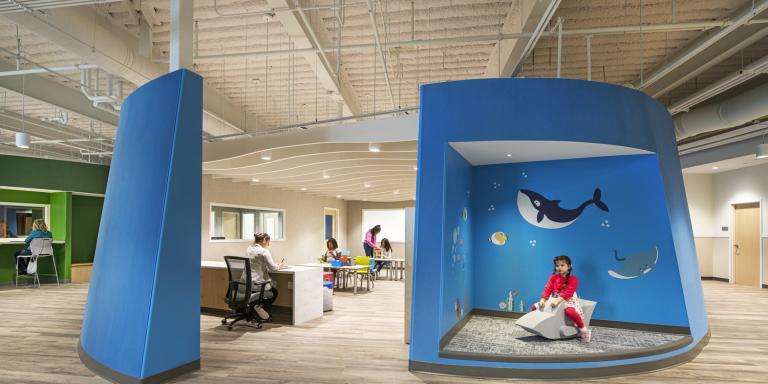 HED named a 2023 Healthcare Interior Design Giant of DesignHED has been named to the 2023 Healthcare Interior Design Giants listing by Interior Design Magazine!
HED named a 2023 Healthcare Interior Design Giant of DesignHED has been named to the 2023 Healthcare Interior Design Giants listing by Interior Design Magazine!
We're proud to share that we have ranked among Interior Design's Giants in Healthcare. Within HED is a national practice specializing in the design of healthcare environments with specialized expertise in a variety of healthcare settings. Our practice is centered around our goals, strategies, results methodology, which centers the experiences and needs of healthcare providers, and measurably supports them through design solutions to real world care delivery challenges.
“Every detail is connected to the patient and to the clinician—we keep this in mind for everything we design,” says David Jaeger, AIA, LEED AP BD+C, EDAC, Healthcare Sector Leader, "centering the patient and caregiver is essential to creating an interior space that assists healing."
-
 HED ranks as an Interior Design Sustainable Design Giant of 2023Interior Design has unveiled the 100 2023 Sustainability Giants, a listing of the top 100 environmentally focused studios in the USA.
HED ranks as an Interior Design Sustainable Design Giant of 2023Interior Design has unveiled the 100 2023 Sustainability Giants, a listing of the top 100 environmentally focused studios in the USA.
HED’s firmwide mission is to have a positive impact for our clients, the community, and the world through design excellence. Our definition of design excellence is a solution built from thoughtful decision-making that creates measurable, real world positive impact. Sustainability is inseparable from design excellence, and significantly benefits what we refer to as “the triple bottom line” - the social, economic, and environmental impacts of a project.
Together with our clients and industry partners, we integrate sustainable planning, design and construction practices into our standard processes, embracing the AIA Framework for Design Excellence to create built environments that are responsive to known challenges and are resilient in the face of an uncertain future. We embrace reducing the use of non-renewable energy sources, supporting the conservation, stewardship and regeneration of natural resources and making informed, responsible and healthier design decisions that maximize positive impact for everyone.
-
 HED welcomes Kandice Lee as Business Development Manager, Higher Education & Science Sectors in Northern CaliforniaHED welcomes Kandice Lee to the firm as Business Development Manager for the Higher Education and Science Sectors in Northern California, bringing over twenty years of expertise in strategy and project development in Northern California real estate. In this role, Kandice will collaborate with leadership and national and local design teams to develop and execute effective strategies for solving client challenges in education and the sciences. Her industry network, knowledge of strategic facilities experience, and focus on client needs will complement the seasoned team she is joining at HED.
HED welcomes Kandice Lee as Business Development Manager, Higher Education & Science Sectors in Northern CaliforniaHED welcomes Kandice Lee to the firm as Business Development Manager for the Higher Education and Science Sectors in Northern California, bringing over twenty years of expertise in strategy and project development in Northern California real estate. In this role, Kandice will collaborate with leadership and national and local design teams to develop and execute effective strategies for solving client challenges in education and the sciences. Her industry network, knowledge of strategic facilities experience, and focus on client needs will complement the seasoned team she is joining at HED.
Prior to joining HED, Kandice served as Business Development Manager, with Swinerton Builders, where she led account relationships and large, complex design-build pursuits.
Kandice’s passion for client service and strategic insight will be integral to HED’s effectiveness toward its mission: Advancing Your World, through the Positive Impact of design, our teams create responsive, innovative, and sustainable design solutions for our clients, the community, and the world.
-
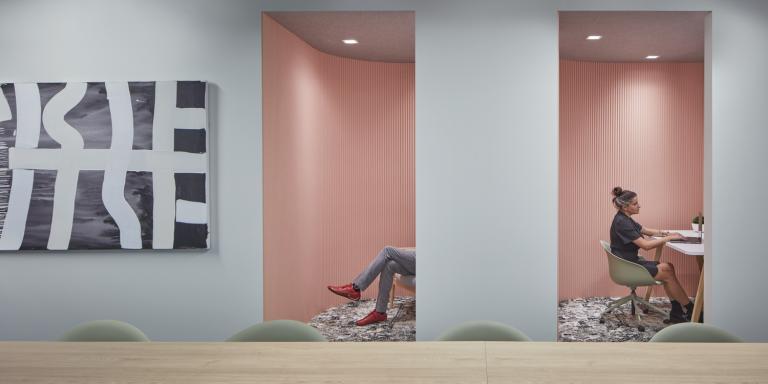 HED ranks in Interior Design Giants Top 100 Firms of 2023HED is very pleased to share that we have once again ranked with the Interior Design Top 100 Giants - a list of the 100 most prominent firms in interior design. We're proud of this standing, which reflects a large body of work and experience in interior design, and thank our clients and design partners, with whom we continue to approach each project without preconceptions.
HED ranks in Interior Design Giants Top 100 Firms of 2023HED is very pleased to share that we have once again ranked with the Interior Design Top 100 Giants - a list of the 100 most prominent firms in interior design. We're proud of this standing, which reflects a large body of work and experience in interior design, and thank our clients and design partners, with whom we continue to approach each project without preconceptions. -
 HED awarded the Multi-Family Project of the Year Award at the NAIOP SoCal Awards Gala!HED is excited to share that AMLI Old Pasadena has been awarded the Multi-Family Project of the Year award by NAIOP SoCal!
HED awarded the Multi-Family Project of the Year Award at the NAIOP SoCal Awards Gala!HED is excited to share that AMLI Old Pasadena has been awarded the Multi-Family Project of the Year award by NAIOP SoCal!
-
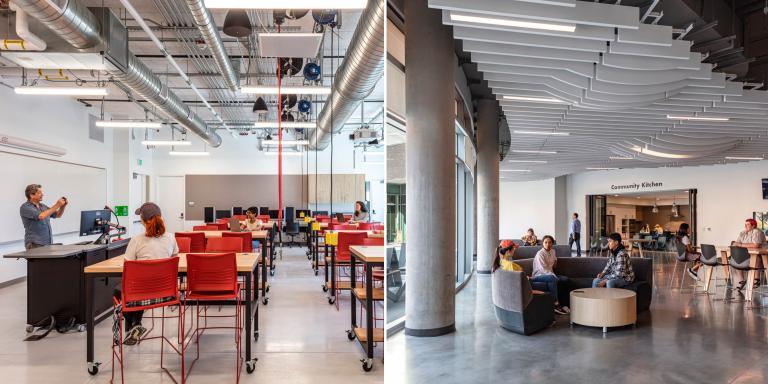 HED awarded 2 Design-Build Institute of America Western Pacific AwardsWe're very pleased to share that the HED & McCarthy Builders design partnership has resulted in two projects that have been awarded a Design-Build Institute of America Western Pacific Award!
HED awarded 2 Design-Build Institute of America Western Pacific AwardsWe're very pleased to share that the HED & McCarthy Builders design partnership has resulted in two projects that have been awarded a Design-Build Institute of America Western Pacific Award!
The Design Build Awards recognize successful application of 2-build best practices as defined by the DBIA Design-Build Manual of Practice. To be considered for a Regional Design-Build Award, projects must demonstrate successful application of design-build best practices as defined by the DBIA Design- Build Manual of Practice. These include early integration of key team members during the proposal process via a proposal charrette or other collaborative outreach effort and close coordination between design and construction team members from the design development stage through field construction. With a history of successful collaborations and deep partnership, the HED/McCarthy Builders team is honored to have been selected for two project collaborations in 2023 - The CSULA South Village student housing development, and the Advanced Technology and Applied Science (ATAS) building at Saddleback College.
-
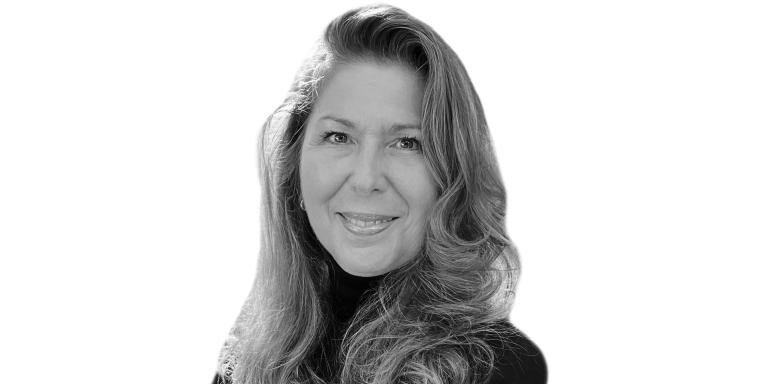 HED welcomes Melinda Monson to the firm as Business Development ManagerHED welcomes Melinda Monson to the firm as Business Development Manager for the Higher Education and Pre-K-12 Sectors in the Los Angeles office, bringing expertise in strategy and project development in Southern California real estate. In this role, Melinda will collaborate with leadership and national and local design teams to develop and execute effective strategies for solving client challenges in education. Her industry network, knowledge of strategic facilities experiences, and focus on client needs will complement the seasoned team she is joining at HED.
HED welcomes Melinda Monson to the firm as Business Development ManagerHED welcomes Melinda Monson to the firm as Business Development Manager for the Higher Education and Pre-K-12 Sectors in the Los Angeles office, bringing expertise in strategy and project development in Southern California real estate. In this role, Melinda will collaborate with leadership and national and local design teams to develop and execute effective strategies for solving client challenges in education. Her industry network, knowledge of strategic facilities experiences, and focus on client needs will complement the seasoned team she is joining at HED.
Prior to joining HED, Melinda served as Account Executive, Business Development and Marketing, with tk1sc/WSP, where she led account relationships within the education, hospitality, and mixed-use sectors; and as a Creative Studio and Show Quality Producer with Walt Disney Imagineering for The Walt Disney Company, where she was responsible for establishing and nurturing client relationships and strategic partnerships creating branded, experiential spaces for all ages.
Melinda’s passion for client service and strategic insight will be integral to HED’s effectiveness toward its mission: Advancing Your World, through the Positive Impact of design, our teams create responsive, innovative, and sustainable design solutions for our clients, the community, and the world.
-
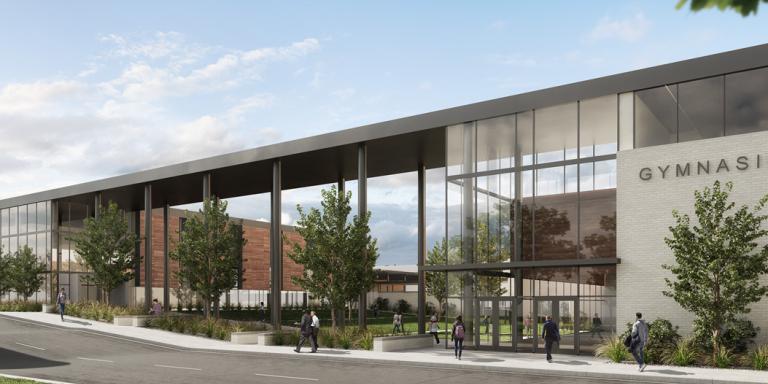 HED Wins CMAA North Texas Project Achievement Award!CMAA North Texas highlights projects each year that celebrate excellence in the built environment. Recently Awarded in collaboration with Corgan Architects, the Dallas Independent School District needed assistance recreating their 40-acre site after severe tornado damage. The Walnut Hill International Learning Academy and Jefferson High School will be the new schools on campus.
HED Wins CMAA North Texas Project Achievement Award!CMAA North Texas highlights projects each year that celebrate excellence in the built environment. Recently Awarded in collaboration with Corgan Architects, the Dallas Independent School District needed assistance recreating their 40-acre site after severe tornado damage. The Walnut Hill International Learning Academy and Jefferson High School will be the new schools on campus.
Walnut Hill International Learning Academy will be a new 126,000 SF facility, with capacity to offer language immersion programs for 800 students, replacing the existing Edward H. Cary Middle School.
Jefferson High School offers a variety of student-centered spaces for academics, arts, and athletics. Academics are supported by robotics, computer, STEAM labs, culinary arts and ROTC classrooms; as well as a library. For the arts there is a modern band room and seven additional practice rooms, dance studios, black box theatre, and upgraded auditorium. Athletics feature trainer and hydrotherapy rooms; a weight room; locker rooms; and a competition gym which also serves as the storm shelter. Additionally, family/youth counseling services are provided within the facility.
Congratulations to the design teams, and thank you to CMAA for this great honor!
-
 HED Ranks in ENR Top 500 Design Firms of 2023In this years May edition of Engineering News Record, HED has ranked #189 in the Top 500 Design Firms!
HED Ranks in ENR Top 500 Design Firms of 2023In this years May edition of Engineering News Record, HED has ranked #189 in the Top 500 Design Firms!
Companies are listed according to revenue for design services performed in 2022 in $ millions. We are excited to be ranked among great firms, getting recognized for our #positiveimpact throughout the country.
-
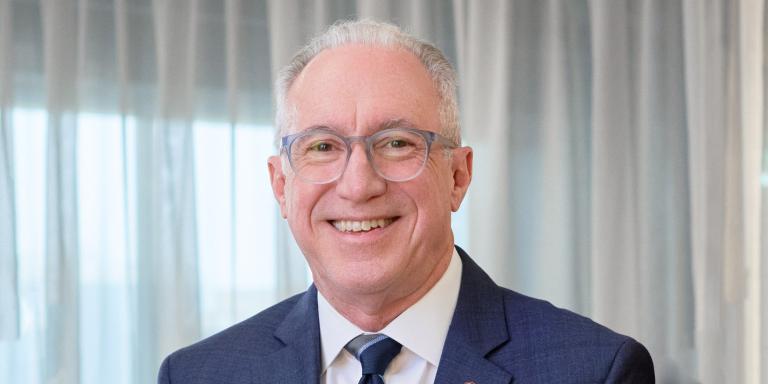 HED appoints J. Peter Devereaux, FAIA, LEED AP to the newly created role of Founding PrincipalHED has appointed J. Peter Devereaux, FAIA, LEED AP to the newly created role of Founding Principal. Devereaux served as HED's CEO from 2015 to March 2023 and transitioned to this new position in April 2023.
HED appoints J. Peter Devereaux, FAIA, LEED AP to the newly created role of Founding PrincipalHED has appointed J. Peter Devereaux, FAIA, LEED AP to the newly created role of Founding Principal. Devereaux served as HED's CEO from 2015 to March 2023 and transitioned to this new position in April 2023.
"Peter brings a wealth of knowledge after years of successfully leading HED, and we're thrilled that the firm retains access to his counsel in this new role," said Enrique Suarez, AIA, LEED AP BD+C, Co-CEO of HED. "Under Peter's leadership, HED has grown into a national powerhouse with offices across multiple regions and a robust portfolio of services. As Founding Principal, Peter will provide continuity as we continue to grow and make a positive impact on the clients and communities we serve."
-
 AMLI Old Pasadena wins PCBC Gold Nugget Award of Merit!HED's mixed-use development, AMLI Old Pasadena, wins an Award of Merit from PCBC Gold Nugget!
AMLI Old Pasadena wins PCBC Gold Nugget Award of Merit!HED's mixed-use development, AMLI Old Pasadena, wins an Award of Merit from PCBC Gold Nugget!
PCBC's Gold Nugget Awards were presented to top innovators in design, planning and development. Selected by a panel of top industry experts who reviewed nearly 600 entries, these winners showcase the most exciting trends in design, planning and building.
This community addition provides a link to past and present in Pasadena, CA. -
 HED Signs MEP 2040 Commitment and Previews its Renewed 5-year Sustainability Action PlanIn honor of Earth Day, our firm strengthens our commitment to sustainable design, architecture and engineering best practices - announcing our commitment as a signatory to The Carbon Leadership Forum's MEP 2040 Challenge in conjunction with previewing the goals of its updated 2023 Sustainability Action Plan (SAP).
HED Signs MEP 2040 Commitment and Previews its Renewed 5-year Sustainability Action PlanIn honor of Earth Day, our firm strengthens our commitment to sustainable design, architecture and engineering best practices - announcing our commitment as a signatory to The Carbon Leadership Forum's MEP 2040 Challenge in conjunction with previewing the goals of its updated 2023 Sustainability Action Plan (SAP).
HED is an American Institute of Architects (AIA) 2030 Commitment reporting firm, a signatory of the 1.5°C COP26 Communiqué and the AEC Sustainable Leaders Group Build Back Greener letter campaign to President Biden. We are committed to these programs and supporters of these causes because we believe it aligns with our firm's values and dedication to supporting clients with climate-resilient design.
The MEP 2040 Challenge calls on building designers and system engineers to advocate for and achieve net zero carbon in their projects: operational carbon by 2030 and embodied carbon by 2040. By signing the challenge, our organization has agreed to reduce operational and embodied carbon across all projects, track and share data, and become active participants in industry-wide efforts to decarbonize building systems.
-
 HED People and Projects Nominated for 5 Illinois Real Estate Journal 2023 AwardsHED is proud to share that five (5) of our people and projects have been nominated for Illinois Real Estate Journal Excellence Awards in 2023 (A REjournals program)!
HED People and Projects Nominated for 5 Illinois Real Estate Journal 2023 AwardsHED is proud to share that five (5) of our people and projects have been nominated for Illinois Real Estate Journal Excellence Awards in 2023 (A REjournals program)!
The REjournals Commercial Real Estate Awards celebrate the achievements, successes and highlights from all sectors of the commercial real estate industry annually.
-
 HED named a Chicago Best & Brightest Company to Work For in 2023We're very proud to share that we have once again been named a Best & Brightest Company to Work For in Chicago!
HED named a Chicago Best & Brightest Company to Work For in 2023We're very proud to share that we have once again been named a Best & Brightest Company to Work For in Chicago!
The Best and Brightest Companies to Work For® competition identifies and honors organizations that display a commitment to excellence in their human resource practices and employee enrichment. Organizations are assessed based on categories such as communication, work-life balance, employee education, diversity, recognition, retention and more. Across the country in the metro areas where we work HED continues to be ranked among this cohort of companies dedicated to creating a company culture worth working for. -
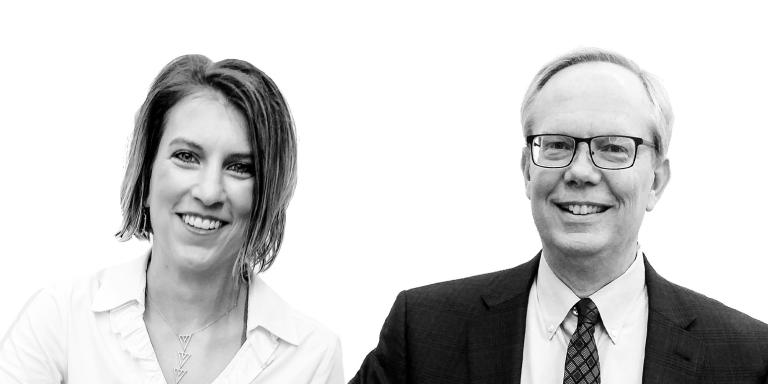 HED wishes farewell to retiring CFO Kevin Peterson, and celebrates the appointment of a new CFO Angela JanssenIt is with gratitude and confidence that HED announces the retirement of our CFO, Kevin Peterson, CPA, and the appointment of Angela Janssen, CPA, our prior Financial Controller, to fill his role as the new CFO.
HED wishes farewell to retiring CFO Kevin Peterson, and celebrates the appointment of a new CFO Angela JanssenIt is with gratitude and confidence that HED announces the retirement of our CFO, Kevin Peterson, CPA, and the appointment of Angela Janssen, CPA, our prior Financial Controller, to fill his role as the new CFO.
Kevin’s retirement became official at the end of March, and after a vote of the annual Shareholder meeting followed by the Board of Directors Spring meeting, Angela has officially assumed the CFO role. Kevin has graciously agreed to provide ongoing consultative support to the firm, including oversight of the completion and implementation of an improved enterprise resource planning platform, an effort which Kevin began during his tenure as CFO.
Kevin joined the firm in 2016, and since then his steadfast leadership and financial acumen have been critical to our achievements as a firm. We extend our heartfelt thanks to Kevin for all his contributions to HED and wish him a wonderful retirement.
"We are particularly grateful to Kevin for seven eventful years of service at HED, providing us with critical financial leadership as we worked through several mergers and a worldwide pandemic. Kevin has been a key contributor to the success of our firm and a reliable teammate and collaborator. We hope that retirement will bring him well-deserved rest and relaxation," says Tania Van Herle, CEO.
-
 HED named a San Diego Best & Brightest Company to Work For in 2023We're very proud to share that we have once again been named a Best & Brightest Company to Work For in San Diego!
HED named a San Diego Best & Brightest Company to Work For in 2023We're very proud to share that we have once again been named a Best & Brightest Company to Work For in San Diego!
The Best and Brightest Companies to Work For® competition identifies and honors organizations that display a commitment to excellence in their human resource practices and employee enrichment. Organizations are assessed based on categories such as communication, work-life balance, employee education, diversity, recognition, retention and more. Across the country in the metro areas where we work HED continues to be ranked among this cohort of companies dedicated to creating a company culture worth working for. -
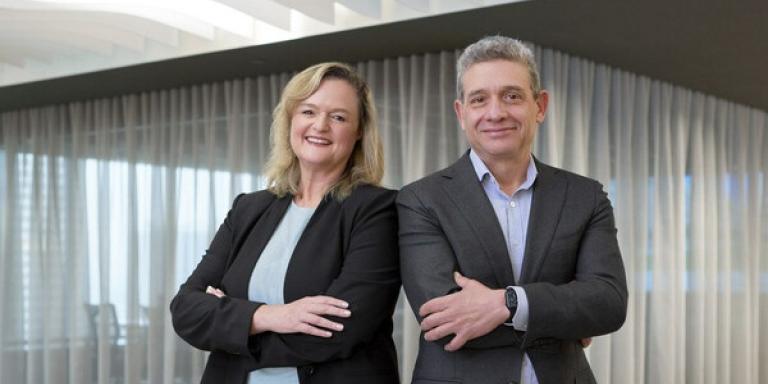 HED Appoints Tania Van Herle and Enrique Suarez as Co-CEOsWe're very pleased to announce the appointment of Tania Van Herle, FAIA, LEED AP BD+C, and Enrique Suarez, AIA, LEED AP BD+C, to Co-CEOs.
HED Appoints Tania Van Herle and Enrique Suarez as Co-CEOsWe're very pleased to announce the appointment of Tania Van Herle, FAIA, LEED AP BD+C, and Enrique Suarez, AIA, LEED AP BD+C, to Co-CEOs.
Van Herle and Suarez will take over from our retiring Chairman and CEO J. Peter Devereaux, FAIA, who served as HED's CEO since 2015. During his tenure, Devereaux led HED's transformation into a nationally recognized practice – expanding sector expertise, spearheading five mergers and opening three offices.
-
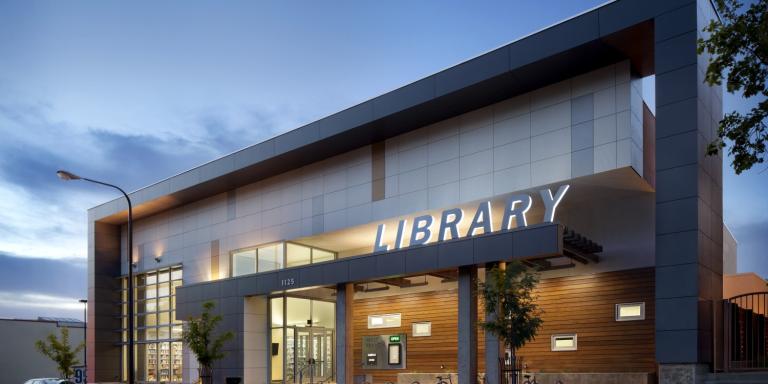 HED's National Sustainable Design Leader Appointed to COTE Leadership GroupHED is excited to share that National Sustainable Design Leader, Daniel Jaconetti has been appointed to the COTE® Leadership Group!
HED's National Sustainable Design Leader Appointed to COTE Leadership GroupHED is excited to share that National Sustainable Design Leader, Daniel Jaconetti has been appointed to the COTE® Leadership Group!
The AIA Committee on the Environment (COTE®) works to advance, disseminate, and advocate design practices that integrate built and natural systems and enhance both the design quality and environmental performance of the built environment. It consists of leaders from firms across the industry working together to advance the sustainability goals and design standards of the AIA.
-
 Michigan State University Selects HED and CannonDesign as Architect/Engineer for its future Plant Science FacilityWe are thrilled to announce Michigan State University (MSU) has selected the HED and CannonDesign team to design its future Plant Science Facility. The estimated 150,000-square-foot building will support world-leading plant scientists in boosting agricultural productivity and sustainability, improving plant responses to environmental challenges and furthering regenerative farming practices.
Michigan State University Selects HED and CannonDesign as Architect/Engineer for its future Plant Science FacilityWe are thrilled to announce Michigan State University (MSU) has selected the HED and CannonDesign team to design its future Plant Science Facility. The estimated 150,000-square-foot building will support world-leading plant scientists in boosting agricultural productivity and sustainability, improving plant responses to environmental challenges and furthering regenerative farming practices.
“This is an incredibly meaningful project for Michigan State University, our team and society at large,” said Charles Smith, co-director of CannonDesign’s Education Practice. “The research within its walls will directly address many of the most important challenges facing humanity.”
“We’re honored to be working alongside MSU to design an innovative building that will help catalyze incredible innovations in plant science,” added Chris Vogelheim, HED Principal and Higher Education Sector leader.
-
 HED Wins ACEC's Honorable Conceptor Award!This past weekend, the University of Michigan’s Ford Robotics Building project received an Engineering Honorable Conceptor Award from the American Council of Engineering Companies in Michigan!
HED Wins ACEC's Honorable Conceptor Award!This past weekend, the University of Michigan’s Ford Robotics Building project received an Engineering Honorable Conceptor Award from the American Council of Engineering Companies in Michigan!
The project was also selected to receive this year’s award for Board Design. Congratulations to our Higher Education design team for this success and thank you to ACEC Michigan for this great honor! -
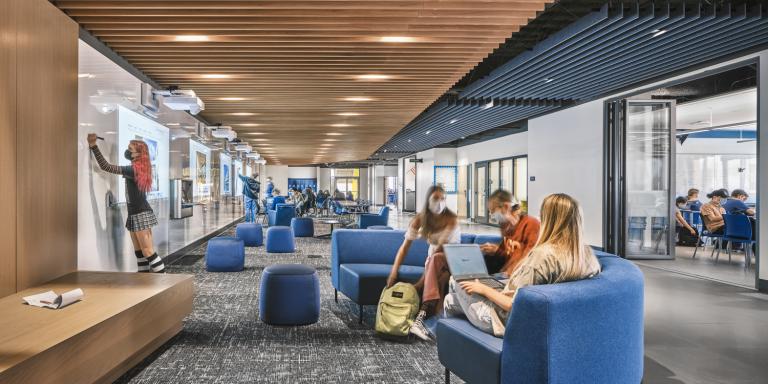 Santa Monica High School Discovery Building Wins CASH Award of Merit!HED is excited to announce that the recently completed Santa Monica High School Discovery Building is this year’s recipient of the Coalition for Adequate Student Housing Award of Merit!
Santa Monica High School Discovery Building Wins CASH Award of Merit!HED is excited to announce that the recently completed Santa Monica High School Discovery Building is this year’s recipient of the Coalition for Adequate Student Housing Award of Merit! -
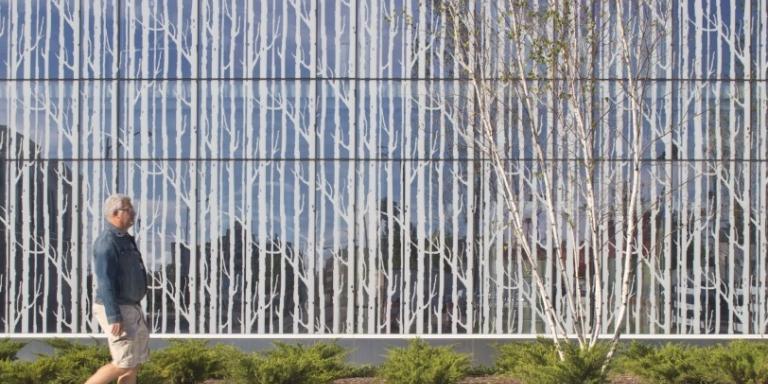 HED ranked in the Top 25 Reconstruction AE Firms by BD+CWe're excited to share that HED has ranked in the Top 25 of the Building Design and Construction Top Reconstruction Sector Architecture and AE Firms in 2022!
HED ranked in the Top 25 Reconstruction AE Firms by BD+CWe're excited to share that HED has ranked in the Top 25 of the Building Design and Construction Top Reconstruction Sector Architecture and AE Firms in 2022! -
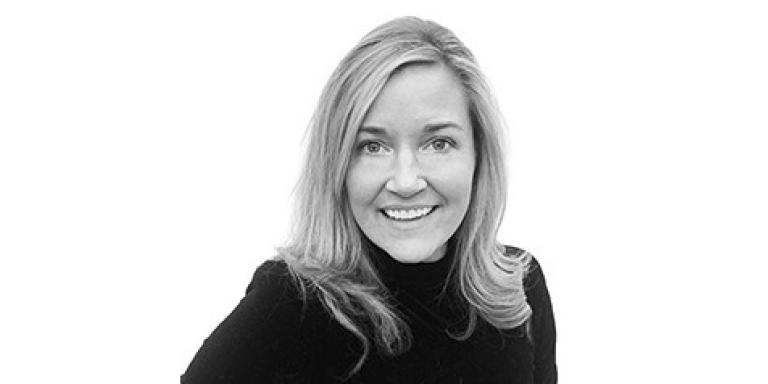 HED welcomes Kelli Herman to the firm as Associate, Business Development in DetroitHED welcomes Kelli Herman to the firm as Associate, Business Development. In this role, Kelli will collaborate with national and local design teams to develop and execute effective strategies for solving client challenges. Her industry network, knowledge of market trends, education in architecture and energy conservation, and focus on client needs will complement the seasoned team she is joining at HED.
HED welcomes Kelli Herman to the firm as Associate, Business Development in DetroitHED welcomes Kelli Herman to the firm as Associate, Business Development. In this role, Kelli will collaborate with national and local design teams to develop and execute effective strategies for solving client challenges. Her industry network, knowledge of market trends, education in architecture and energy conservation, and focus on client needs will complement the seasoned team she is joining at HED.
Prior to joining HED, Kelli served as Director of Opportunity Creation for Neumann/Smith Architecture, where she was responsible for establishing and nurturing client relationships and strategic partnerships. She is a past president of CREW Detroit and is actively involved in several industry groups and volunteer organizations.
Kelli’s passion for client service will be integral to HED’s effectiveness toward its mission: Advancing Your World, through the Positive Impact of design, our teams create responsive, innovative, and sustainable design solutions for our clients, the community, and the world.
-
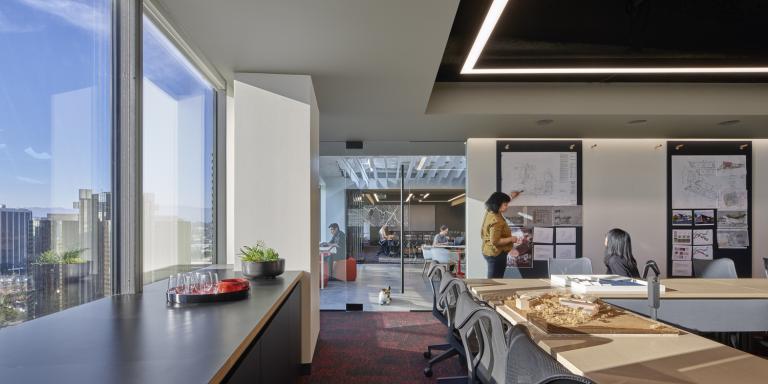 HED Ranks Top 100!HED is proud to share that we are a Building Design and Construction Magazine's Top 100 Office Sector Architecture and AE Firm for 2022!
HED Ranks Top 100!HED is proud to share that we are a Building Design and Construction Magazine's Top 100 Office Sector Architecture and AE Firm for 2022!
Now 46 years running, Building Design+Construction's Giants 400 Report ranks the largest architecture, engineering, and construction firms in the U.S. This year a record 519 AEC firms participated.
The final report includes more than 130 rankings across 25 building sectors and specialty categories, a dozen of which HED ranks among the largest and most established, including Top Workplace/Interior Fitout Architecture/ Engineering, Top 150 Office Building Core+Shell Architecture/Engineering, and the overall Top 200 Office Sector Architecture/Engineering firms! -
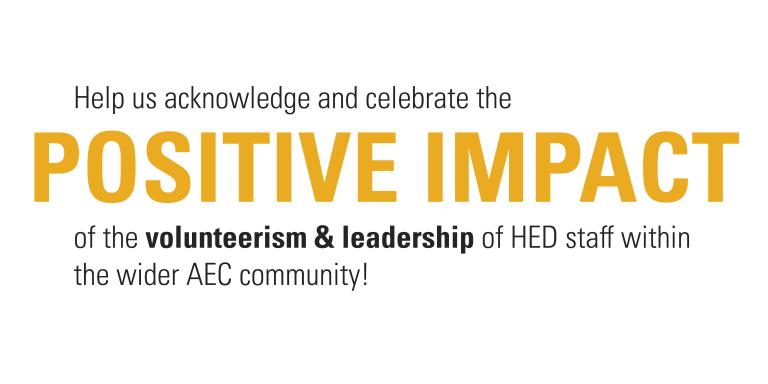 HED recognizes a new list of servant leaders in industry groups in 2023Each year HED has a new group of team members appointed to positions of volunteer leadership within industry advocacy, education, and professional development groups such as the American Institute of Architects (AIA), The American Council of Engineering Companies (ACEC), and others, serving as leaders outside our firm at various levels across the country.
HED recognizes a new list of servant leaders in industry groups in 2023Each year HED has a new group of team members appointed to positions of volunteer leadership within industry advocacy, education, and professional development groups such as the American Institute of Architects (AIA), The American Council of Engineering Companies (ACEC), and others, serving as leaders outside our firm at various levels across the country.
We would like to take a moment to thank these individuals for their time and devotion to the improvement of their disciplines and the industry as a whole. Together as a firm, we acknowledge and celebrate the positive impact created by their volunteerism and leadership within the wider AEC community through these organizations. Thank you:
• Jeff Gaines, AIA, AICP, WELL & LEED AP BD+C - AIA Detroit Chapter Treasurer
• Todd Drouillard, AIA, NCARB - AIA Michigan Vice President
• Scott Gustafson, AIA, LEED AP, NCARB - AIA Huron Valley Chapter President
• Lauren Roller, PE – Chair, ACEC/Michigan Engineering and Surveying Excellence Awards Committee
• Tom Oziem, PE, CEM - Adjunct Faculty, Mechanical Engineering at Lawrence Technological University (LTU) & Industry Mentor, Lawrence Technological University (LTU) Capstone Studio
• Andrea Bell - Industry Mentor, Lawrence Technological University (LTU) Capstone Studio
• Daniel Jaconetti, AIA, LEED AP - Co-Chair, AIA|Chicago Committee On The Environment (COTE)/2030
• Jose Larco, AIA, NCARB – AIA|LA Chapter Health Care Committee Member
• Megumi Hironaka, AIA, WELL, LEED AP BD+C - Vice Chair, AIA|LA Committee On The Environment (COTE)
• Yu-Ming Wei, AIA – AIA|LA Women in Architecture Committee
• Steven Crook, PE, SE – Treasurer, Structural Engineers Association of California (SEAOC)
-
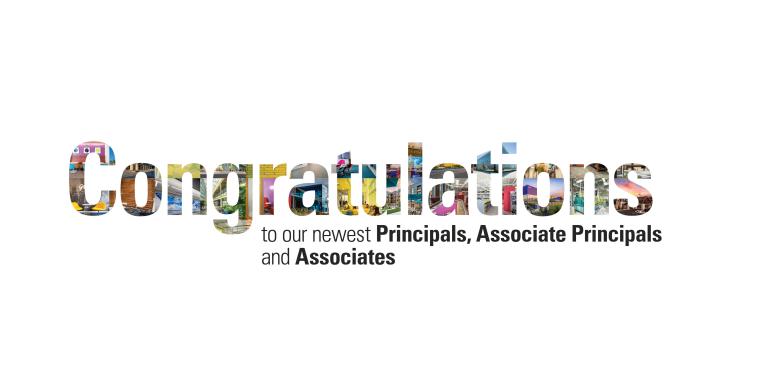 HED announces new Principals, Associate Principals, and Associates in 2023Congratulations to our newest Principals, Associate Principals, and Associates!
HED announces new Principals, Associate Principals, and Associates in 2023Congratulations to our newest Principals, Associate Principals, and Associates!
Please join us in celebrating the contributions of our newest Principals, whose continued leadership has been a driving force behind the positive impact we bring to our clients and communities:
Kenneth Golovko, PE, NCEES, LEED AP BD+C
A seasoned leader of multidisciplinary teams working in highly matrixed organizations, Ken Golovko has been involved with challenges across the building disciplines, as well as each phase of development. A classically trained Mechanical Engineer, Ken began his career with the energy operations group at Nestle Brands, solidifying a career-long passion for sustainable design. With more than 25 years of experience including contracting, technical sales, engineering and team leadership, Ken leads HED’s national engineering practice to deliver innovative, sustainable design solutions that deliver measurable positive impact to clients.
Anna MacDougall, PMP, RIBA
Anna MacDougall is a skilled project manager and architect with extensive experience in the design and delivery of award-winning buildings of all scales, leading high-profile construction and masterplan projects. She has extensive experience in complex and sensitive community engagement and consultation as well as technical leadership and staff development. Her background in urban design gives her an in-depth understanding into how people use, and relate to, their spatial environments, and she has a passion for working collaboratively with clients, consultants and stakeholders alike, turning visions into beautiful and fully functional realities. Anna was educated in the UK but is now a permanent resident of California, focusing on project and design delivery operations leadership on the West Coast.
Eric Speenburgh, PE, ATD
Eric Speenburgh is a leader within HED’s electrical engineering group, focusing within the mission critical sector. An electrical engineer who is well versed in all aspects of his discipline, his experience, and skills in designing power systems include sizing and coordinating integral components to a power distribution system, making him a vital member of the electrical group. Eric has been involved in projects from initial design through construction, final testing, commissioning, and operational checkout. He routinely leverages his varied and complex project experience to improve client outcomes and is a mentor and thought leader within the industry.
Scott Whitebone, AIA, NCARB
With over twenty years of experience as an architect, Scott Whitebone is skilled at managing large, multi-phased projects and has worked within multiple sectors including, healthcare, hospitality, civic, housing, and corporate and commercial markets. He takes a pragmatic approach to design, listening and learning from his clients throughout the process. A senior architect and pivotal team leader, Scott acts as a key mentor within the Chicago office and across the firm. He is passionate about mentoring, client advocacy, and ensuring the success of projects through collaboration and team building.
And please join us in congratulating our newest Associate Principals and Associates. These individuals come from across disciplines, and their dedication to client service, innovation, and design excellence is reflected in their work and conduct.
Congratulations to our newest Associate Principals:
• Scott Berge, AIA, LEED AP
• Megan Crawford, PE
• Todd Drouillard, AIA, NCARB
• Steven Goldfarb, RCDD
• Jon Howard, AIA, NCARB, CDT
• Daniel Jaconetti, AIA, LEED AP
• Richard Kaiser, PE
• Katherine Kalant, AIA, NCARB
• Marilee Lloyd, AIA
• Scott Morgan, PE
• Emily Perez, AIA, NCARB, LEED AP
• Lauren Roller, PE
• Bernard Vilza, AIA
And to our newest Associates:
• Samantha Aisawa
• Jeffrey Cilley
• Nick Clark, AIA, NCARB
• Chapin Cornillaud, RA, NCARB, LEED AP BD+C
• Can Cui, AIA
• Mayra Diaz, SPHR
• Laurian Dixon, AIA
• Luke English, AIA, CDT, LEED AP
• David Ehrhardt, AIA, NCARB
• Hue Eryigit, AIA
• Tristan Hall, AIA, LEED AP BD+C
• Stephen Helms, AIA
• Clara Lee, AIA
• Steffen Leisner, AIA, LEED AP
• Fred Meinberg, AIA
• Elise Puritz, PBD
• Sharo Saremi, PE
• Tom Whitehead
These promotions mark the close of a strong year and reflect the positive impact these individuals’ contributions create for our clients, communities, and our firm. Thank you and congratulations to each of you! -
 'Tis the season of gratitudeTo celebrate this season of gratitude we have contributed to organizations creating positive impact in our communities, including:
'Tis the season of gratitudeTo celebrate this season of gratitude we have contributed to organizations creating positive impact in our communities, including:
Rosie’s Place
The American Cancer Society
The North Dallas Food Bank
Life Remodeled
Habitat for Humanity
The San Francisco Food Bank
The Contra Costa Food Bank
The Sacramento Food Bank
Feeding San Diego
We're thankful to you: our clients and partners, who make what we do possible each year. Happy holidays! -
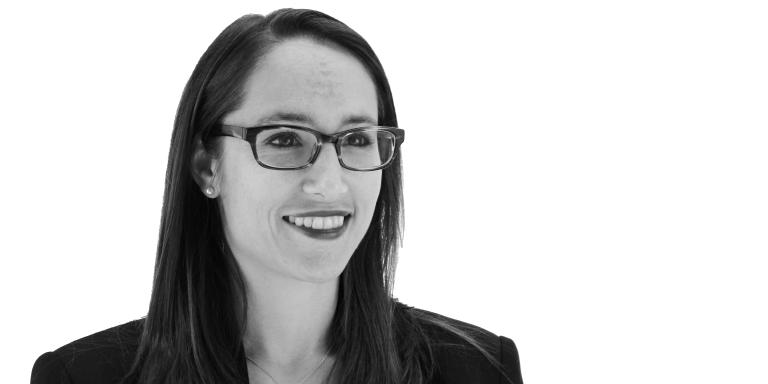 HED welcomes Rebecca Swanner as new Workplace Sector Leadership in Los AngelesHED is pleased to welcome Rebecca Swanner, AIA, to the firm as Associate Principal, Sector Leadership in the Los Angeles office, bringing over fifteen years of experience in the delivery of a variety of corporate, hospitality, science/tech, and entertainment projects. In this role, Rebecca will lead integrated architectural, interiors, and engineering teams to develop and execute effective strategies for quality project execution, primarily in the workplace sector.
HED welcomes Rebecca Swanner as new Workplace Sector Leadership in Los AngelesHED is pleased to welcome Rebecca Swanner, AIA, to the firm as Associate Principal, Sector Leadership in the Los Angeles office, bringing over fifteen years of experience in the delivery of a variety of corporate, hospitality, science/tech, and entertainment projects. In this role, Rebecca will lead integrated architectural, interiors, and engineering teams to develop and execute effective strategies for quality project execution, primarily in the workplace sector.
Rebecca’s industry knowledge and focus on client needs will be integral to HED’s effectiveness toward its mission: Advancing Your World, through the Positive Impact of design, our teams create exceptional solutions for our clients, the community, and the world.
-
 Interfaith Housing Development Corporation Breaks Ground on Conservatory Apartments, Declaring Its Goal to Be Chicago's First Large-Scale Affordable Housing Project to Be Passive House CertifiedInterfaith Housing Development Corporation (IHDC) and HED are pleased to announce the groundbreaking of the Conservatory Apartments. Situated just north of the landmark Garfield Park Conservatory in Chicago, the Conservatory Apartments will serve two populations in need of permanent, supportive housing with forty-three new, affordable units which are targeting goals that, when achieved, would set a new standard for affordable housing.
Interfaith Housing Development Corporation Breaks Ground on Conservatory Apartments, Declaring Its Goal to Be Chicago's First Large-Scale Affordable Housing Project to Be Passive House CertifiedInterfaith Housing Development Corporation (IHDC) and HED are pleased to announce the groundbreaking of the Conservatory Apartments. Situated just north of the landmark Garfield Park Conservatory in Chicago, the Conservatory Apartments will serve two populations in need of permanent, supportive housing with forty-three new, affordable units which are targeting goals that, when achieved, would set a new standard for affordable housing.
IHDC is poised to demonstrate that the Passive House Certification for large, affordable, multi-family housing projects is within reach in a Midwestern climate. "IHDC is committed to providing the healthiest and safest affordable living environments possible, that's why we continue to push for programs that advance human and environmental health through sustainable design," says Perry Vietti, President of Interfaith Housing.
"IHDC's goals for this project are twofold," says Susan King, FAIA, LEED AP BD+C, LFA, Sector Leader with HED and Principal in Charge of the Conservatory Apartments design team, "First, the building is being designed to meet Passive House Standards and achieve Passive House certification through the Passive House Institute of the United States (PHIUS), which is a next-generation passive house standard that combines thorough design verification protocol with a stringent QA/QC program to deliver better buildings. Secondly, the project has been selected to be a participant in the Living Building Challenge (LBC) Pilot Program for affordable housing."
-
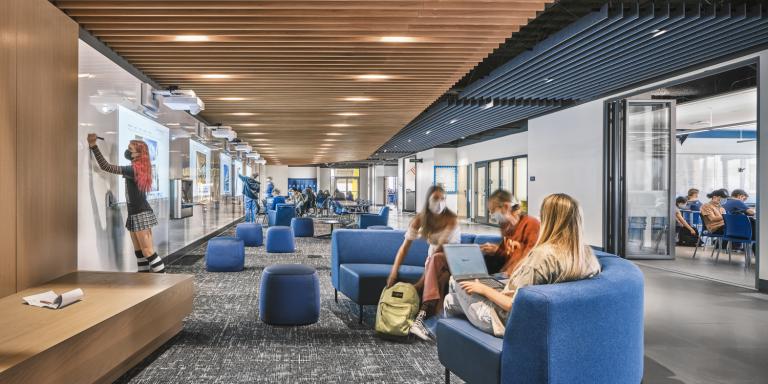 Santa Monica High School Discovery Building Wins LABC 52nd Annual Architecture AwardWe are excited to share that the recently completed Santa Monica High School Discovery Building has won the 52nd Annual Los Angeles Architectural Awards by the Los Angeles Business Council (LABC)!
Santa Monica High School Discovery Building Wins LABC 52nd Annual Architecture AwardWe are excited to share that the recently completed Santa Monica High School Discovery Building has won the 52nd Annual Los Angeles Architectural Awards by the Los Angeles Business Council (LABC)!
HED, in collaboration with Moore Ruble Yudell Architects & Planners, designed this dramatic new academic complex to benefit both school and the surrounding community. The complex elevates educational, cultural and recreational pursuits; improves campus access and circulation; and supports whole child development and diverse learning styles. From arts and athletic facilities to larger, light-filled classrooms, enhanced support spaces to reorganized outdoor spaces, the five-story, 280,000 square foot complex fosters social interactions and strengthens the sense of community on SAMOHI’s campus.
-
 McLaren Greater Lansing hospital wins the Design-Build Institute of America National Merit AwardWe're very proud to share that the McLaren Greater Lansing Hospital in Lansing, MI, has won a Design-Build Institute of America National Merit Award in the healthcare category!
McLaren Greater Lansing hospital wins the Design-Build Institute of America National Merit AwardWe're very proud to share that the McLaren Greater Lansing Hospital in Lansing, MI, has won a Design-Build Institute of America National Merit Award in the healthcare category!
With the goal of becoming the destination of choice for health care in mid-Michigan, McLaren Greater Lansing consolidated two existing Lansing hospital facilities into an innovative health care campus which transforms the experience for patients and their families, physicians, caregivers and the community in terms of access to care, ease of receiving services and providing the best value for patients through quality outcomes, cost and service. This facility is a national benchmark in delivering evidence-based care that incorporates LEAN principles, safety, and applies best practices. Within the 39-acre parcel, McLaren invested $601 million into a state-of-the-art health care campus that includes this nine-story, 562,000 sq. ft. Replacement Hospital.
The complexity and timetable of this project required a deep collaboration between all parties of the design-build team. The keys to success included willing partners, the early involvement of design assist partners, and the non-traditional design sequence. This complex and highly coordinated effort allowed the team to deliver this project two-months earlier than what historically would have been possible using conventional methods. Together we created this new facility, and that teamwork is the basis for this shared honor.
Congratulations and thank you to our client McLaren Health Care Corporation and their advisor Kramer Management Group, without whom our team could not have come together! -
 HED ranks #33 in the BD+C Top Healthcare Architecture/Engineering Firms of 2022We're pleased to share that HED has once again ranked in the BD+C top 170 architecture and engineering practices of the year in Healthcare - ranking #33 in a list of over 100 top multi-discipline firms!
HED ranks #33 in the BD+C Top Healthcare Architecture/Engineering Firms of 2022We're pleased to share that HED has once again ranked in the BD+C top 170 architecture and engineering practices of the year in Healthcare - ranking #33 in a list of over 100 top multi-discipline firms! -
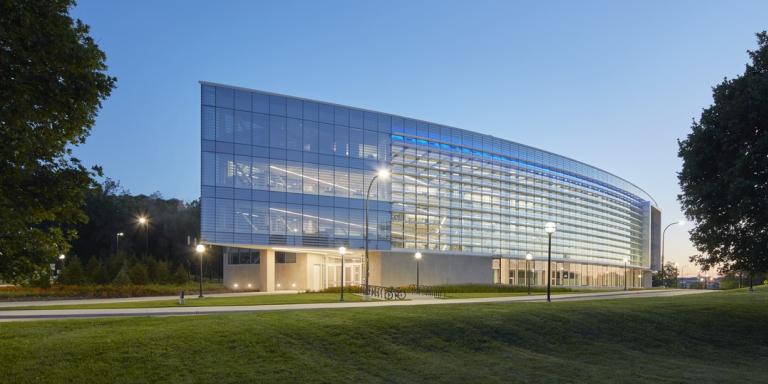 Ford Robotics Building at the University of Michigan wins AIA Building AwardThe HED team is very proud to share that the Ford Robotics Building (FRB) at the University of Michigan has won a building award from the AIA Huron Valley chapter!
Ford Robotics Building at the University of Michigan wins AIA Building AwardThe HED team is very proud to share that the Ford Robotics Building (FRB) at the University of Michigan has won a building award from the AIA Huron Valley chapter!
Designed to meet three critical, overarching objectives—flexibility, collaboration and innovation—the interdisciplinary facility accommodates the common needs of each research discipline and seamlessly incorporates spaces crafted to the exact specifications of individual teams: a three-story fly zone for autonomous aerial vehicles, an outdoor obstacle course for walking robots, and a high-bay garage space for self-driving cars.
Now LEED Gold certified, the facility not only places the University of Michigan among a select group of universities with a dedicated robotics facility, but also deepen the university’s relationship with Ford. In an unprecedented move, the major automobile manufacturer has leased the facility’s fourth floor, establishing its first research laboratory located on a university campus. -
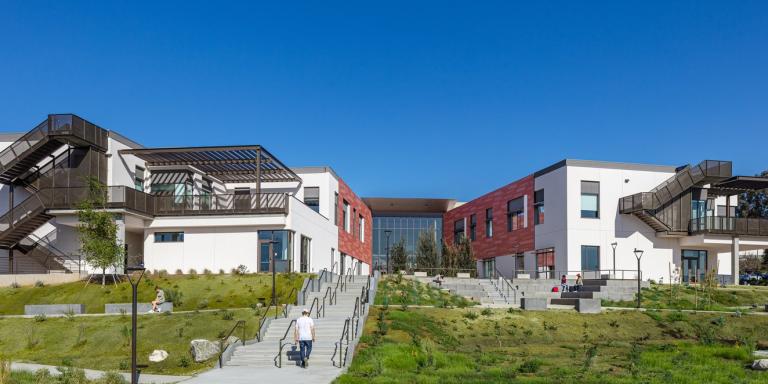 HED named a Top 100 Green Design Firm by Engineering News RecordWe're extremely pleased to share that our firm has been ranked among the Top 100 Green Design Firms of 2022 by Engineering News Record!
HED named a Top 100 Green Design Firm by Engineering News RecordWe're extremely pleased to share that our firm has been ranked among the Top 100 Green Design Firms of 2022 by Engineering News Record!
"We have embedded sustainability in every project approach," says HED National Sustainable Design Leader Daniel Jaconetti, AIA, LEED, "We apply the AIA Framework for Design Excellence to contextualize sustainable design strategies against ten metrics: integration, community, ecology, water, economy, energy, wellness, resources, change, and discovery. We feel this framework aligns well with our Goals, Strategies, Results design approach and ethos and assists in finding new ways to create positive impact for our clients."
-
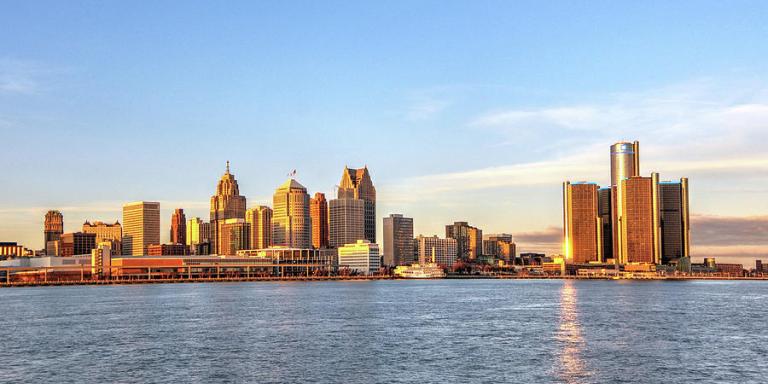 HED named among the Best & Brightest Places to Work in Detroit!We're proud to share that our firm has once again ranked among the winners of the Best & Brightest Firms to Work For in Detroit!
HED named among the Best & Brightest Places to Work in Detroit!We're proud to share that our firm has once again ranked among the winners of the Best & Brightest Firms to Work For in Detroit!
The Best and Brightest Companies to Work For competition identifies and honors organizations that display a commitment to excellence in employee enrichment. Organizations are assessed based on categories such as communication, work-life balance, employee education, diversity, recognition, retention and more.
-
 HED welcomes Kurt Volkman as new Housing & Mixed-Use Sector Leadership in ChicagoHED is pleased to welcome Kurt Volkman, AIA, LEED AP BD+C to the firm as Associate Principal, Housing & Mixed-Use Sector Leadership in the Chicago office, bringing over twenty-seven years of experience in the delivery of complex projects in communities across greater Chicago and nationally. In this role, Kurt will lead integrated architectural and engineering design teams to develop and execute effective and sensitive design responses in the housing and mixed-use sectors.
HED welcomes Kurt Volkman as new Housing & Mixed-Use Sector Leadership in ChicagoHED is pleased to welcome Kurt Volkman, AIA, LEED AP BD+C to the firm as Associate Principal, Housing & Mixed-Use Sector Leadership in the Chicago office, bringing over twenty-seven years of experience in the delivery of complex projects in communities across greater Chicago and nationally. In this role, Kurt will lead integrated architectural and engineering design teams to develop and execute effective and sensitive design responses in the housing and mixed-use sectors.
-
 HED again named among Best & Brightest Places to Work in San Francisco!We're proud to share that our firm has once again ranked among the winners of the Best & Brightest Firms to Work For in San Francisco!
HED again named among Best & Brightest Places to Work in San Francisco!We're proud to share that our firm has once again ranked among the winners of the Best & Brightest Firms to Work For in San Francisco!
The Best and Brightest Companies to Work For competition identifies and honors organizations that display a commitment to excellence in employee enrichment. Organizations are assessed based on categories such as communication, work-life balance, employee education, diversity, recognition, retention and more.
Every one of our people is an important part of how and why HED is one of the most dynamic and creative firms in the industry. It is because of our people that we enjoy a reputation as one of the best companies in the country to work for, and we accredit our ability to attract this talent to our strong culture built around Our Mission: Advancing Your World for our clients and communities.
-
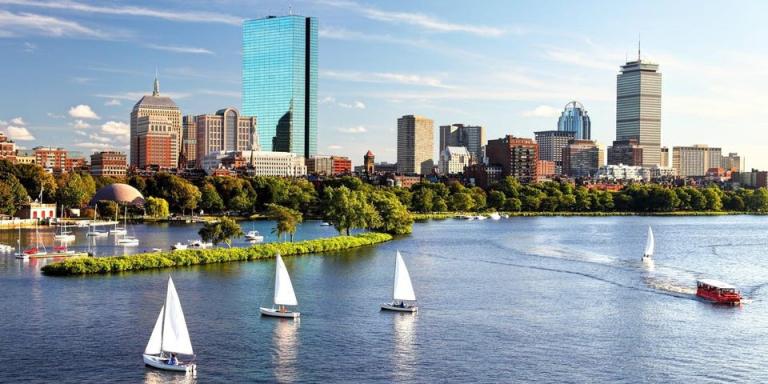 HED has once again ranked among the Best & Brightest Places to Work in Boston!We're proud to share that our firm has once again ranked among the winners of the Best & Brightest Firms to Work For in Boston!
HED has once again ranked among the Best & Brightest Places to Work in Boston!We're proud to share that our firm has once again ranked among the winners of the Best & Brightest Firms to Work For in Boston!
The Best and Brightest Companies to Work For competition identifies and honors organizations that display a commitment to excellence in employee enrichment. Organizations are assessed based on categories such as communication, work-life balance, employee education, diversity, recognition, retention and more.
Every one of our people is an important part of how and why HED is one of the most dynamic and creative firms in the industry. It is because of our people that we enjoy a reputation as one of the best companies in the country to work for, and we accredit our ability to attract this talent to our strong culture built around Our Mission: Advancing Your World for our clients and communities.
-
 McLaren Greater Lansing replacement hospital wins ENR Midwest Award of MeritWe're proud to share that the McLaren Greater Lansing replacement hospital has won an Award of Merit from Engineering News Record Midwest!
McLaren Greater Lansing replacement hospital wins ENR Midwest Award of MeritWe're proud to share that the McLaren Greater Lansing replacement hospital has won an Award of Merit from Engineering News Record Midwest!
Previously landlocked in a residential area within Lansing, the new hospital location allows for easier access and a boost in visibility. Designed in partnership with Gresham Smith, the nine-story, 517,000-square-foot replacement hospital represents the largest one-time investment in McLaren Health Care history, replacing two existing hospital facilities with one state-of-the-art facility that advances patient care, comfort and convenience.
-
 HED elevates four new Sector Leaders across the countryHED is pleased to share that, effective immediately, four young designers have been elevated to positions of Sector Leadership across the country:
HED elevates four new Sector Leaders across the countryHED is pleased to share that, effective immediately, four young designers have been elevated to positions of Sector Leadership across the country:
• Scott Berge, AIA, LEED AP, Pre K-12 Education
• Jon Howard, AIA, CDT, Science
• Alli Mallory, AIA, Housing & Higher Education
• Grace Milenkov, Associate AIA, Pre K-12 Education
“This expansion of the sector leadership team reflects not just our industry’s recovery from the pandemic, but also a new rising generation of leaders within the firm,” say Enrique Suarez, AIA, LEED AP BD+C, HED’s Corporate Marketing Leader. “We continue to shape the formation of our design teams around experience that best meets the challenges our clients face, and this expansion of the leadership team reflects that. These individuals have been selected for their dedication to meeting our client’s ever-evolving challenges head on and creating design solutions that get results.”
-
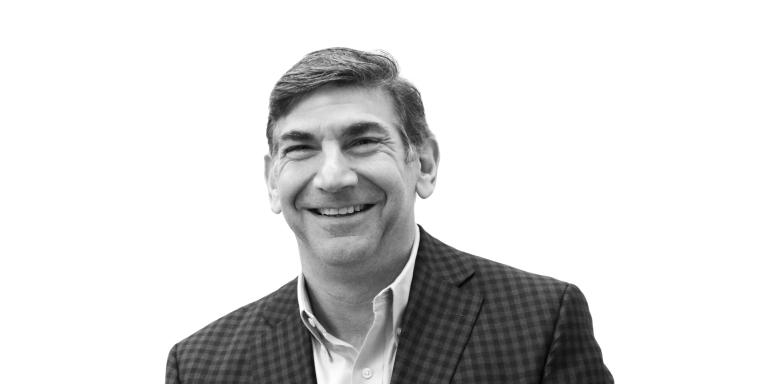 President Michael Cooper named to ACEC College of FellowsWe are thrilled to share that HED's President Michael Cooper has been named to the American Council of Engineering Companies (ACEC) College of Fellows! The College of Fellows is a distinguished class of engineers who have been selected by their peers as deserving recognition for exemplary contributions to the profession. This achievement marks a career of positive impact within the industry and community.
President Michael Cooper named to ACEC College of FellowsWe are thrilled to share that HED's President Michael Cooper has been named to the American Council of Engineering Companies (ACEC) College of Fellows! The College of Fellows is a distinguished class of engineers who have been selected by their peers as deserving recognition for exemplary contributions to the profession. This achievement marks a career of positive impact within the industry and community.
-
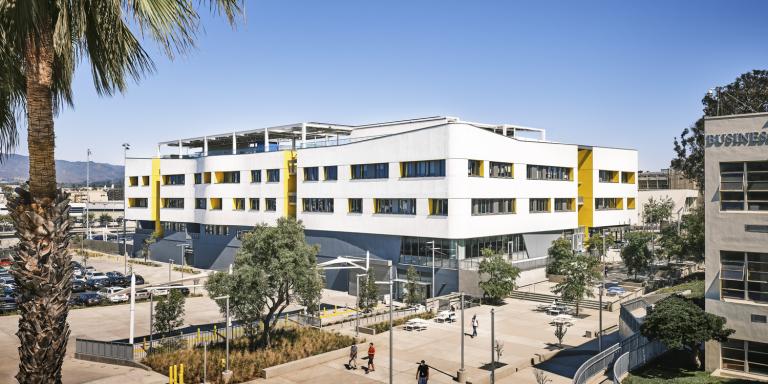 Discovery Building achieves honorable mention at The Chicago Athenaeum: Museum of Architecture and Design International Architecture AwardsA distinguished jury of international designers selected over 150 new buildings from 48 Countries in this Year’s 17th Edition of the 2022 International Architecture Awards. Among them was the Discovery Building, designed by HED and Moore Ruble Yudell Architects & Planners, which was awarded an Honorable Mention in educational design.
Discovery Building achieves honorable mention at The Chicago Athenaeum: Museum of Architecture and Design International Architecture AwardsA distinguished jury of international designers selected over 150 new buildings from 48 Countries in this Year’s 17th Edition of the 2022 International Architecture Awards. Among them was the Discovery Building, designed by HED and Moore Ruble Yudell Architects & Planners, which was awarded an Honorable Mention in educational design.
-
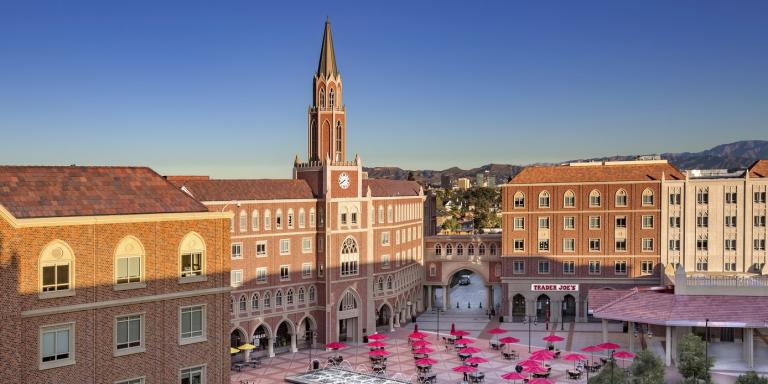 HED ranks #21 in the BD+C Top 110 Architecture/Engineering Firms of 2022We're pleased to share that HED has once again ranked in the top 50 BD+C Top Architecture and Engineering practices of the year - ranking #21 in a list of over 110 top multi-discipline firms!
HED ranks #21 in the BD+C Top 110 Architecture/Engineering Firms of 2022We're pleased to share that HED has once again ranked in the top 50 BD+C Top Architecture and Engineering practices of the year - ranking #21 in a list of over 110 top multi-discipline firms! -
 Discovery Building awarded the A4LE 2022 Planning & Design Awards Juror’s Choice AwardWe're proud to share that the Discovery Building at Santa Monica-Malibu Unified School District (SMMUSD) has won the Juror's Choice Award at the Association for Learning Environments (A4LE) annual Planning & Design Awards!
Discovery Building awarded the A4LE 2022 Planning & Design Awards Juror’s Choice AwardWe're proud to share that the Discovery Building at Santa Monica-Malibu Unified School District (SMMUSD) has won the Juror's Choice Award at the Association for Learning Environments (A4LE) annual Planning & Design Awards!
-
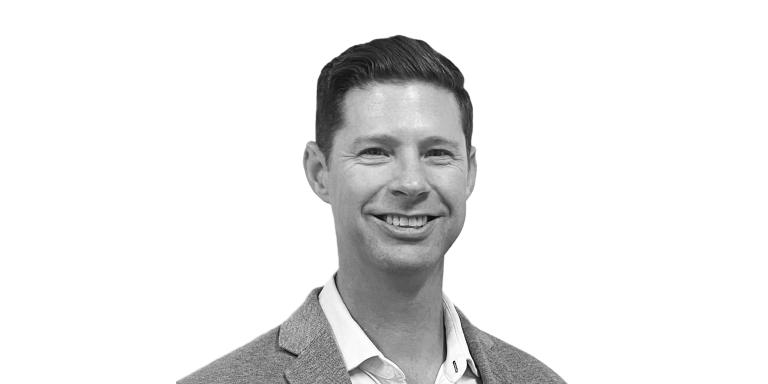 HED welcomes industry veteran Scott Hays as Mission Critical Market Sector Leader in the MidwestHED welcomes Scott Hays, PE, to the firm as Associate Principal, Mission Critical Market Sector Leader in the Chicago office, bringing over twenty years of experience in the delivery of sensitive and highly technical hyperscale and multi-tenant data center developments. In this role, Scott will lead integrated architectural and engineering design teams to develop and execute effective strategies for quality project execution and improved processes, particularly in the data center and mission critical sectors.
HED welcomes industry veteran Scott Hays as Mission Critical Market Sector Leader in the MidwestHED welcomes Scott Hays, PE, to the firm as Associate Principal, Mission Critical Market Sector Leader in the Chicago office, bringing over twenty years of experience in the delivery of sensitive and highly technical hyperscale and multi-tenant data center developments. In this role, Scott will lead integrated architectural and engineering design teams to develop and execute effective strategies for quality project execution and improved processes, particularly in the data center and mission critical sectors.
Prior to joining HED, Scott acted as Senior Project Manager for ESD, where he led over 200MW and 2 million square feet of hyperscale datacenter new build and retrofit design and construction management.
Scott’s industry knowledge and focus on client needs will be integral to HED’s effectiveness toward its mission: Advancing Your World, through the Positive Impact of design, our teams create exceptional solutions for our clients, the community, and the world.
-
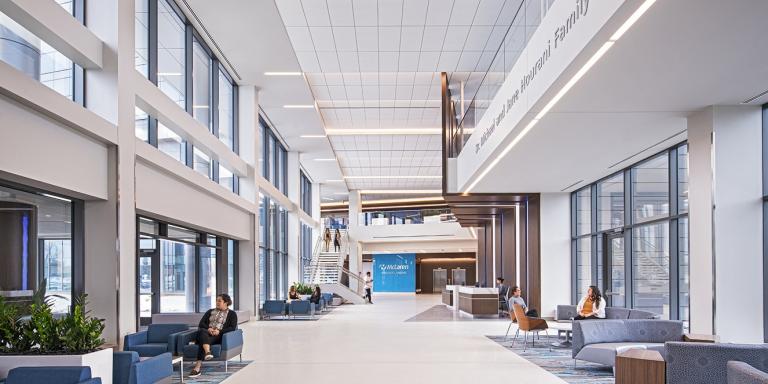 HED recognized as an Interior Design Healthcare GiantWe're proud to share that we have ranked among Interior Design's 2022 Giants in Healthcare. Within HED is a national practice specializing in the design of healthcare environments with specialized expertise in a variety of healthcare settings. Our practice is centered around our goals, strategies, results methodology, which centers the experiences and needs of healthcare providers, and measurably supports them through design solutions to real world care delivery challenges.
HED recognized as an Interior Design Healthcare GiantWe're proud to share that we have ranked among Interior Design's 2022 Giants in Healthcare. Within HED is a national practice specializing in the design of healthcare environments with specialized expertise in a variety of healthcare settings. Our practice is centered around our goals, strategies, results methodology, which centers the experiences and needs of healthcare providers, and measurably supports them through design solutions to real world care delivery challenges.
-
 HED ranks among CSE MEP Design Giants of 2022We're proud to share that our firm has once again been ranked among the Top 100 Consulting-Specifying Engineer MEP Design Giants! From safety to service, structural integrity to sustainability, engineers play a vital role in our integrated process, impacting every aspect of design from concept to construction. It is thanks to the dedication and professional integrity of our engineering teams that we are able to deliver exceptional solutions to our clients, and our continued place in this ranking is one among the many recognitions they have earned.
HED ranks among CSE MEP Design Giants of 2022We're proud to share that our firm has once again been ranked among the Top 100 Consulting-Specifying Engineer MEP Design Giants! From safety to service, structural integrity to sustainability, engineers play a vital role in our integrated process, impacting every aspect of design from concept to construction. It is thanks to the dedication and professional integrity of our engineering teams that we are able to deliver exceptional solutions to our clients, and our continued place in this ranking is one among the many recognitions they have earned.
-
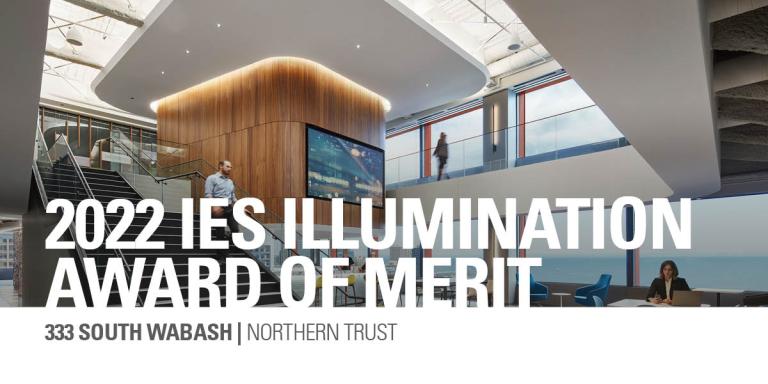 Northern Trust Chicago office project wins IES Illumination AwardCongratulations to our lighting vendor and client Northern Trust Corporation for being recognized as the 2022 recipient of the Illuminating Engineering Society (IES) Illumination Award of Merit for the 333 South Wabash project!
Northern Trust Chicago office project wins IES Illumination AwardCongratulations to our lighting vendor and client Northern Trust Corporation for being recognized as the 2022 recipient of the Illuminating Engineering Society (IES) Illumination Award of Merit for the 333 South Wabash project! -
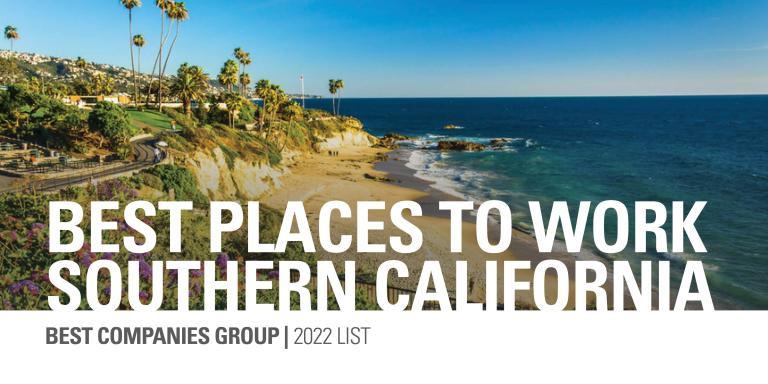 HED listed in SoCal's Best Places to Work!HED is pleased to announced that we have earned the distinction of being ranked one of the Best Places to Work in SoCal by the Best Companies Group!
HED listed in SoCal's Best Places to Work!HED is pleased to announced that we have earned the distinction of being ranked one of the Best Places to Work in SoCal by the Best Companies Group!
Best Companies Group conducts a simple yet thorough company assessment designed to gather detailed information about each workplace . Employers will complete an in-depth questionnaire and employees will have the opportunity to offer their honest feedback by taking part in a company-wide survey. Both portions of the assessment must be complete in order to be considered for the “best” list, and our Los Angeles and San Diego offices have won two years in a row!
-
 HED's LA office named in 2022 Best Places to Work For list by LA Business JournalWe're very excited to share that HED's LA office has been named a Top 100 Best Places To Work For by the Los Angeles Business Journal in 2022!
HED's LA office named in 2022 Best Places to Work For list by LA Business JournalWe're very excited to share that HED's LA office has been named a Top 100 Best Places To Work For by the Los Angeles Business Journal in 2022!
The annual Best Places to Work awards honors the TOP 100 companies in Los Angeles that are setting trends and redefining the employee experience. This list comes from top local employers that participated in a detailed survey conducted by Workforce Research Group. The survey ranks small, medium and large companies on subjects such as leadership, corporate culture, communications and much more. -
 Three HED projects named ENR California Best Projects of 2022We're proud to share that three HED projects have been recognized for excellence among their peers in the Engineering News Record (ENR) California Best Projects of 2022 Awards Program:
Three HED projects named ENR California Best Projects of 2022We're proud to share that three HED projects have been recognized for excellence among their peers in the Engineering News Record (ENR) California Best Projects of 2022 Awards Program:
-
 HED named a 2022 National Best & Brightest Company to Work ForWe're proud to share that our firm has once again ranked among the winners of the Best & Brightest Firms to Work For National award!
HED named a 2022 National Best & Brightest Company to Work ForWe're proud to share that our firm has once again ranked among the winners of the Best & Brightest Firms to Work For National award!
The Best and Brightest Companies to Work For competition identifies and honors organizations that display a commitment to excellence in employee enrichment. Organizations are assessed based on categories such as communication, work-life balance, employee education, diversity, recognition, retention and more.
Every one of our people is an important part of how and why HED is one of the most dynamic and creative firms in the industry. It is because of our people that we enjoy a reputation as one of the best companies in the country to work for, and we accredit our ability to attract this talent to our strong culture built around Our Mission: Advancing Your World for our clients and communities.
-
 Three HED projects awarded the Construction Management Association of America (CMAA) Southern California Chapter Project Achievement AwardsWe're very proud to share that 3 HED projects - SMMUSD's SAMOHI Discovery building, the California Dept of General services's California Air Resources Board (CARB), and CSULA's South Village housing - have all won Construction Management Association of America (CMAA) Southern California Chapter Project Achievement Awards!
Three HED projects awarded the Construction Management Association of America (CMAA) Southern California Chapter Project Achievement AwardsWe're very proud to share that 3 HED projects - SMMUSD's SAMOHI Discovery building, the California Dept of General services's California Air Resources Board (CARB), and CSULA's South Village housing - have all won Construction Management Association of America (CMAA) Southern California Chapter Project Achievement Awards!
Each year, America’s leading professional construction and program managers deliver creative and innovative projects around the world. Regardless of size or complexity, successful projects represent lessons learned in our industry and successes of collaboration between design and construction disciplines!
-
 HED ranks in the ENR Top Firms in 3 Sourcebook CategoriesEach year Engineering News Record publishes a number of Sourcebooks throughout the year that offer detailed rankings of the largest architectural / engineering and construction firms in almost 50 separate market sectors such as environmental services and specialty contracting, as well as analysis of issues and trends affecting work in those areas. We're proud to share that this year HED has ranked among the top professional services firms in three national listings: Education (#23), Automotive (#9), and Telecommunications (#44)!
HED ranks in the ENR Top Firms in 3 Sourcebook CategoriesEach year Engineering News Record publishes a number of Sourcebooks throughout the year that offer detailed rankings of the largest architectural / engineering and construction firms in almost 50 separate market sectors such as environmental services and specialty contracting, as well as analysis of issues and trends affecting work in those areas. We're proud to share that this year HED has ranked among the top professional services firms in three national listings: Education (#23), Automotive (#9), and Telecommunications (#44)!
We attribute this successful body of work to our long standing relationships with our clients, design partners, and communities across the nation, without whom we could not create fulfill our mission of creating positive impact through design.
-
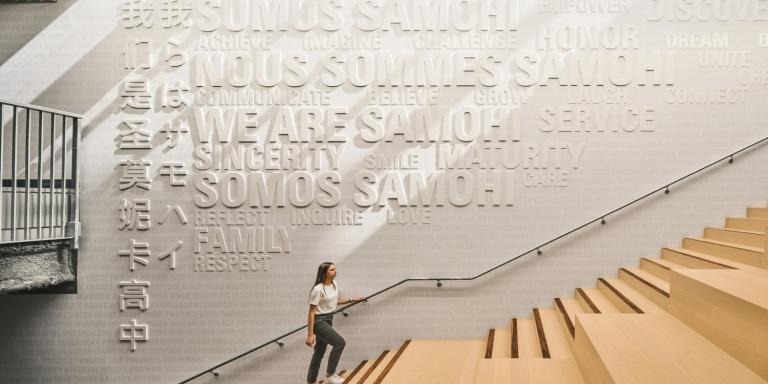 Discovery Building shortlisted among elite international nominees for the World Architectural Festival Awards in School DesignThe Santa Monica High School Discovery Building in Santa Monica, CA, has been shortlisted as one of only two North American schools out of a list of 17 International nominees for the World Architectural Festival (WAF) Awards in the Schools category!
Discovery Building shortlisted among elite international nominees for the World Architectural Festival Awards in School DesignThe Santa Monica High School Discovery Building in Santa Monica, CA, has been shortlisted as one of only two North American schools out of a list of 17 International nominees for the World Architectural Festival (WAF) Awards in the Schools category!
WAF is where the world’s architecture community meets to share expertise and learn from each other. It is the only global architecture festival that combines awards, seminars and networking.
-
Fifth Avenue wins the Illinois Real Estate Journal Project Award in Affordable Housing!We’re very proud to share that the Fifth Avenue Apartments in Maywood, IL has won the Illinois Real Estate Journal Project Award in Affordable Housing!
The annual Illinois Real Estate Journal Project Awards celebrate the achievements, successes and highlights from all sectors of the commercial real estate industry across the state. Fifth Avenue ranks among them for its ambitious sustainable design program, efficient design, and build quality thanks to the vision of our client Interfaith Housing Development Corp. and our build partner McShane Construction Company.
-
 Key Takeaways from CREW San Diego: Capturing growth in life sciences real estate marketA new era is emerging in life sciences. Breakthroughs in genomic science are propelling further research and development, which are, in turn, driving science and technology real estate demand.
Key Takeaways from CREW San Diego: Capturing growth in life sciences real estate marketA new era is emerging in life sciences. Breakthroughs in genomic science are propelling further research and development, which are, in turn, driving science and technology real estate demand.
These users demand a lot from their workspaces. Speakers at a recent CREW San Diego luncheon shared information about how the commercial real estate market can understand and meet those demands. HED's Tracy Morran captured the key takeaways.
Headlining the event were Susie Harborth, executive vice president of business operations for Breakthrough Properties; engineer Nicholas Spath, project manager with Glumac; and architect Matt Brady, a principal with HED.
Takeaway 1:
San Diego is one of the top three markets in the U.S. for life sciences, and Harborth expects it to stay that way. "The fundamentals are very strong, and we're just beginning," she said. "We're in the second inning of the game."
In addition to an already robust industry, San Diego is attracting and growing new industries within life sciences, including agri-technology, said Brady. "This sector of the industry was mostly in North Carolina, but we have a lot of talent that's attracting it," he said.
Takeaway 2:
Even if economic markets soften and some people get out of life science real estate, Harborth said the fundamentals are still there and will continue to attract investors.
"The science is revolutionary," she said. "We're curing cancer. This science will always be funded. It's a very nascent industry, and that will translate into more demand for space."
With recent supply chain difficulties, San Diego may also benefit from pharmaceutical manufacturing that's getting re-shored and from a growing biotechnology products R&D market.
Whether it's a conversion or a new build, the CREW audience was eager to hear from the panel about what these life science users look for when leasing space.
-
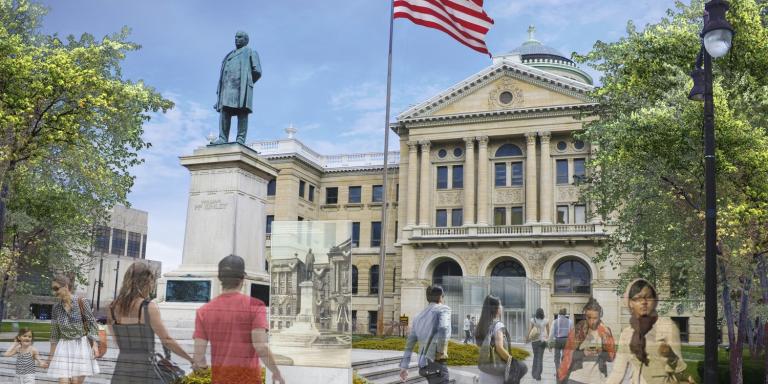 HED climbs up another ranking in the annual BD+C Top Reconstruction Sector Architecture and AE Firms in 2021We're excited to share that HED has ranked #17 in the Building Design and Construction Top Reconstruction Sector Architecture and AE Firms in 2021! This marks another year of continued growth in the Top 20.
HED climbs up another ranking in the annual BD+C Top Reconstruction Sector Architecture and AE Firms in 2021We're excited to share that HED has ranked #17 in the Building Design and Construction Top Reconstruction Sector Architecture and AE Firms in 2021! This marks another year of continued growth in the Top 20.
-
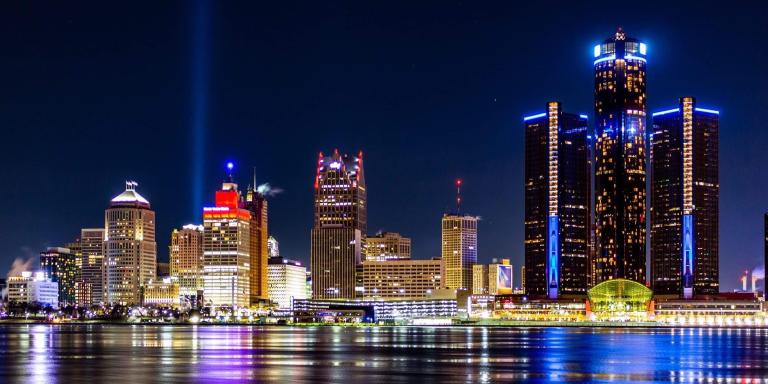 HED ranked among the Crain's Detroit Top 200 Private Firms in 2022HED has held a place on the Crain's Detroit Business Private 200 for over a decade, and 2022 is no different!
HED ranked among the Crain's Detroit Top 200 Private Firms in 2022HED has held a place on the Crain's Detroit Business Private 200 for over a decade, and 2022 is no different!
Being a consistent member of the Private 200 is emblematic of HED's history as a Detroit institution -- serving our clients and community proudly for all of our 100+ years!
-
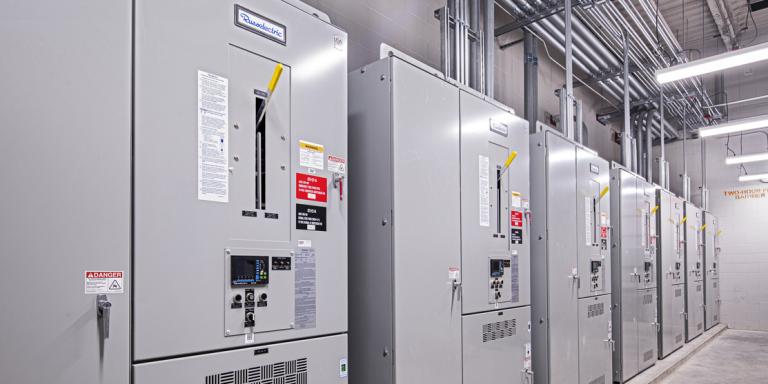 HED ranks in the Top 40 Electrical Design Firms by Electrical Construction & Maintenance magazineHED is proud to share that we have once again been named to Electrical Construction & Maintenance magazine's annual list of Top Electrical Design firms!
HED ranks in the Top 40 Electrical Design Firms by Electrical Construction & Maintenance magazineHED is proud to share that we have once again been named to Electrical Construction & Maintenance magazine's annual list of Top Electrical Design firms!
-
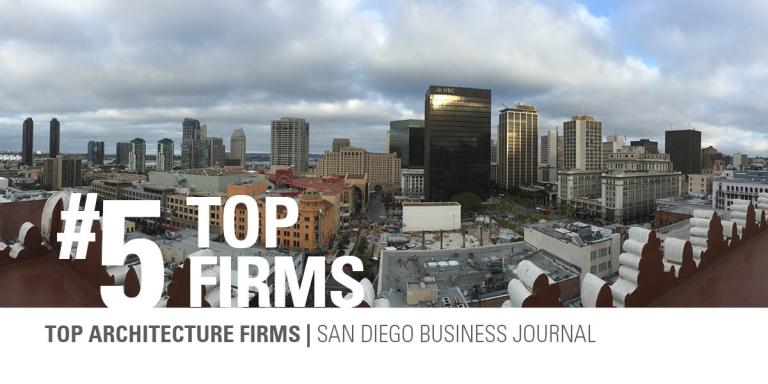 San Diego Business Journal Ranks HED #5!HED's award-winning presence in the local area has won the San Diego office into the local San Diego Business Journal Top Ten Architecture firms list at #5! HED has been a member of the AEC community in San Diego since the early 2000's, with growing commercial, education, and life science design sectors, creating a positive impact within the community.
San Diego Business Journal Ranks HED #5!HED's award-winning presence in the local area has won the San Diego office into the local San Diego Business Journal Top Ten Architecture firms list at #5! HED has been a member of the AEC community in San Diego since the early 2000's, with growing commercial, education, and life science design sectors, creating a positive impact within the community.
-
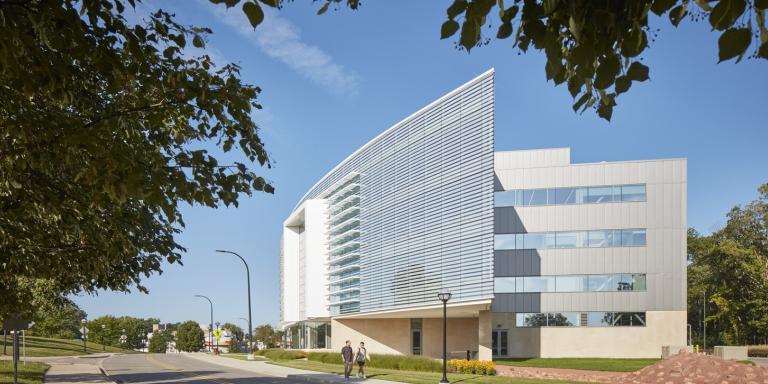 HED ranks in the Top 50 of the Architectural Record Top 300 Architectural Firms of 2022We're pleased to share that HED has been named among Architectural Records Top 300 Architectural Firms yet again, climbing several dozen ranks to secure a place in the Top 50!
HED ranks in the Top 50 of the Architectural Record Top 300 Architectural Firms of 2022We're pleased to share that HED has been named among Architectural Records Top 300 Architectural Firms yet again, climbing several dozen ranks to secure a place in the Top 50!
-
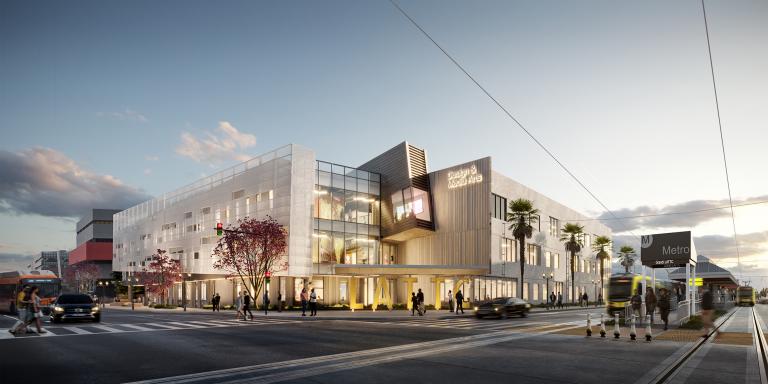 DMAC Receives Award of Merit at this year's Gold Nugget Award Ceremony!Our work on the Design and Media Arts Center, at Los Angeles Trade Technical College, was honored with an Award of Merit in the Best Educational Project category at this years PCBC 59th annual Gold Nugget Awards, the oldest and most prestigious design awards in the nation.
DMAC Receives Award of Merit at this year's Gold Nugget Award Ceremony!Our work on the Design and Media Arts Center, at Los Angeles Trade Technical College, was honored with an Award of Merit in the Best Educational Project category at this years PCBC 59th annual Gold Nugget Awards, the oldest and most prestigious design awards in the nation.
As demand for communications and design-related programs has grown, and the technology to support such instruction has evolved, it became clear to Los Angeles Trade Technical College (LATTC) that a new, consolidated space for enhancing and showcasing these in-demand programs was necessary. Having worked successfully with HED on its award-winning Mariposa Hall, it was a natural decision for LATTC to turn to HED to design the new Design and Media Arts Center (DMAC).
-
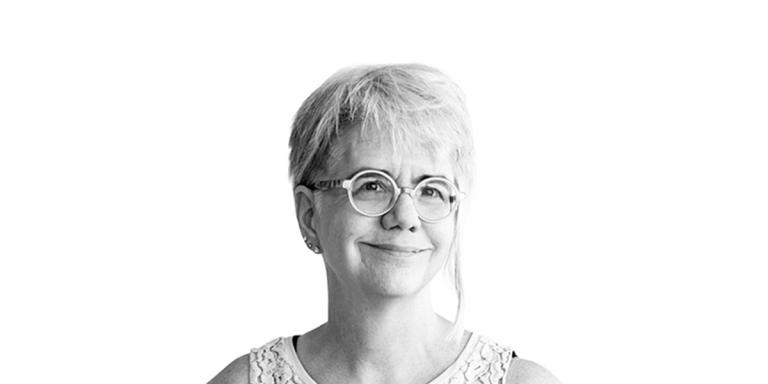 Sector Leader Susan King is a finalist for Illinois Real Estate Journal Architect of the Year AwardHED is proud to share that Housing Sector Leader Susan King, FAIA, LEED AP BD+C, LFA has been selected as a finalist for the Architect of the Year by the Illinois Real Estate Journal (RE Journal)!
Sector Leader Susan King is a finalist for Illinois Real Estate Journal Architect of the Year AwardHED is proud to share that Housing Sector Leader Susan King, FAIA, LEED AP BD+C, LFA has been selected as a finalist for the Architect of the Year by the Illinois Real Estate Journal (RE Journal)!
The RE Journal Commercial Real Estate Awards celebrate the achievements, successes and highlights from all sectors of the commercial real estate industry and showcases projects and individuals making exceptional contributions to their communities and the AEC industry.
-
 Discovery Building receives a 2022 Westside Prize & Design Award!The Discovery Building at Santa Monica High School has been awarded a 2022 Westside Prize & Design Award!
Discovery Building receives a 2022 Westside Prize & Design Award!The Discovery Building at Santa Monica High School has been awarded a 2022 Westside Prize & Design Award!
HED, in collaboration with Moore Ruble Yudell Architects & Planners, designed a dramatic new academic complex that transforms Santa Monica High School’s (SAMOHI’s) North Campus. Benefitting both school and the surrounding community, the complex elevates educational, cultural and recreational pursuits; improves campus access and circulation; and supports whole child development and diverse learning styles.
From arts and athletic facilities to larger, light-filled classrooms, enhanced support spaces to reorganized outdoor spaces, the five-story, 280,000 square foot complex fosters social interactions and strengthens the sense of community on SAMOHI’s campus.
-
 Four HED leaders honored by SDBJ as Women of Influence in Architecture and DesignCongratulations to the San Diego Business Journal's 2022 Women of influence in Architecture and Design honorees! Special recognition to HED's own Melina Aluwi, Jennette La Quire, Heather Foley, and Tracey Moran for their contributions and commitment to the industry.
Four HED leaders honored by SDBJ as Women of Influence in Architecture and DesignCongratulations to the San Diego Business Journal's 2022 Women of influence in Architecture and Design honorees! Special recognition to HED's own Melina Aluwi, Jennette La Quire, Heather Foley, and Tracey Moran for their contributions and commitment to the industry. -
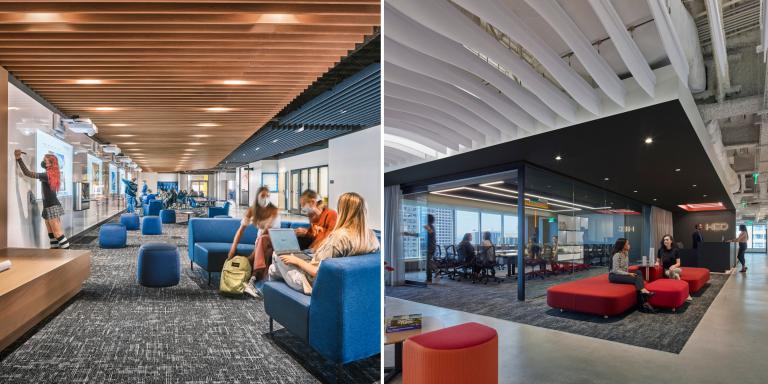 Two HED projects nominated in the 2022 IIDA SOCAL Calibre Design AwardsWe're very pleased to share that HED has two projects nominated for the 2022 International Interior Design Association (IIDA) SoCAL Chapter Calibre Design Awards!
Two HED projects nominated in the 2022 IIDA SOCAL Calibre Design AwardsWe're very pleased to share that HED has two projects nominated for the 2022 International Interior Design Association (IIDA) SoCAL Chapter Calibre Design Awards!
The Calibre Awards recognize design excellence in commercial interior design in Southern California, and celebrate the teamwork required to deliver outstanding design. Nominees include HED's own downtown Los Angeles office and the Discovery Building at Santa Monica High School! -
 South Village CSULA receives 2022 CMAA award!We are very pleased to share that the Cal State LA South Village project was recently awarded a Project Achievement Award by the Construction Management Association of America! The CMAA SoCal Project Achievement Award highlights the best of the best, those projects that serve as an example to the industry, and are true pinnacles of excellence and innovation.
South Village CSULA receives 2022 CMAA award!We are very pleased to share that the Cal State LA South Village project was recently awarded a Project Achievement Award by the Construction Management Association of America! The CMAA SoCal Project Achievement Award highlights the best of the best, those projects that serve as an example to the industry, and are true pinnacles of excellence and innovation.
-
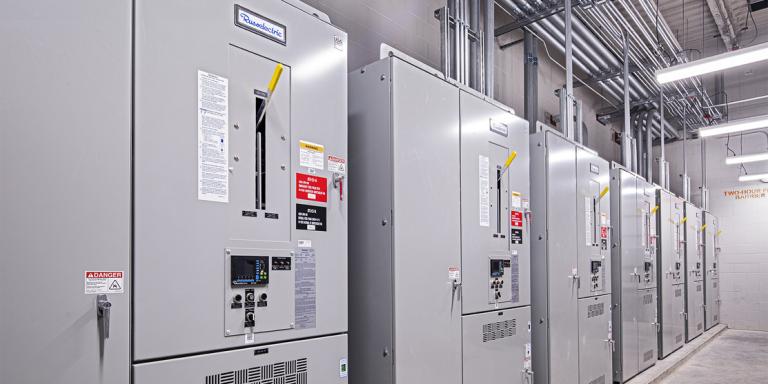 HED named a 2022 Top Midwest Design Firm by Engineering News-RecordWe're pleased to share that we have been named a Midwest Top Engineering Design Frim by Engineering News-Record in their annual Giants rankings!
HED named a 2022 Top Midwest Design Firm by Engineering News-RecordWe're pleased to share that we have been named a Midwest Top Engineering Design Frim by Engineering News-Record in their annual Giants rankings!
From safety to service, structural integrity to sustainability, engineers play a vital role in our integrated process, impacting every aspect of design from concept to construction. This acknowledgment from ENR is reflective of the dedication and expertise of our engineering teams, whose dedication to client service and integrated solutions is invaluable to the positive impact we provide. -
 HED named a Top 20 Architecture Firm by Los Angeles Business JournalWe're proud to share that we have been named a Top 20 Architecture Firm in the Los Angeles Business Journal annual book of lists!
HED named a Top 20 Architecture Firm by Los Angeles Business JournalWe're proud to share that we have been named a Top 20 Architecture Firm in the Los Angeles Business Journal annual book of lists!
Our position on this list is the direct result of the trust placed in us by our clients and the hard work of our project teams and their commitment to putting the needs or our clients and communities first. A sincere thank you to the clients, design partners, vendors and consultants who have helped us grow and continue to be an integral part of how we create positive impact through design. -
 ULI Features HED's work at Santa Monica-Malibu Unified School District in Case Study & Site Tour: Future Proofing BuildingsJoin HED and ULI-LA as we tour the recently completed Discovery Building on the Santa Monica H.S. Campus, a prime example of an adaptable and resilient building that embodies the principals of Open Building particularly well. The Open Building design allows the Discovery Building to easily change and adapt as the needs of the users and community around it evolves due to social, technological or other change.
ULI Features HED's work at Santa Monica-Malibu Unified School District in Case Study & Site Tour: Future Proofing BuildingsJoin HED and ULI-LA as we tour the recently completed Discovery Building on the Santa Monica H.S. Campus, a prime example of an adaptable and resilient building that embodies the principals of Open Building particularly well. The Open Building design allows the Discovery Building to easily change and adapt as the needs of the users and community around it evolves due to social, technological or other change.
-
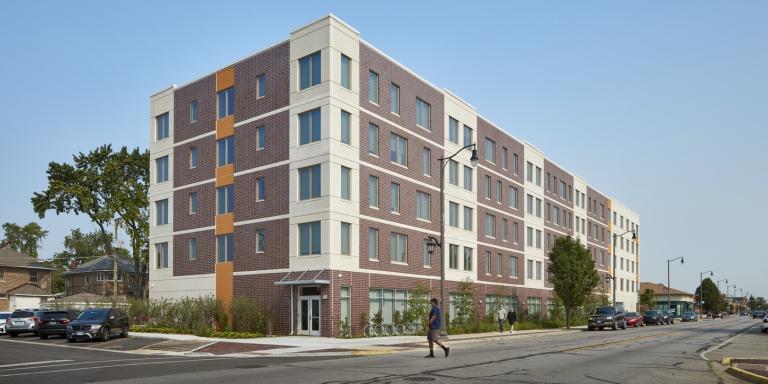 Fifth Avenue awarded the Chicago Building Congress Merit AwardWe're very proud to share that the Fifth Avenue Apartments have been awarded a Chicago Building Congress (CBC) Merit Award in the Residential/Hospitality category. The CBC Merit Awards have celebrated the building industry since 1956 by singling out the outstanding projects in greater Chicagoland built in recent years. Merit Awards are presented for construction in nine categories and are judged on the quality of their distinctive, functional or innovative designs, quality of construction, the impact of the project on the community, and the project's safety record.
Fifth Avenue awarded the Chicago Building Congress Merit AwardWe're very proud to share that the Fifth Avenue Apartments have been awarded a Chicago Building Congress (CBC) Merit Award in the Residential/Hospitality category. The CBC Merit Awards have celebrated the building industry since 1956 by singling out the outstanding projects in greater Chicagoland built in recent years. Merit Awards are presented for construction in nine categories and are judged on the quality of their distinctive, functional or innovative designs, quality of construction, the impact of the project on the community, and the project's safety record.
Interfaith Housing Development Corporation overcame years of resistance to affordable housing in Maywood, IL, a historically underserved neighborhood outside Chicago to develop the Fifth Avenue Apartments. The building was designed by HED specifically to meet the needs of lower income working families and individuals, including homeless veterans, while meeting aggressive goals for sustainability and wellness.
-
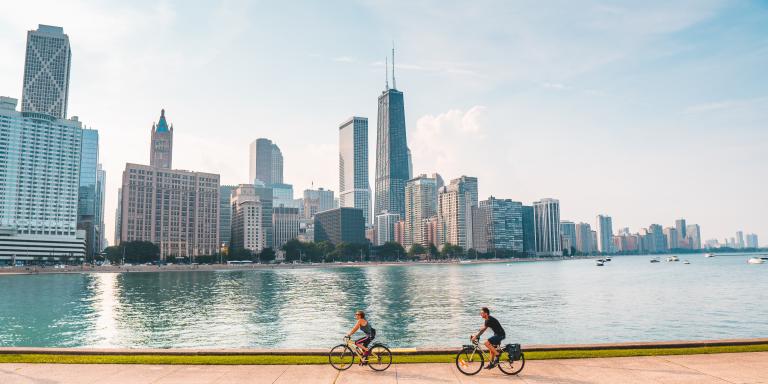 HED named a Chicago Best & Brightest Firm to Work For in 2022We're very proud to share that we have once again been named a Best & Brightest Company to Work For in Chicago! This is the Chicago office's 18th consecutive win of this title!
HED named a Chicago Best & Brightest Firm to Work For in 2022We're very proud to share that we have once again been named a Best & Brightest Company to Work For in Chicago! This is the Chicago office's 18th consecutive win of this title!
The Best and Brightest Companies to Work For® competition identifies and honors organizations that display a commitment to excellence in their human resource practices and employee enrichment. Organizations are assessed based on categories such as communication, work-life balance, employee education, diversity, recognition, retention and more. Across the country in the metro areas where we work, HED continues to be ranked among this cohort of companies dedicated to creating a company culture worth working for -- this is in no small part because of our dedicated teams who carry our culture forward. Thank you to everyone who made this award possible! -
 HED welcomes Mary Ruppenthal as Associate Principal, Sector Leader in SacramentoHED is pleased to welcome Mary Ruppenthal, AIA, LEED AP, DBIA, to the firm as Associate Principal, Sector Leader in the Sacramento office. Mary will focus on Pre K-12 and community education projects and will be supported by HED's extensive technical team of architects, engineers and designers.
HED welcomes Mary Ruppenthal as Associate Principal, Sector Leader in SacramentoHED is pleased to welcome Mary Ruppenthal, AIA, LEED AP, DBIA, to the firm as Associate Principal, Sector Leader in the Sacramento office. Mary will focus on Pre K-12 and community education projects and will be supported by HED's extensive technical team of architects, engineers and designers.
-
 HED Ranked in ENR Top 500 Design Firms of 2022HED is proud to be listed once again in the Engineer News Record Top 500 Design Firms ranking.
HED Ranked in ENR Top 500 Design Firms of 2022HED is proud to be listed once again in the Engineer News Record Top 500 Design Firms ranking.
From safety to service, structural integrity to sustainability, engineers play a vital role in our integrated process, impacting every aspect of design from concept to construction. They’re the ones who keep it standing. Keep it safe. Make it shine. Save time. Energy. Money. And lives.
HED ranks 203 out of 500 in 2022.
-
 HED welcomes Barbara Crittenden to the firm as Associate, Business Development Manager in the Dallas officeHED is pleased to welcome Barbara Crittenden to the firm as Associate, Business Development Manager in the Dallas office, bringing expertise in strategy and business development to the HED team!
HED welcomes Barbara Crittenden to the firm as Associate, Business Development Manager in the Dallas officeHED is pleased to welcome Barbara Crittenden to the firm as Associate, Business Development Manager in the Dallas office, bringing expertise in strategy and business development to the HED team!
In this role, Barbara will collaborate with leadership and national and local design teams to develop and execute effective strategies for solving client challenges in a variety of markets across Dallas-Fort Worth and Texas. Her industry network, knowledge of market trends, and focus on client needs will complement the seasoned team she is joining at HED.
Prior to joining HED, Barbara served as Director of Business Development for Leo A Daly in Dallas, where she was responsible for establishing and nurturing client relationships and strategic partnership.
Barbara’s passion for client service will be integral to HED’s effectiveness toward its mission: Advancing Your World, through the Positive Impact of design, our teams create responsive, innovative, and sustainable design solutions for our clients, the community, and the world.
-
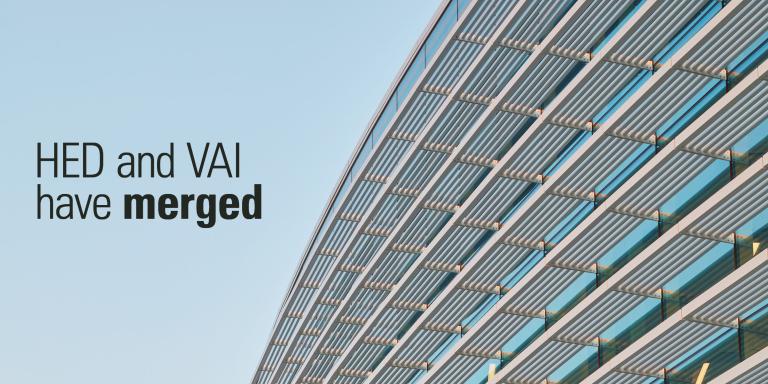 HED announces merger with Dallas-based VAI ArchitectsHED is proud to announce that we have merged with award-winning, Dallas-based VAI Architects Incorporated (VAI). This merger combines VAI’s staff with HED’s Dallas office, significantly expanding the local team and leveraging community relationships to create new opportunities across multiple market sectors.
HED announces merger with Dallas-based VAI ArchitectsHED is proud to announce that we have merged with award-winning, Dallas-based VAI Architects Incorporated (VAI). This merger combines VAI’s staff with HED’s Dallas office, significantly expanding the local team and leveraging community relationships to create new opportunities across multiple market sectors.
With over 35 years of experience in the greater Dallas-Ft. Worth area, the VAI team has established trust among clients in the community, civic, government, transportation and education sectors by consistently delivering excellence through collaborative design innovation and dedication to client service. HED is proud to continue that tradition of excellence and build upon its market sector expertise with the recently combined Dallas staff.
“Our strategic merger with VAI is a great fit because of our shared commitment to create positive impact for clients and the greater community while providing growth opportunities for our talented staff,” said Peter Devereaux, FAIA, Chairman and CEO of HED. “We are pleased to welcome the VAI team into the HED family and look forward to using our combined strength to explore new opportunities and fulfill our common commitment to ensuring long-term success for our clients.”
To continue to provide the highest level of design excellence and positive impact, HED plans to further expand our Dallas operation with the hiring of additional staff.
HED is known for its aspirational company culture, which emphasizes continual learning and growth. As an award-winning inclusive and integrated practice, HED values diversity in perspectives, experiences, abilities and expertise, and we believe this reputation and culture fits neatly with VAI's values. Our local Dallas office was recently named a Best and Brightest Companies to Work For® for its commitment to excellence in human resources practices and employee enrichment.
“VAI has always been dedicated to client service and committed to the Dallas community, and since our founding, we’ve emphasized learning and collaboration in our company culture — values we share with HED,” said VAI Co-Founder William Vidaud de la Vega. “Those shared values and commitments are strengthened by joining forces through the merger, and we look forward to working as part of the HED team to continue creating positive impact for clients in Dallas and the surrounding area.” -
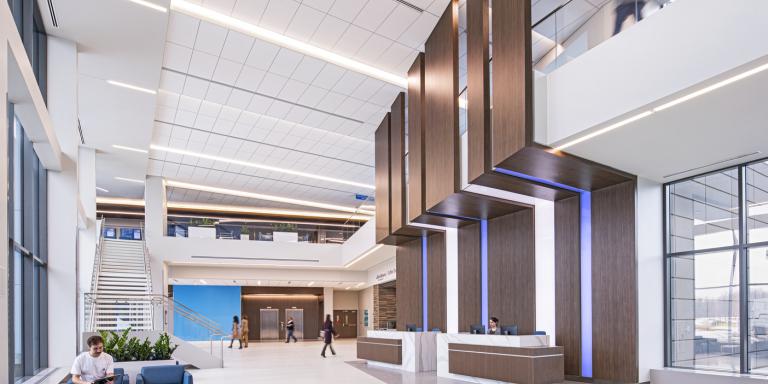 HED and Gresham Smith Celebrate Completion of McLaren Greater Lansing Replacement HospitalHED and Gresham Smith are excited to announce that construction is complete on McLaren Greater Lansing, the first facility on McLaren Health Care’s new campus in Lansing, Michigan. Designed in partnership, the nine-story, 517,000-square-foot replacement hospital represents the largest one-time investment in McLaren Health Care history, replacing two existing hospital facilities with one state-of-the-art facility that advances patient care, comfort and convenience.
HED and Gresham Smith Celebrate Completion of McLaren Greater Lansing Replacement HospitalHED and Gresham Smith are excited to announce that construction is complete on McLaren Greater Lansing, the first facility on McLaren Health Care’s new campus in Lansing, Michigan. Designed in partnership, the nine-story, 517,000-square-foot replacement hospital represents the largest one-time investment in McLaren Health Care history, replacing two existing hospital facilities with one state-of-the-art facility that advances patient care, comfort and convenience.
Designed to meet the needs of residents in Michigan’s capital city, and adjacent to Michigan State University, the new facility includes a Level III Trauma Center/Emergency Department, Orthopedic and Sports Medicine Institute, comprehensive cardiac programs, interventional platform with 20 operating rooms and medical/surgical unit. Intuitive wayfinding, as well as smart planning, help to clearly guide patients, visitors and others to the multitude of services offered.
“From our progressive approach of creating positive user experiences with access to natural light, inspiring environments, and intuitive wayfinding to creating state-of-the-art hybrid operating rooms, this greenfield hospital with set a new standard of highly advanced care in Michigan’s capital city,” said Healthcare Vice President Steve Stokes, AIA, CLGB, NCARB. “The Gresham Smith Team is proud of the collaborative work accomplished with our partners at McLaren Health Care.”
With a focus on human experience and patient safety, the hospital’s 240 private patient rooms feature personal temperature controls, expanded in-room entertainment options and large windows with views of the outdoors. A public cafeteria and community hub offers convenience for family members, staff and visitors, while a training center, simulation labs that support medical education, an expanded lounge and sleep rooms, elevate the staff experience. The design team enhanced operational efficiencies by limiting the travel distance between the emergency department and imaging services. McLaren Greater Lansing was designed and planned to have the ability to change course to respond to future situations that may occur with an adaptable and flexible platform of care.
-
 Belmont Beach Aquatic Center awarded the Coolest Project Design in the Revizto Collaborators of the Year Awardswe're very pleased to share that the Belmont Beach Aquatic Center in Long Beach, CA was recently awarded the Coolest Project Design in the Revizto 2021 Collaborators of the Year Awards!
Belmont Beach Aquatic Center awarded the Coolest Project Design in the Revizto Collaborators of the Year Awardswe're very pleased to share that the Belmont Beach Aquatic Center in Long Beach, CA was recently awarded the Coolest Project Design in the Revizto 2021 Collaborators of the Year Awards!
-
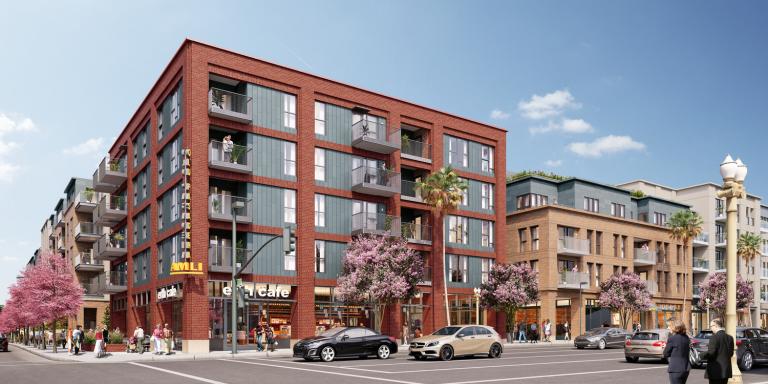 AMLI/10 W. Walnut named Winner of the Silver Award in the Los Angeles Business Journal Commercial Real Estate Awards Mixed-Use / Retail CategoryHED is proud to share that the AMLI / 10 West Walnut mixed-use development project has been named the winner of the 2022 Silver Award in the Los Angeles Business Journal (LABJ) Commercial Real Estate Awards Mixed-Use / Retail Category. Each year LABJ gathers the commercial retail community to nominate and celebrate projects that are creating substantial positive impact for greater Los Angeles.
AMLI/10 W. Walnut named Winner of the Silver Award in the Los Angeles Business Journal Commercial Real Estate Awards Mixed-Use / Retail CategoryHED is proud to share that the AMLI / 10 West Walnut mixed-use development project has been named the winner of the 2022 Silver Award in the Los Angeles Business Journal (LABJ) Commercial Real Estate Awards Mixed-Use / Retail Category. Each year LABJ gathers the commercial retail community to nominate and celebrate projects that are creating substantial positive impact for greater Los Angeles. -
 HED elevates Brad Pepperrell to the role of Specification LeaderHED is pleased to announce that Brad Pepperrell has been elevated to the role of Specifications Leader. In this role Brad will lead the spec liaison group to advance HED's specification content development, training, and continuous process improvement in specification development, as well as establishing, developing and maintaining HED's BSD SpecLink Master Specifications, Project Manuals, and processes for both architecture and engineering.
HED elevates Brad Pepperrell to the role of Specification LeaderHED is pleased to announce that Brad Pepperrell has been elevated to the role of Specifications Leader. In this role Brad will lead the spec liaison group to advance HED's specification content development, training, and continuous process improvement in specification development, as well as establishing, developing and maintaining HED's BSD SpecLink Master Specifications, Project Manuals, and processes for both architecture and engineering. -
 Pre K-12 Sector Leader Jennette La Quire appointed to the role of National Market Sector LeaderHED is pleased to announce that San Diego Pre K-12 Sector Leader Jennette La Quire has been appointed to the role of National Pre K-12 Market Sector Leader.
Pre K-12 Sector Leader Jennette La Quire appointed to the role of National Market Sector LeaderHED is pleased to announce that San Diego Pre K-12 Sector Leader Jennette La Quire has been appointed to the role of National Pre K-12 Market Sector Leader. -
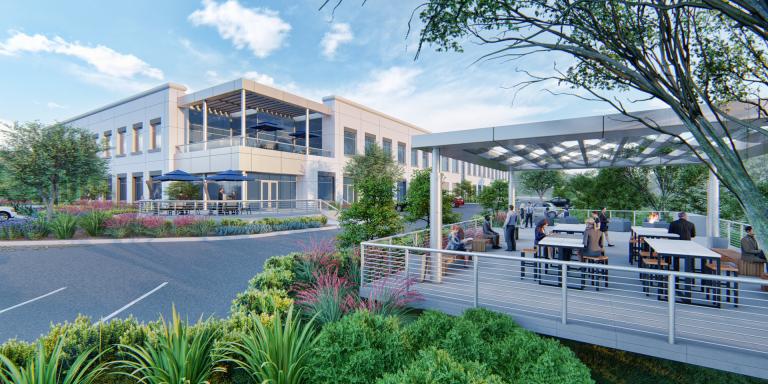 Scripps Ranch celebrated as one of San Diego's Largest Construction Projects of 2022 by the San Diego Business JournalWe're excited to share that the San Diego Business Journal has featured the Scripps Ranch Technology Park in its list of the Largest Construction Projects in San Diego in 2022!
Scripps Ranch celebrated as one of San Diego's Largest Construction Projects of 2022 by the San Diego Business JournalWe're excited to share that the San Diego Business Journal has featured the Scripps Ranch Technology Park in its list of the Largest Construction Projects in San Diego in 2022!
As a result of many successful collaborations with Murphy Development Company (MDC), HED was selected to design the new 165,806 SF, 2-story research and development facility in their 31-acre build-to-suit office, R&D and tech development, Scripps Ranch Technology Park (SRTP). -
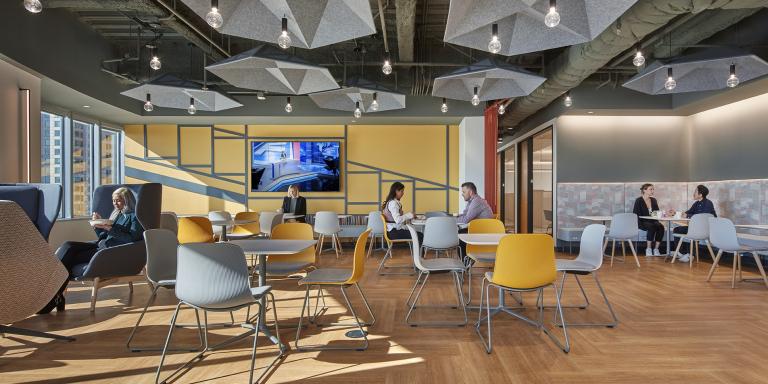 HED ranks in Interior Design Giants Top 100 Firms of 2022HED is very pleased to share that we have once again ranked with the Interior Design Top 100 Giants - a list of the 100 most prominent firms in interior design. We're proud of this standing, which reflects a large body of work and experience in interior design, and thank our clients and design partners, with whom we continue to approach each project without preconceptions.
HED ranks in Interior Design Giants Top 100 Firms of 2022HED is very pleased to share that we have once again ranked with the Interior Design Top 100 Giants - a list of the 100 most prominent firms in interior design. We're proud of this standing, which reflects a large body of work and experience in interior design, and thank our clients and design partners, with whom we continue to approach each project without preconceptions. -
 HED named a Dallas Best & Brightest Firm to Work ForWe're very proud to share that we have once again been named a Best & Brightest Company to Work For in Dallas!
HED named a Dallas Best & Brightest Firm to Work ForWe're very proud to share that we have once again been named a Best & Brightest Company to Work For in Dallas!
The Best and Brightest Companies to Work For® competition identifies and honors organizations that display a commitment to excellence in their human resource practices and employee enrichment. Organizations are assessed based on categories such as communication, work-life balance, employee education, diversity, recognition, retention and more. Across the country in the metro areas where we work HED continues to be ranked among this cohort of companies dedicated to creating a company culture worth working for.
-
 Two HED projects nominated in Los Angeles Business Journal Commercial Real Estate AwardsHED is very pleased to share that the 19510 Ventura Medical Office Renovation and AMLI mixed-use development projects have both been nominated for the Los Angeles Business Journal Commercial Real Estate Awards!
Two HED projects nominated in Los Angeles Business Journal Commercial Real Estate AwardsHED is very pleased to share that the 19510 Ventura Medical Office Renovation and AMLI mixed-use development projects have both been nominated for the Los Angeles Business Journal Commercial Real Estate Awards!
The 27th annual Commercial Real Estate Awards program recognizes and honors 2022's projects and developments that have enhanced Los Angeles.
The AMLI project is a 4.1-acre site—part of a larger 22.7-acre site—will be transformed into a 529,139 square foot mixed-use development comprising retail space, office space, restaurants and apartments. The 19510 Ventura renovation updated an existing 1982, two-story 40,000 square foot office building on Los Angeles’ notable Ventura Boulevard.
-
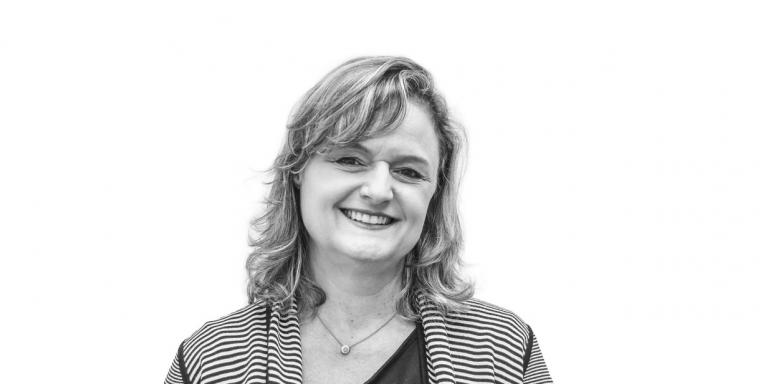 Corporate Systems Leader Tania Van Herle named to AIA College of FellowsWe are thrilled to share that HED's Corporate Systems Leader Tania Van Herle has been named to the AIA College of Fellows! One of the highest honors that AIA awards, Fellowship celebrates practitioners with at least ten years of Architect membership, who have made significant contributions to the profession and to society, who exemplify architectural excellence, and whose work has had a profound influence or ripple effect. This achievement marks a career of positive impact within the industry and community.
Corporate Systems Leader Tania Van Herle named to AIA College of FellowsWe are thrilled to share that HED's Corporate Systems Leader Tania Van Herle has been named to the AIA College of Fellows! One of the highest honors that AIA awards, Fellowship celebrates practitioners with at least ten years of Architect membership, who have made significant contributions to the profession and to society, who exemplify architectural excellence, and whose work has had a profound influence or ripple effect. This achievement marks a career of positive impact within the industry and community. -
HED is planning a move to Royal Oak, MIRecently, Crains Detroit shared the news of our planned move from our Southfield office to a downtown location in Royal Oak, currently occupied by tech company Vectorform.
Our 100+ Detroit-based staff will occupy 19,000 square feet in the building at the corner of South Main and Fifth streets that used to house downtown Royal Oak's Barnes & Noble Inc. bookstore in April of 2023. This move will downsize our footprint, but represents a shift in how we think about our offices.
"We are seeing many organizations going through a process of reimagining their workplace. Our current office lease is set to expire at the end of 2022, which would have required action on our part regardless of what else is happening around us. The impacts of COVID, the shift toward a hybrid in-office/remote work, and input from our staff on the type of work environment and amenities they would like to see all contributed to our evaluation and ultimate decision to relocate to Royal Oak," says HED President and Detroit Managing Principal Michael Cooper. -
 HED named a San Diego Best & Brightest Company to Work ForWe're very proud to share that we have once again been named a Best & Brightest Company to Work For in San Diego!
HED named a San Diego Best & Brightest Company to Work ForWe're very proud to share that we have once again been named a Best & Brightest Company to Work For in San Diego!
The Best and Brightest Companies to Work For® competition identifies and honors organizations that display a commitment to excellence in their human resource practices and employee enrichment. Organizations are assessed based on categories such as communication, work-life balance, employee education, diversity, recognition, retention and more. Across the country in the metro areas where we work HED continues to be ranked among this cohort of companies dedicated to creating a company culture worth working for.
"We're always grateful for recognition," says San Diego Managing Principal Neville Willsmore, "But our success always boils down to the quality and commitment of our teams. The design solutions they create for our clients enriches our community and is why we do what we do. The passion they bring is what makes us successful as an organization, and we're always looking for new ways to honor that passion by creating better work-life balance, providing training and education opportunities, and recognizing the contributions and unique qualities of the individuals that make HED what it is. This recognition from Best & Brightest is a nice reminder that we're continuing to move in the right direction and is a great reminder to us of that commitment."
-
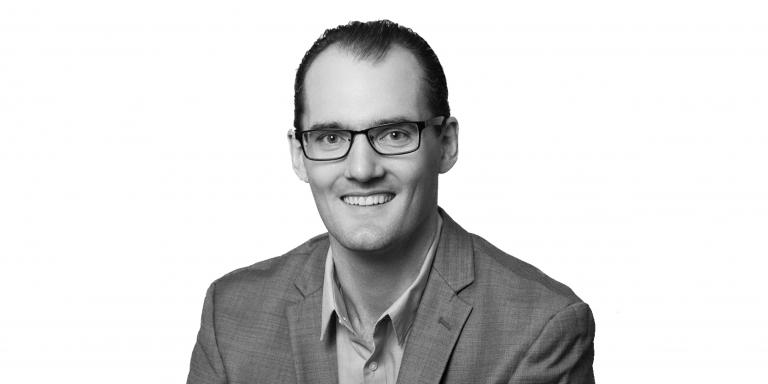 David Klug joins HED as Mechanical Engineering Leader in Los AngelesDavid Klug, PE, HBDP, a seasoned engineering leader with a reputation for leadership in conceptual design, energy modeling and optimization, design development, equipment specifications and selection, sustainability, and green buildings, has joined HED as an Associate Principal in its Los Angeles office. Serving as the Mechanical Engineering Leader, the move represents a focus on continuing to deepen the firm’s commitment to integrated engineering and architectural services nationwide to provide greater design excellence in both form and function to all HED clients.
David Klug joins HED as Mechanical Engineering Leader in Los AngelesDavid Klug, PE, HBDP, a seasoned engineering leader with a reputation for leadership in conceptual design, energy modeling and optimization, design development, equipment specifications and selection, sustainability, and green buildings, has joined HED as an Associate Principal in its Los Angeles office. Serving as the Mechanical Engineering Leader, the move represents a focus on continuing to deepen the firm’s commitment to integrated engineering and architectural services nationwide to provide greater design excellence in both form and function to all HED clients. -
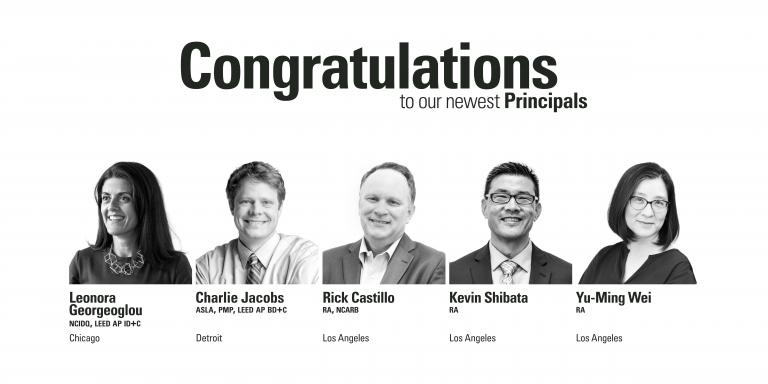 HED celebrates our newest PrincipalsHED is proud to announce our newest Principals, whose continued leadership within their disciplines has been a driving force behind the positive impact we bring to our clients and communities. Please join us in congratulating and celebrating the contributions of:
HED celebrates our newest PrincipalsHED is proud to announce our newest Principals, whose continued leadership within their disciplines has been a driving force behind the positive impact we bring to our clients and communities. Please join us in congratulating and celebrating the contributions of:
Leonora Georgeoglou, LEED AP ID+C, NCIDQ
Leonora is an experienced leader in the practice of interior architecture and works with a variety of corporate and institutional clients across North America. In her over 20 years in the A/E industry she has developed a strong reputation for leadership, environmental stewardship and inter-disciplinary collaboration while creating design solutions that prioritize her clients’ needs. Leonora’s passion for the profession stems from her varied experience with complex projects where she excels in developing creative strategies that enhance user collaboration and performance to ultimately promote business innovation for her clients. She brings not only deep design expertise but also considerable experience as a leader of teams to the benefit of her clients, many of which she has worked with for her whole career.
Charlie Jacobs, ASLA, PMP, LEED AP BD+C
With 20 years of experience, Charlie has successfully managed diverse, multidiscipline project teams from the early planning stages through construction on a variety of both large and small, private and public sector projects. His day-to-day interactions involve communicating with architects, engineers and contractors to administer contracts and manage projects and to ensure all aspects of a project are delivered within budget and on time. As operations leader within the Detroit office, Charlie is a “leader of leaders”, guiding and mentoring a team of project managers to facilitate creative, cost effective project delivery and maintain the highest quality standards.
Kevin Shibata, RA
Kevin is a licensed architect and project manager with over 28 years of experience in the profession, Kevin has completed a range of project types including high-rise, large mixed-use residential developments, higher education academic and student services facilities, and private residences. He has been involved in all phases of project development from master planning through construction administration and final occupancy. Between his deft skills at project management, the management of large multi-disciplinary consulting teams, and the implementation of sophisticated architectural technology, he skillfully leads the projects and the HED design team.
Rick Castillo, AIA
With over 30 years of experience in architecture, design, and construction, Rick is respected for his pragmatic approach to project design and ability to lead multiple user groups, consultants, and construction professionals. His extensive portfolio includes high-rise and mixed-use projects for prominent clients throughout California, the western United States, and internationally. He works collaboratively with clients and project teams in managing projects for design excellence and technical execution. Rick is an established leader and mentor within the profession and within HED, and understands that a successful project consists of a passion for design and skillful technical execution.
Yu-Ming Wei, AIA
Yu-Ming has over 25 years of experience with complex projects and client groups and has garnered the relevant experience and skill set to successfully execute projects from inception through construction. She is well versed in the design process and the teamwork necessary to drive projects from entitlement through construction. Over the course of her career, she has been involved with residential, mixed-use, commercial developments and higher education academic and student support facilities. In her role as operations leader within the Los Angeles office, Yu-Ming spearheads quality control in project delivery, leads multiple project managers in achieving exceptional, unique client solutions, provides professional mentorship, and shepherds the development and execution of new firm initiatives. -
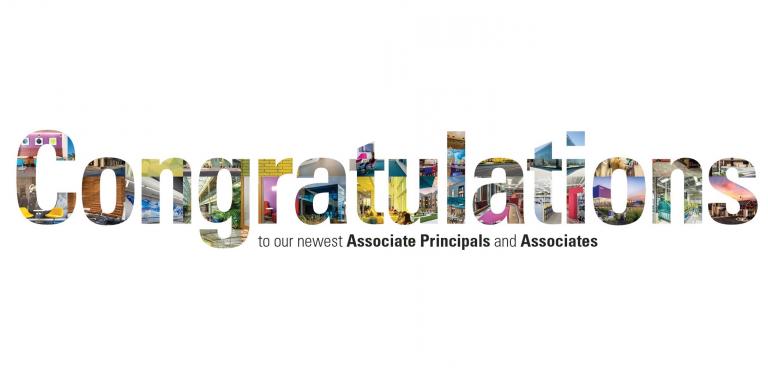 Join us in congratulating our newest Associates and Associate PrincipalsPlease join us in congratulating our newest Associates and Associate Principals!
Join us in congratulating our newest Associates and Associate PrincipalsPlease join us in congratulating our newest Associates and Associate Principals!
These promotions mark the close of a strong year, and reflect the positive impact these individuals contributions create for our clients, communities, and our firm. They come from across our offices and disciplines, and their dedication to client service, innovation, and design excellence is reflected in their work and conduct.
Congratulations to our newest Associates
• Ari Rosenthal, AIA, NCARB
• Matt Smerud, PE, LEED GA
• Max Garland, AIA
• Scott Robach
• Andrea Zammitt, LEED AP BD+C
• Sean Vanderwall, AIA, NCARB
• Sharlene Angeles, AIA, LEED BD+C
• Corinne Kelley, LEED AP BD+C, NCARB
• Lien Pham, RA
• Gregory Miller, AIA, LEED AP
• Juan Pagan
And our newest Associate Principals
• Lindsay Hanley
• Sara Martin
• Alli Mallory, AIA
• Chauncey Kingsbury, AIA, LEED AP BD+C
• Eric Wingelaar, AIA, LEED AP
• Tim Gawel
• Niccolo Boldrin, AIA
• Rachel Carr
-
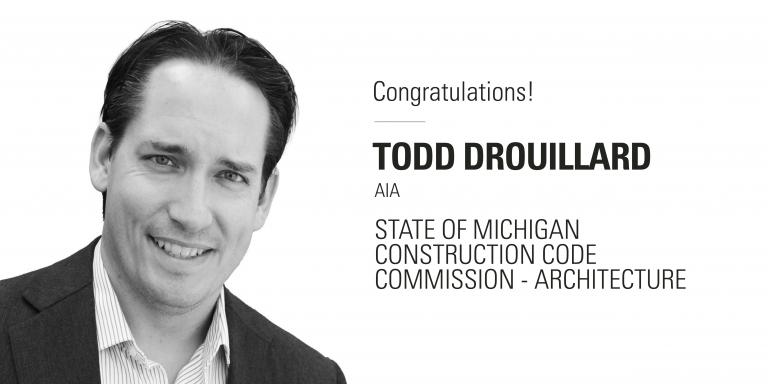 HED Sector Leader Todd Drouillard appointed to State of Michigan Construction Code CommissionHED is pleased to announce that our Detroit Science & Technology Sector Leader Todd Drouillard, AIA, has been appointed to the State of Michigan Construction Code Commission, representing the architecture discipline. Todd holds a Bachelor of Science in Architecture and Master of Architecture from Lawrence Technological University in Michigan and will serve for a term ending in 2023.
HED Sector Leader Todd Drouillard appointed to State of Michigan Construction Code CommissionHED is pleased to announce that our Detroit Science & Technology Sector Leader Todd Drouillard, AIA, has been appointed to the State of Michigan Construction Code Commission, representing the architecture discipline. Todd holds a Bachelor of Science in Architecture and Master of Architecture from Lawrence Technological University in Michigan and will serve for a term ending in 2023.
The Construction Code Commission of Michigan was created in 1972 to improve the quality of housing for Michigan residents while assisting the housing industry. Of the 17 commission members, 12 are appointed by the Governor, with the advice and consent of the Senate.
-
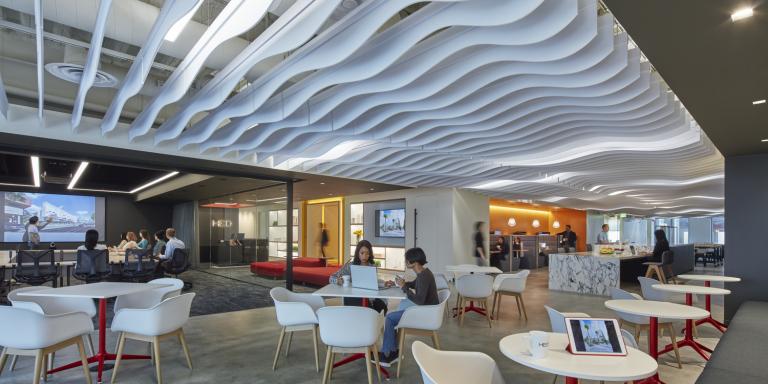 HED named #10 in Archello Top 25 LA FirmsHED is pleased to share that our firm was named by Archello as among the top 10 of the top 25 architecture and design firms working in Los Angeles.
HED named #10 in Archello Top 25 LA FirmsHED is pleased to share that our firm was named by Archello as among the top 10 of the top 25 architecture and design firms working in Los Angeles.
-
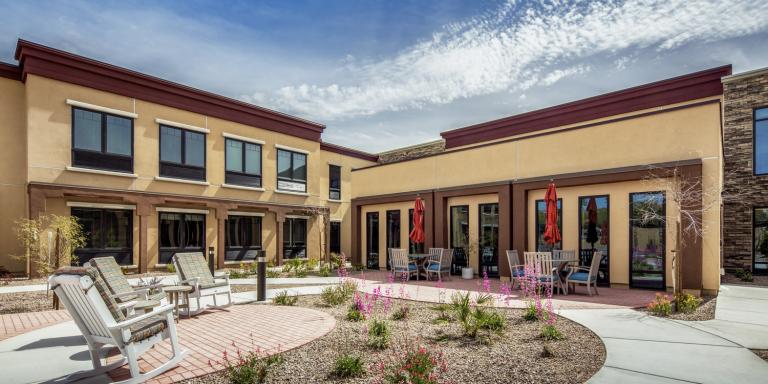 HED ranks #10 in BD+C Top 85 AE Senior Living Design GiantsWe're proud to share that our firm has ranked #10 in BD+C Top 85 AE Senior Living Design Giants!
HED ranks #10 in BD+C Top 85 AE Senior Living Design GiantsWe're proud to share that our firm has ranked #10 in BD+C Top 85 AE Senior Living Design Giants! -
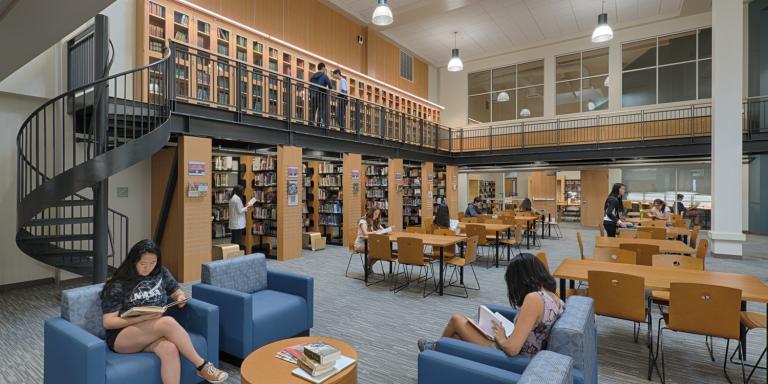 HED ranks #38 in the BD+C Top 150 K-12 School Sector Architecture and AE FirmsWe're very pleased to share that our firm has ranked #38 in the BD+C Top 150 K-12 School Sector Architecture and AE Firms!
HED ranks #38 in the BD+C Top 150 K-12 School Sector Architecture and AE FirmsWe're very pleased to share that our firm has ranked #38 in the BD+C Top 150 K-12 School Sector Architecture and AE Firms! -
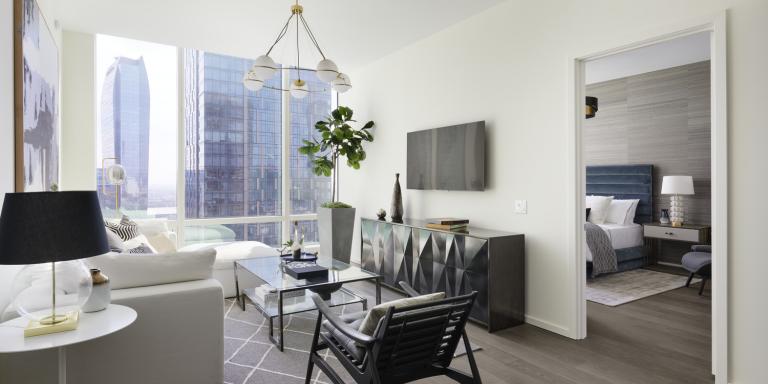 HED ranks in the BD+C Top 150 Multifamily Apartment/Condominium Design GiantsHED is pleased to share that we've been ranked in the BD+C Top 150 Multifamily Apartment/Condominium Design Giants listing! Ranking #55 in this list of 150 giants.
HED ranks in the BD+C Top 150 Multifamily Apartment/Condominium Design GiantsHED is pleased to share that we've been ranked in the BD+C Top 150 Multifamily Apartment/Condominium Design Giants listing! Ranking #55 in this list of 150 giants. -
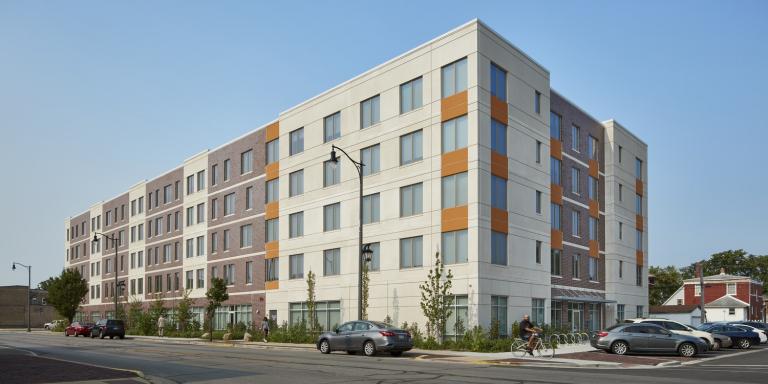 HED ranks #30 in BD+C Top 170 AE Multifamily Multisector Design GiantsHED is very proud to share that we have ranked #30 in BD+C Top 170 AE Multifamily Multisector Design Giants! HED has held a place on this list for over a decade, and we attribute this to our excellent clients and design partners.
HED ranks #30 in BD+C Top 170 AE Multifamily Multisector Design GiantsHED is very proud to share that we have ranked #30 in BD+C Top 170 AE Multifamily Multisector Design Giants! HED has held a place on this list for over a decade, and we attribute this to our excellent clients and design partners. -
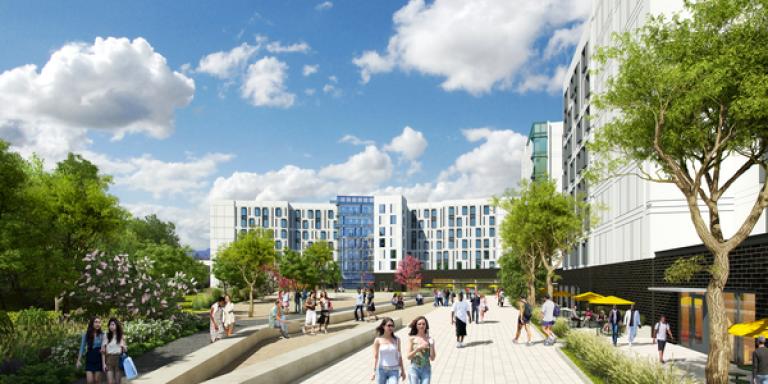 HED ranks #17 in BD+C Top 55 AE Student Housing Design GiantsHED is proud to share that we have once again ranked in the Building Design & Construction annual listing of Multifamily Sector Giants for Student Housing Facilities. HED has an impressive portfolio of student residences at several campuses. Notable mentions include CSULA, UC Santa Cruz, UC Davis, the University of Iowa, Pepperdine, and USC Village, the most expansive development project in the history of Southern California.
HED ranks #17 in BD+C Top 55 AE Student Housing Design GiantsHED is proud to share that we have once again ranked in the Building Design & Construction annual listing of Multifamily Sector Giants for Student Housing Facilities. HED has an impressive portfolio of student residences at several campuses. Notable mentions include CSULA, UC Santa Cruz, UC Davis, the University of Iowa, Pepperdine, and USC Village, the most expansive development project in the history of Southern California.
You can view HED's complete student housing portfolio in the link below. -
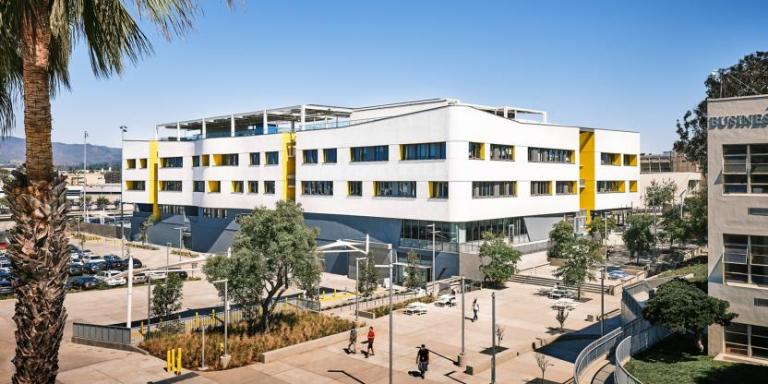 New building at Santa Monica High School is redefining academic flexibilityHED, in collaboration with Moore Ruble Yudell Architects & Planners, designed a dramatic new academic complex that transforms Santa Monica High School’s (Samohi’s) North Campus. Benefitting both school and the surrounding community, the complex elevates educational, cultural and recreational pursuits; improves campus access and circulation; and supports whole child development and diverse learning styles.
New building at Santa Monica High School is redefining academic flexibilityHED, in collaboration with Moore Ruble Yudell Architects & Planners, designed a dramatic new academic complex that transforms Santa Monica High School’s (Samohi’s) North Campus. Benefitting both school and the surrounding community, the complex elevates educational, cultural and recreational pursuits; improves campus access and circulation; and supports whole child development and diverse learning styles.
"It's comfortable, it's conducive to the learning needs, and it's a space where the students can come anytime during the day and feel like they're at home," Dr. Antonio Shelton, Principal, Santa Monica High School. From arts and athletic facilities to larger, light-filled classrooms, enhanced support spaces to reorganized outdoor spaces, the five-story, 260,000 square foot complex fosters social interactions and strengthens the sense of community on Samohi's campus.
-
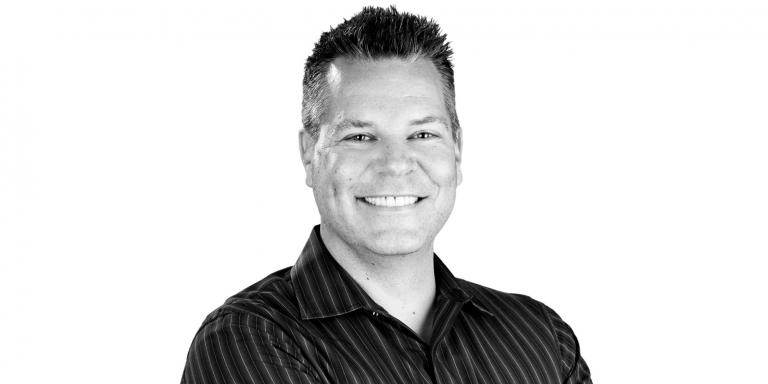 HED is pleased to welcome Robert Filary, AIA, to the firm as Associate Principal, Architectural Design Leader in Northern CaliforniaHED is pleased to welcome Robert Filary, AIA, to the firm as Associate Principal, Architectural Design Leader in Northern California. Robert brings over twenty-five years of experience leading integrated design teams to think creatively in the execution of technically sophisticated commercial and institutional projects in a range of markets. In this role, Robert will direct HED San Francisco’s’ and Sacramento’s' architectural design and planning disciplines while overseeing complex multidiscipline design efforts, ensuring quality and leading commitment to the daily practice of HED’s core values of integrated practice, critical thinking, and design excellence.
HED is pleased to welcome Robert Filary, AIA, to the firm as Associate Principal, Architectural Design Leader in Northern CaliforniaHED is pleased to welcome Robert Filary, AIA, to the firm as Associate Principal, Architectural Design Leader in Northern California. Robert brings over twenty-five years of experience leading integrated design teams to think creatively in the execution of technically sophisticated commercial and institutional projects in a range of markets. In this role, Robert will direct HED San Francisco’s’ and Sacramento’s' architectural design and planning disciplines while overseeing complex multidiscipline design efforts, ensuring quality and leading commitment to the daily practice of HED’s core values of integrated practice, critical thinking, and design excellence. -
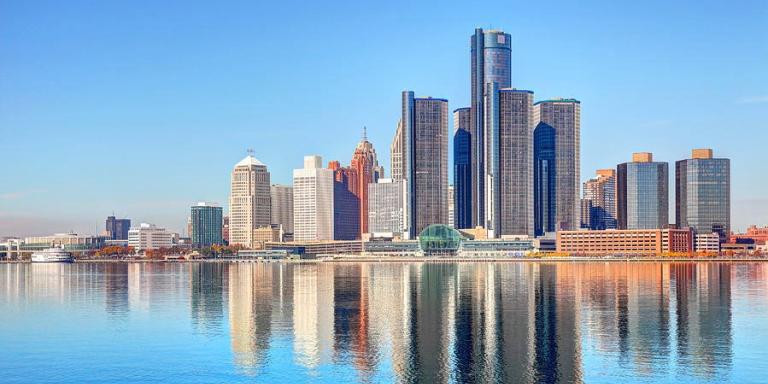 HED's Detroit Office named a Best & Brightest Place to WorkHED is very proud to share that our Detroit office has been named a Best and Brightest Company to Work For! The Best and Brightest program strives to recognize the most influential, trend-setting companies across the country and regionally in focused programs. The Best and Brightest regional competitions identify and honor companies that deliver exceptional human resource practices and an impressive commitment to their employees. Organizations are assessed based on categories such as communication, work-life balance, employee education, diversity, recognition, retention, and more, and are benchmarked with other leaders in their region.
HED's Detroit Office named a Best & Brightest Place to WorkHED is very proud to share that our Detroit office has been named a Best and Brightest Company to Work For! The Best and Brightest program strives to recognize the most influential, trend-setting companies across the country and regionally in focused programs. The Best and Brightest regional competitions identify and honor companies that deliver exceptional human resource practices and an impressive commitment to their employees. Organizations are assessed based on categories such as communication, work-life balance, employee education, diversity, recognition, retention, and more, and are benchmarked with other leaders in their region.
Congratulations and thank you to our dedicated Detroit team! -
 Santa Monica High School Discovery Building awarded Green California Schools Facilities Leadership AwardHED is very pleased to share that the Santa Monica High School Discovery Building was been awarded the Green California Schools Facilities Leadership Award for innovation in educational building design and application of sustainable and open building design principles!
Santa Monica High School Discovery Building awarded Green California Schools Facilities Leadership AwardHED is very pleased to share that the Santa Monica High School Discovery Building was been awarded the Green California Schools Facilities Leadership Award for innovation in educational building design and application of sustainable and open building design principles! -
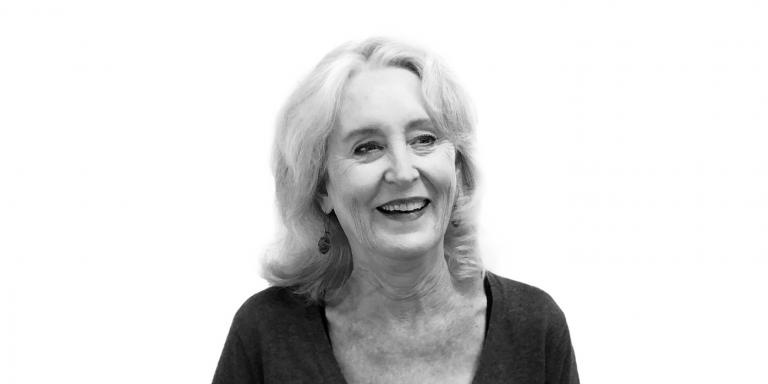 Healthcare Sector Leader Sharon Woodworth honored with Bisnow Bay Area Powerful Women in Real Estate designationHED is proud to share that Healthcare Sector Leader Sharon Woodworth is among the honorees at the Bay Area chapter of Bisnow's upcoming Power Women event, which honors and celebrates the current and future generation of women leaders in real estate. This Bay Area Women in Leadership event will highlight the success of women in the commercial real estate industry and bring together some of the industry's most powerful and influential women to honor them and their accomplishments and provide education, networking, and resources for professional development.
Healthcare Sector Leader Sharon Woodworth honored with Bisnow Bay Area Powerful Women in Real Estate designationHED is proud to share that Healthcare Sector Leader Sharon Woodworth is among the honorees at the Bay Area chapter of Bisnow's upcoming Power Women event, which honors and celebrates the current and future generation of women leaders in real estate. This Bay Area Women in Leadership event will highlight the success of women in the commercial real estate industry and bring together some of the industry's most powerful and influential women to honor them and their accomplishments and provide education, networking, and resources for professional development. -
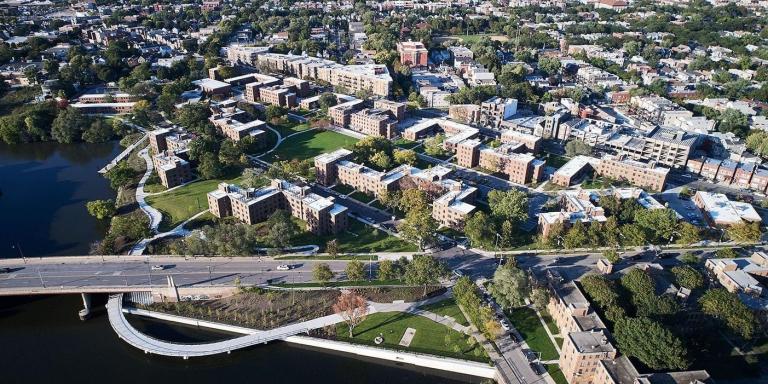 Chicago's Lathrop mixed-income community featured in BD&CHED is very proud to share that the story of Lathrop is being told in a new feature from Building Design & Construction magazine. Formerly New Deal era public housing, a dedicated integrated team (including HED), converted the property into an updated riverfront mixed-income community. The following contains excerpts from the piece on Building Design & Construction. You can view the article in its entirety using the link below.
Chicago's Lathrop mixed-income community featured in BD&CHED is very proud to share that the story of Lathrop is being told in a new feature from Building Design & Construction magazine. Formerly New Deal era public housing, a dedicated integrated team (including HED), converted the property into an updated riverfront mixed-income community. The following contains excerpts from the piece on Building Design & Construction. You can view the article in its entirety using the link below.
"On June 16, 1933, at the height of the Great Depression, Congress passed legislation creating the Public Works Administration, a key component of President Franklin D. Roosevelt’s New Deal.
The PWA’s goal was simple: to reduce unemployment—then at 25%, the highest it’s ever been—through the construction of massive public works. Out of this bold initiative would come the Grand Coulee Dam, the Lincoln Tunnel and Triborough Bridge in New York, and hundreds of courthouses, post offices, hospitals, and schools.
A less well-known piece of the PWA’s work was the construction of 52 low-rent housing projects in the U.S., the Virgin Islands, and Puerto Rico. This was the federal government’s first direct effort at building housing, a task previously left to the states, cities, and philanthropies.
The fourth-largest of these PWA public housing communities was Lathrop Homes—29 low-rise residential structures, a power station, and an administration building nestled on 34 acres along the Chicago River, on the city’s North Side. The 925-unit community opened in 1938.
Ten years ago, after decades of neglect by the Chicago Housing Authority that left just 140 of the apartments occupied, the CHA issued an RFP to consider the future of Lathrop Homes—described as “one of the most architecturally significant surviving projects from America’s first phase of public housing.”
From this would emerge a plan to renovate and modernize 21 of the historic buildings, construct 12 new apartment buildings, preserve 17 acres of open space, create new linkages to the Chicago River, and add a robust menu of amenities. The Lathrop complex would eventually have 400 public, 232 affordable, and 494 market-rate housing units.
Phase 1A, completed two years ago at a cost of $200 million, saw the gut renovation of 16 of the historic buildings and construction of a new six-story structure, yielding a total of 414 apartments—151 public housing units, 91 at 60% AMI, 10 at 80% AMI, and 162 market-rate. Phase 1B, the $40 million renovation of two more historic buildings, is under way.
All units, whether public housing, affordable, or market-rate, are furnished with the same quartz kitchen countertops, Whirlpool stainless steel appliances, in-unit washer/dryers, Moen plumbing fixtures, and wide-plank flooring.
Amenities include a half-mile riverwalk and nature trail, a dog park, a children’s playground, bicycle storage, valet trash removal and recycling, maker spaces, 239 parking spaces, and a dock and kayak launch. There’s a woodshop collective on site. An independent Boys & Girls Club occupies private space at the edge of the property.
Eleven acres of open space, including the original two-acre Great Lawn, were carefully restored along historic guidelines by Michael Van Valkenburgh Associates, designers of Maggie Daley Park and The 606 trail in Chicago. MVVA added a kayak launch and circular dog park and improved connections to the Chicago River, turning what was once an eyesore into a community asset. -
 HED ranked in BD&C 2021 Retail Giants ListingHED is proud to share that we are ranked on the Building Design & Construction annual Retail architecture giants listing. Our place on this list is the result of our continued growth in mixed-use design and development.
HED ranked in BD&C 2021 Retail Giants ListingHED is proud to share that we are ranked on the Building Design & Construction annual Retail architecture giants listing. Our place on this list is the result of our continued growth in mixed-use design and development.
From restaurants to retail, education to entertainment, hospitality to homes, mixed-use developments maximize the potential, value and usability of high-demand spaces, providing greater access to resources and amenities for more people. Done well, mixed-use spaces create great positive impact by fostering cohesive internal community and enriching their surrounding environment. Our team is very gratified that our continued work in this area has grown and given us a place on this list of firms who create substantial positive impact to their communities through mixed-use and retail. -
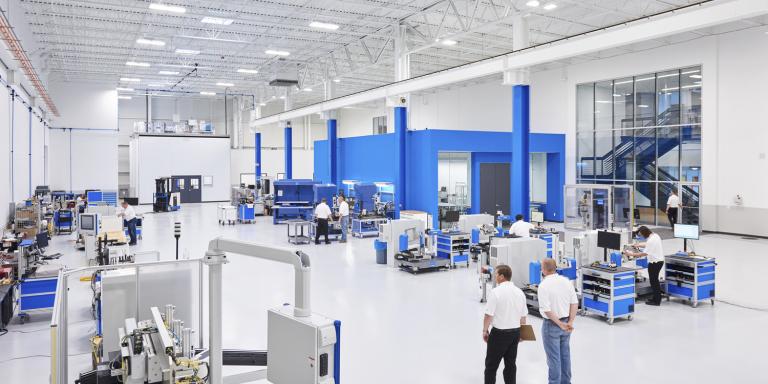 HED ranked in BD&C 2021 Industrial Design Giants ListingHED is proud to share that we have once again ranked in the Building Design & Construction annual listing of industrial design giants. Of all HED's areas of expertise, none demonstrates the full-service capabilities of our integrated approach more than our industrial markets. Balancing safety, and sustainability. Lean approach, and long-term value. Efficiency, and innovation.
HED ranked in BD&C 2021 Industrial Design Giants ListingHED is proud to share that we have once again ranked in the Building Design & Construction annual listing of industrial design giants. Of all HED's areas of expertise, none demonstrates the full-service capabilities of our integrated approach more than our industrial markets. Balancing safety, and sustainability. Lean approach, and long-term value. Efficiency, and innovation.
From large-scale, design-build projects to updates and renovations, our team of experts delivers. Accelerating speed to market. Maximizing productivity. Eliminating waste and production gaps. And making sure it all works—beautifully—for years to come. -
 Think Differently: Renovations that ReinvestHED's Sharon Woodworth, Tim Hurvitz, and Marilee Lloyd will be presenting at this year's Healthcare Design Expo and Conference on October 23- 26 in Cleveland, OH.
Think Differently: Renovations that ReinvestHED's Sharon Woodworth, Tim Hurvitz, and Marilee Lloyd will be presenting at this year's Healthcare Design Expo and Conference on October 23- 26 in Cleveland, OH.
The HED team will present a case study that follows the life of a Lab Renovation beyond the original building designer - to a different architect responsible for updating the lab years later, to the director operating the renovated lab, and finally, the lessons learned from an unusual coming together of all parties.
This “before-after-during-after again” scenario highlights the value of investing in both design education for users and hands-on operational understanding for designers. Participants will walk away with the knowledge that will empower them to think differently about sizing new buildings for the long view, about renovating with a master plan mentality, and about educating users beyond the tried & true benchmarking and mockups.
After this presentation attendees will think differently by being able to:
1. Explore renovation options that go beyond solving the problem to ensure future opportunities are not compromised.
2. Predict the impact infrastructure decisions have on new buildings’ ability to respond to future unknown needs.
3. Explain the value of educating users about the design process before investing their time in decision-making.
4. Organize a process that engages both designers and users in an equally informed decision-making process.
This was an unusual coming together of professionals; first Sharon Woodworth was the medical planner who designed the new hospital and later became a professor teaching clinicians about the healthcare environment where years later her student, Shinny Duong led the lab department that had recently been updated for automation by an architectural colleague of Ms. Woodworth’s at HED. When the student submitted a final portfolio project of the renovation, it was discovered that Tim Hurvitz now also at HED had renovated Sharon’s design that her student had critiqued. This session is a once-in-a-lifetime lessons-learned opportunity from the clinician’s standpoint, a designer’s standpoint, as well as from an educational standpoint teaching lay individuals about the architectural process and vise versa.
For more information on the event and conference schedule, visit the link below. -
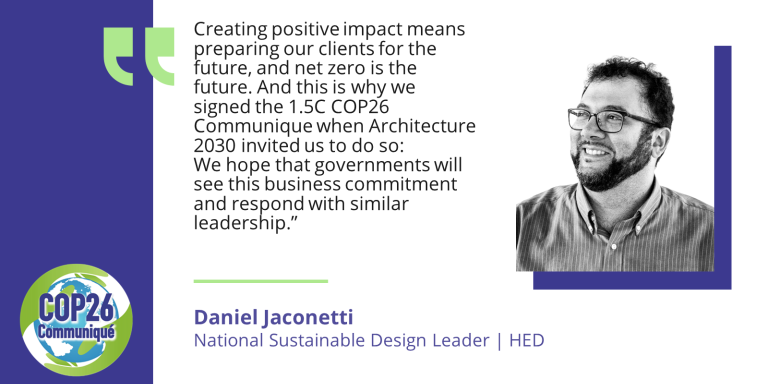 HED Signs 1.5°C COP26 CommuniquéWe are among the dozens of organizations collectively responsible for $300B of global construction annually taking action to decarbonize buildings by 2040.
HED Signs 1.5°C COP26 CommuniquéWe are among the dozens of organizations collectively responsible for $300B of global construction annually taking action to decarbonize buildings by 2040.
It’s time for governments to join us and take serious climate action. Click the link below for more information. -
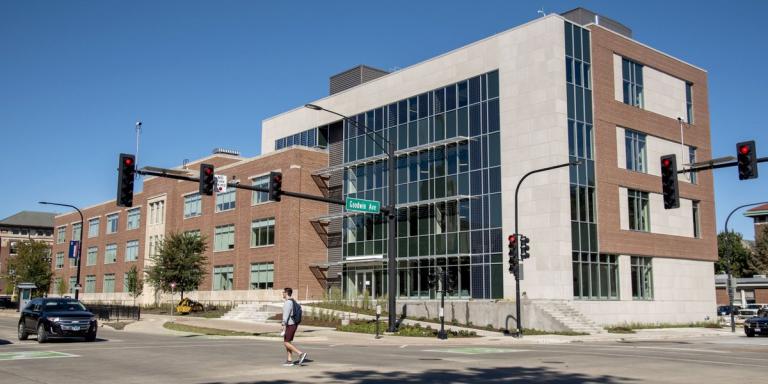 UIUC Sidney Lou Mechanical Engineering Building Ribbon CuttingHED is proud to be part of the team for the University of Illinois Urbana-Champaign Sidney Lou Mechanical Engineering Building, which recently held a ribbon cutting celebration.
UIUC Sidney Lou Mechanical Engineering Building Ribbon CuttingHED is proud to be part of the team for the University of Illinois Urbana-Champaign Sidney Lou Mechanical Engineering Building, which recently held a ribbon cutting celebration.
The five-level, 36,000 square foot addition will provide state-of-the-art instructional facilities, including new active learning classrooms with audio-visual technology systems designed for short-term needs and long-term vision. A second addition will infill the building’s exterior courtyard, expanding the existing building footprint and creating new, innovative project laboratories. Together, the renovation and new addition will provide much-needed additional space for Mechanical Science and Engineering and will reinvigorate the existing structure to create a more dynamic learning environment.
For a live look at the building via Gilbane Building Company, see the link below: -
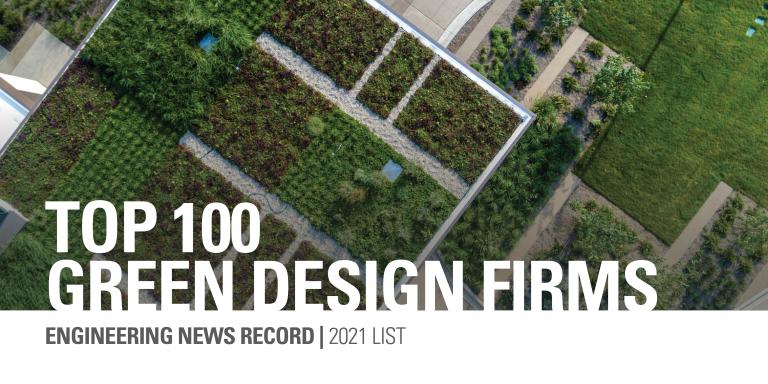 HED ranked a Top Green Design Firm of 2021 by ENRWe're extremely pleased to share that our firm has been ranked among the Top 100 Green Design Firms of 2021 by Engineering News Record.
HED ranked a Top Green Design Firm of 2021 by ENRWe're extremely pleased to share that our firm has been ranked among the Top 100 Green Design Firms of 2021 by Engineering News Record.
"We need to get to zero emissions as soon as possible," says Daniel Jaconetti, AIA, LEED, HED's National Sustainable Design Leader. "We must use our influence within the industry and on every project to not just do less harm but be a regenerative force. The water leaving our site should be cleaner than when it fell, the air should leave the building purified, that's what the 2030 Commitment is about - making every facility a working piece of the ecosystem rather than a source of damage. This is not advocacy; it's being responsible corporate citizens."
You can learn more about HED's commitment to sustainable and green design using the links below. -
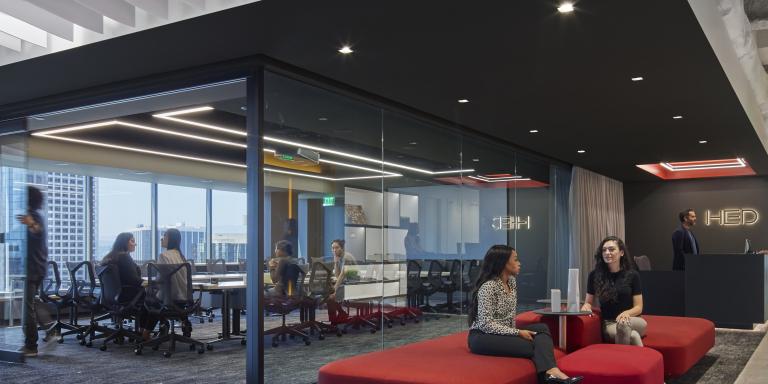 HED has ranked in the Top 25 of the Top 95 Architecture & Engineering Firms of 2021 from BD+CHED is very pleased to share that our firm has once again ranked within the Top 95 Architecture & Engineering firms listing from the Building Design & Construction Giants 400 annual listings.
HED has ranked in the Top 25 of the Top 95 Architecture & Engineering Firms of 2021 from BD+CHED is very pleased to share that our firm has once again ranked within the Top 95 Architecture & Engineering firms listing from the Building Design & Construction Giants 400 annual listings. -
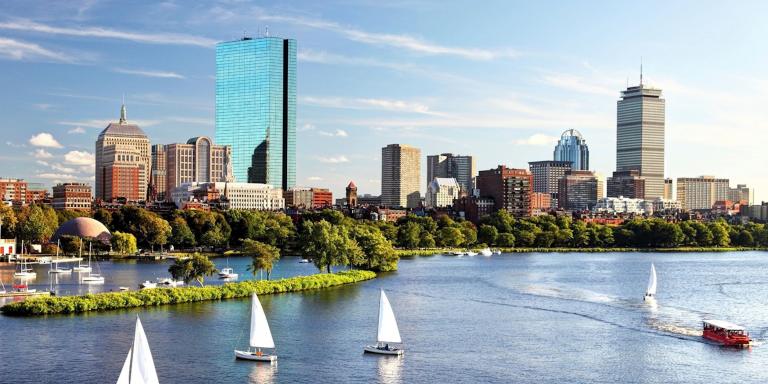 HED's Boston Office again named a Best & Brightest Place to WorkHED is very proud to share that our Boston office has once again been named a Best & Brightest Place to Work! The Best and Brightest program strives to recognize the most influential, trend-setting companies across the country and regionally in focused programs. The Best and Brightest regional competitions identify and honor companies that deliver exceptional human resource practices and an impressive commitment to their employees. Organizations are assessed based on categories such as communication, work-life balance, employee education, diversity, recognition, retention and more, and are benchmarked with other leaders in their region.
HED's Boston Office again named a Best & Brightest Place to WorkHED is very proud to share that our Boston office has once again been named a Best & Brightest Place to Work! The Best and Brightest program strives to recognize the most influential, trend-setting companies across the country and regionally in focused programs. The Best and Brightest regional competitions identify and honor companies that deliver exceptional human resource practices and an impressive commitment to their employees. Organizations are assessed based on categories such as communication, work-life balance, employee education, diversity, recognition, retention and more, and are benchmarked with other leaders in their region.
Congratulations and thank you to our dedicated Boston team! -
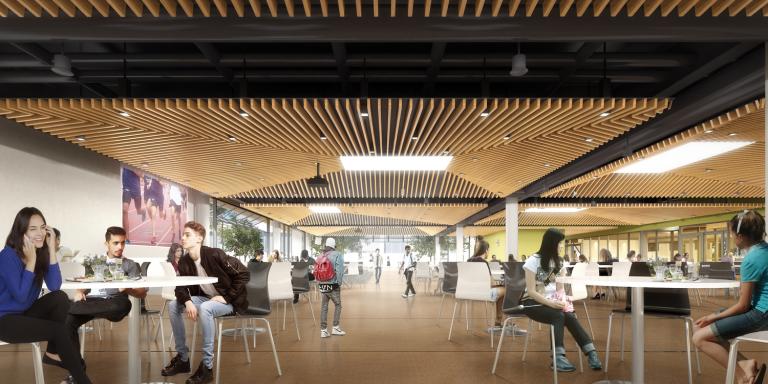 "The New School," Los Angeles Business Journal features HED and Moore Ruble Yudell's application of Open Building principles and collaborative design at Santa Monica High SchoolSchools for the 21st century, that will stand the test of time, should be designed to accommodate changing pedagogies, shifting demographics and even changing uses and ownership.
"The New School," Los Angeles Business Journal features HED and Moore Ruble Yudell's application of Open Building principles and collaborative design at Santa Monica High SchoolSchools for the 21st century, that will stand the test of time, should be designed to accommodate changing pedagogies, shifting demographics and even changing uses and ownership.
As centers of community, schools need the resilience to be both safe havens and dynamic focal points for learning and experimenting. Our school facilities, both new and old, need simultaneously to be permanent anchors of stability and agents of change.
Recently the Los Angeles Business Journal explored the application of these principles when reporting on the Santa Monica High School $154 million Discovery Building. Designed by HED and Moore Ruble Yudell, the Discovery Building is the first open-building-concept educational structure in the United States, and features 265,000 sf of highly adaptive space that will be reusable for decades into the future.
-
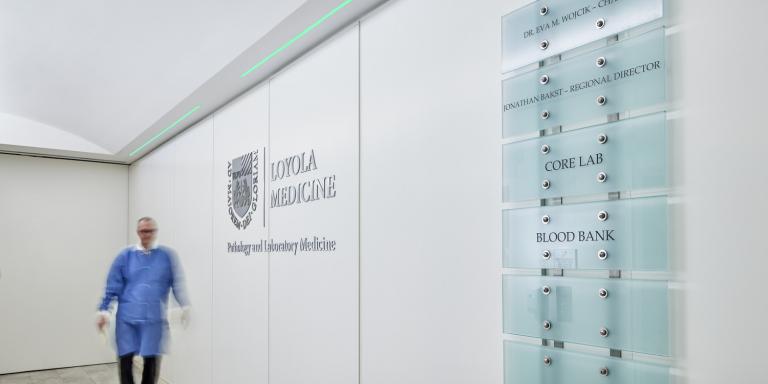 HED ranked a top 100 firm in multiple project types in the Building Design + Construction Magazine 2021 Healthcare Giants listsHED is very pleased to share that we have been ranked in the annual BD+C Healthcare Giants listings:
HED ranked a top 100 firm in multiple project types in the Building Design + Construction Magazine 2021 Healthcare Giants listsHED is very pleased to share that we have been ranked in the annual BD+C Healthcare Giants listings:
#31 in the Top 150 Healthcare A/E Firms
#25 Top 115 Hospital Facility A/E Firms
-
 HED publishes key findings from higher education STEM surveyWe polled higher education institutions across the country – asking what they value in planning and utilizing their STEM spaces. The results revealed some interesting considerations for the most essential features of a STEM facility.
HED publishes key findings from higher education STEM surveyWe polled higher education institutions across the country – asking what they value in planning and utilizing their STEM spaces. The results revealed some interesting considerations for the most essential features of a STEM facility.
The desire for spaces that will attract and retain students through meaningful instructor interaction was far greater than attracting lead researchers or industry partners, creating state-of-the-art research results, or defining new centers of activity on campus.
With priorities focused tightly on student success and instructor interaction, flexible, modularized spaces and furnishings that can adapt for virtual, small, and large group instruction remain at the top of the wish list for those defining and building new STEM facilities. As new virtual tools become available, the desire for spaces that incorporate and fully leverage these new technologies was also at the top of survey responders' minds.
STEM facilities should be designed to promote a sense of belonging in the science community that amplifies learning, empowers faculty and inspires discovery to shape the next generation of elite scientists, engineers and educators. We achieve these goals for our clients by implementing planning and design strategies that are proven to create an attractive hub for science on campus - a diverse facility that supports the convergence of research and teaching with student needs at the forefront.
-
 19500 Ventura Blvd Medical Building in Tarzana, CA featured in San Fernando Valley Business JournalHED's design of the 19500 Ventura Blvd medical building in Tarzana, CA was featured in San Fernando Valley Business Journal!
19500 Ventura Blvd Medical Building in Tarzana, CA featured in San Fernando Valley Business JournalHED's design of the 19500 Ventura Blvd medical building in Tarzana, CA was featured in San Fernando Valley Business Journal!
The two-story building will be transformed into an outpatient medical space, complete with contemporary façade, medical offices, open-air atrium and lounge areas; developer Greenbridge Investment Partners Inc. in Beverly Hills also plans to add 4,000 square feet in restaurant space.
Click the link below for more information:
*note: subscribe to read the full article -
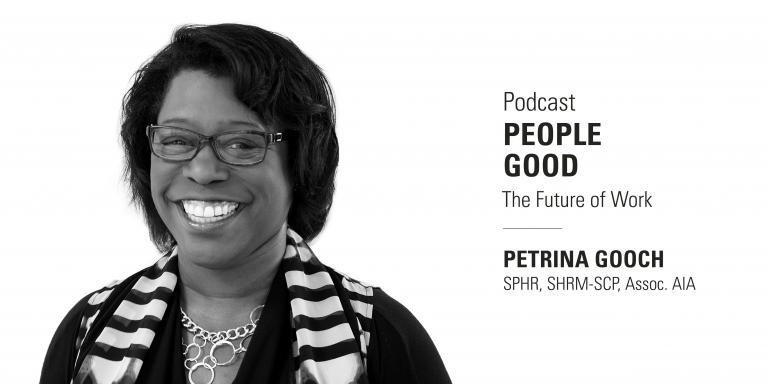 HED CHRO Petrina Gooch featured in People Good: The Future of Work podcastHED's Corporate HR Leader Petrina Gooch, SPHR, SHRM-SCP, Assoc. AIA recently joined Three Good for their People Good: The Future of Work podcast! She discussed how to become a JEDI when it comes to diversity and inclusion.
HED CHRO Petrina Gooch featured in People Good: The Future of Work podcastHED's Corporate HR Leader Petrina Gooch, SPHR, SHRM-SCP, Assoc. AIA recently joined Three Good for their People Good: The Future of Work podcast! She discussed how to become a JEDI when it comes to diversity and inclusion.
"The best leaders are actively listening. They're looking at the nuances. And a lot of times they're not speaking. They're allowing their team to surface, and those voices come to the top" - Petrina Gooch
To listen to the full interview, click the link below: -
 HED ranked Top 100 Firm in BD+C Workplace Giants for 2021HED is proud to share that we've been ranked a top 100 firm in multiple project types in the Building Design & Construction Magazine Giants list for 2021!
HED ranked Top 100 Firm in BD+C Workplace Giants for 2021HED is proud to share that we've been ranked a top 100 firm in multiple project types in the Building Design & Construction Magazine Giants list for 2021!
Thank you to our clients and partners for helping us create positive impact and meet our goal of design excellence.
Click the link below more information on the rankings: -
 HED ranked Top 100 MEP Giants for 2021 by CSE MagazineHED is proud to announce we have been ranked in the top 100 MEP Giants for 2021 by CSE Magazine! We thank CSE Magazine for this recognition, and our talented, industry-leading MEP engineers for helping us create positive impact and advance our clients' worlds.
HED ranked Top 100 MEP Giants for 2021 by CSE MagazineHED is proud to announce we have been ranked in the top 100 MEP Giants for 2021 by CSE Magazine! We thank CSE Magazine for this recognition, and our talented, industry-leading MEP engineers for helping us create positive impact and advance our clients' worlds.
For more information on our ranking and the 2021 list, see below. -
 Cutting-Edge Children’s Treatment Center Breaks Ground in Michigan!The Genesee Health System and the Greater Flint Mental Health Facilities Inc. have just broken ground on a new GHS Center for Children’s Integrated Services building in Flint. The new state-of-the art mental and physical health treatment center will bring all of its children's programs under one roof. That includes the Neurological Center for Excellence, Child and Family Services, and the Autism Center.
Cutting-Edge Children’s Treatment Center Breaks Ground in Michigan!The Genesee Health System and the Greater Flint Mental Health Facilities Inc. have just broken ground on a new GHS Center for Children’s Integrated Services building in Flint. The new state-of-the art mental and physical health treatment center will bring all of its children's programs under one roof. That includes the Neurological Center for Excellence, Child and Family Services, and the Autism Center.
“The convenience for families is a huge deal. Not every family needs to go to all three buildings obviously, but there is overlap and having all of those staff and energy in one place.” - Danis Russell – CEO, Genesee Health System
This project will help reshape the physical and human landscape of Flint. It will ensure that the NCE has a permanent physical home, continuing the important work of helping Flint children and their families get the
support they need.
It will improve access to behavioral health and primary care services for Low to Moderate Income residents. It will also be a cornerstone of the South Saginaw Corridor helping to catalyze the future of that neighborhood. While the impetus behind this project is a part of Flint’s challenging history, its execution is a part of how the community - and its people - will move forward.
The 60,000-square-foot building, designed by national integrated architecture and engineering firm HED and being built by DW Lurvey Construction, will bring all GHS children’s program areas under one roof.
The building design includes a café, outdoor plaza, secure playground, and other comfortable waiting spaces intended to make the facility feel inviting for regular, repeat visitors while supporting clinical programs with an activities-based approach.
The building includes a series of “autism pods” as well as an autism playground area as a part of a highly developed treatment facility for children on the autism spectrum, one of the leading outcomes seen from the water crisis.
“Carefully selected surface materials for touch and playground objects designed to enhance motor skills offer a valuable set of interactions with the building and site for children suffering from neurodevelopmental problems,” said Jessi Mesalic, NCIDQ, an associate with HED.
Read more about this project in the link below. -
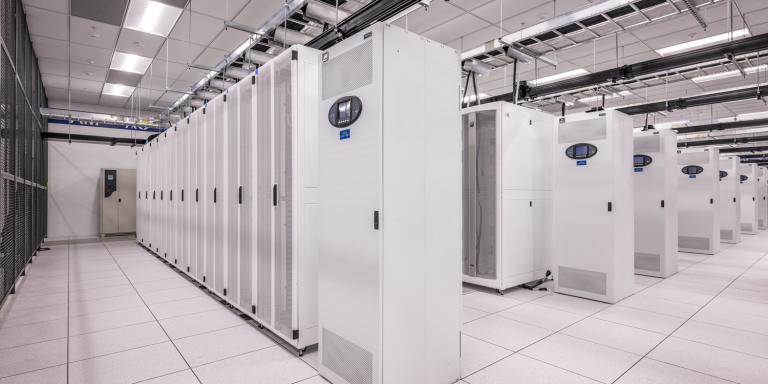 HED Ranks #5 in BD+C Data Center GiantsHED is pleased to share that our firm is ranked #5 in the Building Design and Construction 2021 Giants 400 Top 30 Data Center Sector Architecture and AE Firms!
HED Ranks #5 in BD+C Data Center GiantsHED is pleased to share that our firm is ranked #5 in the Building Design and Construction 2021 Giants 400 Top 30 Data Center Sector Architecture and AE Firms!
You can view our data center portfolio by clicking the link below. -
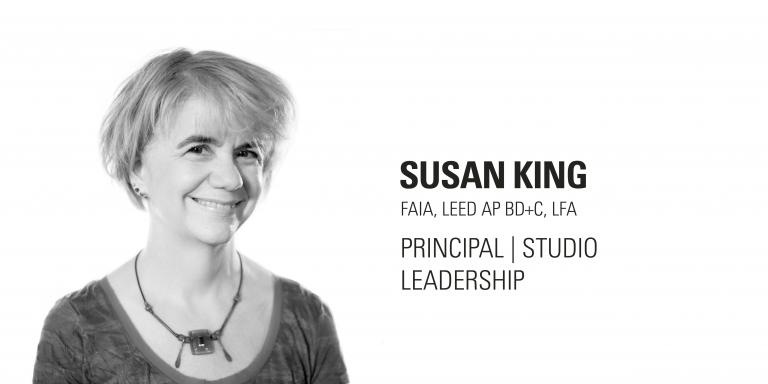 Susan King of HED: How We Are Helping To Make Housing More Affordable?HED's Housing Sector Leader Susan King is the most recent expert to join Authority Magazine's “How We Are Helping To Make Housing More Affordable” series, where successful business leaders, real estate leaders, and builders, share the initiatives they are undertaking to create more affordable housing options in the US.
Susan King of HED: How We Are Helping To Make Housing More Affordable?HED's Housing Sector Leader Susan King is the most recent expert to join Authority Magazine's “How We Are Helping To Make Housing More Affordable” series, where successful business leaders, real estate leaders, and builders, share the initiatives they are undertaking to create more affordable housing options in the US.
The primary cause of the crisis is simple, though. Housing has gotten far too scarce and expensive. As high-income people rent places that middle income people used to rent, and the middle-income people rent places the low-income people used to rent, then people become homeless.
In many large cities in the US, there is a crisis caused by a shortage of affordable housing options. This has led to a host of social challenges. In this series called “How We Are Helping To Make Housing More Affordable” we are talking to successful business leaders, real estate leaders, and builders, who share the initiatives they are undertaking to create more affordable housing options in the US. As a part of this series, we had the pleasure of interviewing Susan King.
Susan King is a Principal at HED where she oversees the firm’s housing work across the Midwest. An unrelenting advocate for attainable housing, social justice, and issues of diversity, much of her work focuses on community-based housing access for people across all ages and socioeconomic status. She was recently involved with reimagining the historic portion of Lathrop, one of the last Chicago Housing Authority (CHA) Transformation Plans, converting it into a new mixed income community. Other recent projects include high density transit oriented high rise, Lake Street Studios, and new affordable assisted senior living developments in nearby Indiana.
Q. Thank you so much for doing this with us! Before we dig in, our readers would like to get to know you a bit more. Can you tell us a bit about your “backstory”? What led you to this particular career path?
A. I am a native of the Midwest, and I have enjoyed the opportunity to grow my professional career in the Chicago metro area since 1987. Today, I am a Principal with HED, a national, integrated design firm with a century long history and a diverse portfolio. Since joining the Chicago Office in 1997, I have played a leadership role in growing the firm’s focus on creating affordable housing environments and incorporating environmentally responsible high performance design strategies into housing projects of all kinds.
I served as the firm’s National Sustainable Design Practice Leader from 2011 through 2019. Basically, I took a page from the Hamilton playbook, specifically, the scene where George Washington sets the 8-year limit for Presidency. I figured that he was right, 8 years is enough time to have an effect and if we transition things correctly, the Firm will continue to move forward in this area. Sustainable Practice at HED is now being led by Daniel Jaconetti, AIA, LEED AP, who worked with me for several years prior as a Regional Leader.
My expertise in the areas of environmentally friendly design, social housing, and gender equity is nationally recognized, as demonstrated in many presentations and publications. I have spoken regularly at the United States Green Building Council’s (USGBC) National ‘GreenBuild’ conferences and The International Living Future Institute’s annual ‘unconference’.
I was also one of the first women in Illinois elevated to the American Institute of Architects (AIA) College of Fellows.
I am a past Co-Chair of the AIA Chicago Chapter’s Committee on The Environment (CoTE) and a past President of Chicago Women in Architecture (CWA). Today I am serving on two boards, the Illinois Housing Council and the Chicago Women in Architecture Foundation.
Q. Are you able to identify a “tipping point” in your career when you started to see success? Did you start doing anything different? Are there takeaways or lessons that others can learn from that?
A. My personal decision to pursue work on public realm projects like affordable housing — a space where I would have an impact on people’s daily lives — was a big turning point in my career. This happened, I would say, in the mid 1990’s when I was working at a small firm primarily focused on manufacturing, speculative big boxes and some healthcare projects. I had been with that firm for 8 years and there is no question that I got great experience there as a project architect, but the type of work was not my passion. When I began my search for a new position, I was very intentional about the firms I approached. It took some time, but I eventually landed at the firm that would ultimately become the Chicago office of HED.
The other tipping point would be getting the right client at the right time, to bring my two passions of creating affordable housing and incorporating environmental responsibility together. (This will be discussed a little later in the conversation below.)
Q. None of us are able to achieve success without some help along the way. Is there a particular person to whom you are grateful who helped get you to where you are? Can you share a story about that?
A. Wow, certainly not one person but many….
Q. Do you have a book, podcast, or talk that’s had a deep impact on your thinking? Can you share a story with us? Can you explain why it was so resonant with you?
A. Again, hard to pick only one. But three books, I think worth mentioning are: the Rocky Mountain Institute’s A Primer on Sustainable Building, by Dianna Lopez Barnett and William Browning, The Shape of Green by Lance Hosey and Backlash by Susan Faludi. I would be remiss not to mention an author of many incredible books, Rebecca Solnit. I would suggest reading anything that she writes!
Since the first two are focused on sustainability, it is obvious why they are important. I will add that when I first read the Primer it was like a breath of fresh air, especially after trying to read the LEED Reference Guide. Similarly, I love Lance’s book because it was the first time that I had heard someone articulate the fact that great design and sustainability are inseparable. I know Lance personally, and I also had the chance to work with him. He helped HED set a course for truly achieving Design Excellence.
Backlash was also an early influence and shaped my gender equity views early in my career.
Rebecca Solnit writes on many topics, from Hope in the Dark to Men Explain Things to Me, I am constantly amazed at her ability to bring the issues of our time into sharp focus. Currently, I am reading The Mother of All Questions and in it she says: “I care passionately about the inhabitability of our planet from an environmental perspective, but until it’s fully habitable by women who can walk freely down the street without the constant fear of trouble and danger, we will labor under practical and psychological burdens that impair our full powers. Which is why, as someone who thinks climate is the most important thing in the world right now, I am still writing about women’s rights.”
Throughout my career I often have felt torn between working on both issues too. There are only so many hours in a day and there is so much progress to be made in both. When I read the above, I felt validated and energized to keep working on gender equity along with sustainability. Who needs sleep?!
Q. Can you please give us your favorite “Life Lesson Quote”? Can you share how that was relevant to you in your life?
A. Again, hard to only have one! Here are three:
1. All good ideas outlive their opposition…..eventually.” — Anonymous
It is relevant because making change in general is hard work! Sustainability, in all its many dimensions, always has naysayers and detractors. But, if you stay with it long enough, I promise you will get to witness that this quote is true.
2. “Why, sometimes I’ve believed as many as six impossible things before breakfast.” — The White Queen to Alice, Through the Looking Glass and What Alice Found There. 1872
It is relevant because it is about optimism, and we all need to have that.
3. “Experience is what you get when you don’t get what you want.” My Dad, John “Bud” King
I feel like this one does not need an explanation, but I will just say that he said this to me when I was young in the profession, I think at my second job. It is the one that I think I share most often with the people I mentor.
Q. Ok super. Let’s now shift to the main part of our discussion about the shortage of affordable housing. Lack of affordable housing has been a problem for a long time in the United States. But it seems that it has gotten a lot worse over the past five years, particularly in the large cities. I know this is a huge topic, but for the benefit of our readers can you briefly explain to our readers what brought us to this place? Where did this crisis come from?
A. This is an interesting question. From my perspective, it has a lot to do with prioritizing where the government puts our money. This affordable housing issue did not happen overnight and has been slowly building due to our not building enough new residential units on an annual basis. This isn’t a new crisis that has emerged, but when we were all asked to “stay home” during the pandemic, perhaps our collective awareness was heightened to the fact that not all people have a home.
The primary cause of the crisis is simple, though. Housing has gotten far too scarce and expensive. As high-income people rent places that middle income people used to rent, and the middle-income people rent places the low-income people used to rent, then people become homeless.
It should be a fundamental law in this country, that housing is a human right. I’m not the first person to say this, but I feel strongly that it should be true.
New York City for example has a “right to shelter” system, that helps people sleep indoors each night, at least. The rest of the nation doesn’t even guarantee that, though.
And then, when it comes to environmental friendliness and sustainability, if a higher quality product or system that will save money over time or improve productivity and health costs even a little bit more, it gets cut out of the design. There is a worry that less units will be built if there is an added cost of any kind. So, it gets sacrificed to the long-term detriment of our communities. We simply need housing to be a priority at the Federal level, and for sustainable design to be recognized for its value over the long haul and for both aspects to be financed properly instead of this ongoing race to the bottom.
Q. Can you describe to our readers how your work is making an impact to address this crisis? Can you share some of the initiatives you are leading to help correct this issue?
A. I have spent my career to-date focused on the important role that sustainable design plays in solving our collective housing needs.
I believe that sustainability is inherent in making something affordable. For any type of building, this is true. For housing infrastructure it is especially true because the home of an individual is where the financial rubber meets the road.
If you lower the cost to operate a residence, it is then more affordable over the long run. If you develop an apartment community that is designed sustainably, it is more affordable to own over the long run as well.
As noted previously, the industry is still hung up on the challenges of up-front costs, but as sustainable design technology continues to evolve, this up-front cost burden, though, is getting better and better. At HED, we are already seeing projects come in with smart, sustainable design embedded in them, reducing operating costs and not costing any more to build, provided of course that your base bid is not the lowest common denominator.
Q. Can you share something about your work that makes you most proud? Is there a particular story or incident that you found most uplifting?
A. At HED we focus on delivering quality affordable housing and we can apply best practices learned in different parts of the country thanks to our national, multi-office reach. We choose to work in this important aspect of housing due to the significance of the need for our communities. We believe good design is for everyone.
We’ve been successful with recognizing early on that the sustainability aspect of affordable housing was something worth fighting for. Because of this commitment, we have been able to make some great strides in raising the design bar for better affordable housing in the Chicago metro area, the Los Angeles region, and others.
For an apartment project in Chicago, the Wentworth Commons, we were able to deliver the first LEED-Certified multi-unit apartment building in the entire midwestern United States. LEED Certification is just one metric to measure a building’s sustainability, but more importantly, it puts a great deal of weight on the importance of monthly energy costs, an important issue for affordable housing residents. This 51-unit community also happened to be an affordable housing community. That was a big early victory back in 2006, and we’ve been consistent in our press for the importance of sustainable design in affordable communities ever since.
Q. In your opinion, what should other designers do to further address these problems?
A. Get involved. There is only so much that we as designers can do in the confines of individual projects, but our role as educated advocates for good design and sustainable design can be even more important for the longer-term needs of affordable housing.
I personally have worked for the last year with the Midwest Building Decarbonization Coalition to make recommendations to the Illinois Housing Development Authority (IHDA) to create a higher bar for sustainability in affordable housing developments. Thanks to this work, a new Qualified Action Plan (QAP) is currently out for public comment which includes many of our recommendations.
Q. Can you share three things that the community and society can do to help you address the root of this crisis? Can you give some examples?
A. Be YIMBY (aka “yes, in my back yard”) instead of NIMBY (aka “not in my backyard”).
Show up in support for affordable housing developments. At a minimum, show up at public meetings and help support these projects vocally. Most people that show up to public meetings tend to be objectors. I am not sure why this is. I guess it is human nature to show up when you are angry and stay home if you are OK with the proposal. Anyway, our projects can get stalled and even completely derailed by this reality, depending on the public agencies involved.
Or you can call your government representatives to vocalize support for affordable housing projects and ask for their commitment to financially support this work. Whether a particular project is on the docket or not, our representatives need to regularly hear from us to understand that all residents in their communities think this is important — not just those with the lowest incomes.
Q. If you had the power to influence legislation, are there laws which you would like to see introduced that might help you in your work?
A. I alluded to this earlier, but I feel strongly that housing should be written into our governance as a human right. We have freedom of speech, we have the right to bear arms, but we can’t confidently say that we have the right to housing.
I would also expedite the process toward improving our building codes to require sustainable, energy efficient solutions for all buildings, not just in housing. This can affect long term affordability in this country, and legislation is likely going to be necessary to get us there.
Q. Is there a person in the world, or in the US whom you would love to have a private breakfast or lunch with, and why? He or she might just see this, especially if we tag them. :-)
A. Oh boy, I am actually really shy, so I’m not sure this would be a good idea1 I guess I would say author Rebecca Solnit. From what I have already said, it seems obvious that we would be great, fast friends. -
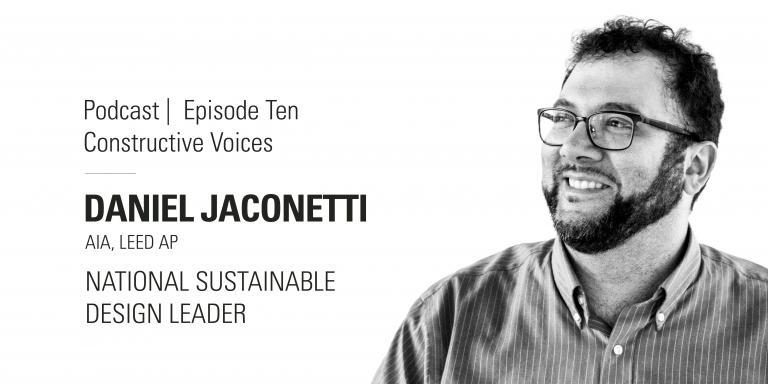 Daniel Jaconetti, AIA, LEED, National Sustainable Design Leader on Constructive Voices Podcast!Listen to HED's Daniel Jaconetti, AIA, LEED, National Sustainable Design Leader, discuss his work and how Europe compares to the USA when it comes to green building. Featured on episode 10 of Constructive Voices Podcast. Listen in the link below.
Daniel Jaconetti, AIA, LEED, National Sustainable Design Leader on Constructive Voices Podcast!Listen to HED's Daniel Jaconetti, AIA, LEED, National Sustainable Design Leader, discuss his work and how Europe compares to the USA when it comes to green building. Featured on episode 10 of Constructive Voices Podcast. Listen in the link below.
“If I were looking to buy a new home right? I would be looking for something that was maybe net-zero or Passive House. Solar panels on the roof for sure. Right. And there are other people that just seem to have this rebellion against it. And I think it might be because there’s a misconception that being pro-environment pro sustainability is anti-business.” -
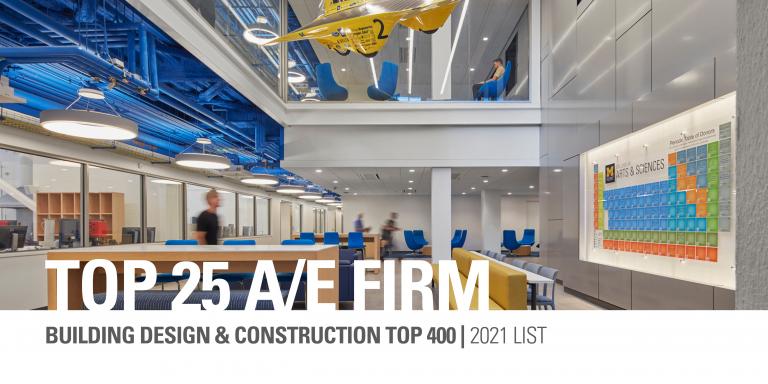 HED ranks in the top 25 of the BD+C top 400 Architecture & Engineering firms 2021 listHED is pleased to share that we have ranked within the Top 25 of Building Design & Constructions annual top architecture and engineering firms list!
HED ranks in the top 25 of the BD+C top 400 Architecture & Engineering firms 2021 listHED is pleased to share that we have ranked within the Top 25 of Building Design & Constructions annual top architecture and engineering firms list! -
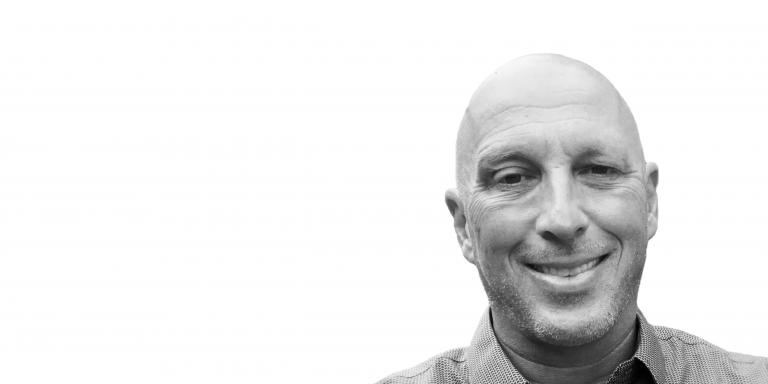 HED welcomes Chad Zettle, AIA, LEED AP BD+C, to the firm as Associate Principal, Operations & Project Management Leader in San DiegoHED is pleased to welcome Chad Zettle, AIA, LEED AP BD+C, to the firm as Associate Principal, Operations & Project Management Leader in the San Diego, CA office. Chad brings over twenty years of experience leading integrated design teams in the execution of technically sophisticated projects in a range of markets. In this role, Chad will direct HED San Diego’s project management discipline and oversee complex multidiscipline design efforts, ensuring quality and leading commitment to the daily practice of HED’s core values of integrated practice, critical thinking, and design excellence.
HED welcomes Chad Zettle, AIA, LEED AP BD+C, to the firm as Associate Principal, Operations & Project Management Leader in San DiegoHED is pleased to welcome Chad Zettle, AIA, LEED AP BD+C, to the firm as Associate Principal, Operations & Project Management Leader in the San Diego, CA office. Chad brings over twenty years of experience leading integrated design teams in the execution of technically sophisticated projects in a range of markets. In this role, Chad will direct HED San Diego’s project management discipline and oversee complex multidiscipline design efforts, ensuring quality and leading commitment to the daily practice of HED’s core values of integrated practice, critical thinking, and design excellence.
-
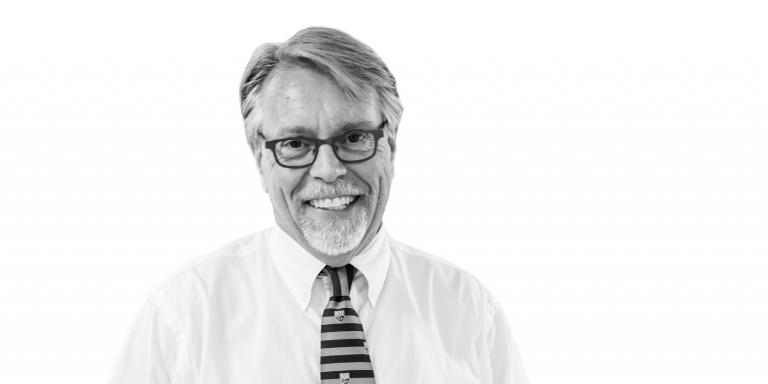 “How We Are Helping To Make Housing More Affordable,” an exploration from Authority Magazine featuring HED's Otis OdellHED's Housing Sector Leader Otis Odell is the most recent expert to join Authority Magazine's “How We Are Helping To Make Housing More Affordable” series, where successful business leaders, real estate leaders, and builders, share the initiatives they are undertaking to create more affordable housing options in the US.
“How We Are Helping To Make Housing More Affordable,” an exploration from Authority Magazine featuring HED's Otis OdellHED's Housing Sector Leader Otis Odell is the most recent expert to join Authority Magazine's “How We Are Helping To Make Housing More Affordable” series, where successful business leaders, real estate leaders, and builders, share the initiatives they are undertaking to create more affordable housing options in the US.
Jerome “Otis” Odell has over 30 years of professional experience with multiple housing and hospitality projects throughout California and Colorado, and across the United States. He founded and led his own architectural design and planning practice in Denver, Odell Architects, for 16 years before joining the national architectural and engineering firm HED in 2015. At HED he is a Principal and Housing Studio Leader for the firm’s western offices. Below is an excerpt from this interview, you can follow the link below to the full piece.
Q:Thank you so much for doing this with us! Before we dig in, our readers would like to get to know you a bit more. Can you tell us a bit about your “backstory”? What led you to this particular career path?
A: My work in multi-unit housing began as a framing carpenter as I worked my way through college. Since that time, my career has maintained a keen focus on housing and hospitality. I see these as the spaces where buildings affect people the most. Specifically, the notion of homes for all people is fundamental to our social, economic, and environmental fabric and is a significant responsibility that he has felt privileged to contribute to this important work.
In my role as a Principal with HED I focus on client relationships and project oversight and have been the Principal-in-Charge for a wide variety of housing sector project developments including market rate, high-rise, affordable and senior living communities. I help identify, conceptualize, and bring projects to life alongside our client partners, and it is a tremendous source of joy and pride for me. I love the work of providing housing. You cannot be involved in housing work without being involved in the community, and this is my way of making a positive impact and making the world a better place. -
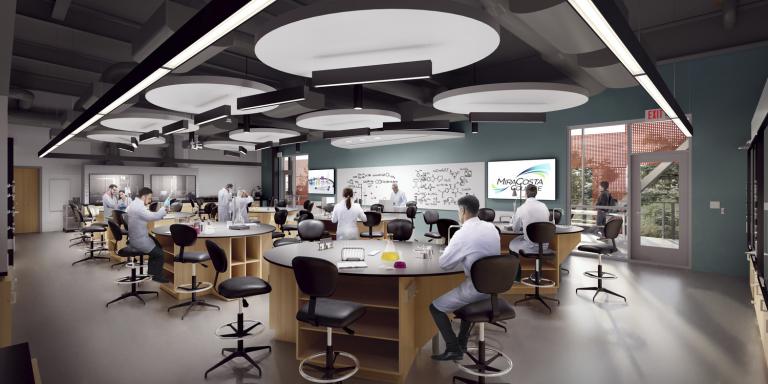 HED lab planner Marilee Lloyd sits down with Lab Manager to discuss the MiraCosta Community College Chemistry and Biotech Building projectMiraCosta Community College’s Chemistry and Biotech building is an up-to-date addition to the campus, with the intention to put “science on display” for the school community. The $37.4 million project was accomplished through a partnership between HED and C.W. Driver, and it features 24,000 square feet of STEM instructional space including new chemistry labs and 40-person, flexible classrooms.
HED lab planner Marilee Lloyd sits down with Lab Manager to discuss the MiraCosta Community College Chemistry and Biotech Building projectMiraCosta Community College’s Chemistry and Biotech building is an up-to-date addition to the campus, with the intention to put “science on display” for the school community. The $37.4 million project was accomplished through a partnership between HED and C.W. Driver, and it features 24,000 square feet of STEM instructional space including new chemistry labs and 40-person, flexible classrooms.
To learn more about the project and its unique design, Lab Manager spoke with HED's Marilee Lloyd, AIA, laboratory planner. Below is an excerpt of their interview, you can read the full piece on Lab Manager's website using the link below.
Q: What was the need for this facility?
A: MiraCosta Community College (MCC) is seeking to advance the MiraCosta Community College District’s STEM curriculum to the next level with this facility's mix of instructional, work, social, and laboratory spaces. The building will support the growth of the existing biotechnology and chemistry programs, creating a learner-centered environment and supporting a new home for MCC’s new baccalaureate degree for this program. The learning spaces and exterior collaboration areas are activated through integration with the latest learning technology systems. This tangible and virtual instructional flexibility will benefit both students and faculty.
Q: What kinds of sustainability initiatives have been included in the design plan?
A: Sustainability is a vital part of the conversation for all projects at HED. The conversation starts early and continues as the design process evolves. A mixture of passive and active strategies is discussed, and at MCC, have been integrated into the design. The team is targeting LEED Silver for the building. The sunshades at the perimeter create both a sense of place and a focus for views, while also reducing glare at the interior and help shade the window glazing. Photovoltaics will be located on the roof, above the main exterior pathway through the building, connecting the campus. Additionally, smart occupancy-based lighting controls, fume hood controls and sash closers have also been designed to aid in reducing the carbon footprint of the building. -
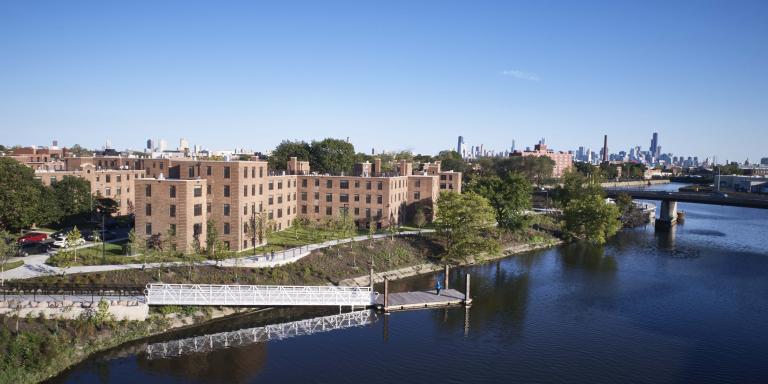 Daniel Jaconetti Featured on Constructive Voices PodcastHED Sustainable Design Leader Daniel Jaconetti will be appearing on the "Constructive Voices" podcast on August 17th. To learn more about his upcoming appearance, and for a preview of the topics discussed, click the link below.
Daniel Jaconetti Featured on Constructive Voices PodcastHED Sustainable Design Leader Daniel Jaconetti will be appearing on the "Constructive Voices" podcast on August 17th. To learn more about his upcoming appearance, and for a preview of the topics discussed, click the link below. -
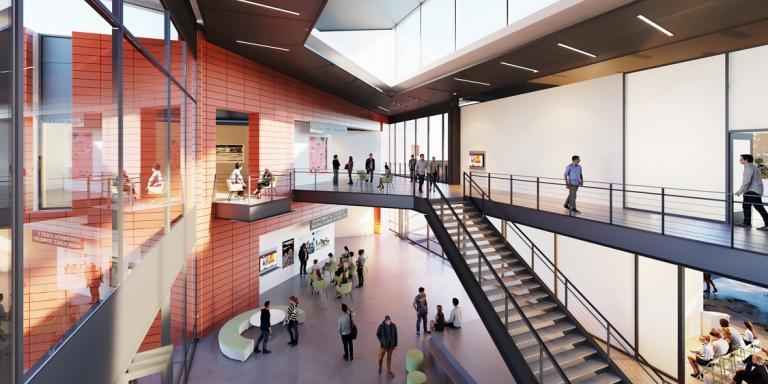 Sustainability Leader Dan Jaconetti speaks with gb&d on design for climate changegb&d magazine recently spoke with HED's National Sustainable Design Leader Daniel Jaconetti to learn more about his projects, sustainable design, and climate change. Below is an excerpt from this interview, but you can read it in its entirety using the link at the bottom of this page.
Sustainability Leader Dan Jaconetti speaks with gb&d on design for climate changegb&d magazine recently spoke with HED's National Sustainable Design Leader Daniel Jaconetti to learn more about his projects, sustainable design, and climate change. Below is an excerpt from this interview, but you can read it in its entirety using the link at the bottom of this page.
“We need to get to zero emissions as soon as possible,” Jaconetti says. “It’s not a dramatization: Lives are at stake. We must use our influence within the industry and on every project to not just do less harm but be a regenerative force. The water leaving our site should be cleaner than when it fell, the air should leave the building purified; that’s what the 2030 Commitment is about—making every facility a working piece of the ecosystem rather than a source of damage. This is not advocacy; it’s being responsible corporate citizens.”
Jaconetti is both the National Sustainable Design Leader and a senior project architect for architecture firm HED. His works showcase his consideration for the environment and his belief in fighting climate change. Some of these include Saddleback College’s New Advanced Technology & Applied Sciences Building, San Diego Energy Equity Campus, Lathrop, and Fifth Avenue in Chicago. He is currently working on a new health stem facility at Michigan Tech University in Michigan’s Upper Peninsula.
Q: How do you factor climate change into your work?
A; Our first responsibility is to educate, and then it’s to design for clients the best possible building or project that meets their needs.
Being the best possible building means it’s resilient, energy-efficient, comfortable, and doesn’t have toxic chemicals in it. This is part of the reason why, a couple years ago, AIA took their framework for Design Excellence and merged that with sustainable design. Now, for any chapter in this country, if you submit for a design award, you are evaluated against sustainable criteria, because they’re saying that a project’s design cannot be excellent unless it’s also sustainable, and that’s why we too adopt it at HED.
We used to use a checklist, like a LEED checklist to measure every project against. It’s great, but it’s also very black and white. We’ve now moved into using the AIA framework for Design Excellence. Now when you sit down with a client and have your initial kickoff and talk about strategies, the types of questions are things like: “How could this project engage and benefit the community?,” “How is this project going to participate in a responsible water cycle on the site?,” “How can you actually participate like you’re a piece of the natural ecosystem?”
The energy piece is probably the one that makes the most sense to people—being as efficient as possible. You’re putting out less emissions and you’re taxing the system less.
It’s not just about environmental resiliency, though. Walk down a city street with a bunch of vacant storefronts. That doesn’t do well for the city, but if the project is designed so that it can change and evolve, when somebody leaves someone else can come in. Those are all things we need to share with and prepare our clients for at the beginning of the project.
Q: What’s happening now? And where do we need to go from here?
A: We’re part of a large firm roundtable with AIA with 50 peer firms. As a group of architects we’re working together to transform the industry. We’re doing the right things as a group, but you often face clients, politicians, or general people that don’t understand the importance. We have to work together to understand that.
If we look at the energy piece, for example, and people say, “Net-zero must be really expensive, it’s not affordable, how are we going to do it?” Saddleback is a good example. As an architect you have to do all the right things, which means you start with the climate analysis of the site. With Saddleback, we learned pretty quickly that 80% of the comfort requirements of the building could be met through passive strategies. That means you are only relying on energy for 20%. That means if you want to cover that with renewables, like onsite PV, it becomes much more feasible because of the size of the building and the amount of panels you can have on the roof.
Is it scary to say net zero to a client out of the gate? Is it better to talk about energy efficiency? As you prove net zero is achievable say, “Hey, we can make this net zero.” Or, from an educational standpoint, do you start out of the gate by saying, “Net zero is not necessarily too expensive to do. And it’s going to give you a more resilient project. And eventually your energy costs are going to be lower.”
-
 HED welcomes Steven Crook, SE as Associate, Structural Engineering Leader in San DiegoHED is pleased to welcome Steven Crook, SE to the firm as Associate, Structural Engineering Leadership in the San Diego office, bringing over twenty-three years of experience in the delivery of complex education, healthcare, retail, hospitality, commercial, civic, industrial and military projects. In this role, Steven will provide leadership to the structural engineering group in southern California and continue to deepen the firm’s commitment to integrated engineering and architectural services to provide greater design excellence in both form and function.
HED welcomes Steven Crook, SE as Associate, Structural Engineering Leader in San DiegoHED is pleased to welcome Steven Crook, SE to the firm as Associate, Structural Engineering Leadership in the San Diego office, bringing over twenty-three years of experience in the delivery of complex education, healthcare, retail, hospitality, commercial, civic, industrial and military projects. In this role, Steven will provide leadership to the structural engineering group in southern California and continue to deepen the firm’s commitment to integrated engineering and architectural services to provide greater design excellence in both form and function.
Prior to joining HED, Steven served as Senior Structural Project Manager at LPA, where he was a leader on multidiscipline teams, ensuring that all participants had a voice and that all objectives and expectations were aligned between client stakeholders and team members across internal and external A/E disciplines, contractors, and consultants.
Steven’s passion for team-oriented, creative problem solving will be integral to HED’s effectiveness toward its mission: Advancing Your World, through the Positive Impact of design, our teams create exceptional solutions for our clients, the community, and the world.
-
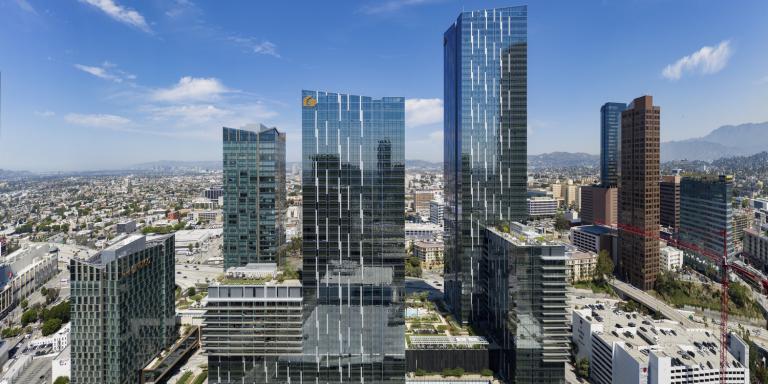 HED ranks #24 in the annual ENR Sourcebook Top Multi-Unit Residential FirmsHED is very pleased to share that we have been ranked #24 in the annual ranking of multi-unit residential design and construction firms from the ENR Sourcebook! We believe housing design is not merely about planning apartments, residence halls, condominiums, or special living facilities: it is about creating spaces for people to live comfortably, safely, and sustainably.
HED ranks #24 in the annual ENR Sourcebook Top Multi-Unit Residential FirmsHED is very pleased to share that we have been ranked #24 in the annual ranking of multi-unit residential design and construction firms from the ENR Sourcebook! We believe housing design is not merely about planning apartments, residence halls, condominiums, or special living facilities: it is about creating spaces for people to live comfortably, safely, and sustainably.
We look forward to continuing to create positive impact in multi-unit housing for our clients across the country! -
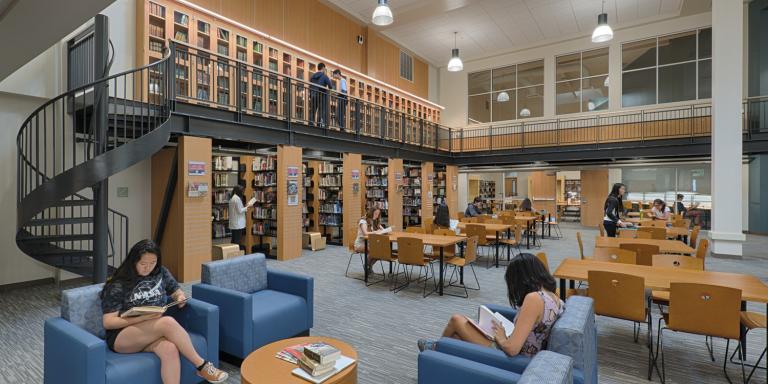 HED ranks #20 in the annual ENR Sourcebook Top Education Design FirmsHED is very pleased to share that we have been ranked #20 in the annual ranking of education design and construction firms from the ENR Sourcebook! We value the opportunity to contribute to the unique, ongoing narrative of each of our client's campuses and look forward to continuing to create positive impact in pre K-12 and higher education!
HED ranks #20 in the annual ENR Sourcebook Top Education Design FirmsHED is very pleased to share that we have been ranked #20 in the annual ranking of education design and construction firms from the ENR Sourcebook! We value the opportunity to contribute to the unique, ongoing narrative of each of our client's campuses and look forward to continuing to create positive impact in pre K-12 and higher education! -
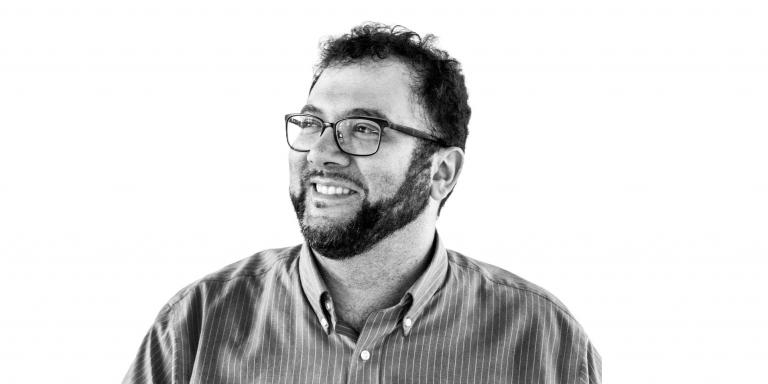 An interview with National Sustainable Design Leader Daniel Jaconetti on how HED is addressing climate change and what's ahead"We need to get to zero emissions as soon as possible," says Daniel Jaconetti, AIA, LEED, HED's National Sustainable Design Leader. "It's not a dramatization: lives are at stake. We must use our influence within the industry and on every project to not just do less harm but be a regenerative force. The water leaving our site should be cleaner than when it fell, the air should leave the building purified, that's what the 2030 Commitment is about - making every facility a working piece of the ecosystem rather than a source of damage. This is not advocacy; it's being responsible corporate citizens."
An interview with National Sustainable Design Leader Daniel Jaconetti on how HED is addressing climate change and what's ahead"We need to get to zero emissions as soon as possible," says Daniel Jaconetti, AIA, LEED, HED's National Sustainable Design Leader. "It's not a dramatization: lives are at stake. We must use our influence within the industry and on every project to not just do less harm but be a regenerative force. The water leaving our site should be cleaner than when it fell, the air should leave the building purified, that's what the 2030 Commitment is about - making every facility a working piece of the ecosystem rather than a source of damage. This is not advocacy; it's being responsible corporate citizens."
With a national sustainable design leader and six regional leaders in place, HED's helping clients address climate risks, prepare for regulatory shifts, and increase the value and resilience of their property. -
 HED's Chicago Office Named Best & Brightest Place to WorkThe Best and Brightest Companies to Work For competition identifies and honors organizations that display a commitment to excellence in their human resource practices and employee enrichment. Organizations are assessed based on categories such as communication, work-life balance, employee education, diversity, recognition, retention and more. HED is proud to have won this award for 17 consecutive years, and we look forward to continuing the tradition of caring for our people so they can continue to create positive impact in our communities!
HED's Chicago Office Named Best & Brightest Place to WorkThe Best and Brightest Companies to Work For competition identifies and honors organizations that display a commitment to excellence in their human resource practices and employee enrichment. Organizations are assessed based on categories such as communication, work-life balance, employee education, diversity, recognition, retention and more. HED is proud to have won this award for 17 consecutive years, and we look forward to continuing the tradition of caring for our people so they can continue to create positive impact in our communities! -
 San Francisco Business Times Featuring Dan Ringler: "How do you convert office space to lab space?"Developers and companies have increasingly been exploring efforts to convert existing commercial office space into laboratories. A trend driven in large part by the glut in empty offices and the corresponding demand surge in the life sciences sector due to the pandemic.
San Francisco Business Times Featuring Dan Ringler: "How do you convert office space to lab space?"Developers and companies have increasingly been exploring efforts to convert existing commercial office space into laboratories. A trend driven in large part by the glut in empty offices and the corresponding demand surge in the life sciences sector due to the pandemic.
These kinds of projects are particularly fraught with challenges and high costs because of the many highly specialized needs and requirements for a life sciences workplace.
San Francisco Business Times has gathered industry experts including HED's own Dan Ringler to discuss some essential considerations for a successful office-to-lab retrofit:
Early start: Engage an architect and structural, mechanical, electrical and plumbing engineers early in the process to get an informed look at existing conditions.
Floor-to-floor heights: A clear height of 14 to 15 feet typically is a good start. Also a critical issue: the floor’s weight-bearing capability. A lab floor needs to be able to handle 100 to 125 pounds per square foot. In contrast, the threshold for a regular office is 60 to 75 pounds per square foot.
Air, electrical and other mechanical systems: air flow in a lab needs to be robust. Lab spaces require 100% outside air, Suter said. In contrast, a typical office uses recirculated air.
Delivery and loading concerns: A dedicated freight elevator is vital for materials coming and going - no commingling can occur due to contamination.
Controlling costs: Understand the areas that drive costs and where potential savings can be found. Total conversion costs can vary depending on the condition of a building, existing infrastructure, the type of life sciences work to be housed and other factors. But many conversions would run between $200 and $450 per square foot, according to Suter.
In comparison, according to Ringler, typical office tenant improvements can range between $50 and $75 per square foot for second-generation space but much higher for first-generation product depending on the client’s needs.
Read the full article published in San Francisco Business Times in the link below. Please note a subscription may be required.
-
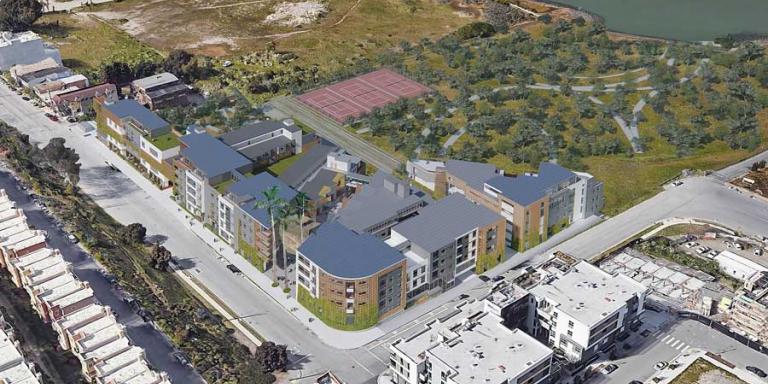 HED and Nardi Associates announce collaboration in San FranciscoHED is pleased to announce its recent partnership with architecture and urban design firm Nardi Associates LLP on a new housing development in San Francisco, CA. Together, the two firms have created an independent entity, NH Design Collaborative LLP, to seamlessly collaborate on the new Palmilia By The Bay project.
HED and Nardi Associates announce collaboration in San FranciscoHED is pleased to announce its recent partnership with architecture and urban design firm Nardi Associates LLP on a new housing development in San Francisco, CA. Together, the two firms have created an independent entity, NH Design Collaborative LLP, to seamlessly collaborate on the new Palmilia By The Bay project.
Nardi Associates LLP is the design author of Palmilia By The Bay, as well as the architect of record. HED will be assisting in the execution, leveraging its experience within the City of San Francisco and its large bench of technical and staffing resources.
The partnership was formed to best serve this highly complex mixed-use housing project, but its roots evolved through our initial exploration of wanting to collaborate on the Olympic Tower project, currently under development in downtown Los Angeles.
-
 Lathrop brings home fourth award in design excellence and community developmentHED is excited to share that Lathrop was awarded the second place Richard H. Driehaus Foundation award for excellence in community design at the recent annual Chicago Neighborhood Development Awards!
Lathrop brings home fourth award in design excellence and community developmentHED is excited to share that Lathrop was awarded the second place Richard H. Driehaus Foundation award for excellence in community design at the recent annual Chicago Neighborhood Development Awards!
We are proud to have our work considered alongside some of the city’s best in community investment, development and design, and very gratified to see this unique and important community project win yet another award.
Congratulations to our teammates: Chicago Housing Authority, Related Midwest, Bickerdike Redevelopment Corporation, Heartland Alliance, JGMA, MICHAEL VAN VALKENBURGH ASSOCIATES, INC., McGuire Igleski & Associates, Inc., TERRA Engineering, Ltd., dbHMS, Farr Associates Architecture & Urban Design, Bowa Construction, UJAMAA Construction and the others who made this project possible. -
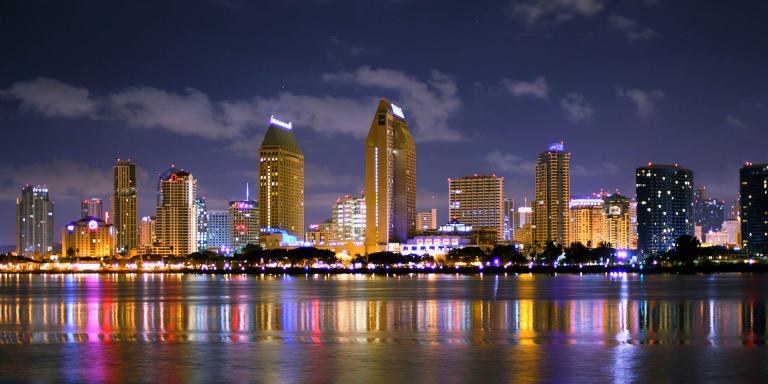 HED ranks in the Top Ten San Diego Business Journal Architecture FirmsDevelopment in San Diego continues to be on the rise. A strategic growth market for California and the country at large, HED's recent merger has spring boarded the San Diego office into the local business journal Top Ten Architecture firms list! A member of the AEC community in San Diego since the early 2000's, HED's commercial, education, and life science design sectors continue to create a large impact within the community.
HED ranks in the Top Ten San Diego Business Journal Architecture FirmsDevelopment in San Diego continues to be on the rise. A strategic growth market for California and the country at large, HED's recent merger has spring boarded the San Diego office into the local business journal Top Ten Architecture firms list! A member of the AEC community in San Diego since the early 2000's, HED's commercial, education, and life science design sectors continue to create a large impact within the community. -
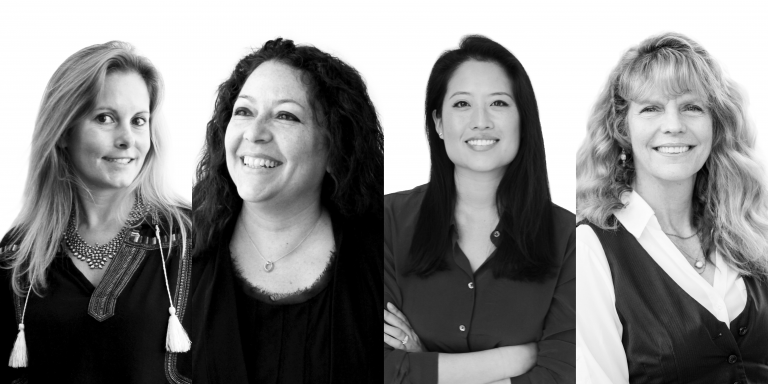 Four HED leaders named San Diego "Women of Influence in Architecture" 2021HED is thrilled to announce that four of our professionals in San Diego have been named in the San Diego Business Journal as “Women of Influence in Architecture 2021!"
Four HED leaders named San Diego "Women of Influence in Architecture" 2021HED is thrilled to announce that four of our professionals in San Diego have been named in the San Diego Business Journal as “Women of Influence in Architecture 2021!"
The annual Women of Influence series honors individuals who embody values of mentorship, leadership, generosity, and creating positive impact within their communities through design.
Congratulations to Landscape Architecture Leader Heather Foley, Sector Leader Jennette La Quire AIA, LEED AP ID+C, Sector Leader Melina Aluwi AIA, NCARB, LEED AP BD+C, and Interior Designer Tracy Morran NCIDQ, CID, LEED ASSOC.! Thank you for living your values and embodying our firm's mission of creating a positive impact!
View the full feature of every Woman of Influence in Architecture using the link below!
-
 Zweig Group AEC Top Firm to Work ForHED is proud to be listed as one of Zweig Group's best Firms to Work For in 2021. The Best Firms to Work For award recognizes the AEC firms in the US and Canada based on their workplace practices, employee benefits, employee retention rates, and much more.
Zweig Group AEC Top Firm to Work ForHED is proud to be listed as one of Zweig Group's best Firms to Work For in 2021. The Best Firms to Work For award recognizes the AEC firms in the US and Canada based on their workplace practices, employee benefits, employee retention rates, and much more.
To see the full list click the link below. -
 HED signs open letter to President Biden urging the administration to Build Back GreenerA coalition of more than 250 architecture, engineering and construction firms is urging the Biden administration to take “swift executive action” to require higher sustainability standards for U.S. buildings and infrastructure as part of its Build Back Better plan.
HED signs open letter to President Biden urging the administration to Build Back GreenerA coalition of more than 250 architecture, engineering and construction firms is urging the Biden administration to take “swift executive action” to require higher sustainability standards for U.S. buildings and infrastructure as part of its Build Back Better plan.
The AEC Sustainable Leaders Group sent a 10-page Build Back Better letter to the White House with six major recommendations, each containing specific proposals that could be acted on by the executive branch.
-
 HED San Francisco Named a 2021 Best & Brightest Company to Work ForWe're proud to share that our San Francisco office has once again been named a Best & Brightest Company in the Bay Area! The Best and Brightest Companies to Work For competition identifies and honors organizations that display a commitment to excellence in their human resource practices and employee enrichment. Organizations are assessed on communication, work-life balance, employee education, diversity, recognition, retention and more.
HED San Francisco Named a 2021 Best & Brightest Company to Work ForWe're proud to share that our San Francisco office has once again been named a Best & Brightest Company in the Bay Area! The Best and Brightest Companies to Work For competition identifies and honors organizations that display a commitment to excellence in their human resource practices and employee enrichment. Organizations are assessed on communication, work-life balance, employee education, diversity, recognition, retention and more. -
 HED/PCA merger and firm growth discussed in the San Diego Business JournalNews of the HED and Pacific Cornerstone Architects (PCA) merger has drawn some attention in San Diego, most recently in the San Diego Business Journal. (Please note the following is an excerpt).
HED/PCA merger and firm growth discussed in the San Diego Business JournalNews of the HED and Pacific Cornerstone Architects (PCA) merger has drawn some attention in San Diego, most recently in the San Diego Business Journal. (Please note the following is an excerpt).
“San Diego does have a bit of a reputation of being a bit more of a closed market than say L.A. or San Francisco,” Devereaux said. Devereaux is hoping the merger will result in the firm getting bigger projects in the region. “If you look at our national portfolio, you’ll see we’re capable of doing big, complex things really well. That was sort of missing in San Diego,” Deveraux said. “I think now we’ll start seeing the more significant projects.”
Growth
HED opened its first office in San Diego more than 15 years ago. “We had a cold start, hiring just one person. It was a struggle,” Devereaux said. “The San Diego office got a foothold in education. We’re doing a lot of public-school district work and also university work.” The firm grew gradually to have a staff of 29 at the time of the merger. With the addition of Pacific Cornerstone, Devereaux said the combined firm will have a staff of about 40. Devereaux said the merger will give the combined organization a more diversified portfolio. “We’d like to be 50% public sector and 50% private sector,” Devereaux said. “Those things run counter-cyclical. That allows us to not hire and fire people at the peaks and troughs.”
-
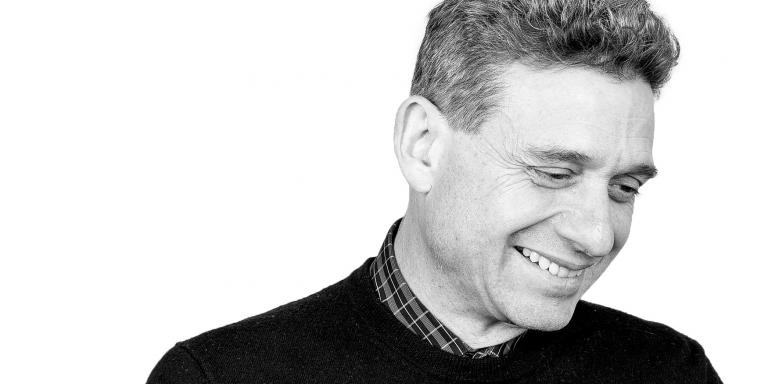 Enrique Suarez featured in ENR's "Top 500 Design Firms: Designing for the New Normal"HED corporate marketing leader Enrique Suarez AIA, LEED AP has been featured in Engineering News Record's article: "Top 500 Design Firms: Designing for the New Normal."
Enrique Suarez featured in ENR's "Top 500 Design Firms: Designing for the New Normal"HED corporate marketing leader Enrique Suarez AIA, LEED AP has been featured in Engineering News Record's article: "Top 500 Design Firms: Designing for the New Normal."
Read what Enrique had to say about changes in our industry at the link below. -
 HED Ranked in ENR Top 500 Design FirmsHED is proud to be listed once again in the Engineer News Record Top 500 Design Firms ranking.
HED Ranked in ENR Top 500 Design FirmsHED is proud to be listed once again in the Engineer News Record Top 500 Design Firms ranking.
From safety to service, structural integrity to sustainability, engineers play a vital role in our integrated process, impacting every aspect of design from concept to construction. They’re the ones who keep it standing. Keep it safe. Make it shine. Save time. Energy. Money. And lives.
HED ranks 187 out of 500 in 2021. View the full list at the link below. -
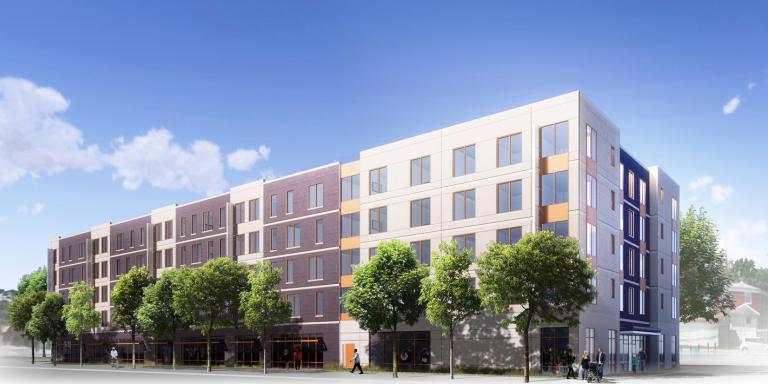 Fifth Avenue Apartments opens for Interfaith Housing Development Corporation!HED-designed Fifth Avenue Apartments opens for Interfaith Housing Development Corporation! The new apartment development provides 72 affordable housing units in the Village of Maywood, a western suburb of Chicago.
Fifth Avenue Apartments opens for Interfaith Housing Development Corporation!HED-designed Fifth Avenue Apartments opens for Interfaith Housing Development Corporation! The new apartment development provides 72 affordable housing units in the Village of Maywood, a western suburb of Chicago.
A smart design and construction approach utilizing offsite prefabricated architectural precast panels meant that the entire building structure could be assembled in just 35 days to bring much-needed affordable housing to the community.
HED is proud to have provided integrated architecture and engineering services for the project.
Read more about the Fifth Avenue Apartments in the link below. -
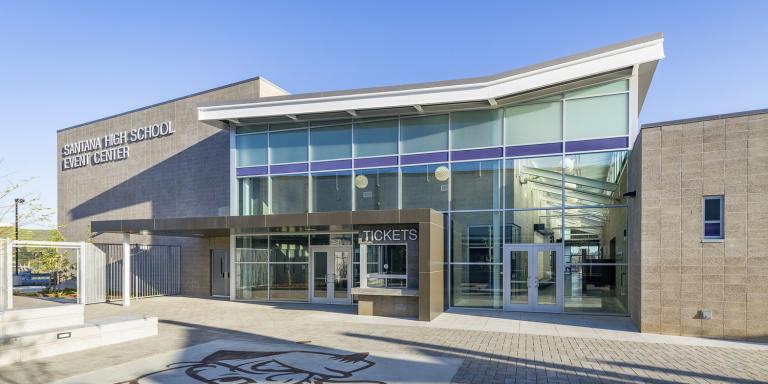 School Construction News: Roundtable with Jennette La QuireJennette La Quire, AIA, NCARB, LEED AP ID+C joined fellow SCN Board members, Tracy Carusi, AIA of Collins Cooper Carusi Architects, and Mark Schoeman, AIA, DBIA of Anderson Brule Architects, to share their thoughtful insights, updates, and observations on modern educational architecture.
School Construction News: Roundtable with Jennette La QuireJennette La Quire, AIA, NCARB, LEED AP ID+C joined fellow SCN Board members, Tracy Carusi, AIA of Collins Cooper Carusi Architects, and Mark Schoeman, AIA, DBIA of Anderson Brule Architects, to share their thoughtful insights, updates, and observations on modern educational architecture.
Learn about their current project portfolio, important industry trends, and how COVID-19 is impacting school design in the link below. -
 PCA has joined HEDHED is pleased to announce its merger with Pacific Cornerstone Architects (PCA), an architecture, interior design, and planning firm with a 27-year history of design leadership across Southern California, PCA brings a seasoned team of experienced architects and designers to the national, integrated HED design team.
PCA has joined HEDHED is pleased to announce its merger with Pacific Cornerstone Architects (PCA), an architecture, interior design, and planning firm with a 27-year history of design leadership across Southern California, PCA brings a seasoned team of experienced architects and designers to the national, integrated HED design team.
“We are committed to strategic growth that increases the firm’s ability to create positive impact for our clients and their stakeholders. Bringing the PCA team into the HED family will align with our vibrant San Diego practice and enable us to make a greater impact in this thriving region and beyond,” said Peter Devereaux, FAIA, Chairman and CEO of HED.
This merger will bring expanded expertise in the life sciences, higher education, and commercial market segments, and will add additional institutional knowledge of the San Diego community to the critical planning and entitlement phases of the design process. Together our expanded capabilities will strengthen relationships within the local and regional development community and provide greater depth and breadth of services.
In the area of life sciences in particular, San Diego has long held a prominent position as a national industry leader. HED and PCA both have long histories of design excellence and leadership in the life sciences as well as other sectors such as higher education. PCA has developed a long history of work for San Diego State University, among other higher education institutions. From dining facilities to residence halls, to learning centers and libraries, the combined higher education portfolio of the two firms is well-suited to serve both university and community college building operators. The merger of these two firms represents a significant combined expertise and experience which will be of tangible benefit to clients.
“We are excited to be able to offer an even more robust suite of integrated design services to our long-time clients,” said Tim Schulze, AIA, Principal and Founding Partner of PCA. “We have already begun significant collaboration with our new colleagues, and we look forward to continuing to develop innovative design solutions in the San Diego community."
-
 HED’s Susan King to Speak at Living Future 2021!Don’t miss this year’s Living Future 2021 Conference where you will catch HED’s very own, Susan King, and other leaders and visionaries dedicated to “deep green sustainability and creating transformative and scalable impact” to the built environment.
HED’s Susan King to Speak at Living Future 2021!Don’t miss this year’s Living Future 2021 Conference where you will catch HED’s very own, Susan King, and other leaders and visionaries dedicated to “deep green sustainability and creating transformative and scalable impact” to the built environment.
This year’s virtual conference is focused on themes of inclusion + unity. Susan will be speaking on Friday, April 23rd, on the Advocacy in Action: Unifying a Multi-Faceted Approach to Solving the Housing Crisis at Scale session.
In this workshop, Susan and other industry experts will share their experience and collective wisdom around solving the housing crisis. Attendees will learn about the concept of Diversity in Density, explore the latest in prefabrication and modular construction, understand existing financial tools and mechanisms for financing affordable housing, and identify the barriers in our financial mechanism for funding affordability and strategize ways to remove these barriers.
Susan F. King, FAIA, LEED AP BD+C, LFA is a Principal with HED Architects. As a Studio Leader for Housing in the Midwest, Susan advocates for both attainable housing and green market transformation of the building industry, she is routinely invited to speak on these topics. As a principal, she leads multi-disciplinary teams towards achieving aesthetically appealing sustainable solutions in a collaborative integrated design setting. She was recognized by Green Building & Design Magazine with a Women in Sustainability Leadership Award in 2016. Most recently she has been an active participant with Living Future Affordable Housing Pilot Cohort 3.
Living Future is a non-profit, cutting-edge green building and design event with the goal to reduce greenhouse gas emissions in the built environment and create a future of Living Buildings. Now in its 15th year, the conference has grown into the International Living Future Institute's flagship event and the leading event for sustainable and regenerative design professionals working towards more just and equitable communities.
-
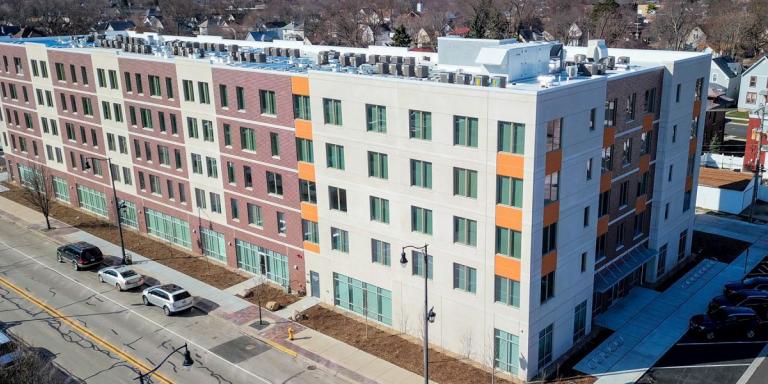 Interfaith Housing Development Corporation Opens HED Designed Fifth Avenue ApartmentsInterfaith Housing Development Corporation (IHDC) and HED are pleased to announce the completion of its latest housing development, Fifth Avenue Apartments, providing 72 new affordable housing units in the Village of Maywood, a western suburb of Chicago. The development has been made possible thanks to four major financial partners along with an energy efficiency grant from ComEd. These financial partners include the Illinois Housing Development Authority (IHDA), the Cook County Department of Planning and Development, the Richman Group Affordable Housing Corporation, and Bank of America. The Chicago Community Loan Fund also provided pre-development lending prior to construction.
Interfaith Housing Development Corporation Opens HED Designed Fifth Avenue ApartmentsInterfaith Housing Development Corporation (IHDC) and HED are pleased to announce the completion of its latest housing development, Fifth Avenue Apartments, providing 72 new affordable housing units in the Village of Maywood, a western suburb of Chicago. The development has been made possible thanks to four major financial partners along with an energy efficiency grant from ComEd. These financial partners include the Illinois Housing Development Authority (IHDA), the Cook County Department of Planning and Development, the Richman Group Affordable Housing Corporation, and Bank of America. The Chicago Community Loan Fund also provided pre-development lending prior to construction. -
 Takeaways from "Back to School, Soon: The Future of Chicago Student Housing," Gene McDonald shares the highlightsRecently HED's Gene McDonald, AIA, LEED Green Assoc., and other Higher Education leaders within Chicago came together for a Bisnow Panel Discussion: “Back to School, Soon: The Future of Chicago Student Housing.”
Takeaways from "Back to School, Soon: The Future of Chicago Student Housing," Gene McDonald shares the highlightsRecently HED's Gene McDonald, AIA, LEED Green Assoc., and other Higher Education leaders within Chicago came together for a Bisnow Panel Discussion: “Back to School, Soon: The Future of Chicago Student Housing.”
With almost a year of remote learning, Chicago universities are preparing for the reality of what might be a normal school year in fall 2021. In this panel, the Windy City’s top university experts on short and long-term student housing facilities pointed out operational strategies and development and design trends to help ensure students stay safe in a post-pandemic environment. Gene McDonald breaks down some of the largest talking points below:
-
 Sharon Woodworth on Healthcare Interior Design 2.0 podcastHealthcare studio leader, Sharon Woodworth, has been featured on the Healthcare Interior Design podcast. On this episode, Sharon shares her personal and professional life stories that have led her to her current work in healthcare, and what the current face of healthcare architecture looks like from her vantage point.
Sharon Woodworth on Healthcare Interior Design 2.0 podcastHealthcare studio leader, Sharon Woodworth, has been featured on the Healthcare Interior Design podcast. On this episode, Sharon shares her personal and professional life stories that have led her to her current work in healthcare, and what the current face of healthcare architecture looks like from her vantage point.
The episode will be available to listen everywhere podcasts are listened to and at the link below! -
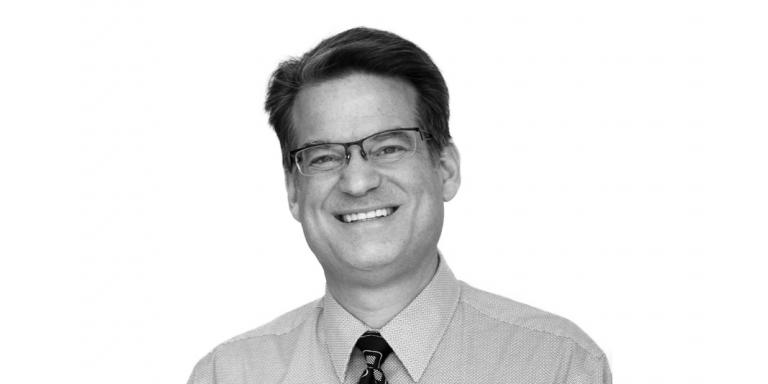 HED welcomes Jeff Gaines to the firm as Associate Principal | Senior Vice President of Architecture in Detroit, MIHED is pleased to welcome Jeffrey Gaines, AIA, AICP, WELL & LEED AP BD+C, to the firm as Associate Principal, Senior Vice President of Architecture in the Detroit, MI, office. Jeff brings over thirty years of experience leading integrated design teams in the execution of technically sophisticated commercial and institutional projects in a range of markets. In this role, Jeff will direct HED Detroit’s architectural design and planning disciplines and oversee complex multidiscipline design efforts, ensuring quality and leading commitment to the daily practice of HED’s core values of integrated practice, critical thinking, and design excellence.
HED welcomes Jeff Gaines to the firm as Associate Principal | Senior Vice President of Architecture in Detroit, MIHED is pleased to welcome Jeffrey Gaines, AIA, AICP, WELL & LEED AP BD+C, to the firm as Associate Principal, Senior Vice President of Architecture in the Detroit, MI, office. Jeff brings over thirty years of experience leading integrated design teams in the execution of technically sophisticated commercial and institutional projects in a range of markets. In this role, Jeff will direct HED Detroit’s architectural design and planning disciplines and oversee complex multidiscipline design efforts, ensuring quality and leading commitment to the daily practice of HED’s core values of integrated practice, critical thinking, and design excellence.
Prior to joining HED, Jeff acted as the Director of Design, Planning and Sustainability at Albert Kahn Associates, Inc. in Detroit, MI, where he led the architectural and planning discipline teams and oversaw the sustainable design commitment of the office. An energetic advocate and leader in the A/E community, he serves as an active member of the City of Northville Planning and Historic District Commissions, the Detroit Committee on the Environment (COTE), the Michigan Chapter of the American Institute of Certified Planners / American Planning Association, and the Detroit Regional Chapter of the U. S. Green Building Council (where he has served as Chair on the Board of Directors).
Jeff’s command of client-focused leadership and exhaustive experience overseeing technical and creative excellence in the practice of architecture will be integral to HED’s effectiveness toward its mission: Advancing Your World, through the Positive Impact of design, our teams create exceptional solutions for our clients, the community, and the world.
-
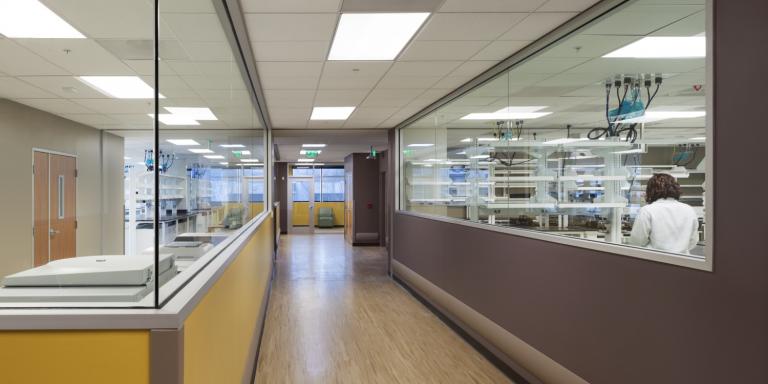 Tips for transforming office space to life science labsHED sector leaders Leonora Georgeoglou and Dan Ringler provide tips on transforming office space to life science labs in this Building Design & Construction thought leadership feature.
Tips for transforming office space to life science labsHED sector leaders Leonora Georgeoglou and Dan Ringler provide tips on transforming office space to life science labs in this Building Design & Construction thought leadership feature.
Click the link below to learn more!
-
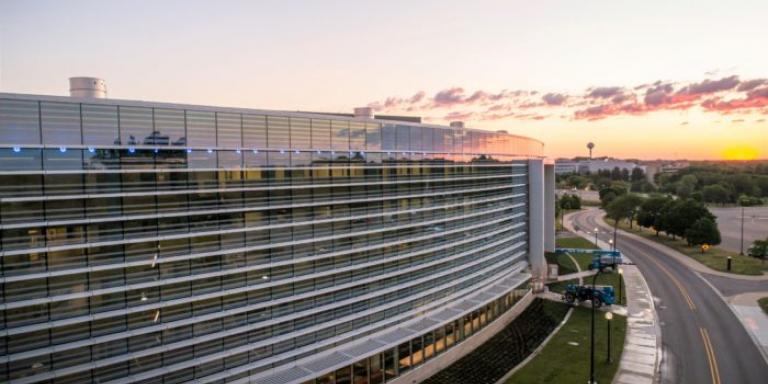 University of Michigan launches ‘dazzling’ HED-designed robotics facility“Search and rescue robots that can aid first responders in disasters. Drones that can assist inspectors in building safer bridges. Prosthetic limbs that can work with the brain to restore functions for stroke victims. Self-driving cars that can save tens of thousands of lives every year.” – Alec Gallimore, Dean of Engineering at the University of Michigan
University of Michigan launches ‘dazzling’ HED-designed robotics facility“Search and rescue robots that can aid first responders in disasters. Drones that can assist inspectors in building safer bridges. Prosthetic limbs that can work with the brain to restore functions for stroke victims. Self-driving cars that can save tens of thousands of lives every year.” – Alec Gallimore, Dean of Engineering at the University of Michigan
Those are just a few of the endless possibilities that will be in the works for years to come inside Michigan’s new Ford Motor Company Robotics Building. The four-story building is a $75-million, 134,000 SF complex and is the new hub of the U-M Robotics Institute. HED is proud to have provided Full-Service Architecture, Structural, Mechanical/Plumbing, and Electrical Engineering.
Read more about the new facility in University Business’ feature story below.
-
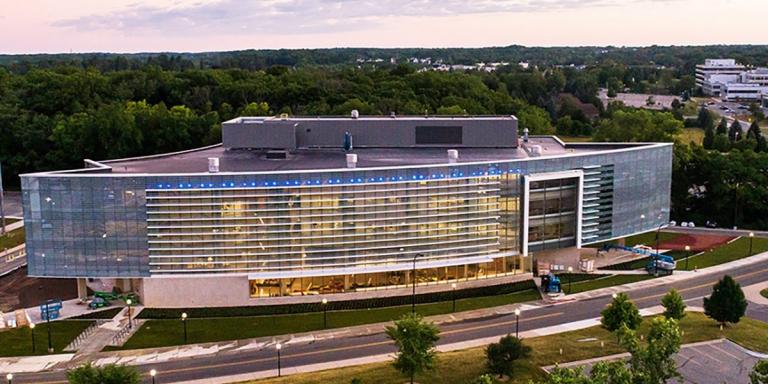 HED celebrates the completion of the University of Michigan Ford Robotics BuildingHED was very excited to celebrate the opening of the University of Michigan’s Ford Motor Company Robotics Building this week!
HED celebrates the completion of the University of Michigan Ford Robotics BuildingHED was very excited to celebrate the opening of the University of Michigan’s Ford Motor Company Robotics Building this week!
Designed by HED, who worked closely with UM and their partner Ford, this world class robotics facility will accelerate the future of advanced and more equitable robotics and mobility, particularly in Southeast Michigan.
The Building is a four-story, $75 million, 134,000-square-foot complex situated on UM's North Campus. As the new hub of the UM Robotics Institute, its first three floors hold adaptable research labs for robots that fly, walk, roll, and augment the human body—as well as classrooms, offices, collaboration zones and makerspaces. Through an inventive agreement, the fourth floor houses Ford’s first robotics and mobility research lab on a university campus with lab and office spaces for 100 Ford researchers and engineers.
“This is an exceptional project that truly embodies our firm’s mission of creating positive impact for our clients and communities,” says Michael Cooper, HED President and Managing Principal in Detroit. “This facility was the result of deep collaboration to design a space that will push the threshold of engineering and robotics and set a tone nationally for excellence in those fields of study. The partnership between industry and academia that this facility represents is going to creative huge value and impact for U-M students and greater Southeast Michigan, and our team feels incredibly gratified to have been a small part of that.” -
 Melina Aluwi Named NewSchool's 2020 Alumni of the YearJoin us in congratulating Melina Aluwi on being named NewSchool’s 2020 Alumni of the Year!
Melina Aluwi Named NewSchool's 2020 Alumni of the YearJoin us in congratulating Melina Aluwi on being named NewSchool’s 2020 Alumni of the Year!
Since graduating from NewSchool with her Master’s in Architecture, Melina Aluwi has continuously given back to the San Diego Community, having served and volunteered for many local professional organizations.
Melina has also served on NewSchool’s Alumni Advisory Board as the Mentorship Committee Chair and Alumni Board President. She founded NewSchool’s Alumni Mentorship Program and was awarded NewSchool Alumni Mentor of the Year.
In her role as Associate Principal and Higher Education Studio Leader for HED’s San Diego office, Melina brings a passion for design, commitment to mentorship, and knowledge sharing that is integral to HED’s culture and growth.
-
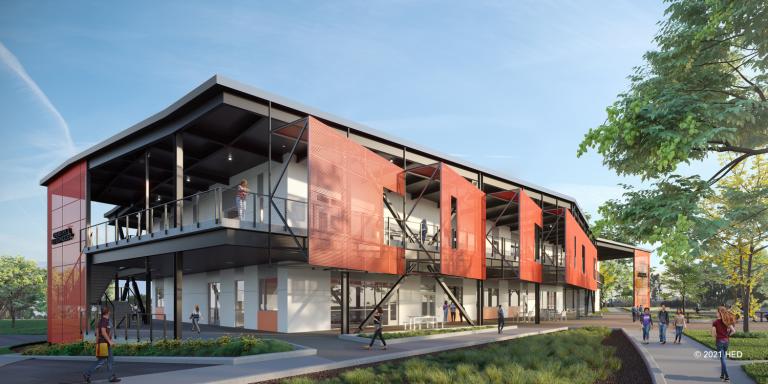 HED is pleased to announce that our team was selected to design the MiraCosta Community College District (MCCD) new Chemistry and Biotechnology BuildingHED is pleased to announce that our San Diego team has been selected by the MiraCosta Community College District (MCCD) to design and construct a new Chemistry and Biotechnology Building on their Oceanside campus. The project, which is to be a design-build partnership between HED and C.W. Driver, will consist of 24,000 sf of new, state-of-the-art STEM instructional space for 21st century learning, including new chemistry labs and 40-person, flexible classrooms. As MCCD’s Biotechnology program continues to expand as its baccalaureate degree comes online, the new building will provide a new, expanded home for the program.
HED is pleased to announce that our team was selected to design the MiraCosta Community College District (MCCD) new Chemistry and Biotechnology BuildingHED is pleased to announce that our San Diego team has been selected by the MiraCosta Community College District (MCCD) to design and construct a new Chemistry and Biotechnology Building on their Oceanside campus. The project, which is to be a design-build partnership between HED and C.W. Driver, will consist of 24,000 sf of new, state-of-the-art STEM instructional space for 21st century learning, including new chemistry labs and 40-person, flexible classrooms. As MCCD’s Biotechnology program continues to expand as its baccalaureate degree comes online, the new building will provide a new, expanded home for the program.
-
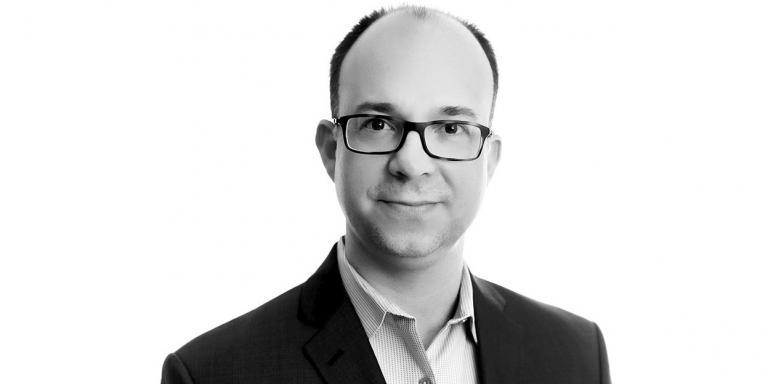 HED is pleased to share that Chad Fowler has been promoted to the role of Managing Principal in Boston.HED is pleased to share that Chad Fowler, AIA, LEED AP, NCARB, has been promoted to the role of Managing Principal in Boston. Chad brings over twenty years of experience in the delivery of complex commercial and institutional projects, particularly in the technically advanced realm of data center design. In this role, Chad will lead Boston’s integrated architectural and engineering design teams and oversee daily operation of the office to deliver exceptional solutions to our clients.
HED is pleased to share that Chad Fowler has been promoted to the role of Managing Principal in Boston.HED is pleased to share that Chad Fowler, AIA, LEED AP, NCARB, has been promoted to the role of Managing Principal in Boston. Chad brings over twenty years of experience in the delivery of complex commercial and institutional projects, particularly in the technically advanced realm of data center design. In this role, Chad will lead Boston’s integrated architectural and engineering design teams and oversee daily operation of the office to deliver exceptional solutions to our clients.
Prior to this role, Chad led the architectural practice team in HED’s Boston office, where he has been known for embodying the culture of HED – one of integrity, resourcefulness, and invention. He is an active advocate and leader in the A/E community and is an active member of the Boston Society of Architects (BSA).
Chad’s advancement to this role, which reflects his continual leadership and commitment to excellence within HED, is integral to our continued effectiveness toward our mission: Advancing Your World, through the Positive Impact of design, our teams create exceptional solutions for our clients, the community, and the world.
-
 HED is pleased to share that Joseph Raia has been promoted to the role of Associate Principal, Architectural Practice Leader in BostonHED is pleased to share that Joseph Raia, AIA, LEED AP, has been promoted to the role of Associate Principal, Architectural Practice Leader in Boston. He brings over 25 years of experience in architectural design and construction leadership to the role, particularly in highly technical and complex project typologies. Joe understands the importance of listening and addressing the issues and goals of many stakeholders while delivering exceptional architectural design clarity, technical acuity, and sustainability, and will leverage these values in his leadership of the Boston practice group.
HED is pleased to share that Joseph Raia has been promoted to the role of Associate Principal, Architectural Practice Leader in BostonHED is pleased to share that Joseph Raia, AIA, LEED AP, has been promoted to the role of Associate Principal, Architectural Practice Leader in Boston. He brings over 25 years of experience in architectural design and construction leadership to the role, particularly in highly technical and complex project typologies. Joe understands the importance of listening and addressing the issues and goals of many stakeholders while delivering exceptional architectural design clarity, technical acuity, and sustainability, and will leverage these values in his leadership of the Boston practice group.
A graduate of the Massachusetts Institute of Technology School of Architecture + Planning (SA+P) with a Master of Science in Architectural Studies, Joseph is dedicated to the growth and appreciation of skill within the craft, serving as a Studio Juror for the Harvard University Graduate School of Design, and as a speaker and presenter for local and national educational events such as the International District Energy Association conference and Build Boston seminars.
Joseph’s advancement to this role, which reflects his commitment to, and leadership in, HED’s principles of critical thinking and design excellence, will be integral to HED’s continued effectiveness toward our mission: Advancing Your World, through the Positive Impact of design, our teams create exceptional solutions for our clients, the community, and the world.
-
 HED listed in Interior Design Magazine's 2021 Top 100 Giants List!We're excited to share that HED has ranked #54 in the Interior Design Top 100 Giants list in 2021!
HED listed in Interior Design Magazine's 2021 Top 100 Giants List!We're excited to share that HED has ranked #54 in the Interior Design Top 100 Giants list in 2021!
Our Interior Architecture practice is rooted in partnership and a shared vision with each of our clients. Through an intensive, hands-on visioning process, we work with clients to build consensus, define their needs and aspirations, and advance their world. We have expertise in every aspect of interior architecture planning, design, and implementation and we are committed to working with our clients to help realize their vision.
We are honored to be a part of the 2021 Interior Design Top 100 Giants list! -
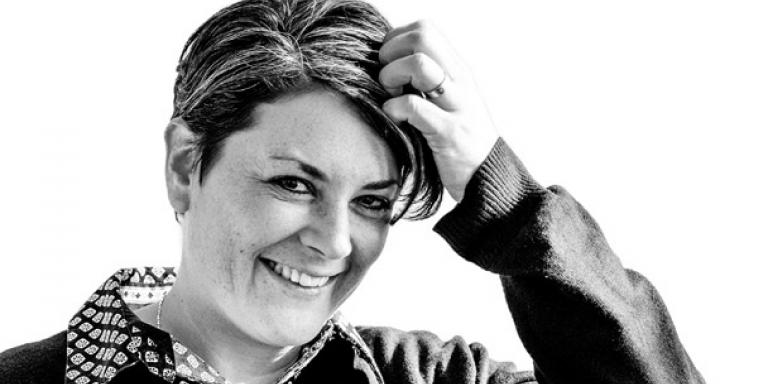 Congratulations to HED’s Anna MacDougall for being named February’s 2021 NorCal WiOps Member of the Month!Congratulations to HED’s Anna MacDougall for being named February’s 2021 NorCal Women in Construction Operations (WiOPS) Member of the Month!
Congratulations to HED’s Anna MacDougall for being named February’s 2021 NorCal WiOps Member of the Month!Congratulations to HED’s Anna MacDougall for being named February’s 2021 NorCal Women in Construction Operations (WiOPS) Member of the Month!
Anna is a skilled Project Manager and Architect with extensive experience in the design and delivery of award-winning buildings of all scales in both California and Europe. She has led high-profile higher education, masterplan, and public realm projects and has many years of experience in complex and sensitive community engagement and management across projects ranging from social housing, science and research facilities, student commons, teaching laboratories and classrooms, public libraries, and children’s museums.
Anna loves to be outside – hiking, biking, and kayaking keep her active and mentally fit. Being able to enjoy her hobbies year-round is a benefit of living in California over the rainy UK.
Please join us in congratulating Anna for being the February Member of the Month! -
 HED named Dallas Fort Worth's Best and Brightest 2021HED is honored to be named a 2021 Winner for Dallas Fort Worth’s Best and Brightest Companies to Work For program! Presented throughout the United States by the National Association for Business Resources (NABR), the program recognizes companies that deliver exceptional human resource practices and an extraordinary commitment to their employees.
HED named Dallas Fort Worth's Best and Brightest 2021HED is honored to be named a 2021 Winner for Dallas Fort Worth’s Best and Brightest Companies to Work For program! Presented throughout the United States by the National Association for Business Resources (NABR), the program recognizes companies that deliver exceptional human resource practices and an extraordinary commitment to their employees.
NABR is an organization that connects, educates, and empowers businesses across the country through focused programs, groundbreaking studies, and field-leading support with the goal of making companies better.
As a company committed to having a Positive Impact on our clients and in the communities where we work, HED strives to create the best place to work where all our employees are valued for their contributions. The Best & Brightest designation validates HED’s efforts and reinforces our mission of “Advancing Your World.”
NABR will be honoring each winning company during their annual winner’s celebration on March 24th, as well as announcing the elite winners in 3 different categories including Best of the Best Small, Medium, and Large Business. For more information on the Best & Brightest program and awards celebration, visit the link below. -
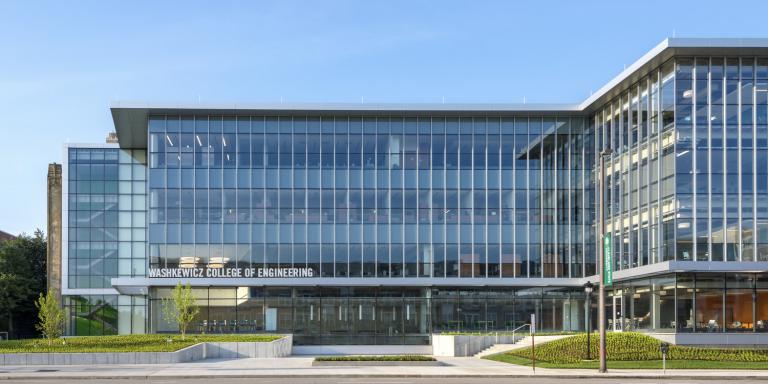 Cleveland State University Washkewicz College of Engineering has been nominated for Building of the Year in the education category by ArchDailyWe're very pleased to share that the Cleveland State University Washkewicz College of Engineering was nominated for Building of the Year in the education category by ArchDaily!
Cleveland State University Washkewicz College of Engineering has been nominated for Building of the Year in the education category by ArchDailyWe're very pleased to share that the Cleveland State University Washkewicz College of Engineering was nominated for Building of the Year in the education category by ArchDaily!
Designed by HED with CBLH Design Inc. serving as the local Architect of Record, this collaboration is training the next generation of engineers through a hands-on experiential curriculum. We hope you'll check out the project and vote for us using the link below! -
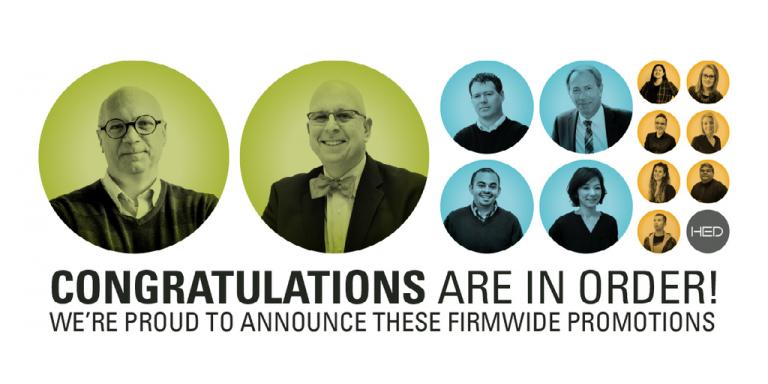 HED announces promotions of two Principals as well as Associate Principals and AssociatesHED is starting the new year with important promotion announcements, naming the following two individuals as new Principals within the firm:
HED announces promotions of two Principals as well as Associate Principals and AssociatesHED is starting the new year with important promotion announcements, naming the following two individuals as new Principals within the firm:
Michael Myers, AIA | Principal / Architecture Discipline Leader in San Francisco
Michael Myers is a licensed Architect with over 35 years in the architectural profession. With a broad range of work experience in the design of many different building types, Michael has also built an exceptional knowledge of some of the most important 3D design technologies utilized across our firm. Between his deft skills at project management, the management of large multi-disciplinary consulting teams, and the implementation of sophisticated architectural technology, he skillfully leads the HED San Francisco office’s design team.
Keith Tyschper, AIA, LEED AP | Principal / Architecture Discipline Leader in Los Angeles
Keith Tyschper has 30 years of architectural experience earned in the Chicago and Los Angeles regions. After joining HED in 2007 with a strong portfolio in the design of multifamily housing, he quickly rose in his position from Project Architect into firm leadership roles with a strong specialty, and national leadership voice, in senior housing. Today he leads the architectural staff in our Los Angeles office and oversees LEAN initiatives and mentorship programs across the entire firm.
Additionally, in recognition of their important work, the firm has also acknowledged the extraordinary efforts and accomplishments of several exceptional individuals through promotions to the role of Associate Principal and Associate, which became effective in the New Year.
New Associate Principals:
Matt Brady, AIA
Tom Christian, AIA
Megumi Hironaka, AIA, WELL AP, LEED AP
Julio Romero, ATD
New Associates:
Caroline Barr
Jennifer Cole, RA
Cindy Ferrer
Emily Havelka, CPSM
Roan Isaku, AIA, NCARB
Wenxin Lin, RA
Rai Quintana
These promotions mark the close of a year to be remembered. In the midst of a global pandemic, HED was able to continue its focus on creating a positive impact in the communities it serves across the country. We hope you will join us in celebrating these individuals! -
 HED welcomes Todd Drouillard, AIA as Science & Technology Sector Leader in DetroitHED is pleased to welcome Todd Drouillard, AIA to the firm as Associate, Science and Technology Sector Leadership in the Detroit office, bringing over twenty-one years of experience in the delivery of complex government and institutional projects as well as a variety of corporate, automotive, aviation, advanced testing and development laboratories, and industrial/manufacturing projects. In this role, Todd will lead integrated architectural and engineering design teams to develop and execute effective strategies for quality project execution in the science and technology sectors.
HED welcomes Todd Drouillard, AIA as Science & Technology Sector Leader in DetroitHED is pleased to welcome Todd Drouillard, AIA to the firm as Associate, Science and Technology Sector Leadership in the Detroit office, bringing over twenty-one years of experience in the delivery of complex government and institutional projects as well as a variety of corporate, automotive, aviation, advanced testing and development laboratories, and industrial/manufacturing projects. In this role, Todd will lead integrated architectural and engineering design teams to develop and execute effective strategies for quality project execution in the science and technology sectors.
Prior to joining HED, Todd acted as Senior Project Manager at Ghafari Associates, where he led multi-discipline teams, ensuring that all participants had a voice and that all objective and expectations were aligned between client stakeholders and team members across internal and external A/E disciplines, contractors, and consultants. He is an active advocate and leader in the A/E community, serving as AIA Michigan Board Secretary, AIA Detroit Director, and as a Director on the Michigan Architectural Foundation Board (MAF).
Todd’s industry knowledge and focus on collaborative design solutions will be integral to HED’s effectiveness toward its mission: Advancing Your World, through the Positive Impact of design, our teams create exceptional solutions for our clients, the community, and the world.
-
 HED designed Fifth Avenue hailed by Chicago Architect's Facade MagazineEntitled "Triumph at Fifth Avenue," Chicago Architect celebrates the new Fifth Avenue project (currently under construction in Maywood, IL) as a potential template for possibility and upcoming changes to affordable suburban housing. Below is a key excerpt from the piece, which you can read in its entirety on Chicago Architect's website using the link below.
HED designed Fifth Avenue hailed by Chicago Architect's Facade MagazineEntitled "Triumph at Fifth Avenue," Chicago Architect celebrates the new Fifth Avenue project (currently under construction in Maywood, IL) as a potential template for possibility and upcoming changes to affordable suburban housing. Below is a key excerpt from the piece, which you can read in its entirety on Chicago Architect's website using the link below.
"National conversations in this tumultuous political climate have swirled around suburban affordable housing; for many architects, developers and suburban residents, the question is not about 'if' it belongs outside of cities’ inner cores, but how they can make it happen. For HED, a new project opportunity in Maywood creates a prototype for high-quality, simple and sustainable affordable housing options called Fifth Avenue Apartments. But building this type of sustainable density isn’t without its challenges, and the team has triumphed over the bumps and detours that can arise when building affordably in suburban environments," says Chicago Architect.
"The 72-unit affordable housing project —developed by Interfaith Housing Development Corporation — was selected in 2018 to participate in the Living Building Challenge’s affordable housing pilot program — the only one selected in Illinois. The homes were designed to achieve the program’s criteria, though they were ultimately not able to achieve the certification due to financial and regulatory barriers. However, the design team continued to push for green features: 'The Living Building Challenge is the most extreme green program out there. When you hit a barrier, it becomes an advocacy tool,' explained HED Principal and Sector Leader Susan King, FAIA. 'We are in advocacy mode now. We hit two main barriers, and we are now working to remove them for future projects in Illinois.' The building is energy-efficient and electricity-centric.
Despite the tight budget, the building was conceived as solar ready, and they have been able to incorporate a 24 kW photovoltaic array from contingency dollars. 'We’ve done so much to enhance cost efficiency; we’re using precast for the exterior, but we did not sacrifice durability when it came to the windows, which are wood with aluminum cladding. We seriously considered polished concrete floors as a cost saving measure, but in the end, the developer was concerned about the institutional perception of exposed concrete for this population,' explained King. The first floor will include commercial space that the city hopes a small grocer could move into, helping to solve food accessibility issues prevalent in the area.
Despite difficulties at every step, HED and Interfaith have turned 'advocacy mode' into a working project that will bring much-needed diversity of housing to the neighborhood. 'I’ve been promoting what I call ‘diversity in density,' said King. 'In a neighborhood, there should be a mix of housing. We know diversity builds resiliency; in planning, it should make for better neighborhoods. Maywood needs everything. They need housing, stores, walkability. And this is one dent in the need for housing.'" -
 HED's Los Angeles office has a new addressEffective 1/4/2021, our Los Angeles office has moved! We can now be found at 550 South Hope Street. Suite 2500, Los Angeles, CA 90071.
HED's Los Angeles office has a new addressEffective 1/4/2021, our Los Angeles office has moved! We can now be found at 550 South Hope Street. Suite 2500, Los Angeles, CA 90071.
Please note that due to COVID-19, we are continuing to limit and restrict access to our offices. For more details on our office policies please reference our contact page and reach out to Los Angeles Managing Principal Brent MIller.
-
 HED ranks 18 in BD+C Top 190 Reconstruction Sector Architecture and AE Firms in 2020We're excited to share that HED has ranked #18 in the Building Design and Construction Top 190 Reconstruction Sector Architecture and AE Firms in 2020!
HED ranks 18 in BD+C Top 190 Reconstruction Sector Architecture and AE Firms in 2020We're excited to share that HED has ranked #18 in the Building Design and Construction Top 190 Reconstruction Sector Architecture and AE Firms in 2020! -
 HED ranks 65 in 2020 BD+C Hotel Sector GiantsHED is pleased to share that our firm has ranked #65 in the Building Design and Construction Top 120 Hotel Sector Giants!
HED ranks 65 in 2020 BD+C Hotel Sector GiantsHED is pleased to share that our firm has ranked #65 in the Building Design and Construction Top 120 Hotel Sector Giants! -
 HED Ranks in the BD+C Top 70 Industrial Sector Architecture and A/E FirmsWe're excited to share that HED has ranked #34 in the Building Design and Construction Top 70 Industrial Sector Architecture and AE Firms in 2020!
HED Ranks in the BD+C Top 70 Industrial Sector Architecture and A/E FirmsWe're excited to share that HED has ranked #34 in the Building Design and Construction Top 70 Industrial Sector Architecture and AE Firms in 2020! -
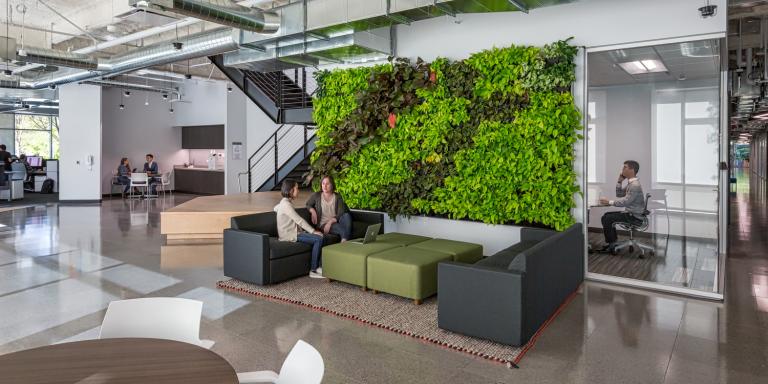 HED ranks #61 in BD+C 2020 Office Sector GiantsHED is pleased to share that our firm has been ranked in Building Design & Construction Magazine's 2020 Giants Report - our firm is #61 in the top 194 Office Sector Architecture, Engineering, and Construction firms!
HED ranks #61 in BD+C 2020 Office Sector GiantsHED is pleased to share that our firm has been ranked in Building Design & Construction Magazine's 2020 Giants Report - our firm is #61 in the top 194 Office Sector Architecture, Engineering, and Construction firms! -
 Key strategic areas to address a safer return to schoolAs we develop strategies to allow students to return to school, we recognize there is no “silver bullet,” and no two institutions’ solution will be the same.
Key strategic areas to address a safer return to schoolAs we develop strategies to allow students to return to school, we recognize there is no “silver bullet,” and no two institutions’ solution will be the same.
However, there are key strategic areas to address for a safe and successful return.
"We have been able to demonstrate, within the context of the pandemic, that a flexibly designed building that employs open building principles can flex to accommodate social distancing and linear circulation to enhance safety. Classes can spread apart by taking advantage of the connections between classrooms and the common areas adjacent through folding glass doors" - HED K-12 Education Sector Leader John Dale.
You can read the list of design considerations and a flexible school case study using the link below. -
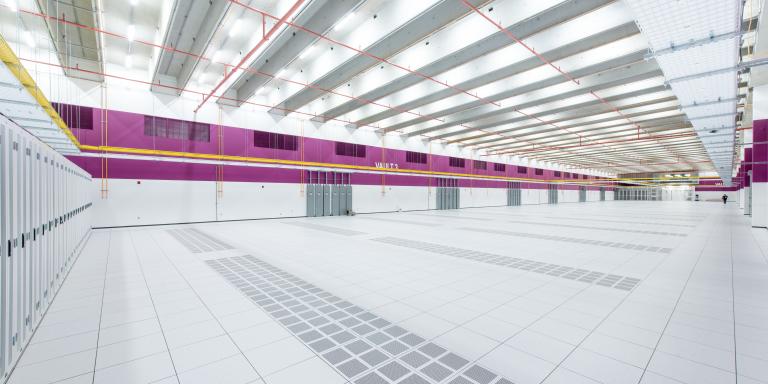 HED ranks #6 in BD+C 2020 Data Center Facilities Sector GiantsHED is pleased to share that our firm has been ranked in Building Design & Construction Magazine's 2020 Giants Report - our firm is #6 in the top 25 Data Center Facilities sector Architecture, Engineering, and Construction firms!
HED ranks #6 in BD+C 2020 Data Center Facilities Sector GiantsHED is pleased to share that our firm has been ranked in Building Design & Construction Magazine's 2020 Giants Report - our firm is #6 in the top 25 Data Center Facilities sector Architecture, Engineering, and Construction firms! -
 HED ranks #27 in BD+C 2020 Healthcare Sector GiantsHED is pleased to share that our firm has been ranked in Building Design + Construction's 2020 Giants Report - our firm is #27 in the top Top 160 healthcare facilities sector architecture, engineering, and construction firms!
HED ranks #27 in BD+C 2020 Healthcare Sector GiantsHED is pleased to share that our firm has been ranked in Building Design + Construction's 2020 Giants Report - our firm is #27 in the top Top 160 healthcare facilities sector architecture, engineering, and construction firms! -
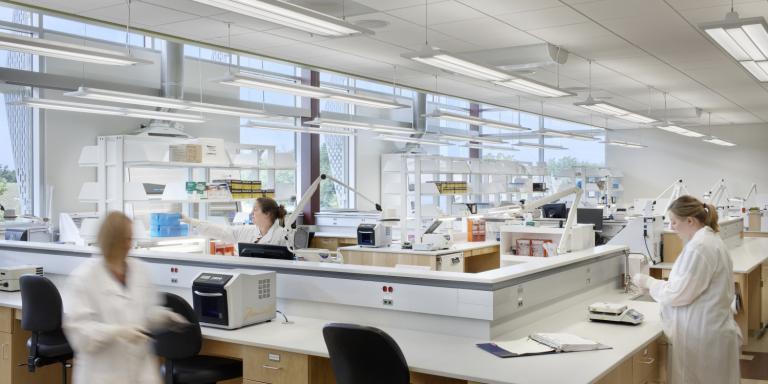 Laboratory Planner Marilee Lloyd's key takeaways from Lab and Research Facilities SummitLabs and research facilities have some of the most stringent building product requirements due to the nature of their business. As a response to these unique requirements, the Labs and Research Facilities Summit brings together the heads of capital planning and facilities from the largest science facilities in the US to discuss issues facing these ever-evolving and complex facilities. It is an invitation-only conference providing a relaxed and intimate platform for knowledge exchange, collaborating on best practices, and exploring the most innovative solutions for research and laboratory spaces.
Laboratory Planner Marilee Lloyd's key takeaways from Lab and Research Facilities SummitLabs and research facilities have some of the most stringent building product requirements due to the nature of their business. As a response to these unique requirements, the Labs and Research Facilities Summit brings together the heads of capital planning and facilities from the largest science facilities in the US to discuss issues facing these ever-evolving and complex facilities. It is an invitation-only conference providing a relaxed and intimate platform for knowledge exchange, collaborating on best practices, and exploring the most innovative solutions for research and laboratory spaces.
If you missed this years conference but are still interested in hearing about some of the key takeaways, HED's Sr. Laboratory Planner Marilee Lloyd, a panelist at this years' summit, has prepared 3 key takeaways. View them at the link below! -
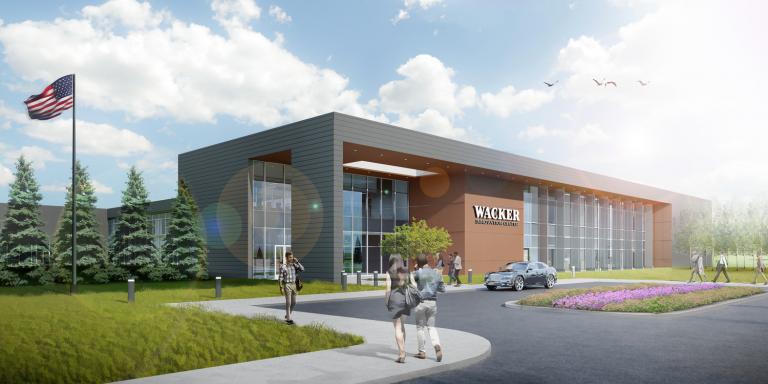 Wacker Chemical North American Innovation Center & Regional Headquarters featured by Lab Manager magazineWe're excited to share that the Wacker HQ project that recently broke ground in Pittsfield Township, MI has been featured by Lab Manager magazine!
Wacker Chemical North American Innovation Center & Regional Headquarters featured by Lab Manager magazineWe're excited to share that the Wacker HQ project that recently broke ground in Pittsfield Township, MI has been featured by Lab Manager magazine!
"The new office and research building for global specialty chemical maker Wacker Chemical has been developed by Kirco and designed by national architecture and engineering firm HED. The project broke ground in late 2020 in Pittsfield Charter Township, just south of Ann Arbor. The building has been designed to enhance employee collaboration and create state-of-the-art R&D laboratory space focused on innovation for the global company. With a capacity for more than 300 employees, the new North American site for the German company will include those who will relocate from Wacker’s current regional headquarters in the city of Adrian, MI, as well as up to 70 new employees to be added in the next five years.
The building’s “extroverted design” will help engage employees and visitors with the surrounding landscape and community context, creating a highly experiential and interactive environment that inspires and activates its occupants. Large, contiguous floor plates, for both open office and lab space environments, provide a high degree of flexibility and opportunity for interaction and collaboration.
The lab spaces are connected by a service corridor that allow for the flow of materials safely to all research spaces within the building. In addition, this provides a point of interaction for team members. To the far left are windows visually linking the labs to the technical workspaces inside the building as well, helping keep visual access amongst collaborators within the team.
In the context of uniting a “divergent lab” with a “new technical workplace,” HED has recently developed its New Scientific Workplace model. Developed as a framework for designing and visualizing trends and new methods of work and research, the New Scientific Workplace establishes a platform for these spaces aimed at creating adaptable spaces that flex with the changing nature of research and work. At Wacker, the open work zones offer opportunities for staff to work at assigned workstations or to work in environments designed for a collaborative or “heads down” work. Under this model, this new workspace truly encompasses the entire building.
The laboratory spaces are open and adaptable, creating a dynamic platform that can be updated and reconfigured as research needs change. The Wacker team expressed the strong desire for the research labs built to be flexible, allowing both the staffing and equipment to be easily updated and changed out over time. Services travel via an integrated service carrier, which can be prefabricated and lifted into position, the open nature of the carrier allows for easy access and changeout of connections.
Environmental sustainability was also a priority for Wacker and the design team as the building developed. The hybrid HVAC solution designed provides single pass air to the lab spaces while driving overall system costs down. The fume hoods are high performance hoods, with automatic sash closers to maximize potential energy savings. Employee wellness and views to daylight and nature were also considered a priority in connecting staff to the outdoors, creating a visual stress relief for the highly focused team. As such, all labs have a view to the exterior, and workstations for technical staff have a view into the lab through to the outside."
You can read the full feature and view more images of the project using the link below to Lab Manager's website. -
 HED ranks #22 in BD+C 2020 Laboratory Facility GiantsHED is pleased to share that our firm has been ranked in Building Design + Construction's 2020 Giants Report - our firm is #22 in the top 60 Laboratory Facilities sector Architecture, Engineering, and Construction firms!
HED ranks #22 in BD+C 2020 Laboratory Facility GiantsHED is pleased to share that our firm has been ranked in Building Design + Construction's 2020 Giants Report - our firm is #22 in the top 60 Laboratory Facilities sector Architecture, Engineering, and Construction firms! -
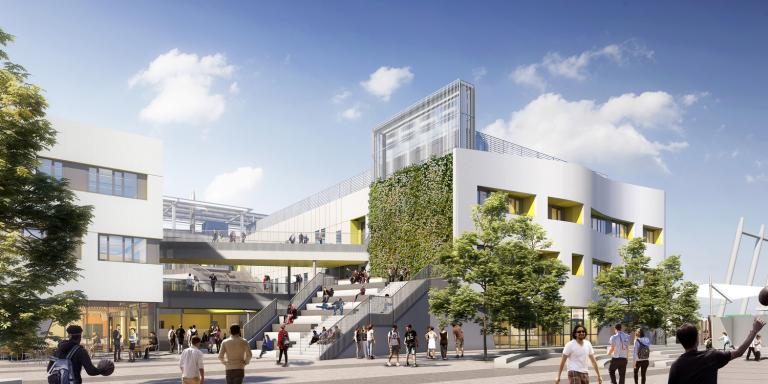 K-12 Sector Leader John Dale Shares Key Strategic Areas to Address to Facilitate a Safer Return to SchoolAs we develop strategies to allow students to return to school, we recognize there is no “silver bullet,” and no two institutions’ solution will be the same.
K-12 Sector Leader John Dale Shares Key Strategic Areas to Address to Facilitate a Safer Return to SchoolAs we develop strategies to allow students to return to school, we recognize there is no “silver bullet,” and no two institutions’ solution will be the same.
There are several key strategic areas to address to facilitate a safer return to school.
Read our take on how the Open Building relates to a safer return to school from John Dale, FAIA, LEED AP using the link below. -
 New Classroom Building Ribbon Cutting at Johnson Elementary SchoolOn Monday, HED along with school representatives and students celebrated the completion of the new 2-story modular classroom building at Johnson Elementary School in El Cajon, CA. Students helped us celebrate the new building by writing and sharing a letter of gratitude to the construction workers and a poem about the new building.
New Classroom Building Ribbon Cutting at Johnson Elementary SchoolOn Monday, HED along with school representatives and students celebrated the completion of the new 2-story modular classroom building at Johnson Elementary School in El Cajon, CA. Students helped us celebrate the new building by writing and sharing a letter of gratitude to the construction workers and a poem about the new building.
HED was commissioned to design permanent modular classroom buildings as part of a multi-campus on-going improvement program for the Cajon Valley Union School District. The new modular building at Johnson Elementary replaces temporary portable classroom spaces for staff and students with the flexibility to adapt to specific circumstances of site, program, and pedagogy. The project was made possible by the District’s voter-approved bond program.
-
 HED ranks #24 in BD+C 2020 K-12 School Sector GiantsHED is pleased to share that our firm has been ranked in Building Design + Construction's 2020 Giants Report - our firm is #24 in the top Top 145 K-12 School Sector Architecture and AE Firms!
HED ranks #24 in BD+C 2020 K-12 School Sector GiantsHED is pleased to share that our firm has been ranked in Building Design + Construction's 2020 Giants Report - our firm is #24 in the top Top 145 K-12 School Sector Architecture and AE Firms! -
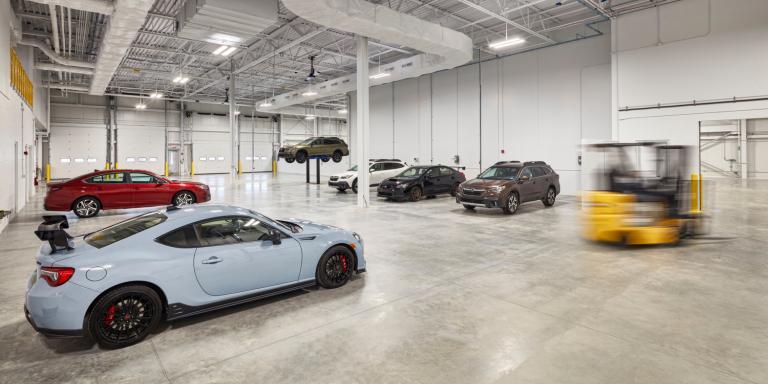 HED ranks #31 in BD+C 2020 Science & Technology Facility GiantsHED is pleased to share that our firm has been ranked in Building Design + Construction's 2020 Giants Report - our firm is #31 in the top 45 Science & Technology Facilities sector Architecture, Engineering, and Construction firms!
HED ranks #31 in BD+C 2020 Science & Technology Facility GiantsHED is pleased to share that our firm has been ranked in Building Design + Construction's 2020 Giants Report - our firm is #31 in the top 45 Science & Technology Facilities sector Architecture, Engineering, and Construction firms! -
 HED supports healthcare system adaptations for COVID-19 vaccine distributionWith the deployment of a COVID-19 vaccine imminent, HED is proud to be working with our clients across the county to complete emergency pharmacy projects to accommodate vaccine storage and distribution.
HED supports healthcare system adaptations for COVID-19 vaccine distributionWith the deployment of a COVID-19 vaccine imminent, HED is proud to be working with our clients across the county to complete emergency pharmacy projects to accommodate vaccine storage and distribution.
HED teams are rapidly deploying projects nationwide that bring together health systems, contractors, pharmacists, vendors, and the Authority Having Jurisdiction (AHJ) to prepare pharmacies to store and distribute the vaccine safely. Acting as the "go to" for these adaptations under tight deadlines, our healthcare teams are upgrading engineering systems to support ultra-low freezers, using emergency protocols to streamline AHJ approvals, releasing equipment specifications early to allow for lead times, and working across disciplines internally and with our partners to begin work immediately.
We are honored to support our healthcare clients in this urgent and essential work and continue to be humbled by the heroic efforts of our healthcare clients to continue in combating this pandemic.
-
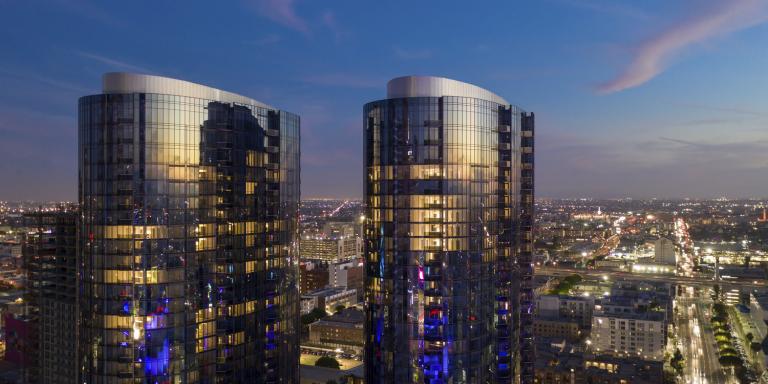 HED ranked 16 in Top 160 BD+C Multifamily Sector GiantsWe're very pleased to share that our firm has ranked #16 in the Building Design + Constructions annual Top 160 Multifamily Sector Architecture and A/E Firms in 2020!
HED ranked 16 in Top 160 BD+C Multifamily Sector GiantsWe're very pleased to share that our firm has ranked #16 in the Building Design + Constructions annual Top 160 Multifamily Sector Architecture and A/E Firms in 2020! -
 Anthology Mayfield Heights featured by Senior Housing NewsHED is pleased to share that the Mayfield Heights project (owned by Anthology Senior Living) has been featured in Senior Housing News.
Anthology Mayfield Heights featured by Senior Housing NewsHED is pleased to share that the Mayfield Heights project (owned by Anthology Senior Living) has been featured in Senior Housing News.
"Anthology Senior Living is bullish on senior living communities that include access to the full continuum of care, and a newly opened community near Cleveland offers a glimpse into the provider’s future.
The provider — which manages develops, acquires, and operates communities as an affiliate of Chicago-based real estate developer CA — is currently moving in residents at its newest community, Anthology of Mayfield Heights. At 192 units, the community in Mayfield Heights, Ohio, is Anthology’s largest.
Though it may resemble a life plan community — with independent living, assisted living and memory care units and even some cottages for residents — it does stand apart from the product type in a few crucial ways. For instance, the community does not have an entry fee component, with rental rates starting at $2,800. The community also lacks a skilled nursing or rehab component, with Anthology opting to partner with third-party service providers to offer therapy, home health or hospice to residents that need it.
Currently, Anthology of Mayfield Heights exists somewhat as an outlier in CA’s Anthology portfolio of nearly 30 communities — but it won’t stay that way for long, according to Andrew Agins, senior vice president of asset management at Anthology.
“There are several differentiators for this community relative to the competition in that market, and relative to what’s in our existing portfolio,” Agins told SHN. ”And you’re going to see a lot more of these types of communities from us in the future.”
Anthology’s decision to focus on full-continuum developments that stand apart from life plan communities is similar to moves made by some other senior living companies, such as Avamere and its Ovation senior housing brand.
Focus on the full continuum
Previously, Anthology focused on communities ranging from 100 to 120 units, typically for residents with specific care needs. But with the opening in Mayfield Heights, Anthology is making a dedicated push toward communities that serve residents along the full continuum of care.
“To create a smaller community with a very specific focus, you’re targeting such a small piece of that market,” Agins said. “But if you’re offering different price points, different care services, different amenities spaces, different dining rooms, and you have a lot of options, you can serve residents more specifically to their needs.”
Mayfield Heights represents a new direction in terms of how CA and Anthology think about design and amenities. The campus consists of a main building surrounded by 10 independent living cottages. The cottages, in particular, were a strong selling point for prospective residents and almost all were sold during pre-leasing, Agins added. Each cottage has two units that share a wall, with ranch-style floorplans that span 1,400 square feet.
“We’ve had a couple of communities now where we’ve had cottages, and they’ve always been the first to sell at high rates,” Agins said. “And residents love living there.”
Anthology of Mayfield Heights comes with a new design approach that focuses on high-end finishes and modern lifestyle amenities. The community has multiple dining venues, a business center, clubhouse, fitness center, golf simulator, art galleries, library, pottery room and a theater.
Architectural firm HED, which partnered with Anthology on Mayfield Heights, included some biophilic concepts in the community’s design. They include rooms with balconies, outdoor courtyards that serve as activity hubs, and areas for leisure activities such as swimming, pickleball, gardening and meditating." -
 HED announces changes to its COVID-19 CA GuidelinesAs we face the evolving situation of the COVID-19 health crisis, we are continuing to support our clients during while keeping the health and safety of our employees at the forefront. Due to the changing concerns around this outbreak, HED has modified its updated CA Guidelines, initially issued on March 26, 2020.
HED announces changes to its COVID-19 CA GuidelinesAs we face the evolving situation of the COVID-19 health crisis, we are continuing to support our clients during while keeping the health and safety of our employees at the forefront. Due to the changing concerns around this outbreak, HED has modified its updated CA Guidelines, initially issued on March 26, 2020.
HED has made modifications to two prior directives pertaining to PPE - the full and updated guidelines are stated here:
• Weekly OAC meetings or other coordination meetings should be handled via Zoom meetings.
• Limited specific on-site services that are required to support construction may include the following:
o Mockup reviews
o Field observation reports
o Pay app reviews
o Punch walks
• Prior to going on site, the Project Manager or PIC needs to ensure that the General Contractor is following CDC guidelines and reinforcing ‘social distancing’ for safety.
• Prior to directing any staff to go to a jobsite, the Project Manager and PIC need to check with the staff know that if they are comfortable with going to the site. If a staff member is uncomfortable going to the site due to COVID 19 related concerns or is in a high-risk group, they should not go to the site and should continue to shelter in place. In this event, please work with your Discipline Leaders to determine an alternate staff member who can make the site visits.
• Any staff member that is ill, should not go to the construction site.
• All HED employees must wear a mask, in addition any site specific items must be observed. A face shield should be worn in addition to the mask if 6 foot distance cannot be consistently maintained.
• When conducting site visits, there will be no requirement to enter construction trailers or confined spaces involuntarily. Physical distancing and mutual wearing of PPE/face mask is a minimum requirement for voluntary site trailer entry. Duration of time in the trailer if entered, should be limited to 15 minutes or less, either intermittently or consecutively, in a 24 hour period.
• For project access on occupied sites, the Project Manager or PIC needs to request that project personnel be provided a separate entry/access point that will allow the project team to better manage the human contact, interaction and social distancing elements.
• If team members are required to traverse corridors or facilities utilized by occupants, for instance in hospitals, the Project Manager or PIC needs to request those corridors be cleared for project personnel to quickly and efficiently perform site work that must be completed.
• If possible, request to conduct the site visits after the tradesman have left the site for the day.
• Make sure that the site visits are organized (e.g. prepare and issue agenda) to avoid protracted and inefficient site visits.
• In certain cases, it may not be required for our staff to conduct a physical site visit to observe construction. Consider having the General Contractor provide photographs for those conditions that are amenable to that type of review.
• Our contracts may require a specific number of site visits, the Project Manager or PIC should check with the Client and General Contractor to determine if less frequent visits can be made as a result of the current circumstance without impact to the quality of work, determination of conformance to the Contract Documents and/or schedule for construction.
• When conducting a site visit, please complete a Site Observation report and make note on the report that the site observation was conducted during the “COVID-19 Outbreak.” This is just good practice to note that we continued to provide site observations during this period of time.
If you have any other concerns or questions regarding any aspect of providing CA services during this time, please reach out to your HED contact for details.
-
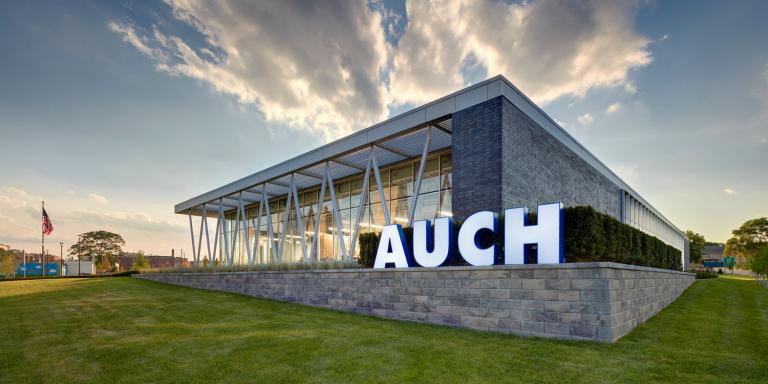 AUCH Construction Receives 2020 USGBC Detroit Leadership AwardHED is proud to announce the AUCH Construction New Headquarters project has been recognized as one of the 2020 USGBC Detroit Leadership Award Winners! USGBC selected the project as a winner due to HED's commitment to sustainability and intentional planning on sustainable sites and material resources.
AUCH Construction Receives 2020 USGBC Detroit Leadership AwardHED is proud to announce the AUCH Construction New Headquarters project has been recognized as one of the 2020 USGBC Detroit Leadership Award Winners! USGBC selected the project as a winner due to HED's commitment to sustainability and intentional planning on sustainable sites and material resources.
The design of the new headquarters reflects the 109-year-old contracting firm’s pride in its history, commitment to investing in its surrounding community and company culture of openness, inclusion and evolution. Easily accommodating Auch’s current 65-person staff with room to grow, the new headquarters also reflects employees’ commitment to sustainability, and is certified LEED Gold.
-
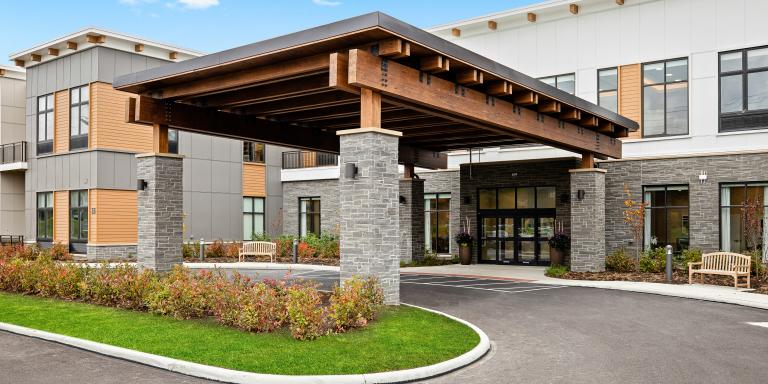 Anthology Senior Living Opens 180-Unit Property in ClevelandAnthology Senior Living, a new organization created by real estate development firm CA Ventures, has opened Anthology of Mayfield Heights in suburban Cleveland. The property is home to 180 independent living, assisted living, and memory care residences. The community serves as the company’s first “Life Plan Community,” a new design strategy for seniors housing created in collaboration with HED. The Anthology of Mayfield Heights community amenities includes a swimming pool, multiple dining options, fitness center, library, and theater.
Anthology Senior Living Opens 180-Unit Property in ClevelandAnthology Senior Living, a new organization created by real estate development firm CA Ventures, has opened Anthology of Mayfield Heights in suburban Cleveland. The property is home to 180 independent living, assisted living, and memory care residences. The community serves as the company’s first “Life Plan Community,” a new design strategy for seniors housing created in collaboration with HED. The Anthology of Mayfield Heights community amenities includes a swimming pool, multiple dining options, fitness center, library, and theater. -
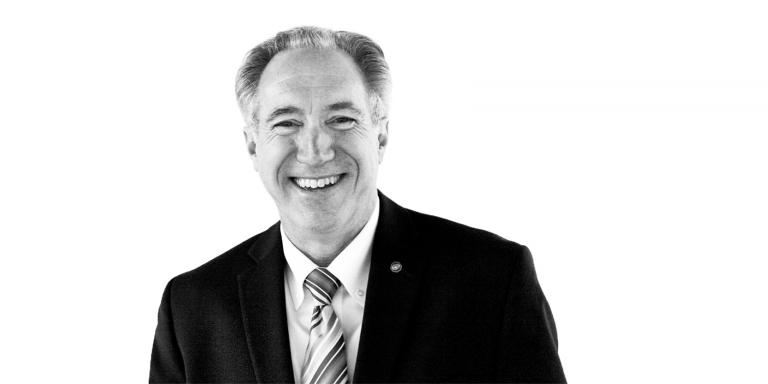 Peter Devereaux Named Senior Fellow of the Design Futures Council!HED is excited to share that our Chairman and CEO, Peter Devereaux, FAIA, LEED AP, has been named a 2020 Senior Fellow by the Design Futures Council (DFC)!
Peter Devereaux Named Senior Fellow of the Design Futures Council!HED is excited to share that our Chairman and CEO, Peter Devereaux, FAIA, LEED AP, has been named a 2020 Senior Fellow by the Design Futures Council (DFC)!
The Design Futures Council (DFC) is a gathering of development, architecture, design, engineering, construction, product, and technology leaders who explore global trends, challenges, and opportunities to advance innovation and shape the future of architecture, engineering, construction and design. Each year the DFC convenes summits on issues of strategic importance to leaders such as technology and applied innovation, collaboration, education and talent, sustainability, and the business of design. By convening summits on central issues, including sustainability, education, and business leadership, the Council promotes collaboration across multiple disciplines. Together, its members and senior fellows uncover insights that move the built environment industry toward social and environmental wholeness.
The Senior Fellows program, which now includes some 200 distinguished leaders, honors its members’ significant contributions to the built environment industry disciplines. The council introduced the newest group of inductees to this exclusive program during their two-day online Leadership Summit on the Business of Design, held on November 11th and 12th.
"The Design Futures Council regularly brings together a diverse and engaging group of thought leaders connected to the built environment for an exchange of ideas that spark innovation," says Devereaux. "I’m so proud to be associated with this organization and the discussions we have on technology, sustainable design, the business of design and design education. I am humbled and honored to be included in this year’s class of DFC Senior Fellows.”
To be inducted, candidates must have a consistent and successful career in built environment industry professions extending a minimum of 20 years while achieving indisputable leadership in business, design, education, technology, and/or innovation that has raised the performance of the organizations they have led, as well as be recognized by peers at the Design Futures Council as actively contributing to move the whole community forward.
The council’s Senior Fellowship includes noted architects, designers and educators, as well as thought leaders from other disciplines and practices, including David Adjaye, Steven Holl, Frank Gehry, Sir Norman Foster, Zaha Hadid, Maya Lin, Bruce Mau, John Maeda, Milton Glaser, Jan Gehl, and Al Gore.
"Peter’s induction to the Senior Fellows of the Design Futures Council is a well-deserved recognition for his significant contributions to the architectural profession and the built environment," says Tania Van Herle, Corporate Systems Leader with HED, "Serving as a mentor to me over my career, Peter embodies the key traits of a Senior Fellow: leading our firm and others in addressing the complex issues facing our industry, driving innovation in a socially and environmentally responsible manner, and serving as a voice for the importance design plays in our world."
Please join us in congratulating Peter on this great distinction!
-
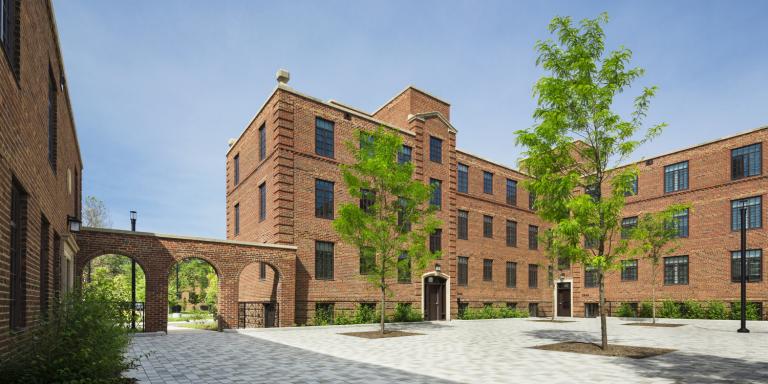 Lathrop wins Chicago AIA Design Excellence Award, ENR Midwest's 2020 Best Projects and the recipient of the 2020 Landmark Preservation Award for RehabilitationHow can developers and non-profits invest in an urban community successfully? Particularly historic or long-neglected neighborhoods?
Lathrop wins Chicago AIA Design Excellence Award, ENR Midwest's 2020 Best Projects and the recipient of the 2020 Landmark Preservation Award for RehabilitationHow can developers and non-profits invest in an urban community successfully? Particularly historic or long-neglected neighborhoods?
Through the right partnerships and a clear strategic vision, it's possible to create award-winning solutions that repair the urban fabric - as demonstrated with the recently completed Julia C. Lathrop Homes in northwest Chicago. Together with a large, dedicated team, HED led the restoration of historic affordable housing into a reinvigorated mixed-use riverfront community.
-
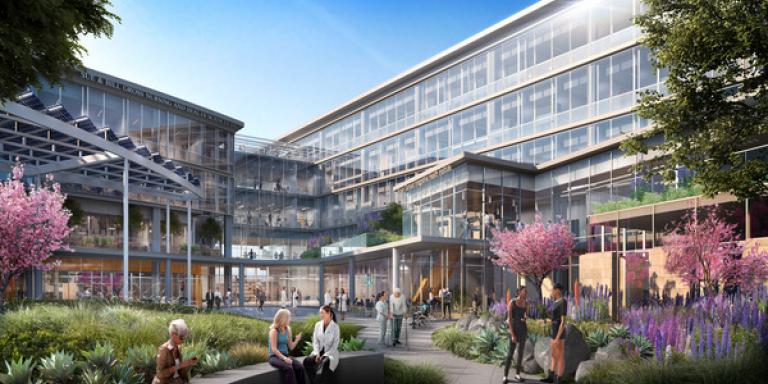 News of the construction at the new Health Sciences Complex at UC Irvine has been featured in high profile!The project is a flagship for the future of health education. “UCI is creating a national “one-health” model for discovery, teaching, and healing that brings together the strengths of the disciplines of medicine, nursing, pharmacy, and population health,” said vice chancellor for health affairs, Steve Goldstein. “These two new buildings, part of our expanded health sciences campus, are designed to foster the creation of the diverse healthcare workforce of tomorrow. The facilities are built to enable interprofessional education and a future of team-based care that benefits from healthcare providers that operate in synchrony to support health and wellness.”
News of the construction at the new Health Sciences Complex at UC Irvine has been featured in high profile!The project is a flagship for the future of health education. “UCI is creating a national “one-health” model for discovery, teaching, and healing that brings together the strengths of the disciplines of medicine, nursing, pharmacy, and population health,” said vice chancellor for health affairs, Steve Goldstein. “These two new buildings, part of our expanded health sciences campus, are designed to foster the creation of the diverse healthcare workforce of tomorrow. The facilities are built to enable interprofessional education and a future of team-based care that benefits from healthcare providers that operate in synchrony to support health and wellness.”
Design strategies for the new buildings on the UCI campus were strongly influenced by biophilia, the human tendency to interact with other forms of life in nature, and attention to wellness at all scales. Occupant access to light, air, views of vegetation and water, and other considerations, all support the overall mission of the complex and the schools.
The health science complex includes a 150-seat auditorium, a central courtyard that connects with the existing Gavin Herbert Eye Institute, landscape design elements that support activities such as yoga and tai chi, a Zen garden, and a 600-foot-long wellness walk that leads to the School of Medicine’s Biomedical Research Center.
-
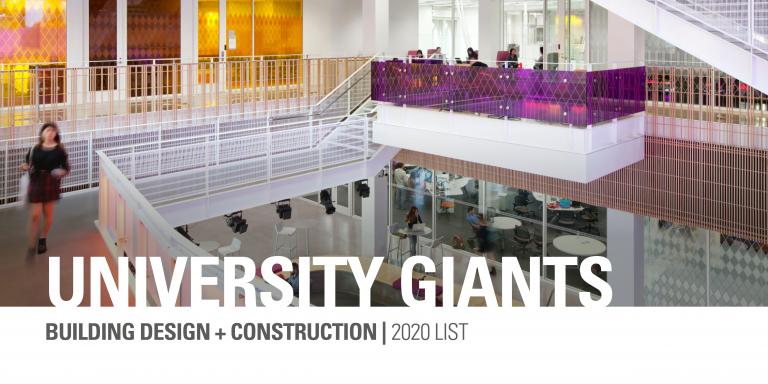 HED ranks #27 in BD+C 2020 University Giants Top A/E FirmsHED is pleased to share that our firm has been ranked in Building Design + Construction's 2020 Giants Report - our firm is #27 in the top 153 Higher Education Architecture, Engineering, and Construction firms.
HED ranks #27 in BD+C 2020 University Giants Top A/E FirmsHED is pleased to share that our firm has been ranked in Building Design + Construction's 2020 Giants Report - our firm is #27 in the top 153 Higher Education Architecture, Engineering, and Construction firms. -
 Metropolis wins ACI Southern California 2020 Excellent Use of Concrete in Residential Construction AwardHED is very pleased to share that the Metropolis Towers in Los Angeles, CA have been awarded the Excellent Use of Concrete in Residential Construction Award by the Southern California chapter of the american Concrete Institute (ACI)! This award honors creativity in the use of concrete in residential design and construction, and recognizes innovation, technology, and excellence in projects specific to Southern California and it's unique requirements.
Metropolis wins ACI Southern California 2020 Excellent Use of Concrete in Residential Construction AwardHED is very pleased to share that the Metropolis Towers in Los Angeles, CA have been awarded the Excellent Use of Concrete in Residential Construction Award by the Southern California chapter of the american Concrete Institute (ACI)! This award honors creativity in the use of concrete in residential design and construction, and recognizes innovation, technology, and excellence in projects specific to Southern California and it's unique requirements.
-
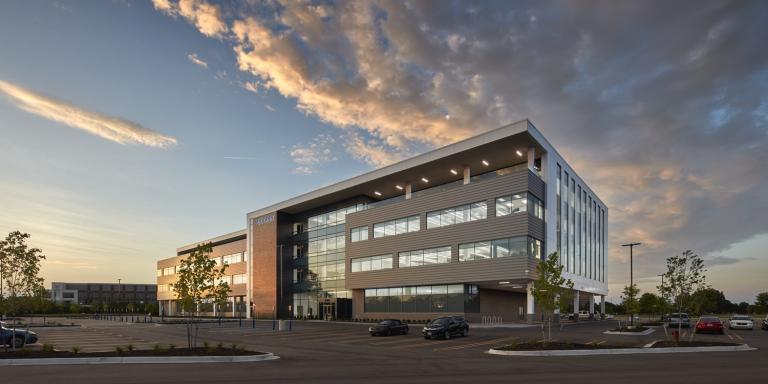 Veoneer featured in CAM Magazine's Top 12 Projects of the YearHED is excited to share the latest issue of Construction Association of Michigan (CAM) Magazine's Top 12 Projects of 2020 issue, featuring the Veoneer North American Technical Competence Center (NATCC) in Southfield, MI!
Veoneer featured in CAM Magazine's Top 12 Projects of the YearHED is excited to share the latest issue of Construction Association of Michigan (CAM) Magazine's Top 12 Projects of 2020 issue, featuring the Veoneer North American Technical Competence Center (NATCC) in Southfield, MI!
Designed by HED to help shape the company’s future in autonomous driving and active safety systems, the new technical center features both office and automotive testing spaces. Research and testing labs most effectively met on a first-floor ground level location with amenities on the higher floors. This unique stacking of the program allowed the new 180,000 square foot facility to be contained within a very compact, cost-effective four-story volume to maximize the square footage and overall potential of the site.
"With the need for multiple uses within the same structure, HED's designers sought to stack the program with large structural clear spans on the first floor for testing, team workplace platforms on the second and third floors, and amenities on the top floor.
Jutting out from the business park, Veoneer’s sleek black, grey and white design with modern paneling and large windows provides a duality of modernism and nature coexisting into the horizon for the benefit of a signature identity and work practicalities alike. 'The progressive palette set it off from its surroundings. Many other buildings in the area have the traditional safe building palettes. This one has a more European look, especially with the cutout terrace as an architectural feature,' said HED architect Jack Bullo.
-
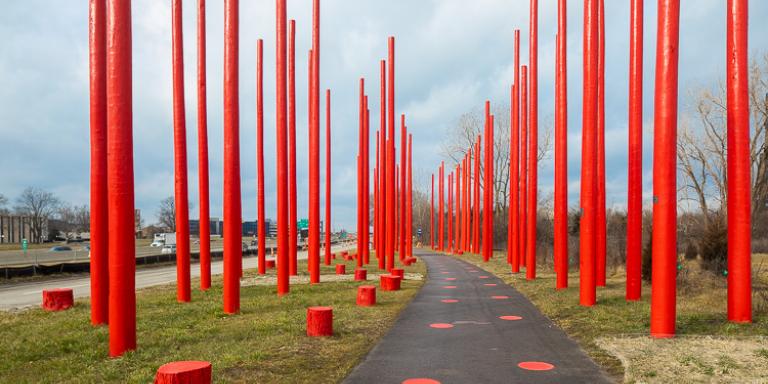 Red Pole Park & Ford Credit Motor Company Courtyard Receive Michigan ASLA AwardsHED is pleased to share that the Red Pole Park project and the Ford Credit Courtyard have each received a Design Merit Award from the Michigan Chapter of the American Society of Landscape Architects (ASLA).
Red Pole Park & Ford Credit Motor Company Courtyard Receive Michigan ASLA AwardsHED is pleased to share that the Red Pole Park project and the Ford Credit Courtyard have each received a Design Merit Award from the Michigan Chapter of the American Society of Landscape Architects (ASLA).
Red Pole Park
As part of a new pedestrian and bike path, the Red Pole Park is the first in a series of “landscape moments,” or outdoor rooms, that heighten both the pedestrian experience and driver awareness of the path. An environmental art piece that is visible from the adjacent freeway as well as the pathway, Red Pole Park is a Placemaking feature that has created a buzz for the City. It is experienced from within the artwork, from freeway passersby, and from building viewpoints. The design concept was to metaphorically represent the people of the city standing side by side. The bright red color was selected as a symbol of strength and the color of energy, love and passion, that inspires citizens to action as well as being high-visibility. This project is significant in that it demonstrates the breadth of influence that landscape architecture can provide for community vitality and it shows how unique, environmentally-scaled art can enhance awareness and Placemaking to change perceptions of a walkable city.
Video property of Michigan Economic Development Corporation -
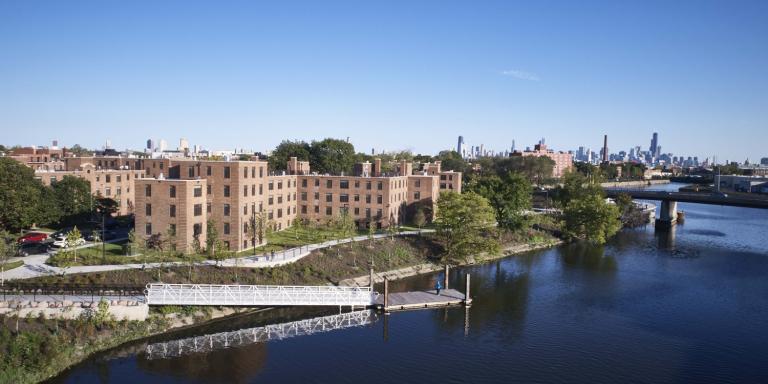 Lathrop Homes receives 2020 Landmarks IL Richard H. Driehaus Foundation Preservation Award for RehabilitationHED is both honored and gratified to share that the Lathrop Homes has been awarded the ENR Midwest Best Project of 2020 Residential/Hospitality category and more recently the Landmarks Illinois Richard H. Driehaus Foundation Preservation Award for Rehabilitation!
Lathrop Homes receives 2020 Landmarks IL Richard H. Driehaus Foundation Preservation Award for RehabilitationHED is both honored and gratified to share that the Lathrop Homes has been awarded the ENR Midwest Best Project of 2020 Residential/Hospitality category and more recently the Landmarks Illinois Richard H. Driehaus Foundation Preservation Award for Rehabilitation!
Landmarks Illinois is the state’s leading voice for historic preservation and is a key facilitator, promoter and educator on historic preservation, encompassing architecturally and historically significant sites, structures and districts in all the cities, towns and rural areas of Illinois. As stated on Landmark's website:
"A Nationally Registered Historic Place - the Julia C. Lathrop Homes project has produced 414 mixed-income residences for Chicago’s North Side and restored 16 of the original 32 buildings first constructed in 1938 under the Public Works Administration. The first phase of the project – completed in 2019 – is the result of a seven-year planning process led by Lathrop Community Partners (LCP) that included community engagement and thoughtful consideration for how one of the nation’s earliest public housing projects should be reused to serve residents. The rehabilitated campus is home to two- and three-story, walk-up rowhouses, property management and retail space, a boat house, woodshop and a future community room for residents. The property’s Great Lawn, which fronts the Chicago River, originally a Jens Jensen design, has also been restored as a green space for both the Lathrop residents and the surrounding community to enjoy." -
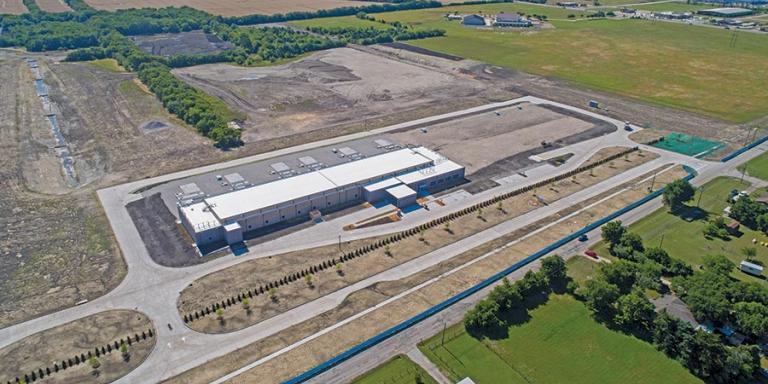 Compass Red Oak I Wins ENR Manufacturing Award of MeritHED is very pleased to share that the Compass Red Oak I Data Center has been awarded the ENR Texas & Louisiana Best Projects 2020 - Manufacturing Award of Merit!
Compass Red Oak I Wins ENR Manufacturing Award of MeritHED is very pleased to share that the Compass Red Oak I Data Center has been awarded the ENR Texas & Louisiana Best Projects 2020 - Manufacturing Award of Merit!
In delivering the first data center on a new 165-acre campus in Red Oak, Texas, the project team battled 43 rain days—more than twice the amount anticipated based on a 10-year average for the area. Despite the above average rainfall, the team completed precast erection ahead of schedule. To stay on an accelerated schedule, precast erection work continued throughout the installation of underground utilities and placing concrete. The team moved roughly 20% of worker hours off site, including for the prefabrication of medium voltage duct banks. -
 Laboratory Planner Marilee Lloyd Shares Laboratory Design Trends & InsightsThe divergent lab is one that anticipates and adapts as needs change, supporting research by establishing a framework that supports the greatest variety of research directions while anticipating future demands as researchers continue to discover.
Laboratory Planner Marilee Lloyd Shares Laboratory Design Trends & InsightsThe divergent lab is one that anticipates and adapts as needs change, supporting research by establishing a framework that supports the greatest variety of research directions while anticipating future demands as researchers continue to discover.
There are several key drivers, or trends, in laboratory design which are supported by a Divergent Laboratory and should be discussed as any research facility is developed...
Read our take on the trends from Laboratory Planner Marilee Lloyd, AIA using the link below. -
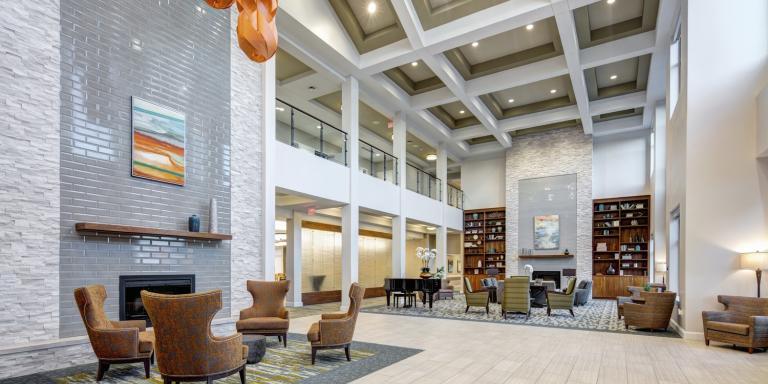 Drew Roskos' "Incorporating the Pandemic Experience into Design" in Seniors Housing BusinessRecently Senior Housing Sector Leader Drew Roskos' thoughts on Incorporating the Pandemic Experience into Design was published in Seniors Housing Business, you can use the link below to read the article there.
Drew Roskos' "Incorporating the Pandemic Experience into Design" in Seniors Housing BusinessRecently Senior Housing Sector Leader Drew Roskos' thoughts on Incorporating the Pandemic Experience into Design was published in Seniors Housing Business, you can use the link below to read the article there.
"Now in month six of our country’s full-scale reaction to the COVID-19 pandemic, we are all embracing today’s heightened awareness of public health across the board, especially in our field of senior living.
As of this writing, roughly one-third of COVID-19 cases reported have been in senior living communities. As research continues to teach us more about the spread of the virus who is at the greatest risk, we are also likely all growing in our realization of how this pandemic experience will impact the creation of the senior living facilities of the future.
Our national housing team at HED is working to layer pandemic-related design thinking in with the accumulated design understanding of best design practices. While certainly our healthcare design colleagues, and many of us working in the housing sector, have already considered traditional germ and disease flow for years, we know this pandemic will increase the expectations of occupants, developers and building visitors for decades to come — as it should.
What has not changed, though, is our insistence on keeping quality of life and resident happiness as the priority for design success. For both residents and staff, a community is only successful if it serves the needs of the occupants. So, when it comes to both quality of life and health, these groups will always warrant the most important consideration.
What we need to hold on to
Senior living communities that are in dense areas with a strong connection — both physically and programmatically — to the larger, public community will continue to be the most successful and the healthiest environments for older adults. Social connectivity, and its impact on mental and physical health, will continue to be a top priority of this population group, both during the remainder of this pandemic event and long after. It’s an aspect that we can’t lose sight of on the heels of this experience.
We need to continue to actively solve for those needs while also incorporating healthy design responses to today’s research around this virus and other communicable diseases. Our mandate will be to find a balance between helping families be comforted by this new level of care without feeling constricted by it.
Well before we knew of COVID-19, senior living communities would change their operations or increase physical distancing as a result of busy flu seasons, pneumonia outbreaks or otherwise. Programming and scheduled activities changed to account for these concerns, and staff members wore masks, gloves and other personal protective equipment (PPE) in order to do their part in containing these germs.
But with a heightened consumer awareness of these kinds of health challenges now, we can all expect a more careful eye on the facility itself and its role in disease spread, especially when potential residents are considering their options.
Additionally, the seniors housing industry was creatively moving to utilize more external resources in fulfilling the care of their patients. From telehealth visits to video-based activity engagement, these systemic changes were already helping to reduce the outside visits from excess people.
As this shift toward external care providers, and a reduction in onsite staff continues much more on the road ahead, it is my hope that we see a balance on our facilities’ accommodation of family and visits with loved ones, and less on providers.
How will we adapt?
To start, the first adaptation we need to make is to the design process itself.
From the onset of a facility’s design effort, we need to be prepared to also design what we are calling a “health management overlay.” This overlay should be crafted with operational leaders to ensure the feasibility of specific ideas in the event of another public health crisis, or even smaller-scale crises that we will now want to be better prepared for.
Operators must consider everything from the spatial needs of telehealth appointments to where the extra chairs are stored when social distancing; and from the creation of processing spaces to identifying places for the additional location of permanent hand washing stations. This new overlay opportunity will allow a facility to be designed with a typical health condition in mind, while preparing for these kinds of frightening atypical events as well.
When it comes to more permanent physical design changes for future facilities, there are a few that will need to be implemented without a doubt.
One of those is a greater focus on HVAC design — considering adding zones and increasing air filtration as a result of this pandemic. While mechanical systems have moved toward more efficient choices in an effort to reduce energy consumption, these new lenses of filtration effectiveness and isolation compartmentalization will take a more center-stage role in the years ahead as well.
We are also confident that outdoor spaces will be significantly re-examined in the years ahead. From the simple mathematical need to increase social distance, to a pent-up desire to be outdoors after initial quarantines evolved, we are now excited to focus on the most effective design of outdoor space for a larger variety of lifestyle needs for our seniors.
While the importance of active spaces and walking paths remain for the physical health of our seniors, we are now also eager to increase the crafting of intimate spaces where people can passively watch outdoor activities from a safe distance or gather in small groups to connect amidst the fresh outdoor air.
Another noticeable area where we all saw an immediate opportunity was technology. Those facilities that were more technology-enabled had more options when it came time to change their typical operations. From walking into and out of rooms without needing to touch switches, to hosting virtual family hangouts, technology proved to be the greatest gap creator between the haves and the have-nots. We see this continuing to drive the conversation as we create new communities moving forward.
And in the area of access control, independent living or active adult communities might see an uptick in multiple entrances, creating ways for facilities to lock down individual halls or break resident groups down into smaller groups or neighborhoods. This idea, though, will certainly not shift in the memory care or skilled nursing, where security and safety of resident arrival and departure will continue to take priority.
No need for overreaction
The most important point on the mind of our team, as we actively work on the design of new senior living facilities, is to not “react” our way into new problems.
While pandemic woes will certainly weigh heavy on the minds of operators and families for many years to come, we know there are many dimensions to health. The opportunity to learn from this unique viral experience is most certainly great, and it is an important opportunity to seize. We are excited to apply today’s senior living lessons to our design process.
As always, though, we must all be careful to make long-term decisions for our buildings based on a holistic set of industry knowledge, not just around unique experiences or isolated information garnered from our journeys along the way.
-
 HED San Francisco Office Named a Best & Brightest Company to Work ForWe're proud to share that our San Francisco office has been named a Best & Brightest Company in the Bay Area! The Best and Brightest Companies to Work For competition identifies and honors organizations that display a commitment to excellence in their human resource practices and employee enrichment. Organizations are assessed on communication, work-life balance, employee education, diversity, recognition, retention and more.
HED San Francisco Office Named a Best & Brightest Company to Work ForWe're proud to share that our San Francisco office has been named a Best & Brightest Company in the Bay Area! The Best and Brightest Companies to Work For competition identifies and honors organizations that display a commitment to excellence in their human resource practices and employee enrichment. Organizations are assessed on communication, work-life balance, employee education, diversity, recognition, retention and more.
-
 HED Boston Office Named a Best & Brightest Compay to Work ForWe're proud to share that our Boston office has been named a Best & Brightest Company in the Boston Metro Area! The Best and Brightest Companies to Work For competition identifies and honors organizations that display a commitment to excellence in their human resource practices and employee enrichment. Organizations are assessed on communication, work-life balance, employee education, diversity, recognition, retention and more.
HED Boston Office Named a Best & Brightest Compay to Work ForWe're proud to share that our Boston office has been named a Best & Brightest Company in the Boston Metro Area! The Best and Brightest Companies to Work For competition identifies and honors organizations that display a commitment to excellence in their human resource practices and employee enrichment. Organizations are assessed on communication, work-life balance, employee education, diversity, recognition, retention and more. -
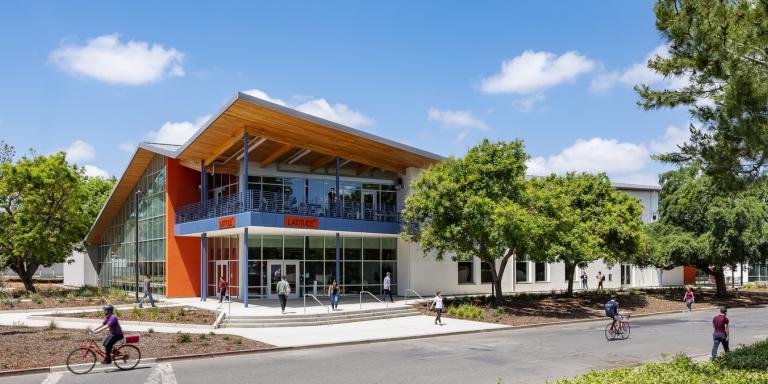 UC Davis Latitude Dining is Cover Feature of School Construction News Fall Issue: "Uncommon Commons Dynamic New Dining Facility at UC Davis Takes Local Inspiration"We're pleased to share that the UC Davis Latitude Dining Commons is the cover feature of the fall issue of School Construction News! You can read the full feature by clicking the PDF download button below or using the link to SCN's website at the bottom of this page.
UC Davis Latitude Dining is Cover Feature of School Construction News Fall Issue: "Uncommon Commons Dynamic New Dining Facility at UC Davis Takes Local Inspiration"We're pleased to share that the UC Davis Latitude Dining Commons is the cover feature of the fall issue of School Construction News! You can read the full feature by clicking the PDF download button below or using the link to SCN's website at the bottom of this page.
"While the current pandemic has hamstrung the full-fledged use of the facility, it’s hard to picture a more dynamic dining facility than one unveiled earlier this year in the Golden State.
Designed by HED and built by Otto Construction, the venue is the new, 500-seat, 33,000-square-foot on-campus Latitude Dining Commons at UC Davis. The design is inspired by the verdant Central Valley spread between the Sierra Nevada and coastal mountains. The program includes full commercial kitchen capability and provides multiple international food platforms as well as retail grab-n-go and convenience options.
The building picks up on the agricultural roots of the region and the shed/barn vernacular, providing students a place to eat, meet, study, and lounge. And the space represents the food and farming culture of the region and the institution itself.
The building includes a two-level area that includes front of house public functions (dining, serving, queuing, and retail), and a one-level mass that includes all back of house functions. The double-height dining space includes a mezzanine level to the south that faces a view garden. The project will also include a loading dock for deliveries, outdoor seating opportunities, circulation, site improvements, and bicycle parking. The HED development team’s integrated approach combines the University of California Davis’ minimum requirements with its own innovations to achieve LEED Gold certification.
Otto and HED saw the budget as a shared design challenge and took equal responsibility for that. Otto and HED proved to be a cultural fit, and the team members connected around an ethos of transparency, honesty, and authenticity. And they had fun with the Farm to Fork theme: Agendas for client meetings had a menu theme (including a bill for the budget meeting).
The design is inspired by the Central Valley spread between the coastal mountains and the Sierra Nevada. Within the sun-drenched agricultural heart of the state and the nation, a simple and functional design vernacular has developed. Structure is exposed, roofs are pitched, and materials and details are straightforward and functional.
The new building is sited between Tercero residential buildings to the south across Tercero Drive, future science buildings across Bioletti Way, and connects a major campus street, Hutchison to the North. In the future a new campus pedestrian path will connect the project site to the eastern reaches of the campus. The project is therefore both a focus for the residences and the sciences as well as a gateway building for the entire campus.
The landscape is contoured to allow multiple pathways to link the bounding sidewalk with dining and retail entrances. A continuous band of active public terraces shares views with pedestrians and cyclists along Bioletti Way. Tables and chairs, benches and generous steps encourage students to hang out, wait for friends or eat a bite purchased at the Retail facility as they study under the trees. Bike parking is located at the south and north ends of the site so that conflicts between bikes and pedestrians are minimized.
A light metal clad folded roof floats up above large glass walls and extends out to shade entrances and terraces or folds down into cement plaster clad walls to at once embody lightness on the one hand and connect to the ground on the other. While this roof form is redolent of a barn roof, its fluid shape and expressed movement is intended to create a strong presence befitting an important campus student center.
The double-height dining space is divided by a mezzanine level into a south area that faces a view garden and future site of a new residence building, and a dining area that faces east to Bioletti Way and its activities. The mezzanine connects second level exterior terraces at the east and south facades which in turn shade terrace area and the main dining entrance below. From the mezzanine one has views to the retail so that the collective energy of both spaces is shared. Painted steel stairs between the first and second levels stand free in the space creating a “see and be seen” dynamic that adds to the public theater of this important student hub."
-
 Incorporating the Pandemic Experience into Design by Drew Roskos in Senior Housing BusinessIn a recent piece from Seniors Housing Business, Housing Sector Leader Drew Roskos explores the future impacts of COVID-19 on senior housing - what should we hold onto, and how will we adapt?
Incorporating the Pandemic Experience into Design by Drew Roskos in Senior Housing BusinessIn a recent piece from Seniors Housing Business, Housing Sector Leader Drew Roskos explores the future impacts of COVID-19 on senior housing - what should we hold onto, and how will we adapt?
"Now in month six of our country’s full-scale reaction to the COVID-19 pandemic, we are all embracing today’s heightened awareness of public health across the board, especially in our field of senior living.
As of this writing, roughly one-third of COVID-19 cases reported have been in senior living communities. As research continues to teach us more about the spread of the virus who is at the greatest risk, we are also likely all growing in our realization of how this pandemic experience will impact the creation of the senior living facilities of the future.
Our national housing team at HED is working to layer pandemic-related design thinking in with the accumulated design understanding of best design practices. While certainly our healthcare design colleagues, and many of us working in the housing sector, have already considered traditional germ and disease flow for years, we know this pandemic will increase the expectations of occupants, developers and building visitors for decades to come — as it should.
What has not changed, though, is our insistence on keeping quality of life and resident happiness as the priority for design success. For both residents and staff, a community is only successful if it serves the needs of the occupants. So, when it comes to both quality of life and health, these groups will always warrant the most important consideration.
What we need to hold on to
Senior living communities that are in dense areas with a strong connection — both physically and programmatically — to the larger, public community will continue to be the most successful and the healthiest environments for older adults. Social connectivity, and its impact on mental and physical health, will continue to be a top priority of this population group, both during the remainder of this pandemic event and long after. It’s an aspect that we can’t lose sight of on the heels of this experience.
We need to continue to actively solve for those needs while also incorporating healthy design responses to today’s research around this virus and other communicable diseases. Our mandate will be to find a balance between helping families be comforted by this new level of care without feeling constricted by it.
Well before we knew of COVID-19, senior living communities would change their operations or increase physical distancing as a result of busy flu seasons, pneumonia outbreaks or otherwise. Programming and scheduled activities changed to account for these concerns, and staff members wore masks, gloves and other personal protective equipment (PPE) in order to do their part in containing these germs.
But with a heightened consumer awareness of these kinds of health challenges now, we can all expect a more careful eye on the facility itself and its role in disease spread, especially when potential residents are considering their options.
Additionally, the seniors housing industry was creatively moving to utilize more external resources in fulfilling the care of their patients. From telehealth visits to video-based activity engagement, these systemic changes were already helping to reduce the outside visits from excess people.
As this shift toward external care providers, and a reduction in onsite staff continues much more on the road ahead, it is my hope that we see a balance on our facilities’ accommodation of family and visits with loved ones, and less on providers.
How will we adapt?
To start, the first adaptation we need to make is to the design process itself.
From the onset of a facility’s design effort, we need to be prepared to also design what we are calling a “health management overlay.” This overlay should be crafted with operational leaders to ensure the feasibility of specific ideas in the event of another public health crisis, or even smaller-scale crises that we will now want to be better prepared for.
Operators must consider everything from the spatial needs of telehealth appointments to where the extra chairs are stored when social distancing; and from the creation of processing spaces to identifying places for the additional location of permanent hand washing stations. This new overlay opportunity will allow a facility to be designed with a typical health condition in mind, while preparing for these kinds of frightening atypical events as well.
When it comes to more permanent physical design changes for future facilities, there are a few that will need to be implemented without a doubt.
One of those is a greater focus on HVAC design — considering adding zones and increasing air filtration as a result of this pandemic. While mechanical systems have moved toward more efficient choices in an effort to reduce energy consumption, these new lenses of filtration effectiveness and isolation compartmentalization will take a more center-stage role in the years ahead as well.
We are also confident that outdoor spaces will be significantly re-examined in the years ahead. From the simple mathematical need to increase social distance, to a pent-up desire to be outdoors after initial quarantines evolved, we are now excited to focus on the most effective design of outdoor space for a larger variety of lifestyle needs for our seniors.
While the importance of active spaces and walking paths remain for the physical health of our seniors, we are now also eager to increase the crafting of intimate spaces where people can passively watch outdoor activities from a safe distance or gather in small groups to connect amidst the fresh outdoor air.
Another noticeable area where we all saw an immediate opportunity was technology. Those facilities that were more technology-enabled had more options when it came time to change their typical operations. From walking into and out of rooms without needing to touch switches, to hosting virtual family hangouts, technology proved to be the greatest gap creator between the haves and the have-nots. We see this continuing to drive the conversation as we create new communities moving forward.
And in the area of access control, independent living or active adult communities might see an uptick in multiple entrances, creating ways for facilities to lock down individual halls or break resident groups down into smaller groups or neighborhoods. This idea, though, will certainly not shift in the memory care or skilled nursing, where security and safety of resident arrival and departure will continue to take priority.
No need for overreaction
The most important point on the mind of our team, as we actively work on the design of new senior living facilities, is to not “react” our way into new problems.
While pandemic woes will certainly weigh heavy on the minds of operators and families for many years to come, we know there are many dimensions to health. The opportunity to learn from this unique viral experience is most certainly great, and it is an important opportunity to seize. We are excited to apply today’s senior living lessons to our design process.
As always, though, we must all be careful to make long-term decisions for our buildings based on a holistic set of industry knowledge, not just around unique experiences or isolated information garnered from our journeys along the way." -
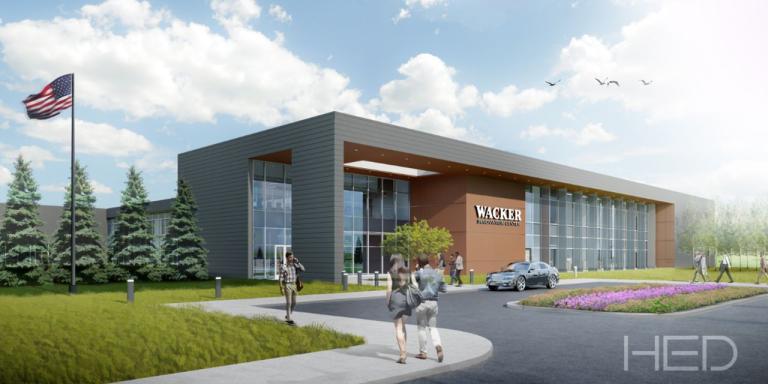 Michigan Economic Development Corporation shares news of Wacker Regional HQThe Michigan Economic Development Corporation recently shared news of Wacker Chemical Corporation establishing its North American Innovation Center & Regional Headquarters in Pittsfield Charter Township. Designed by HED, this facility will house Wacker's North American headquarters and R&D operations and is expected to create 70 high-paying, high-skilled jobs.
Michigan Economic Development Corporation shares news of Wacker Regional HQThe Michigan Economic Development Corporation recently shared news of Wacker Chemical Corporation establishing its North American Innovation Center & Regional Headquarters in Pittsfield Charter Township. Designed by HED, this facility will house Wacker's North American headquarters and R&D operations and is expected to create 70 high-paying, high-skilled jobs.
"WACKER’s expansion in Michigan means well-paying jobs for Michigan residents and underscores the strength of the state’s advanced manufacturing industry and talented workforce,” said MEDC Chief Business Development Officer and Executive Vice President Josh Hundt. “This new Innovation Center & Regional Headquarters continues to build on Michigan’s R&D leadership and sends yet another strong signal that Michigan’s economic recovery is well underway. We’re pleased that Michigan was chosen over competing sites in other states for this new headquarters facility, and we look forward to working with WACKER as they continue to grow and add jobs in Michigan.”
The new Innovation Center & Regional Headquarters will serve as a leading-edge location for advanced R&D activities and enhanced employee collaboration, allowing the company to tap into the local pool of highly-qualified personnel who have scientific backgrounds in various disciplines and also supporting WACKER’s long-term growth plans in the state. The building capacity of more than 300 employees will include those who will relocate from WACKER’s current regional headquarters in the city of Adrian as well as up to 70 new jobs to be added in the next five years. WACKER will continue production of elastomers, silicone fluids and silicone emulsions at its existing Adrian operations, with approximately two-thirds of the current employees remaining there.
This is WACKER’s second expansion in Michigan in recent years. In 2017, the company established a Silicones R&D Center in Ann Arbor. The new headquarters project is expected to create 70 highly paid jobs and generate a total private investment of $51 million, resulting in a $1 million Michigan Business Development Program grant from the Michigan Strategic Fund. Michigan was chosen for the North American Innovation Center & Regional Headquarters over competing sites in Tennessee and Ohio. The project aligns with MEDC’s strategic focus of attracting, retaining and supporting a business in the focus industries of advanced manufacturing and engineering, design and development, while fostering high-wage skills growth. In addition, WACKER has a robust on-the-job training program, with both internal and external opportunities for advancement. The company is also actively engaged with schools and universities, and has supported a successful internship program to provide hands-on opportunities to students.
“We are excited to move forward with our Innovation Center and Regional Headquarters to be located within Michigan,” said WACKER President & CEO David Wilhoit. “Our new facility will enable future growth in the state and serve as an important anchor for our operations across North America. This area is one of the nation’s leading communities for R&D. We look forward to networking with, and recruiting from, this highly educated and skilled talent base.”
You can read the full story, or other stories about Wacker's recently shared news using the links below. -
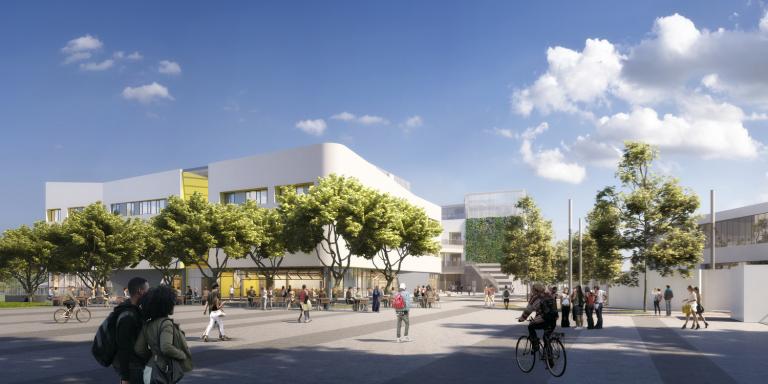 Samohi’s Discovery Building designed to adapt to COVID-19 learning needsAs featured in the Santa Monica Daily Press, the $133 million new academic structure at Santa Monica High School, known as the Discovery Building, was designed to be a flexible and adaptable building that can remain on the cutting edge of educational needs. While the architecture team did not initially anticipate that pandemic proofing a classroom would become one of those needs, designers at HED and Moore Ruble Yudell have recently reimagined how the building can accommodate socially distant, outdoor, and hybrid education models.
Samohi’s Discovery Building designed to adapt to COVID-19 learning needsAs featured in the Santa Monica Daily Press, the $133 million new academic structure at Santa Monica High School, known as the Discovery Building, was designed to be a flexible and adaptable building that can remain on the cutting edge of educational needs. While the architecture team did not initially anticipate that pandemic proofing a classroom would become one of those needs, designers at HED and Moore Ruble Yudell have recently reimagined how the building can accommodate socially distant, outdoor, and hybrid education models.
The building is on schedule to open in Aug. 2021 and will bring 38 new classrooms, an upgraded pool, a rooftop hydroponic garden, high-tech lab facilities, and several wide and open-air common spaces to Samohi’s North Campus. It’s the result of collaboration between architects from HED and Moore Ruble Yudell and builders from McCarthy Building Companies who began construction in April 2019. Although it is currently unclear what learning will look like in the fall 2021 semester, the building’s design is prepared for COVID-19 learning adaptations.
“We have been able to demonstrate, within the context of the pandemic, that the new building can flex to accommodate social distancing and linear circulation to enhance safety. Classes can spread apart by taking advantage of the connections between classrooms and the commons areas adjacent through folding glass doors. There are also multiple terraces with casual seating and even rooftop classrooms that can become opportunities for outdoor learning,” said John Dale, Principal at HED.
The building is designed with a flexible, open-column grid, raised floors, and non load bearing walls, which means the layout can be resigned over time. Several of the classrooms will have outdoor terraces and connections to common areas, which can be opened up to assist with social distancing and increase air circulation.
“The Discovery Building was designed with change in mind. When first conceived, we thought of change in terms of changing pedagogical needs, meaning learning spaces can be easily reconfigured and clustered to provide varied instructional opportunities. That also means the building has built-in ‘slack’ – the ability of classes to spread outside their normal confines into shared ‘common’ areas throughout the building,” said Hale.
Each classroom will also be equipped with at least two projection sources, which could be used to accommodate students joining class via Zoom. Designers have also developed a floor plan that places seats six feet apart and has circulation arrows so people move across the building in the same direction and do not cross paths.
You can read the full feature from the Santa Monica Daily Press using the link below. -
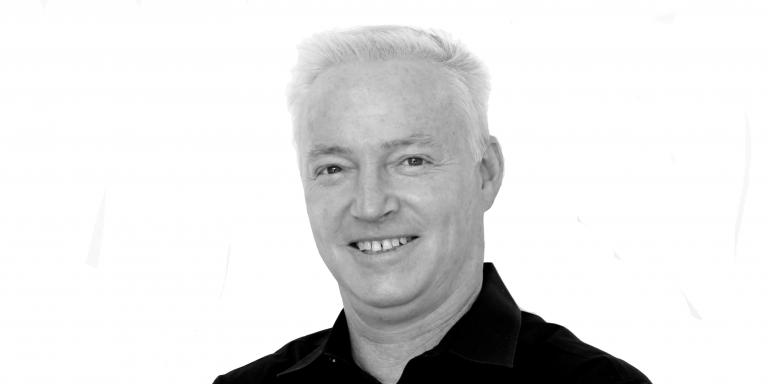 HED welcomes Dan Ringler as Sector Leader in San DiegoHED is pleased to welcome Daniel Ringler to the firm as Associate Principal, Sector Leadership in the San Diego office, bringing over twenty-seven years of experience in the delivery of complex repositioning and adaptive reuse projects as well as a variety of corporate, hospitality and retail interiors projects. In this role, Daniel will lead integrated architectural and engineering design teams to develop and execute effective strategies for quality project execution, primarily in the corporate and commercial sectors.
HED welcomes Dan Ringler as Sector Leader in San DiegoHED is pleased to welcome Daniel Ringler to the firm as Associate Principal, Sector Leadership in the San Diego office, bringing over twenty-seven years of experience in the delivery of complex repositioning and adaptive reuse projects as well as a variety of corporate, hospitality and retail interiors projects. In this role, Daniel will lead integrated architectural and engineering design teams to develop and execute effective strategies for quality project execution, primarily in the corporate and commercial sectors.
Prior to joining HED, Daniel acted as Managing Director at LPA, where he led multidiscipline teams to create design solutions to the benefit of investors, developers, building owners, brokers and tenants.
Daniel’s industry knowledge and focus on client needs will be integral to HED’s effectiveness toward its mission: Advancing Your World, through the Positive Impact of design, our teams create exceptional solutions for our clients, the community, and the world.
-
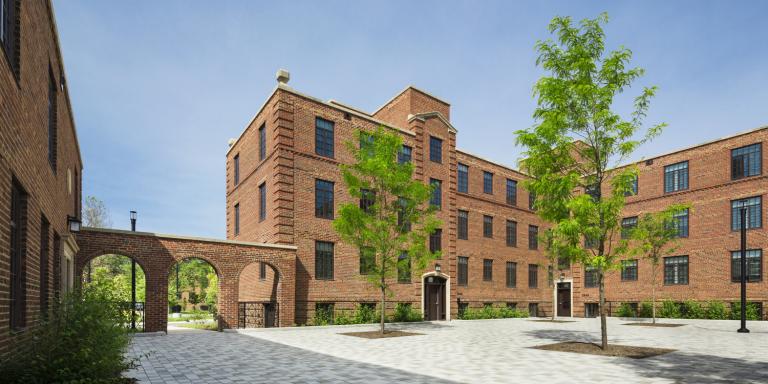 Lathrop named ENR Midwest Best Project of 2020 Residential/Hospitality categoryHED is excited to share that the Lathrop housing project has been named an ENR Midwest Best Project of 2020 in the Residential / Hospitality category!
Lathrop named ENR Midwest Best Project of 2020 Residential/Hospitality categoryHED is excited to share that the Lathrop housing project has been named an ENR Midwest Best Project of 2020 in the Residential / Hospitality category!
During the Great Depression, the Works Progress Administration (WPA) assembled teams of well-regarded architects to design much-needed housing for low-income families throughout Chicago. Almost a century later, one such development, Julia C. Lathrop Homes, is undergoing a comprehensive transformation.
For decades, the city of Chicago sought to redevelop the Julia C. Lathrop Homes, a 1938 Public Works Administration housing development that’s now on the National Register of Historic Places. With 32 buildings on 35 acres, the public housing development owned by the Chicago Housing Authority had fallen into disrepair by the early 2000s, and as the factories once around it were replaced by a shopping district, the Chicago River that its landscape abutted became an asset and not a polluted shipping canal. Many of the buildings were uninhabitable because of years of deferred maintenance. When Related Midwest and its partners Bickerdike Redevelopment Corp. and Heartland Alliance Housing won the RFP in 2010, a new approach was necessary.
Part of Chicago Housing Authorities’ (CHA’s) groundbreaking Plan for Transformation, which seeks to combine CHA, affordable and market rate housing into single, mixed-income developments, Lathrop continues the tradition of collaboration.
“We knew that there were a number of constituents and stakeholders that wanted to preserve almost all the buildings,” says Sarah Wick, vice president at Related Midwest, the managing partner of development partnership. “We also knew that there was a lot of momentum and energy around ensuring there was a lot of affordable housing.”
Master planning began in 2010, and the project went through deliberate phases of design with community input throughout, led by the nonprofit developers. Phase IA totals roughly 500,000 gross sq ft of site improvements such as new utilities, the preservation of trees and the Jens Jensen-designed Great Lawn. Lathrop Community Partners and the city eventually settled on a mix of income distribution of 36% public housing, 22% residents that qualify as affordable housing and 45% at market rate for the development. All the housing units were built with the same finishes and level of quality, while all the public housing units that were lost during the redevelopment were replaced with other housing the CHA has in the city.
Development partners Related Midwest, Bickerdike Redevelopment Corporation and Heartland Housing—together, Lathrop Community Partners—oversaw the project. The design team included JGMA, Design Architect; HED, Executive Architect; Michael Van Valkenburgh (MVVA), Landscape Architect; and McGuire Igleski & Associates (MIA), Exterior Preservationist.
The HED team contributed its integrated design expertise and extensive housing experience to modernize the historic structures; incorporate health, wellness and sustainability strategies; redesign systems for efficiency and effectiveness; address accessibility; and provide LEED documentation for two additional structures on this site. The overall project has LEED and Green Enterprise Community certification, becoming one of the largest Green Enterprise Communities to date.
-
 How COVID-19 Could Bring a Resurgence of the “Neighborhood” Planning Model by Drew Roskos in iAdvace Senior CareThe COVID-19 pandemic has proven to be particularly difficult to contain in senior living facilities, where many staff and residents are often concentrated in large buildings.
How COVID-19 Could Bring a Resurgence of the “Neighborhood” Planning Model by Drew Roskos in iAdvace Senior CareThe COVID-19 pandemic has proven to be particularly difficult to contain in senior living facilities, where many staff and residents are often concentrated in large buildings.
Between the high population density, frequently traveled common areas, and shared communal surfaces in dining halls, the traditional design of senior living buildings has proven to contribute to the disease’s spread. After the pandemic is over, could more facilities turn to the neighborhood planning model?
"How COVID-19 Could Bring a Resurgence of the “Neighborhood” Planning Model" by HED's Drew Roskos was recently published in iAdvance Senior Care Magazine to address this exact issue. You can read an excert of that piece here, or use the link below to view it on iAdvance Senior Care's website.
The Benefits of the Neighborhood Planning Model
The neighborhood model offers many advantages. Rather than have all residents use the same communal areas like dining halls, a neighborhood model features a smaller dining room and living room in each smaller “neighborhood.” Many of these facilities feature homelike living spaces like individual apartments or suites, further allowing for resident privacy.
These facilities tend to feel more like homes. The design encourages residents to engage in smaller groups, but by visiting other “neighborhoods,” residents can still interact with many different people. This type of residency can also encourage physical activity in residents.
This model also offers distinct advantages when it comes to controlling disease transmission. Drew Roskos, AIA with HED, notes that facility owners and operators considering the neighborhood model have been focusing not only on resident social activity levels, but also on disease prevention and containment and models that allow a business to run more safely and effectively.
“I believe that the neighborhood model allows residents to “quaran-team” – maintaining contact with a small group while separated from others – to allow for safe social participation and that the increase in interest for this model is justified, especially as we develop a long term view of the issue and as we look at how this will work for other levels of care with higher acuity,” says Roskos.
Roskos also explains that the neighborhood model offers construction benefits, too. It’s versatile in that it can be implemented with modular construction. That’s a particular benefit in rural or suburban areas, where generous site sizes make modular construction deliveries simpler. “The development of a network of smaller communities can be a useful solution to staffing issues in these less dense areas,” notes Roskos.
The neighborhood model is also practical in urban areas, where smaller communities using the model can help residents to engage with community resources. “For example, small stand-along communities can occupy smaller parcels of land or can be a part of a mixed-use development,” says Roskos.
Neighborhood models offer residents and owner/operators plenty of benefits. According to Roskos, this model helps to build a sense of ownership in residents. Facilities can quickly implement this style, and the separate buildings of a neighborhood model can be built specifically for certain types of care or certain types of residents.
Roskos recently finished construction on the Illinois Veteran’s Home, a skilled nursing facility that will provide care to 200 veterans. This facility is a prime example of how the neighborhood model can be used to provide certain types of care. “It’s a supportive method to address the unique characteristics of the aging veteran community,” notes Roskos.
Overcoming Barriers to the Neighborhood Model
This model isn’t without its challenges, though. Roskos explains that neighborhood model facilities have higher construction costs. Because residents are spread out, staff, including food services, are under greater demands. Equipment may need to be duplicated throughout the different buildings.
“The neighborhood model places a large focus on a high ratio of staff to residents,” Roskos advises. He recommends that a facility interested in exploring this model confirm its staffing numbers before moving forward. A facility might consider a hub and spoke model across a region to leverage staff coverage and to help offset higher construction costs.
As an alternative, facilities might explore mixed use developments. “In mixed use urban developments, the smaller community can fit within the larger development and though financing can be complicated, it can provide a way to share the burden of developing new construction in an urban setting,” explains Roskos. This can be an ideal solution for denser settings.
The neighborhood model has been criticized for not increasing positive interaction and socialization between seniors. “I disagree with that,” says Roskos. “Neighborhoods have the potential for significant bonds and relationships, but a downside is it also has opportunity for conflict.”
Looking to the Future
Embracing the neighborhood model offers a facility distinct advantages when it comes to disease control, and the current pandemic is evidence of how important it is to design facilities with this in mind. With other benefits like creating a more homelike environment and the potential for fast implementation, it’s easy to see how this model could become a popular option for the future of senior care facilities. -
 Interview with HED NOMA Fellowship Intern Diana HernandezThe National Organization of Minority Architects (NOMA) Foundation Fellowship (NFF) is an initiative that seeks to increase diversity within professional practice as well as provide firm mentorship and design research experience for young emerging professionals.
Interview with HED NOMA Fellowship Intern Diana HernandezThe National Organization of Minority Architects (NOMA) Foundation Fellowship (NFF) is an initiative that seeks to increase diversity within professional practice as well as provide firm mentorship and design research experience for young emerging professionals.
In this inaugural 30-student cohort, HED has had the opportunity to host two interns -- these students spend their internship researching a topic with the help of HED staff and resources. HED is proud to provide a platform for the next generation of architects and looks forward to the positive impact they will have on the industry and the world.
One of this year’s interns is Diana Hernandez, a master's student studying architecture at the California Baptist University. We asked Diana about her time at HED and the positive impact she created while being a part of our team.
What is the title/topic of your project?
-I am researching the effects of COVID-19 in K-12 schools and understanding the best ways to approach design in these environments while considering the circumstances.
What drew you to this topic/project?
-What drew me to this project is how little we know about the situation here in the US and the relevance this research has both nationally and internationally.
What type of work did this project consist of?
-I’ve had to read through and collect countless examples of local, regional, national, and international responses. I’ve categorized this information and am working on the best way to visually present these findings.
What was the result/findings?
-Schools are essential for student’s well-being and health. This is why it is crucial we find the safest ways to reopen them without compromising their physical health. Many countries have been able to successfully reopen schools after “flattening the curve” by following combinations of precautions and protocols.
What is the positive impact or potential positive impact of this project?
-The findings from this project could serve as a guideline for keeping schools safe when the time comes to reopen them. It can also serve as a guideline designers should consider when designing schools from here on out.
HED is proud to be an active supporter of NOMA and wishes Diana the best in her future.
-
 Interview with HED NOMA Fellowship Intern Aaron DeRouxThe National Organization of Minority Architects (NOMA) Foundation Fellowship (NFF) is an initiative that seeks to increase diversity within professional practice as well as provide firm mentorship and design research experience for young emerging professionals.
Interview with HED NOMA Fellowship Intern Aaron DeRouxThe National Organization of Minority Architects (NOMA) Foundation Fellowship (NFF) is an initiative that seeks to increase diversity within professional practice as well as provide firm mentorship and design research experience for young emerging professionals.
In this inaugural 30-student cohort, HED has had the opportunity to host two interns -- these students spend their internship researching a topic with the help of HED staff and resources. HED is proud to provide a platform for the next generation of architects and looks forward to the positive impact they will have on the industry and the world.
One of this year’s interns is Aaron DeRoux, a master's student studying architecture at the University of Illinois at Urbana-Champaign. We asked Aaron about his time at HED and the positive impact he created while being a part of our team.
What is the title/topic of your project?
-The topic is called Embodied Carbon Reduction Research-Research measurement tools and processes to measure and perform Life Cycle Assessments in relation to embodied carbon reduction design strategies.
What drew you to this topic/project?
-This topic was selected by the leaders in the Chicago office, but I will say that this topic falls in line with my thesis focus during graduate school. A sustainable tower in downtown Chicago that acts as an environmental oasis within a concrete jungle.
What type of work did this project consist of?
-The work consists of a product testing new technology such as tally and one-click LCA. These products are a great carbon emission calculator during the design process. They allow architects and designers to consider material use within their projects and its potential impact on the environment. It also generates data and charts that could be easily understood by different stakeholders.
What was the result/findings?
-The findings so far prove that as we continue to work in the built environment, we need to make a change that can benefit our ecosystem and minimize the effects of global warming. Currently, concrete is our most popular building material, and it is great that we can reduce the energy usage of concrete structures. Still, the embodied carbon released through the life cycle of the material from manufacturing to disassembly can be just as harmful to the environment. With this understanding, we can see that doing LCAs early allows us to make smart and sustainable design decisions.
What is the positive impact or potential positive impact of this project?
- The positive impact behind this work is that we can now generate data that can help us design for a better future. A lot of firms are taking the initiative to be apart of the architecture 2030 challenge to become carbon-neutral with their buildings. HED is a significant player in the built environment. The findings from this research will allow architects across the country to easily implement a sustainable mindset during early project phases.
HED is proud to be an active supporter of NOMA and wishes Aaron the best in his future. -
 HED Ranks #24 in the ENR Top 100 Green Design Firms ListingHED is proud to share that our firm has ranked #24 in the ENR listing of Top 100 Green Design Firms.
HED Ranks #24 in the ENR Top 100 Green Design Firms ListingHED is proud to share that our firm has ranked #24 in the ENR listing of Top 100 Green Design Firms.
This evaluation of our experience with high preforming building projects is just one part of a much larger story about our values and culture: our mission is to have a positive impact for our clients, the community, and the world through design excellence, which we define as a solution built from thoughtful decision making that creates measurable, real world positive impact. We understand sustainability to be an inseparable part of that, as it can create huge benefits for what we refer to as “the triple bottom line” that are the social, economic and environmental impacts of the project. -
 HED ranks #18 on the Building Design + Construction 2020 Top 100 Architecture/Engineering FirmsHED his proud to share that we have once again ranked in the top 20 of the Building Design & Construction annual top 100 architecture and engineering firms - ranking 18 in 2020.
HED ranks #18 on the Building Design + Construction 2020 Top 100 Architecture/Engineering FirmsHED his proud to share that we have once again ranked in the top 20 of the Building Design & Construction annual top 100 architecture and engineering firms - ranking 18 in 2020. -
 HED climbs 7 places in the annual CSE MEP Giants RankingHED is pleased to share that our firm has risen 7 places in the annual Consulting-Specifying Engineer MEP Giants ranking - we are now #65 in the ranking of the top 100 largest MEP firms. This growth is due to the dedication of our engineering teams, who continue to strive for positive impact in their decision-making and design.
HED climbs 7 places in the annual CSE MEP Giants RankingHED is pleased to share that our firm has risen 7 places in the annual Consulting-Specifying Engineer MEP Giants ranking - we are now #65 in the ranking of the top 100 largest MEP firms. This growth is due to the dedication of our engineering teams, who continue to strive for positive impact in their decision-making and design. -
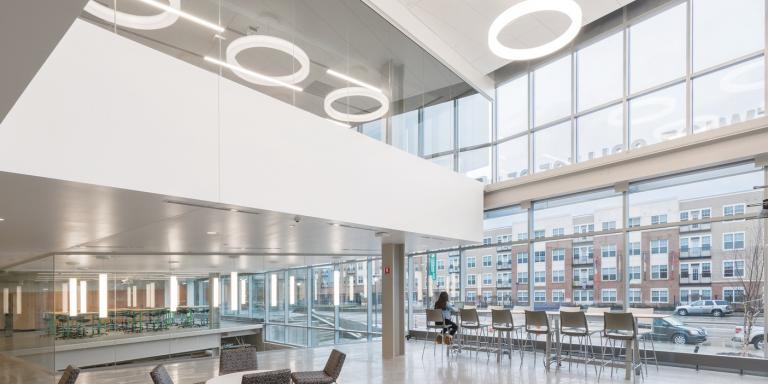 National Architecture Practice Leader Domenic Cristofaro Gives Design and Construction Perspective on COVID-19 Pandemic at Virtual Glass ConferenceIn a recent feature from The US Glass News Network, National Architecture Practice Leader Domenic Cristofaro weighed in on the current state of glass in the AEC industry.
National Architecture Practice Leader Domenic Cristofaro Gives Design and Construction Perspective on COVID-19 Pandemic at Virtual Glass ConferenceIn a recent feature from The US Glass News Network, National Architecture Practice Leader Domenic Cristofaro weighed in on the current state of glass in the AEC industry.
The COVID-19 pandemic has impacted the entire glass industry, from manufacturing and supply chains to design and construction. While the first day of the National Glass Association (NGA) Summer Conference included a focus on the manufacturing perspective, the session, “The New Normal – Design & Construction,” included a different perspective.
Domenic Cristofaro, National Architecture Practice Leader with HED, provided an architect’s perspective on the crisis.
“Protecting occupants from the spread of disease will be foremost in the minds of architects,” he said.
He also pointed out that glass is a popular material due to its ability to bring in natural light and create visual protection while supporting sustainability and protecting occupants from storms or attacks. He expects it will no longer be specified just for its functional and aesthetic purposes but also to prevent the spread of diseases such as COVID-19.
“Glass is hygienic and easy to clean,” said Cristofaro. “It’s unlikely that offices will continue to use open office layouts. Glass barriers could be installed to protect occupants in addition to staggered office hours. COVID-19 has put an end to the over-densification of office buildings.”
He anticipates that in the future, a portion of offices could be turned into apartments or condos. He also posed modular construction as a solution to the supply chain issues created by the pandemic as it allows parts of a project to be built in a controlled, safe environment.
You can read the full article from The US Glass News Network using the link below. -
 HED accepts the SoCal NOMA Diversity, Equity, and Inclusion ChallengeHED is proud to share that we have accepted the Southern California Chapter of the National Organization of Minority Architects (SoCal NOMA) Diversity, Equity, and Inclusion Challenge (DEI Challenge): an initiative for architecture, engineering, construction, and related firms to voluntarily support measures to transform the diversity of their firms and the AEC community in a way that is holistic, firm-wide, and data driven.
HED accepts the SoCal NOMA Diversity, Equity, and Inclusion ChallengeHED is proud to share that we have accepted the Southern California Chapter of the National Organization of Minority Architects (SoCal NOMA) Diversity, Equity, and Inclusion Challenge (DEI Challenge): an initiative for architecture, engineering, construction, and related firms to voluntarily support measures to transform the diversity of their firms and the AEC community in a way that is holistic, firm-wide, and data driven.
We accept this challenge to demonstrate and support our organizational commitment to fighting against racism and racial inequality within the profession of architecture, and to take positive action within our own firm to hold true to our core value of integrated practice. We are always striving to be a more inclusive, integrated practice because we value the diversity of perspectives, experiences, abilities and expertise that advance both the work we do, and the world we share.
In committing to the SoCal NOMA DEI Challenge, we commit to voluntarily provide the following information as part of the DEI Challenge, on an annual basis, for the purposes of gathering and collecting data and statistics that may be used by NOMA as well as partner organizations to develop programs and policies on diversity, equity, and inclusion going forward. This information will also be utilized internally to inform decision-making and drive improvement in our own practice.
The DEI Challenge consists of ten actions, each with a scoring threshold with a total of 100 potential points. Participating firms must score a minimum of 70 points to be recognized as a SoCal NOMA “DEI Challenge Ally.”
HED is proud to act against institutional inequity within our own firm and the greater AEC industry. Because of the outsized impact our industry has in communities and the world writ large, we believe that this initiative is aligned directly to our mission of Advancing the World of our clients and communities, and feeds directly into our core values of critical thinking, design excellence, and integrated practice.
We firmly believe that by accepting this challenge, we will drive incremental, measurable positive change in our firm, our industry, and the world, and we join SoCal NOMA in the call to our peer AEC firms to take up this moral and professional imperative.
Together, we will create positive impact.
-
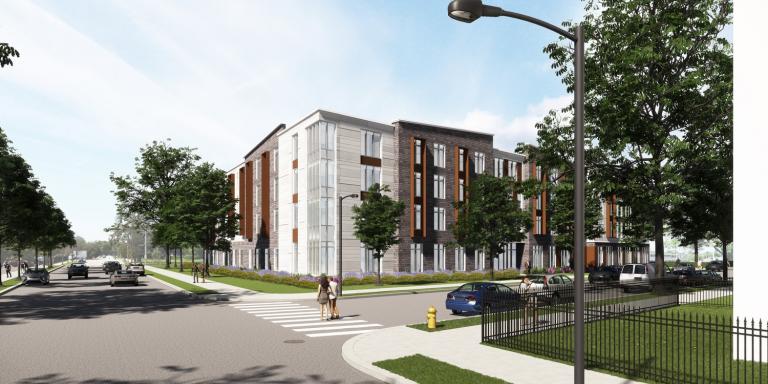 HED selected to design Veterans Housing in Chicago HeightsHED is pleased to announce that our team has been selected by The Housing Authority of Cook County (HACC) to design an affordable and distinctive refuge for the housing challenged veteran population in the Chicago Heights area to call home.
HED selected to design Veterans Housing in Chicago HeightsHED is pleased to announce that our team has been selected by The Housing Authority of Cook County (HACC) to design an affordable and distinctive refuge for the housing challenged veteran population in the Chicago Heights area to call home.
The project, which is being led in partnership by the City of Chicago Heights and HACC, is part of a program known as the Choice Neighborhoods Initiative, a special urban planning program administered by the U.S. Department of Housing and Urban Development (HUD). The proposed veterans’ housing development is the first proposal for new development to emerge from the Choice Neighborhoods planning effort.
The proposed four-story building will be designed to coincide with Chicago Heights’ new mixed-use district regulations aimed at creating vibrant and walkable neighborhoods. The development will be located next to a proposed new town square, which would include a plaza space for public events, such as a farmer’s market, public ceremonies, and cultural activities for residents to enjoy.
HED’s design strategies include calm color palettes, quiet spaces with heightened acoustic requirements, and units and common spaces with open plans which provide visibility with no hidden corners. Designed to complement the historical character of Chicago Heights, the development includes 82 units, restricted to veterans only, totaling more than 74,000 SF. Building amenities will include exercise facilities, office space and meeting areas, and parking.
Together, HACC, the City of Chicago Heights and HED will create new housing that will create a positive impact within the community by contributing to the lives of veterans and to the revitalization of downtown Chicago Heights.
-
 HED named one of Chicago's Best & Brightest Comapnies to Work For - for the 16th consecutive year!HED is delighted to share that we have once again been named a Best & Brightest Company to Work For in Chicago! This is the 16th consecutive year that our Chicago practice has been recognized in this ranking. The Best and Brightest Companies to Work For competition identifies and honors organizations that display a commitment to excellence in their human resource practices and employee enrichment. Organizations are assessed based on categories such as communication, work-life balance, employee education, diversity, recognition, retention and more.
HED named one of Chicago's Best & Brightest Comapnies to Work For - for the 16th consecutive year!HED is delighted to share that we have once again been named a Best & Brightest Company to Work For in Chicago! This is the 16th consecutive year that our Chicago practice has been recognized in this ranking. The Best and Brightest Companies to Work For competition identifies and honors organizations that display a commitment to excellence in their human resource practices and employee enrichment. Organizations are assessed based on categories such as communication, work-life balance, employee education, diversity, recognition, retention and more. -
 HED Ranks #19 in ENR's 2020 Top 25 Multi-Unit Residential Design Firms ListingHED is proud to share that we have been ranked #19 in the 2020 ENR listing of Top 25 Multi-Unit Residential Design Firms. HED’s housing practice is not merely about designing apartments, residence halls, condominiums, or special living facilities: it is about creating spaces for people – their belongings, their families, their memories and futures. It's a responsibility we take seriously, and this ranking from ENR inspires us to continue seeking out new ways to create positive impacts for our clients and communities through housing.
HED Ranks #19 in ENR's 2020 Top 25 Multi-Unit Residential Design Firms ListingHED is proud to share that we have been ranked #19 in the 2020 ENR listing of Top 25 Multi-Unit Residential Design Firms. HED’s housing practice is not merely about designing apartments, residence halls, condominiums, or special living facilities: it is about creating spaces for people – their belongings, their families, their memories and futures. It's a responsibility we take seriously, and this ranking from ENR inspires us to continue seeking out new ways to create positive impacts for our clients and communities through housing. -
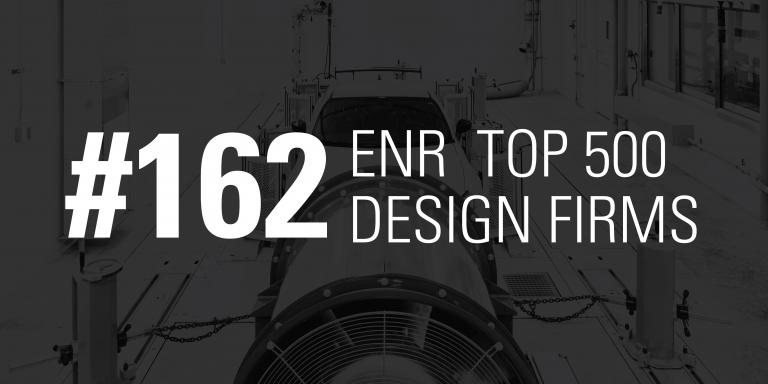 HED Climbs 12 Places in ENR Top 500 Design FirmsHED continues to grow our engineering practice nation-wide, climbing 12 places in the ENR Top 500 Design Firms to #162
HED Climbs 12 Places in ENR Top 500 Design FirmsHED continues to grow our engineering practice nation-wide, climbing 12 places in the ENR Top 500 Design Firms to #162 -
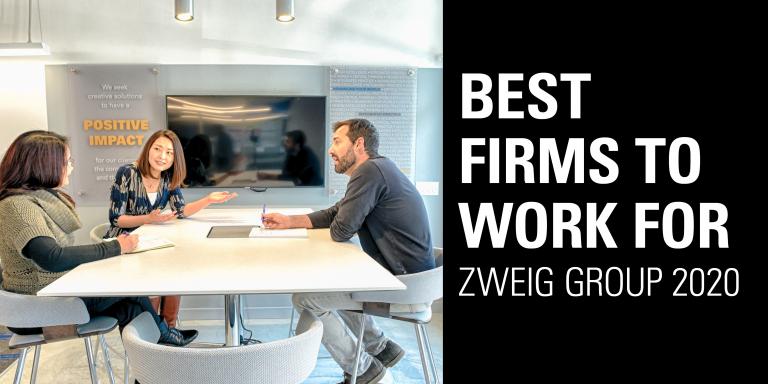 HED named Zweig Group 2020 Best Firm To Work ForAs an organization we believe we can't create positive impact unless our people come first, which is why we are so excited to announce that we have been named a Zweig Group 2020 Best Firm To Work For!
HED named Zweig Group 2020 Best Firm To Work ForAs an organization we believe we can't create positive impact unless our people come first, which is why we are so excited to announce that we have been named a Zweig Group 2020 Best Firm To Work For!
The Best Firms to Work For award recognizes architecture, engineering, and construction firms in the US and Canada based on an exhaustive review of their workplace practices, employee benefits, employee retention rates, and much more. We believe that awards and rankings such as these are important tools for judging our efforts against our peers and ourselves to continue our commitment to our staff that create positive impact for our clients and communities. -
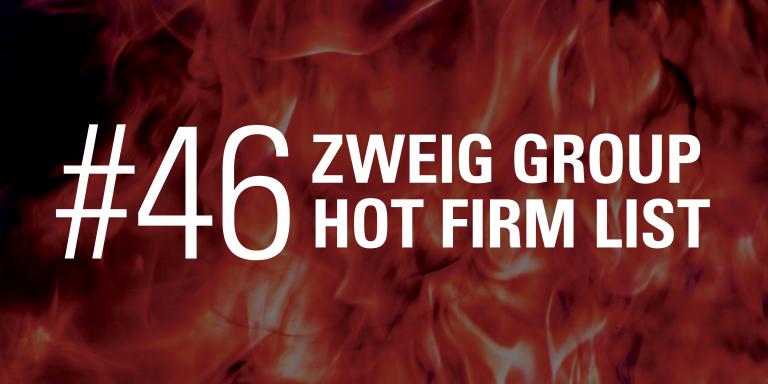 HED named Zweig Group Hot Firm - Ranks #46 of 100HED is very proud to share that we have been ranked in the Zweig Group 2020 Hot Firm list. The Zweig Group Hot Firm list recognizes the 100 fastest-growing architecture, engineering and construction firms in the United States and Canada. Through an assessment of finances (a score comprised of both dollar and percentage revenue growth rate over a three-year period), this ranking reflects firms have outperformed both the economy and competitors to become leaders in their chosen fields.
HED named Zweig Group Hot Firm - Ranks #46 of 100HED is very proud to share that we have been ranked in the Zweig Group 2020 Hot Firm list. The Zweig Group Hot Firm list recognizes the 100 fastest-growing architecture, engineering and construction firms in the United States and Canada. Through an assessment of finances (a score comprised of both dollar and percentage revenue growth rate over a three-year period), this ranking reflects firms have outperformed both the economy and competitors to become leaders in their chosen fields.
We accredit this growth and stability to the dedication and professionalism of our staff, who have committed themselves to our shared mission of creating positive impact for our clients and communities through their design talents. -
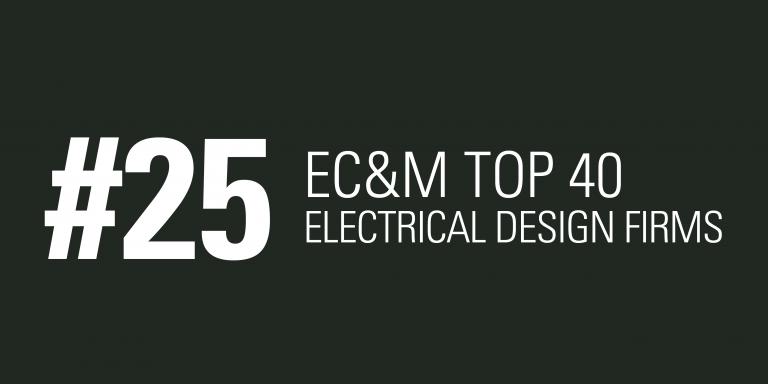 HED in EC&M Top 40 Ranking of Electrical Design FirmsWe're proud to share that we are number 25 in the Electrical Construction & Maintenance (EC&M) magazine Top 40 Electrical Design Firms of 2020!
HED in EC&M Top 40 Ranking of Electrical Design FirmsWe're proud to share that we are number 25 in the Electrical Construction & Maintenance (EC&M) magazine Top 40 Electrical Design Firms of 2020! -
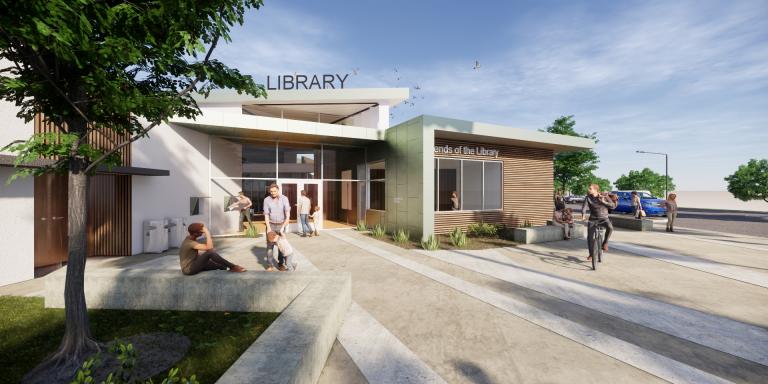 HED announces new library project with San Diego CountyHED is pleased to announce that we, in partnership with PCL Construction services, have been selected by the County of San Diego, CA, as the Architect of Record for the new Lakeside Community Library!
HED announces new library project with San Diego CountyHED is pleased to announce that we, in partnership with PCL Construction services, have been selected by the County of San Diego, CA, as the Architect of Record for the new Lakeside Community Library!
The new, 16,840 sf Lakeside Library will be a signature building, landmark, and significant resource to the community designed to offer space and resources for enhanced community engagement and activity. It will act as a welcoming gathering place with a variety of services and events and provide for informational, educational, and civic engagement needs. In addition to the facility itself, the library will be a source of additional positive impact in the community by being sustainable, with a design that will conform and be certified through the Living Building Challenge Net Zero Energy Guidelines.
The architectural concept for the Lakeside Branch Library grows from a thorough observation of the local context and collaboration with the county. The aesthetic will be fresh, sleek, modern, and feature clean architectural lines as well as contemporary materials and color palettes, creating a distinct identity within the community. With an interior ceiling height of eighteen feet in the central spaces, the design lends a voluminous, bright feel to not just the lobby, but program spaces like the children’s room, marketplace, community room and adults’ space.
-
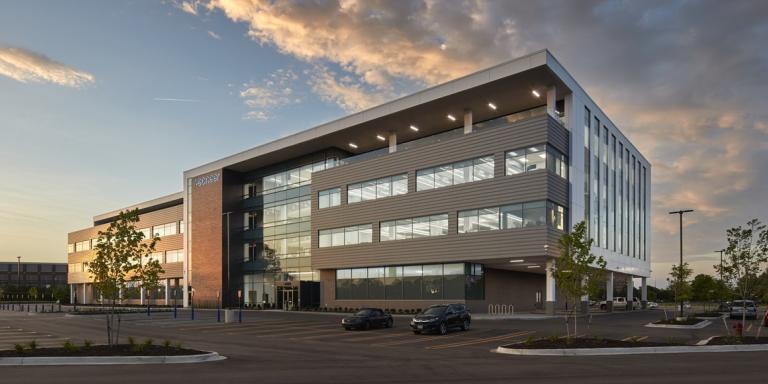 Veoneer wins AIA Michigan SMACNA Sheet Metal AwardHED is pleased to share that the Veoneer North American Technical Competence Center (NATCC) in Southfield, MI has been awarded the AIA Michigan SMACNA Sheet Metal Award.
Veoneer wins AIA Michigan SMACNA Sheet Metal AwardHED is pleased to share that the Veoneer North American Technical Competence Center (NATCC) in Southfield, MI has been awarded the AIA Michigan SMACNA Sheet Metal Award.
This award recognizes design excellence through state-of-the-art climate control/system design, fabrication of duct work, metal architectural roofing, and ornamental metal.
The new NATCC provides space for a team of more than 900 staff members and fulfills its mission to promote innovation and industry leadership through its design as a highly experiential, interconnected workplace. Designed to help shape the company’s future in autonomous driving and active safety systems, the new technical center features both office and automotive testing spaces. -
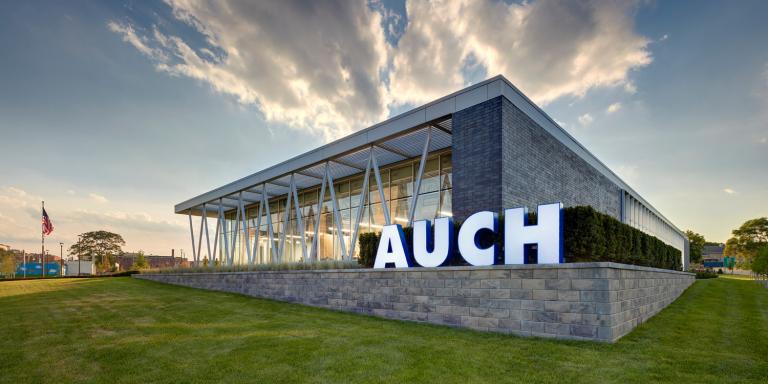 "Beautiful Burnished Block" by HED's Megan Crawford and Kevin Doyle, published in SMART dynamics of masonryIn the recent issue of SMART Dynamics of masonry Megan Crawford, P.E. and Kevin Doyle, AIA outline how HED's integrated architecture and engineering teams created savings and solutions for AUCH Construction's HQ using masonry solutions.
"Beautiful Burnished Block" by HED's Megan Crawford and Kevin Doyle, published in SMART dynamics of masonryIn the recent issue of SMART Dynamics of masonry Megan Crawford, P.E. and Kevin Doyle, AIA outline how HED's integrated architecture and engineering teams created savings and solutions for AUCH Construction's HQ using masonry solutions.
Throughout the design process, masonry presented itself in many ways, outlined in detail in the article but summarized here:
- Steel Braced Frames for Open Design Depended on Masonry Sheer Walls
- Use of Masonry reduced Materials, Costs, and Schedule
- Masonry Choices and Schemes Set a Dramatic Tone
- Use of Masonry Offset Glass in Meeting Energy Codes
Using the link below you can read the full article and learn about how use of masonry contributed to the most effective design solution.
-
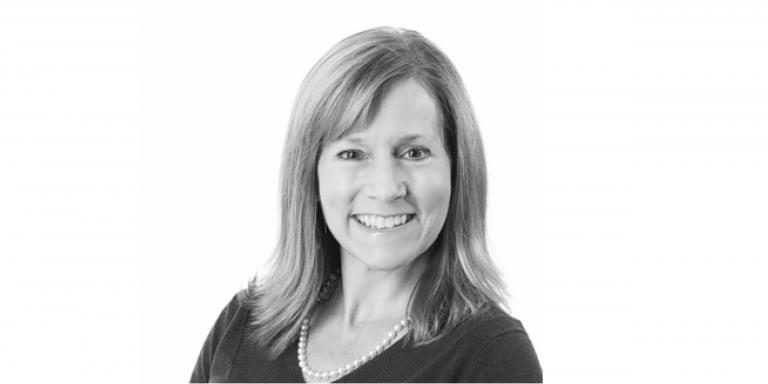 HED welcomes Ronda Paradis, MBA to the firm as Associate Principal, Healthcare Sector Strategy & Development for the Boston officeHED welcomes Ronda Paradis, MBA to the firm as Associate Principal, Healthcare Sector Strategy & Development for the Boston office, bringing 30 years of experience in executive-level strategy and business development in the A/E/C industry. In this role, Ronda will collaborate with leadership and local design team to develop and execute effective strategies for growing the Boston office and presence in the Northeast. Her industry network, knowledge of market trends, and focus on client needs will complement the seasoned team she is joining at HED.
HED welcomes Ronda Paradis, MBA to the firm as Associate Principal, Healthcare Sector Strategy & Development for the Boston officeHED welcomes Ronda Paradis, MBA to the firm as Associate Principal, Healthcare Sector Strategy & Development for the Boston office, bringing 30 years of experience in executive-level strategy and business development in the A/E/C industry. In this role, Ronda will collaborate with leadership and local design team to develop and execute effective strategies for growing the Boston office and presence in the Northeast. Her industry network, knowledge of market trends, and focus on client needs will complement the seasoned team she is joining at HED.
Prior to joining HED, Ronda acted as the Vice President of business development for the health and science practice of Suffolk Construction in Boston, MA, the largest construction management company in Massachusetts and the premiere healthcare and S+T builder in New England. Prior to that she held positions at HDR, Inc. as Principal, Education, Science & Technology Development and Principal of Healthcare and S&T Development in the Boston office, where she expanded visibility for their service offerings and led client relations.
Ronda’s passion for team-oriented problem solving will be integral to HED’s effectiveness toward its mission: Advancing Your World, through the Positive Impact of design, our teams create exceptional solutions for our clients, the community, and the world.
-
 HED pledges financial support for Carbon Positive ResetHED has pledged to continue its support of The 2030 Challenge and now the Carbon Positive Reset, a full day live educational webcast led by Ed Mazria, intended to educate, inspire, and mobilize our colleagues and allied professionals worldwide to embark on a course of action which can rapidly change our world. The global teach-in will showcase the most effective building materials, construction methods, design tools, architecture and planning strategies, practices and policies for dramatically and rapidly reducing the embodied and operational carbon emissions as we RESET our targets and actions to meet the Paris Agreement.
HED pledges financial support for Carbon Positive ResetHED has pledged to continue its support of The 2030 Challenge and now the Carbon Positive Reset, a full day live educational webcast led by Ed Mazria, intended to educate, inspire, and mobilize our colleagues and allied professionals worldwide to embark on a course of action which can rapidly change our world. The global teach-in will showcase the most effective building materials, construction methods, design tools, architecture and planning strategies, practices and policies for dramatically and rapidly reducing the embodied and operational carbon emissions as we RESET our targets and actions to meet the Paris Agreement.
As Carbon Positive states: "It’s clear we can grow our economies, create and support livable communities, and phase-out fossil fuels to solve the climate crisis. Now is the time to collectively accelerate our motivation and actions – designing buildings with no on-site fossil fuels; innovating and shifting to carbon positive buildings, materials, construction and infrastructure; creating building decarbonization and clean energy jobs; integrating passive design strategies and renewable energy in projects; and addressing the root causes of increasing and projected climate catastrophes and pandemics. The world will certainly be better equipped to confront potential disasters if we readily and immediately share resources, expertise, and information.
As it now stands, we can still retain a high probability of meeting the Paris Agreement’s 1.5°C target and avert the most dangerous aspects of climate change by reducing annual CO2 emissions 50% to 65% in the built environment by 2030, and completely phasing-out of fossil fuel CO2 emissions by 2040."
With buildings and infrastructure responsible for well over half of all annual global emissions, the international architecture, engineering, construction, planning, and building community must play a key role in meeting the 1.5°C target. Actions and support from leaders in A/E/C are crucial. As economies emerge from the global pandemic and building and infrastructure construction recover, sector actions will send a strong market signal and give governments the confidence to act in line with the remaining global carbon budget.
We have affirmed our commitment and pledged financial support for this cause, and we hope that other firms will join in the effort! -
 HED pledges commitment to peace and equitable opportunityAs a collectively diverse group of people that seeks to create Positive Impact, the employees of HED have been jolted by the social unrest and cries for justice following the death of George Floyd under the knee of a police officer.
HED pledges commitment to peace and equitable opportunityAs a collectively diverse group of people that seeks to create Positive Impact, the employees of HED have been jolted by the social unrest and cries for justice following the death of George Floyd under the knee of a police officer.
We denounce racism, hate and violence and stand together in protest and call for justice, equality and respect for all humankind.
We pledge:
• Our commitment to peace and support of the National Organization of Minority Architect’s (NOMA) call to be B.R.A.V.E.
• To be of service to our neighbors and our communities.
• To provide equitable opportunity within our profession in support of the extraordinary and overlooked potential within the communities we serve.
-
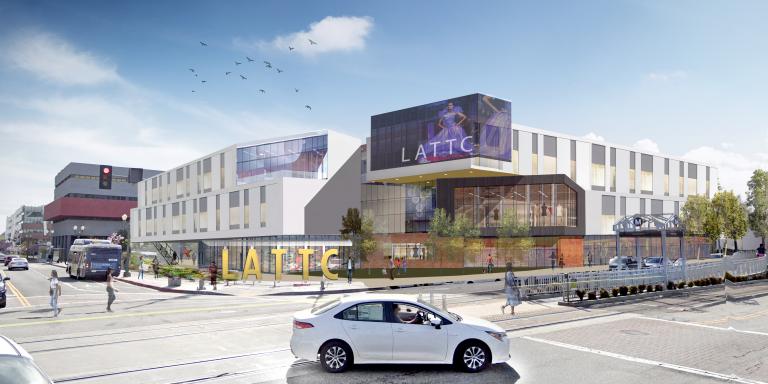 HED announces newest partnership with Los Angeles Community College District: The Design & Media Arts Center ProjectHED is pleased to announce that we have recently been selected as the Prime Architect for the Los Angeles Trade Technical College (LATTC) new Design and Media Arts Center (DMAC) building project!
HED announces newest partnership with Los Angeles Community College District: The Design & Media Arts Center ProjectHED is pleased to announce that we have recently been selected as the Prime Architect for the Los Angeles Trade Technical College (LATTC) new Design and Media Arts Center (DMAC) building project!
The new DMAC building will replace the existing Sage Hall and consist of approximately 80,000 gsf of design and design-related programs brought together in a state-of-the-art facility that includes technology and media rich lab and lecture spaces. Students will have access to industry standard tools in a setting that encourages innovative practices in teaching and learning. The DMAC will consolidate the Fashion Design, Fashion Merchandising, Digital Media, Visual Communications, Sign Graphics, and Tailoring programs, along with room for potential growth in Communications Technologies.
Poised to be an innovative hub and a gateway for the campus, DMAC will sit on the campus’ most prominent corner – an excellent opportunity to showcase design labs and their creations near LA’s Fashion District, with a location along the elevated light rail line. A place for all students to congregate and be supported, DMAC will be both a welcoming and motivating force on the campus while connecting students to many facets of the College. HED is thrilled by the prospect of contributing to another project on LATTC’s campus, especially a project that will create positive impact in the global design community for decades to come!
-
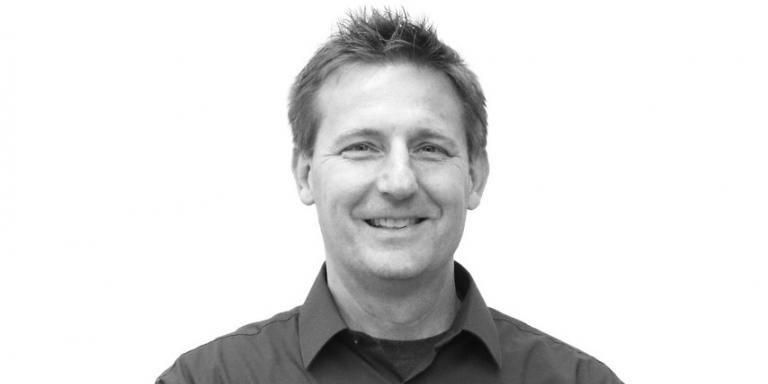 HED elevates Kirk Pesta to Mechanical Engineering Discipline Leader in DetroitHED is pleased to announce that Kirk Pesta, PE, LEED AP, has been elevated to the role of Mechanical Engineering Discipline Leader in the Detroit office. He will be responsible for leading and directing the overall design, technical and production activities of the mechanical engineering teams. In addition, Kirk will join the other discipline leaders across all eight offices in continuing efforts to improve the design and functionality of HED's extensive team of architects, engineers and designers.
HED elevates Kirk Pesta to Mechanical Engineering Discipline Leader in DetroitHED is pleased to announce that Kirk Pesta, PE, LEED AP, has been elevated to the role of Mechanical Engineering Discipline Leader in the Detroit office. He will be responsible for leading and directing the overall design, technical and production activities of the mechanical engineering teams. In addition, Kirk will join the other discipline leaders across all eight offices in continuing efforts to improve the design and functionality of HED's extensive team of architects, engineers and designers.
An active member of professional organizations with over 27 years serving within the mechanical engineering discipline at HED, Kirk is highly skilled both technically and as a project leader. Described as dedicated and thoughtful, and known for his skill in sustainable and healthcare design, Kirk understands that clients want more than consulting services, they seek experts who are their advocates, and his leadership style reflects a client and solutions first approach.
-
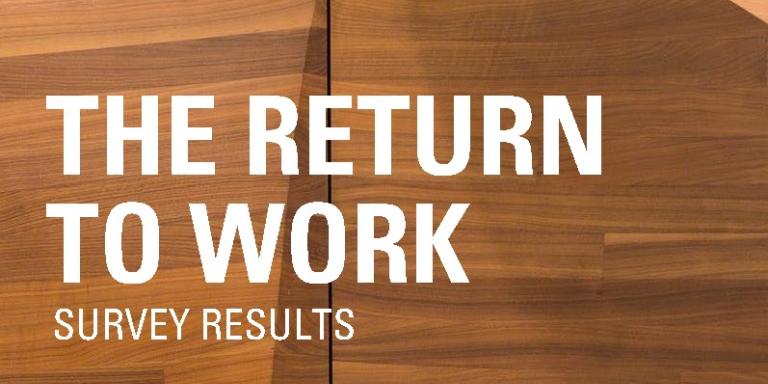 HED Issues The Return To Work Survey ResultsIn April 2020, HED issued a survey to gather insights, practices, and plans related to COVID-19 and the work environment from our clients.
HED Issues The Return To Work Survey ResultsIn April 2020, HED issued a survey to gather insights, practices, and plans related to COVID-19 and the work environment from our clients.
As a follow up, we have summarized the results and used them to identify trends in thinking and hypothesized what this means for the future of the workplace. We hope this data will assist you in planning for the future and we welcome the opportunity to discuss in more detail.
We want to thank everyone who shared their insights, practices, and plans related to COVID-19 and their work environment during our workplace survey, and we hope this information will assist you as you navigate the new normal created by COVID-19. If you'd like to talk about how to use these perspectives in your workplace planning, we're here to help. -
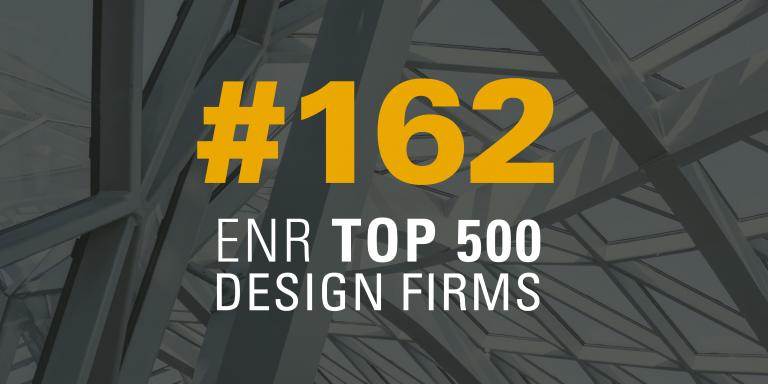 HED Ranks #162 in ENR Top 500 Design Firms ListingHED is proud to share that we are ranked #162 in the Engineering News-Record Top 500 Design Firms!
HED Ranks #162 in ENR Top 500 Design Firms ListingHED is proud to share that we are ranked #162 in the Engineering News-Record Top 500 Design Firms!
In last years rankings, HED was listed at #174, we credit this increase to our strategic growth and dedicated teams.
"We're always excited to be able to share with our teams tangible evidence of our growth in the industry. This jump in the rankings completely belongs to our engineering teams, whose commitment to creating positive impact for our clients is the driving force behind this growth," says Michael Cooper, President of HED and Managing Principal of the Detroit office. -
HED expedites substantial completion of IL Veterans Home to assist state response to COVID-19In early April of 2020, the Illinois Veterans’ Home project reached an expedited substantial completion – representing the culmination of over a decade of effort by the State of Illinois and Designer HED. The project went from being due this summer to needing to be completed in 21-days to make its beds available to the state.
Designed to provide a home for 200 veterans, the project was accelerated from its original summer completion date to have the facility available for emergency care as part of the State of Illinois’ COVID-19 relief effort. This was a natural fit for the program designed as a skilled nursing care facility with 200 beds and single occupancy rooms.
Incorporating small house design at a large scale, each floor is sub-divided into 4 distinct "households." The dining program was developed as a hybrid approach, with a central kitchen and residential format kitchens in each household, incorporating both the needs of the State (the owner/operator) and the residents. The ground floor of the facility was designed based on the "Town Center" principle of CLC guidelines. The four households of the 2nd floor are reserved for Memory Care with access to a secure terrace space.
-
 HED Updates CA Guidelines During COVID-19 OutbreakAs we face the evolving situation of the COVID-19 health crisis, we believe that it is positive that we are able to continue to support our clients during this time and keep the health and safety of our employees at the forefront.
HED Updates CA Guidelines During COVID-19 OutbreakAs we face the evolving situation of the COVID-19 health crisis, we believe that it is positive that we are able to continue to support our clients during this time and keep the health and safety of our employees at the forefront.
HED has prepared the following series of considerations:
• Weekly OAC meetings or other coordination meetings should be handled via Zoom meetings.
• Limited specific on-site services that are required to support construction may include the following:
o Mockup reviews
o Field observation reports
o Pay app reviews
o Punch walks
• Prior to going on site, the Project Manager or PIC needs to ensure that the General Contractor is following CDC guidelines and reinforcing ‘social distancing’ for safety.
• Prior to directing any staff to go to a jobsite, the Project Manager and PIC need to check with the staff know that if they are comfortable with going to the site. If a staff member is uncomfortable going to the site due to COVID 19 related concerns or is in a high-risk group, they should not go to the site and should continue to shelter in place. In this event, please work with your Discipline Leaders to determine an alternate staff member who can make the site visits.
• Any staff member that is ill, should not go to the construction site.
• All HED employees must wear a mask, in addition any site specific items must be observed. A face shield should be worn in addition to the mask if 6 foot distance cannot be consistently maintained. (Updated 11/25/2020)
• When conducting site visits, there will be no requirement to enter construction trailers or confined spaces involuntarily. Physical distancing and mutual wearing of PPE/face mask is a minimum requirement for voluntary site trailer entry. Duration of time in the trailer if entered, should be limited to 15 minutes or less, either intermittently or consecutively, in a 24 hour period. (Updated 11/25/2020)
• For project access on occupied sites, the Project Manager or PIC needs to request that project personnel be provided a separate entry/access point that will allow the project team to better manage the human contact, interaction and social distancing elements.
• If team members are required to traverse corridors or facilities utilized by occupants, for instance in hospitals, the Project Manager or PIC needs to request those corridors be cleared for project personnel to quickly and efficiently perform site work that must be completed.
• If possible, request to conduct the site visits after the tradesman have left the site for the day.
• Make sure that the site visits are organized (e.g. prepare and issue agenda) to avoid protracted and inefficient site visits.
• In certain cases, it may not be required for our staff to conduct a physical site visit to observe construction. Consider having the General Contractor provide photographs for those conditions that are amenable to that type of review.
• Our contracts may require a specific number of site visits, the Project Manager or PIC should check with the Client and General Contractor to determine if less frequent visits can be made as a result of the current circumstance without impact to the quality of work, determination of conformance to the Contract Documents and/or schedule for construction.
• When conducting a site visit, please complete a Site Observation report and make note on the report that the site observation was conducted during the “COVID-19 Outbreak.” This is just good practice to note that we continued to provide site observations during this period of time.
If you have any other concerns or questions regarding any aspect of providing CA services during this time, please reach out to your HED contact for details.
-
 Conducting Essential Business During COVID-19 OutbreakAs a national Architecture and Engineering firm with offices in 8 different cities, we have continued to operate our business in accordance with CDC Guidelines and the ‘Shelter In Place’ orders enacted by local, county, state and federal governments.
Conducting Essential Business During COVID-19 OutbreakAs a national Architecture and Engineering firm with offices in 8 different cities, we have continued to operate our business in accordance with CDC Guidelines and the ‘Shelter In Place’ orders enacted by local, county, state and federal governments.
Though our staff is working remotely from home for the most part, there is occasion that they will need to access our offices, drop-off drawings for plan review at building departments and make site visits to observe construction. In accordance with government orders, our work is considered to be ‘essential’ and allows for our staff to provide these services.
Should our staff presence in these locations be questioned, please accept this statement as verification that our staff is performing ‘essential’ services. Should you have any questions or require additional verification please feel free to contact the respective Managing Principal for each office location, our Corporate HR leader or our Corporate Systems Leader.
Boston/Dallas
Toni Asfour, Managing Principal
617-430-7190
Sacramento/San Francisco
Brett Paloutzian, Managing Principal
415-549-8830
Chicago
Enrique Suarez, Principal
312-324-7440
San Diego
Neville Willsmore, Managing Principal
619-398-3816
Detroit
Mike Cooper, Managing Principal
248-233-0146
Los Angeles
Brent Miller, Managing Principal
213-542-4506
Corporate HR Leader
Petrina Gooch
213-542-4495
Corporate Systems Leader
Tania Van Herle
213-542-4505 -
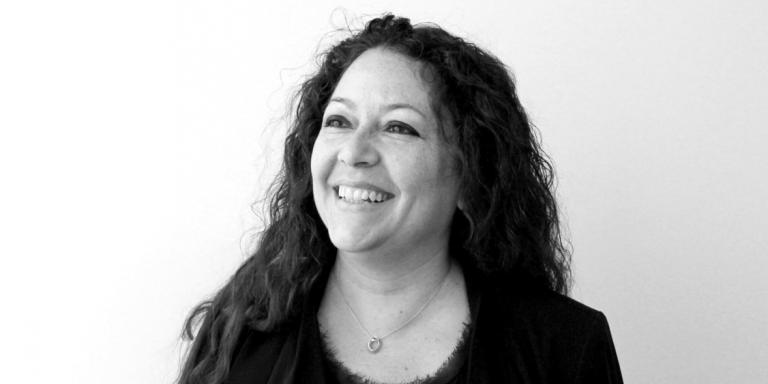 Pre K-12 Sector Leader Jennette La Quire recognized as an Influential Woman of San DiegoHED is pleased to share that San Diego Pre K-12 Sector Leader Jennette La Quire, AIA, LEED AP ID+C, has been named a 2020 Influential Woman of San Diego by the San Diego Daily Transcript.
Pre K-12 Sector Leader Jennette La Quire recognized as an Influential Woman of San DiegoHED is pleased to share that San Diego Pre K-12 Sector Leader Jennette La Quire, AIA, LEED AP ID+C, has been named a 2020 Influential Woman of San Diego by the San Diego Daily Transcript.
Jennette oversees educational facility projects in HED's San Diego Office and has made a lifetime commitment to creating a positive impact for school districts, both students and faculty. She works day to day with partners in the design and construction community to create tangible change in the city and beyond.
You can read her full interview in the print issue of The San Diego Transcript, but here are a few highlights:
In the Transcript Jennette explains, "If you asked me when I was a kid what I wanted to be when I grew up, it was an architect or a teacher." Her commitment to Architecture and Design is a career that brings together Jennette's love of building design and of academia.
The commitment shows.
Known for her mentorship within HED and for generosity with her time, Jennette shares her love of learning with college students as an adjunct professor for San Diego State University's Interior Architecture program. She sees it as her job not just to tell students how to design, but to help them refine their concepts.
"I tell them I'm their bumper in the bowling alley," she grins.
In her 15 years with HED, Jennette has worked with most of the school districts in and around San Diego on facilities ranging from pre-kindergarten through grade 12, as well as with Community Colleges and Universities. The projects negotiate the evolution of education, technology, and class sizes. Many have transformed how the community interacts with a campus, and all of them have been designed with student success at the forefront. Jennette has even done several projects at her alma mater, El Capitan High School in Lakeside, including a 16,000-square-foot, $11.2 million event center.
"I've worked there longer than I went to school there," she quipped. "I just am very passionate about educational design, whether it's teaching students or working with clients," she said. "That's my biggest focus - how can we use the design to advance their worlds."
-
 Sector Leader Susan King has been elected to the Illinois Housing Council BoardHED is pleased to announce that Chicago Housing Sector Leader Susan King, FAIA, LEED AP BD+C has been elected to the Illinois Housing Council Board.
Sector Leader Susan King has been elected to the Illinois Housing Council BoardHED is pleased to announce that Chicago Housing Sector Leader Susan King, FAIA, LEED AP BD+C has been elected to the Illinois Housing Council Board.
The Illinois Housing Council (IHC) is the preeminent voice for industry leaders involved in the creation and preservation of affordable housing in Illinois. As a non-profit, member-based organization, IHC serves as a resource for information, education, and networking opportunities for members from across all sectors. IHC advocates for state-wide affordable-housing-friendly policy and legislation by building constructive relationships with local, state and federal officials and by serving as the ‘go-to’ organization for affordable housing in Illinois.
The success of IHC’s initiatives is rooted in the ability to bring together our members from all aspects of the industry.
"The majority of my career has been focused on the design of affordable housing. I am passionate about it, and believe it is a human right," says King, "Being involved with IHC is a very exciting opportunity for me personally and professionally, as it will not only provide me with a platform to help inform policy and legislation in regard to affordable housing, but will also allow me further support this group whose work deeply I believe in."
You can learn more about IHC and their work using the link below. -
 HED welcomes new Higher Education Sector Leader Melina AluwiHED is pleased to welcome Melina Aluwi, AIA, LEED AP BD+C, NCARB, to the firm as a Sector Leader and Associate Principal in the San Diego office. She will focus on Higher Education projects and will be supported by HED's extensive technical team of architects, engineers and designers.
HED welcomes new Higher Education Sector Leader Melina AluwiHED is pleased to welcome Melina Aluwi, AIA, LEED AP BD+C, NCARB, to the firm as a Sector Leader and Associate Principal in the San Diego office. She will focus on Higher Education projects and will be supported by HED's extensive technical team of architects, engineers and designers.
With experience in both public and private sector educational, civic, cultural, and commercial sectors, Melina’s primary focus has been on education projects. She has worked in various roles from business development and operations to design and construction. With this experience, Melina brings a unique design and management approach to every project.
Prior to joining HED, Melina established herself as a leader and mentor within the profession and within the San Diego architectural community. She understands that a successful project consists of a passion for design and skillful technical execution.
Melina will be integral to HED's effectiveness toward its mission: Advancing Your World, seeking creative solutions that have a positive Impact for our clients, the community, and the world.
-
 HED Promotes Six to its Studio / Sector Leadership TeamHED is pleased to announce six new additions to its studio / sector leadership team. This team of experts / thought leaders across a diverse range of typologies and geographies set direction for HED’s future growth.
HED Promotes Six to its Studio / Sector Leadership TeamHED is pleased to announce six new additions to its studio / sector leadership team. This team of experts / thought leaders across a diverse range of typologies and geographies set direction for HED’s future growth.
The new leaders include:
• Yu-Ming Wei, AIA – Housing, Mixed-Use
• Drew Roskos, AIA, LEED AP, NCARB - Housing
• Sara Martin – Data Center
• Lindsay Shanley – Data Center
• Bharat Patel, PE, LEED AP, CEM – Data Center & Building Science
• Luciana Arim, LEED Green Assoc. – Workplace & Science
“This exceptional group join HED’s team of national leaders who are sector / typology experts. Together, they steer our practice to deliver focused, integrated design solutions that respond to nationwide trends and challenges. It’s this team-oriented leadership that delivers on the ‘bigger picture’ of our client’s design needs.” says HED CEO Peter Devereaux, FAIA
This commitment to specialization and shared leadership is driven directly by the firm’s mission to Advance the World of clients and create positive impact within for our clients, communities and the world.
-
 HED Recognized as a JUST OrganizationHED is proud to announce that it has joined JUST, a program of the International Living Future Institute (ILFI). JUST serves as a tool to help organizations measure their progress on a range of indicators about social justice, equity, diversity, inclusion, and sustainability. The firm is embracing this transparency tool as a way to communicate its intentions and commitments in these realms with the firm's 470-person team, its clients, its communities, and its industry peers.
HED Recognized as a JUST OrganizationHED is proud to announce that it has joined JUST, a program of the International Living Future Institute (ILFI). JUST serves as a tool to help organizations measure their progress on a range of indicators about social justice, equity, diversity, inclusion, and sustainability. The firm is embracing this transparency tool as a way to communicate its intentions and commitments in these realms with the firm's 470-person team, its clients, its communities, and its industry peers.
HED's organizational mission is to create positive impact for its clients, the community, and the world. The firm seeks to achieve these goals through maintaining a company culture that supports happy, healthy, engaged people, and one that fosters social justice, equity, diversity, and inclusion. "The JUST program felt like a perfect lens for the measurement of these core organizational goals," says Petrina Gooch, SPHR, SHRM-SCP, Assoc. AIA. Gooch is a Principal with HED, the firm's Corporate Human Resources Leader, and a member of HED's Board of Directors.
The JUST label gives firms a "grade" on a number of indicators -- such as gender and ethnic diversity, pay equity, and others -- and the grades are made publicly available by ILFI. The overall label offers an annual snapshot of the firm's progress on a number of measures.
According to Gooch, "JUST is a valuable tool that helps us measure and transparently share -- with our team and the world -- how we are doing on key measures that at the core, impact the reality of social justice for every worker," she says. For example, HED excels in the Worker Benefit category: HED scores three of three possible stars in two topics in that category: Worker Happiness and Continuing Education.
Tania Van Herle, AIA, is a Principal with HED and serves as the Corporate Systems Leader. "JUST creates a way for us to have meaningful, transparent dialogue about the impact of social justice in our workplaces and in our world," she says. "We expect the dialogue to advance our own contribution to these critical topics in the communities we serve. We welcome the opportunity to help other companies in this journey to make improvements along with us to better the whole."
Gooch adds that she is encouraged by this step because "it is helping us demonstrate that our policies and efforts on these fronts are not just talk or short-lived optics that will quickly vanish," she says. "We are actively engaged in continuous improvement of this growing organization, which is something we want our people and our community to see and experience as they work with us."
ABOUT JUST
JUST is a "nutrition" transparency label and voluntary disclosure tool for socially just and equitable organizations. JUST is not a certification program, it is a transparency platform for organizations to disclose their operations, including how they treat their employees and where they make financial and community investments. Organizations can use the label on their website or marketing to demonstrate their commitments to these issues. The International Living Future Institute also transparently posts the detailed information in the publicly viewable JUST database. This approach requires reporting on a range of organization- and employee-related indicators. Each of the indicator metrics asks for simple yet specific and measurable accountabilities in order for the organization to be recognized at a One, Two, or Three Star Level, which is then summarized elegantly on a label. -
 HED Announces New Principals, Associate Principals, and AssociatesHED is pleased to share that we are starting the new year by recognizing the talented staff that Advance the World of our clients.
HED Announces New Principals, Associate Principals, and AssociatesHED is pleased to share that we are starting the new year by recognizing the talented staff that Advance the World of our clients.
These promotions, as well as elevations of several employees to Associate Principal and Associate mark the close of a strong year for the firm. In 2019, HED added over 70 new staff and two new metro locations in Boston and Dallas through mergers with Puchlik Design Associates (PDA) and Integrated Design Group (ID Group), expanding the firm’s reach within all sectors.
“The promotion of these individuals reflects the continued growth of our firm, “says HED CEO Peter Devereaux, FAIA. “As we continue to evolve as an organization, increasing in both size and offerings, the responsibility of these individuals has grown to match, and has been integral to the success of our mission of Advancing the World of our clients and communities. Their commitment to building powerful client relationships, delivering innovative work, and creating positive impact has been, and continues to be, indispensable to our success as a firm.”
Principals
• Dennis Julian, PE, ATD, DCEP – Boston
• Marshall O’Keefe – Los Angeles
Associate Principals
• Joe Raia, AIA, LEED AP – Boston
• Jason Rostar, CM-BIM - Chicago
• Mark Karaba, RA, WELL AP, LEED AP – Detroit
• Kevin Shibata, RA – Los Angeles
Associates
• Melinda Conroy, PE – Boston
• Lindsey Burghgraef, NCIDQ, LEED AP, NCARB – Chicago
• Katherine Kalant, AIA – Chicago
• Bernard Vilza, RA – Chicago
• Megan Crawford, PE - Detroit
• Matt Majchrzak - Detroit
• Eric Mitchell, PE - Detroit
• Carl Williams - Detroit
• Eric Wingelaar, AIA, LEED AP – Detroit
• Catherine Araga, AIA, LEED AP BD+C – Los Angeles
• Niccolo Boldrin – Los Angeles
• Katherine Cong, RA, NCARB – Los Angeles
• Thomas Louie, RA – Los Angeles
• Kyungho (Sean) Oh, LEED Green Assoc. – Los Angeles
• Analisa Olson, LEED AP BD+C, NCIDQ – Los Angeles
• Gerard Palody, PE – Los Angeles
• Maryal Peter – Los Angeles
• Feng Wang, RA – Los Angeles
• Taeko Welty – Los Angeles
• Evan Henderson, RA, LEED AP BD+C, NCARB – San Diego
• Emily Perez, AIA, LEED AP, NCARB – San Diego
• Naveen Govind, LEED AP – San Francisco
• Erin Pleticha – San Francisco
• Clarissa Urquico, LEED Green Assoc. – San Francisco
We hope you will join us in celebrating these individuals who create positive impact in our firm and beyond.
-
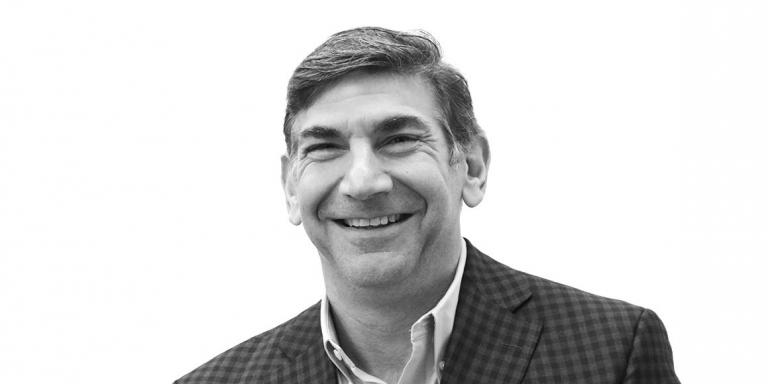 President Michael Cooper elected as a Vice Chair of the ACEC National Executive CommitteeHED President Michael Cooper, PE has been elected to serve as a Vice Chair of the American Council of Engineering Companies (ACEC) Executive Committee.
President Michael Cooper elected as a Vice Chair of the ACEC National Executive CommitteeHED President Michael Cooper, PE has been elected to serve as a Vice Chair of the American Council of Engineering Companies (ACEC) Executive Committee.
A federation of 52 state and regional groups, ACEC is made up of more than 5,600 engineering firm and affiliate members, employing over 600,000 engineers, surveyors, architects, and specialists. The organization advocates locally and nationally to grow business opportunities, reduce risk for engineering firms, and to promote awareness of the value of solid engineering design by qualified experts. They encourage collaboration between practitioners and regions to build networks of colleagues for knowledge exchange, sharing of best practices, and business development. The council also creates and manages programming to educate firms to promote sound business leadership and management excellence and continually celebrates design excellence in the built environment by engineering firms whose projects promote societal and economic benefits and sustained quality of life.
"As an organization, ACEC fosters a business environment that promotes safe, impactful and sustainable design solutions. I believe in this mission personally and believe that our member firms will create a better world for all of us. I have been a part of the ACEC/Michigan leadership team for more than a decade, and am thrilled for the opportunity to now serve the organization at the national level," says Cooper.
Joining Cooper on ACEC's Executive Board are several other new members with terms beginning at the 2020 Annual Convention and Legislative Summit in Washington, D.C., including:
• Robin Greenleaf, CEO of Architectural Engineers, Inc., in Boston, who will become the new chair-elect.
• Edmond Alizadeh, president of Geotechnology, Inc. in St. Louis, who will serve as a Vice Chair.
• Matthew Hirst, president/COO of CRS Consulting Engineers in Salt Lake City, Utah, who will serve as a Vice Chair.
• Gary Raba, president of Raba Kistner, Inc. in San Antonio, who will serve as a Vice Chair.
• Jim Smith, Executive Director of ACEC/North Carolina, who will serve as the NAECE representative to the 2020-2021 Executive Committee.
The new officers will join Charles Gozdziewski, Chairman Emeritus of Hardesty & Hannover in New York; John Carrato, President/CEO of Alfred Benesch & Company in Chicago; Keith London, President/CEO of Kennedy/Jenks Consultants in Murrieta, CA.; Kenny Smith, CEO of T. Baker Smith in Houma, LA; and ACEC President/CEO Linda Bauer Darr on the 2020-2021 Executive Committee.
-
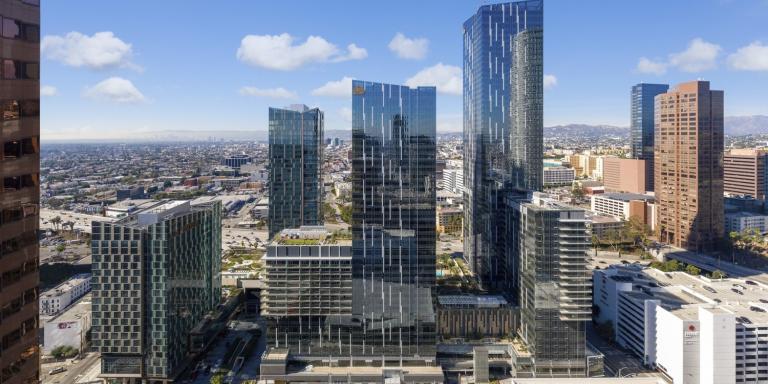 Newly completed Metropolis Towers featured in Urbanize LAIt’s finally here! After six years serving as the Full Service Architect for Phase II (and the Interior Architect of Record on R1) the Greenland USA Metropolis is complete!
Newly completed Metropolis Towers featured in Urbanize LAIt’s finally here! After six years serving as the Full Service Architect for Phase II (and the Interior Architect of Record on R1) the Greenland USA Metropolis is complete!
These mixed-use, high-rise condominiums and for-lease units have been a much anticipated addition to the Los Angeles skyline, and our team couldn’t be prouder of this achievement!”
The tallest 624’-9” tower, at one of the largest downtown Los Angeles mixed-use high-rise projects, “Metropolis” has finally received its TCO (Temporary Certificate of Occupancy) on December 6th and Substantial Completion on December 13th. HED started the design in December 2013 and it has taken the team a full 6 years to come to this far.
The 56-story luxury residential tower is composed of 685 luxury units with mixture of studios, one and two-bedrooms plus 3 bed-room penthouse units. This completes the entire phase II for the 1,200 unit residential, 62,000sf retail with 1,820 parking podium supporting one of the largest roof garden in downtown Los Angeles. HED will continue to support the client for future retail tenant improvements.
The project is the result of 70 largely LA office staffers plus early support from the Chicago and Detroit offices - making it a perfect example of HED's core values of integrated practice and multi-disciplinary collaboration.
You can read more about Metropolis in Urbanize LA below.
-
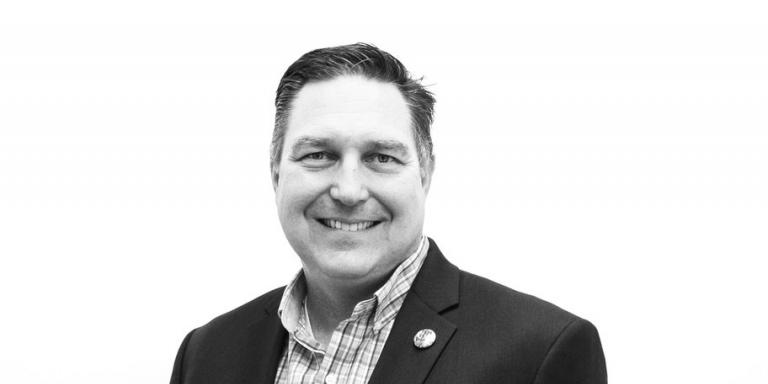 What's Your Plan for Planned Power Outages? Ken Golovko delves into the considerations in ENR article.What is Your Plan for Planned Power Outages?
What's Your Plan for Planned Power Outages? Ken Golovko delves into the considerations in ENR article.What is Your Plan for Planned Power Outages?
On Nov. 18, Pacific Gas & Electric (PG&E) issued its 7th planned power outage notice this year. This outage affected more than 300,000 customers (almost 1,000,000 people) in PG&E’s Northern California service area.
While weather may calm as we head toward winter, we know there will be future outage events, which should drive facility teams to evaluate their preparation.
Our integrated architecture and engineering team at HED has been considering what these outages mean in the larger context of overall building operations and mission resiliency - you can read about some of our takeaways in National Engineering Leader Kenneth Golovko's recent article from Engineering News-Record: "What is Your Plan for Planned Power Outages?"
Some of these considerations include what types of questions facilities leadership should be asking, like:
- Is there any backup power available (generator, on-site solar etc.)?
- Have loads been added to the backup / emergency system versus design?
- Have emergency systems been maintained? e.g. Have the emergency batteries been tested and replaced?
- How much fuel is available for a generator?
- What other services will be affected? Water? Natural Gas? Sewer systems?
- Will your system need a black start generator to engage after a complete power loss?
Kenneth Golovko, P.E., LEED AP BD+C is the National Engineering Practice Leader at integrated architecture and engineering firm HED. A well-recognized, national leader in integrated design, with a particular focus on sustainability, Ken has over 25 years of experience in design and project leadership. If you'd like to continue the conversation about Planned Power Outages, you can reach out to Ken using the link below. -
 HED and Puchlik Design Associates (PDA) Announce MergerHED is pleased to announce its merger with Puchlik Design Associates, also known as PDA, an award-winning architectural firm specializing in healthcare facility design headquartered in Pasadena, CA.
HED and Puchlik Design Associates (PDA) Announce MergerHED is pleased to announce its merger with Puchlik Design Associates, also known as PDA, an award-winning architectural firm specializing in healthcare facility design headquartered in Pasadena, CA.
According to Peter Devereaux, FAIA, Chief Executive Officer of HED, this is a natural step for the firm. “We have partnered with PDA on several occasions and have not only been successful but gratified in the similarity between our two cultures. HED has a large presence in southern California and we have been serving clients in the healthcare sector in other parts of the country for decades. Bringing in PDA was a natural step towards deepening our commitment to southern California and to our expansive set of healthcare clients to provide greater, nationwide service.”
HED leadership recognizes that healthcare remains an important, fast-growing sector throughout the U.S. and beyond. According to a recent report released by the financial analysts at Deloitte, “aging and growing populations, a greater prevalence of chronic diseases, and exponential advances in innovative digital technologies” are all compounding to create a rapidly accelerating growth in this U.S. industry that affects hundreds of millions of people every year
The firm’s further embedding into the California healthcare market is one of several efforts to invest in its healthcare clients in the region and nationally. As Devereaux points out, “Our firm will always seek out methods to provide greater depth and nuance in our services to our clients. This is especially important in technically complex, mission-driven sectors like healthcare, which stand to create the greatest impact for our communities. By bringing PDA into the HED family we are continuing our commitment to design excellence and creating positive impact for our clients and communities. PDA’s decades of knowledge in California, a geography that leads the nation in healthcare trends and standards, combined with our existing depth of talent and national reach will bring tangible benefits to our healthcare clients.”
The PDA leadership and staff will join the HED Los Angeles team in their expanded location in 2020, punctuating the firm’s success and expansion in the region. They join other teams working in Boston, Chicago, Dallas, Detroit, Sacramento, San Diego, and San Francisco, bringing the firm’s total staff to over 470 people.
“We believe that this merger is one of complementary cultures,” says Gerry Puchlik, Principal of PDA, “Like PDA, HED advocates that the role of the designer is to directly and positively impact end users, and they seek to produce designs that create this positive impact for clients and communities through deliberate decision making that contributes to care delivery, health, and wellbeing of the people who inhabit these spaces. I can’t imagine a better fit for the future of our talented team.”
-
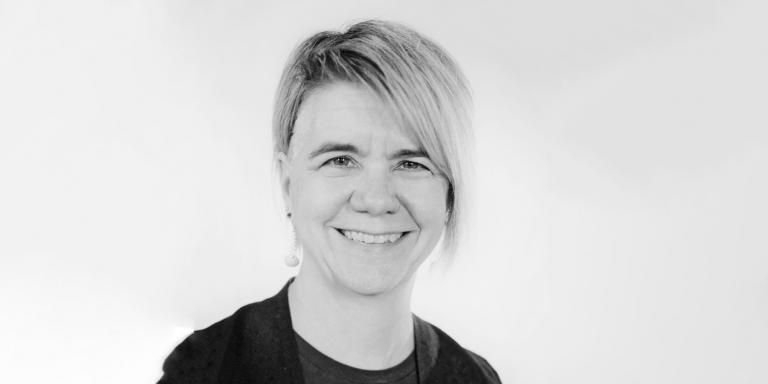 "Advocacy, Activism, and Alliances in American Architecture" Podcast Series from Studio Leader Susan KingAs heard at NOW WHAT Chicago: "Advocacy, Activism, and Alliances in American Architecture" part 1 of 6 - a panel on Chicago's legacy of female and minority architects.
"Advocacy, Activism, and Alliances in American Architecture" Podcast Series from Studio Leader Susan KingAs heard at NOW WHAT Chicago: "Advocacy, Activism, and Alliances in American Architecture" part 1 of 6 - a panel on Chicago's legacy of female and minority architects.
Featuring:
HED Principal Susan King, FAIA, LEED AP BD C
Professor and Author Kathryn Anthony
Smytha Vasan, President of The Illinois Chapter of the National Organization of Minority Architects (I-NOMA)
and Veselka Ivanovic, President of Chicago Women in Architecture (CWA).
-
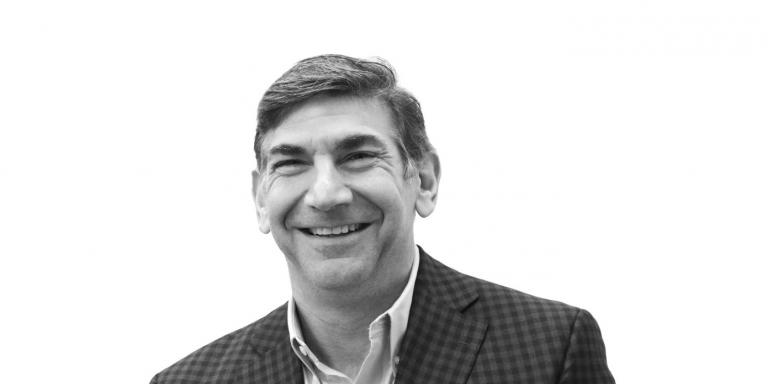 President Michael Cooper on Jon Dwoskin's THINK Business Podcast: "Why You Need To Know Your Client"Our President Michael Cooper was recently a guest on the Jon Dwoskin THINK Business podcast, speaking directly to client insights and how to value the relationships and information clients provide.
President Michael Cooper on Jon Dwoskin's THINK Business Podcast: "Why You Need To Know Your Client"Our President Michael Cooper was recently a guest on the Jon Dwoskin THINK Business podcast, speaking directly to client insights and how to value the relationships and information clients provide.
"If I want to understand our markets, I want to talk to our clients," says Michael, "I want to talk to our partners and hear from them. What are you pain points? What are your challenges? What keeps you up at night?"
in this episode, Michael shares insights on several topics, including:
- Client Insights
- Leveraging Research
- Building a "People First" organization
- Mentorship
Jon Dwoskin is a business coach, executive coach, author, speaker and podcast host who provides leadership training, business coaching and executive advising to shift mindsets, recharge batteries and get executives to start thinking, acting and leading like CEOs of their own companies. His podcast, THINK Business, features 1:1 in-depth and soulful conversations with executives, managers and sales people who are making a difference in their companies, communities and in themselves.
You can listen to this and other episodes of his podcast using the link below. -
 HED's Science and Technology Studio Leader Louis Hartman on "Designing for a Forensic Crime Laboratory" in a free webinar from Lab ManagerHear HED's Science & Technology Studio Leader Louis Hartman's take on "Designing for a Forensic Crime Laboratory," in this free webinar from Lab Manager! The piece also features Ken Mohr, Sr. Forensic Planner/Programmer of HED's joint-venture DBA, Crime Lab Design.
HED's Science and Technology Studio Leader Louis Hartman on "Designing for a Forensic Crime Laboratory" in a free webinar from Lab ManagerHear HED's Science & Technology Studio Leader Louis Hartman's take on "Designing for a Forensic Crime Laboratory," in this free webinar from Lab Manager! The piece also features Ken Mohr, Sr. Forensic Planner/Programmer of HED's joint-venture DBA, Crime Lab Design.
Forensic crime laboratories are unique in the sense that these facilities house laboratories of all sciences. Biology labs are used by pathologist to examine decedents or to detect possible body fluids on evidence and perform DNA analysis. Chemistry labs are used by chemists to test controlled dangerous substances and drugs or perform latent print collection and identification. Cyber labs examine computers, cell phones, and other devices for intelligence information evidence. Physical labs perform ballistics tests and conduct firearm and toolmark examinations. There are a lot of moving parts. And these sciences are ever evolving, forcing the forensic industry to evolve and crime lab facilities to expand as well.
Additionally, each crime lab facility presents a unique set of design considerations. From an architectural and engineering perspective, no cookie-cutter solution exists when creating forensic facilities. There are specialized considerations and unique challenges of forensic laboratories, including evidence intake, chain of custody, and storage; proper ventilation and contamination/odor control; changing technologies / methodologies; current accreditation criteria; operational efficiency; security; and health and safety. Ultimately, a specialized process of programming, planning, design, and construction of these facilities require integrated architectural, engineering, and lab planning solutions.
With all of these different components, how do a design team, laboratorians, and forensics lab managers address planning for a new crime laboratory sufficient for today and well into the future?
This session explores:
- A scenario of planning for a 50,000 to 150,000 sq. ft. crime lab facility
- The role and involvement of end users
- Organization of the planning team
- Architectural and engineering solutions
- Cost to design and build a forensic laboratory
Listen to the full piece using the link below. -
 HED & Herrero Builders Celebrate the Completion of Sutter Health's Alta Bates Summit Medical Center's RenovationHED, along with Herrero Builders, a San Francisco-based general contractor specializing in IPD and Lean construction, are pleased to announce the completion of the South Wing Renovation of the Alta Bates Summit Medical Center hospital campus. The team used a LEAN Integrated Delivery Process to design and construct a brand-new Dietary Center, a new MRI Suite, and a new Doctor's Lounge within one of the campus' most visited buildings.
HED & Herrero Builders Celebrate the Completion of Sutter Health's Alta Bates Summit Medical Center's RenovationHED, along with Herrero Builders, a San Francisco-based general contractor specializing in IPD and Lean construction, are pleased to announce the completion of the South Wing Renovation of the Alta Bates Summit Medical Center hospital campus. The team used a LEAN Integrated Delivery Process to design and construct a brand-new Dietary Center, a new MRI Suite, and a new Doctor's Lounge within one of the campus' most visited buildings.
This 37,000 square foot ground floor renovation is the second of a series of projects undertaken by the joint team as a part of a large facilities Master Plan developed by HED for Sutter Health, focused on three distinct areas of improvement: seismic compliance, service line enhancements and infrastructure improvement. The facilities master plan, completed in 2018, ultimately organized and sequenced over 70 individual projects to be undertaken across three campuses over the course of the next decade.
"As we looked at the varied needs across the campuses, we knew one thing clearly – we never wanted to undergo a renovation project in the same space twice and wanted to make these renovation disruptions as minimal as possible," said Shurid Rahman, a Project Manager with Sutter Health.
The $30 million ground level renovation project incorporates several different uses in the South Wing of the Alta Bates Campus building. Given an expanded need for MRI imaging, an MRI suite was added through the project with significant inpatient holding space to accommodate a growing stroke program.
In addition, to support the growing patient and visitor population, the campus dietary space was expanded and reimagined to provide enhanced food preparation and delivery and an elevated dining experience for staff, patients, and guests. Finally, to support the intensified efforts to recruit Doctors amidst California's growing population, a comfortable, well-lit Doctor's Lounge was added within the space as well.
"The interior renovation of this building incorporated a complete reconfiguration of uses to adapt to the changing needs of the Sutter Health organization," said Brett Paloutzian, Principal with HED. "Through our integrated partnership with Herrero Builders and Sutter Health, we were able to deliver this complex renovation project utilizing LEAN construction principals and met Sutter Health's goals for the project's schedule and budget." -
 The opening of the Max and Debra Ernst Heart Center at Beaumont Hospital has been featured in Medical Design and Construction MagazineBeaumont Hospital has been a longtime leader in cardiovascular care and developed the Max & Debra Ernst Heart Center to research better approaches to congestive heart failure, improving patient quality of life. They turned to HED for the firm's experience and specialization in heart centers.
The opening of the Max and Debra Ernst Heart Center at Beaumont Hospital has been featured in Medical Design and Construction MagazineBeaumont Hospital has been a longtime leader in cardiovascular care and developed the Max & Debra Ernst Heart Center to research better approaches to congestive heart failure, improving patient quality of life. They turned to HED for the firm's experience and specialization in heart centers.
"This kind of focused, Heart Failure Clinic is becoming ever-important to today's patient populations. The design incorporates a mix of highly technical solutions and operational efficiencies that will impact the quality of care and quality of life for both patients and providers."
- DAVID JAEGER, AIA, LEED AP, EDAC | HED HEALTHCARE STUDIO LEADER
With heart failure as the top reason for hospitalization of people 65 and older, the disease can greatly undermine patients' quality of life. Heart Failure Clinics are not yet common around the U.S., but their growing prominence is linked to a decrease in the number of deaths caused by heart failure or coronary heart disease over the past several years.
This new center is designed to treat 100 patient visitors per day in an outpatient setting, reducing emergency room visits and hospital stays. Comprehensive services include 12 patient care rooms, echocardiogram, stress testing and medication infusion treatment rooms.
You can also read more about this success at Beaumont in Crains Detroit Business, Building Design + Construction, and Healthcare Design.
-
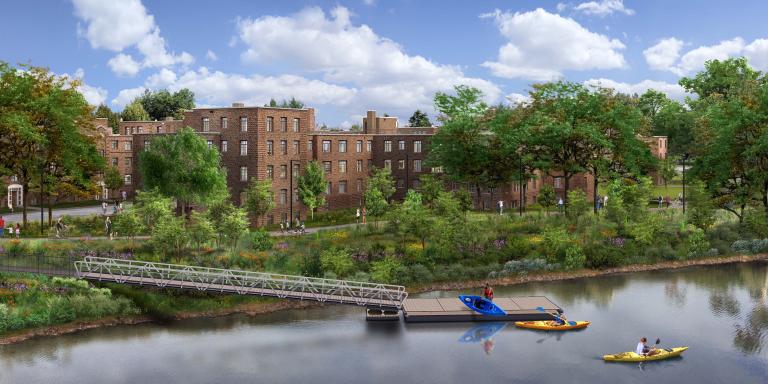 Preservation and Revitalization at Historic Lathrop is CompleteJulia C. Lathrop Homes was originally designed by a collective of architects and constructed in 1938 as a New Deal model for public housing. Today (10/15/2019), Lathrop has completed its multi-phase transformation into a new mixed income residential and commercial community led by Lathrop Community Partners, a partnership of Related Midwest, Heartland Housing and Bickerdike Redevelopment Corporation with HED acting as the Executuve Architect for Phase one!
Preservation and Revitalization at Historic Lathrop is CompleteJulia C. Lathrop Homes was originally designed by a collective of architects and constructed in 1938 as a New Deal model for public housing. Today (10/15/2019), Lathrop has completed its multi-phase transformation into a new mixed income residential and commercial community led by Lathrop Community Partners, a partnership of Related Midwest, Heartland Housing and Bickerdike Redevelopment Corporation with HED acting as the Executuve Architect for Phase one!
Lathrop is unique in terms of its location on the Chicago River on the northside, the recently rehabbed North Campus includes the original Administration Building, updated apartment buildings and rowhouses, Prairie style landscape architect Jens Jensen’s Great Lawn, and the re-activated riverfront.
HED contributed its integrated design expertise and extensive housing knowledge to modernize the historic structures, address accessibility challenges and coordinate new systems not imagined in the original structures. However, the tradition of collaboration among architects and designers has also been continued in the Lathrop redevelopment. The project was master planned by Farr & Associates and HED leveraged the talents of project designer JGMA, landscape architects Michael Van Valkenburgh (MVVA) Historic Preservationist McGuire Igleski & Associates (MIA), and Civil Engineering by Terra.
Together, this team has reimagined the historic 35-acre development through a multi-phased masterplan that honors the original intent of the famed landscape architect Jens Jensen and creates a vibrant attraction on the City’s rapidly redeveloping riverfront, including the preservation and modernization of 16 historic buildings on the north half of the site and creating six acres of green space. Lathrop is now a bustling, diverse and sustainable neighborhood connecting two of the City’s most prominent areas.
“Related is proud of our long history of successfully preserving and developing affordable and mixed-income communities that serve the needs of all residents and the neighborhood,” said Curt Bailey, president of Related Midwest. “For Lathrop, we worked closely with our partners to revitalize and reimagine a historic riverfront community rooted in a rich cultural past. Through the Lathrop Partners public-private partnership, we have brought to life the first phase of a vibrant mixed-income community that everyone can call home.”
-
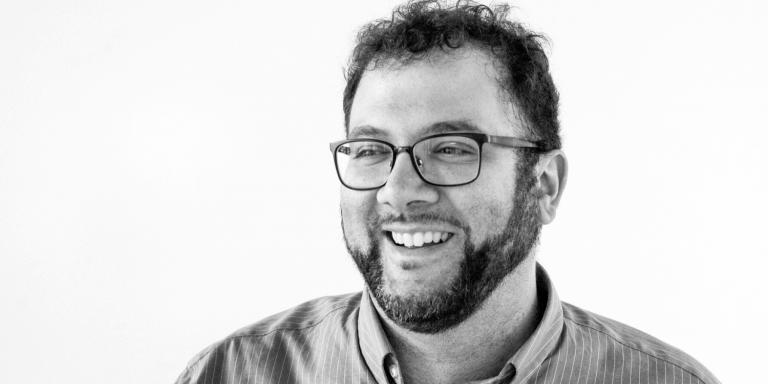 Sustainability Leader Dan Jaconetti attends Carbon Positive 2019 SummitHED's Sustainability Leader Daniel Jaconetti, AIA, LEED is attending the Architect 2030 Carbon Positive Summit - an invitation only gathering of the world’s most influential architecture, planning, engineering and construction firms to establish a plan of action for dramatically reducing embodied carbon in the built environment.
Sustainability Leader Dan Jaconetti attends Carbon Positive 2019 SummitHED's Sustainability Leader Daniel Jaconetti, AIA, LEED is attending the Architect 2030 Carbon Positive Summit - an invitation only gathering of the world’s most influential architecture, planning, engineering and construction firms to establish a plan of action for dramatically reducing embodied carbon in the built environment.
Over the next 4 decades, the world is projected to construct 230 billion square meters (2.5 trillion square feet) of buildings, an area roughly equal to the current worldwide building stock, or the equivalent of adding another New York City to the planet every 34 days.
The upfront carbon emissions associated with just three materials used in the construction of new buildings and infrastructure nearly equals annual building sector operational emissions.
By 2050, the embodied carbon from these materials in all new buildings and urban infrastructure, if built to western standards, could consume 60% of the world’s 2°C carbon budget, unless we change course, quickly.
"We are committed to advancing our clients world, and believe that this promise includes using our influence and buying power as a firm to create a positive and sustainable future for all," says Jaconetti.
The firms invited to participate in this event are currently responsible for approximately $2 trillion, or 20% of annual new construction globally. The CarbonPositive‘19 Summit will convene the leadership of these most influential architecture, engineering, planning and construction firms to take action on embodied carbon in the face of unprecedented global construction and urbanization. Discussion will focus on the most impactful and innovative design strategies, material technologies, policies and tools for rapidly driving global change through CarbonPositive practice.
-
 Patrick Slattery joins HED as Business Development Manager in ChicagoHED welcomes Patrick Slattery to the firm as a Business Development Manager serving workplace and housing clients in Chicago. With over a decade of experience in architecture and design, Patrick leverages extensive expertise across multiple disciplines including, workplace, hospitality, housing, mixed-use, retail healthcare programs, as well as extensive experience within the real estate development industry, and international markets serving clients such as Equity Commonwealth, Northwestern Memorial, PIRHL Development, JP Morgan Chase, and Palmer House Chicago, among others.
Patrick Slattery joins HED as Business Development Manager in ChicagoHED welcomes Patrick Slattery to the firm as a Business Development Manager serving workplace and housing clients in Chicago. With over a decade of experience in architecture and design, Patrick leverages extensive expertise across multiple disciplines including, workplace, hospitality, housing, mixed-use, retail healthcare programs, as well as extensive experience within the real estate development industry, and international markets serving clients such as Equity Commonwealth, Northwestern Memorial, PIRHL Development, JP Morgan Chase, and Palmer House Chicago, among others.
Prior to joining HED, Patrick stewarded workplace & tenant improvement pursuits across the US and Canada as a Sr. Project Manager for CBRE - Global Workplace Solutions. Dedicated to design as an evolving, lifetime pursuit, he also gives back to the profession by serving as an Adjunct Professor of Architecture & Design at Robert Morris University.
Patrick’s passion for design and a creative pragmatism will be integral to HED’s effectiveness toward its mission: Advancing Your World. we seek creative solutions that have a positive Impact for our clients, the community, and the world.
-
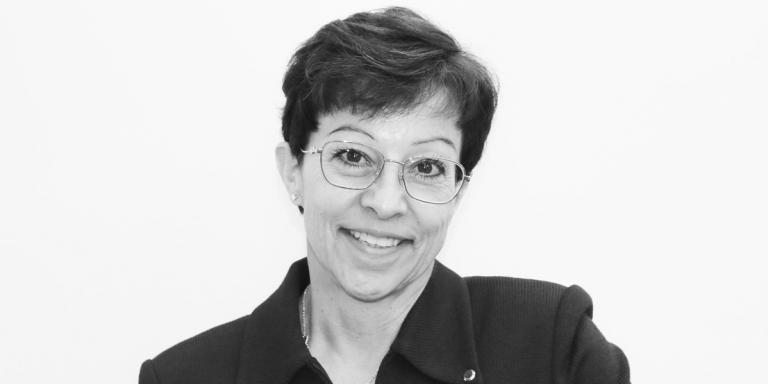 HED welcomes Maria Meldrum, JD, MBA, PE as Associate Corporate Counsel and Associate Principal in the Detroit office.HED welcomes Maria Meldrum, JD, MBA, PE as Associate Corporate Counsel and Associate Principal in the Detroit office.
HED welcomes Maria Meldrum, JD, MBA, PE as Associate Corporate Counsel and Associate Principal in the Detroit office.HED welcomes Maria Meldrum, JD, MBA, PE as Associate Corporate Counsel and Associate Principal in the Detroit office.
With more than 17 years of experience representing legal interests of Architects, Engineers, Land Surveyors, Geologists, and Contractors in complex and technical construction, environmental, and commercial litigation matters Maria will leverage her extensive experience litigating and arbitrating both small and complex building and construction related matters in her counsel and representation of HED.
Described as a high-energy leader who applies superb problem-solving, communication, and interpersonal skills, Maria began her career in civil engineering, practicing in the field for over 10 years before transitioning to law.
Maria’s extensive experience with Legal, Financial, and Engineering expertise combined with creativity, resourcefulness, and independent thinking will be invaluable to our firm as we continue to seek out new ways to create positive impact for our clients, the community, and the world.
-
 Rick Castillo joins HED LA as Corporate & Commercial Housing Studio LeaderHED welcomes Rick Castillo, AIA, NCARB, to the firm as a Studio Leader and Associate Principal in the Los Angeles office. He will oversee Corporate and Commercial housing projects and will be supported by HED's extensive technical team of architects, engineers and designers.
Rick Castillo joins HED LA as Corporate & Commercial Housing Studio LeaderHED welcomes Rick Castillo, AIA, NCARB, to the firm as a Studio Leader and Associate Principal in the Los Angeles office. He will oversee Corporate and Commercial housing projects and will be supported by HED's extensive technical team of architects, engineers and designers.
With over 30 years of experience in Architecture, Design, and Construction, Rick is respected for his pragmatic approach to project design and ability to lead multiple user groups, consultants, and construction professionals.
His extensive portfolio includes complex, mixed use and high-rise projects for prominent clients throughout California, the western United States, and internationally.
Prior to joining HED, Rick established himself as a leader and mentor within the profession. He understands that a successful project consists of a passion for design and skillful technical execution.
Rick will be integral to HED's effectiveness toward its mission: Advancing Your World. Founded in 1908, we seek creative solutions that have a positive Impact for our clients, the community, and the world.
-
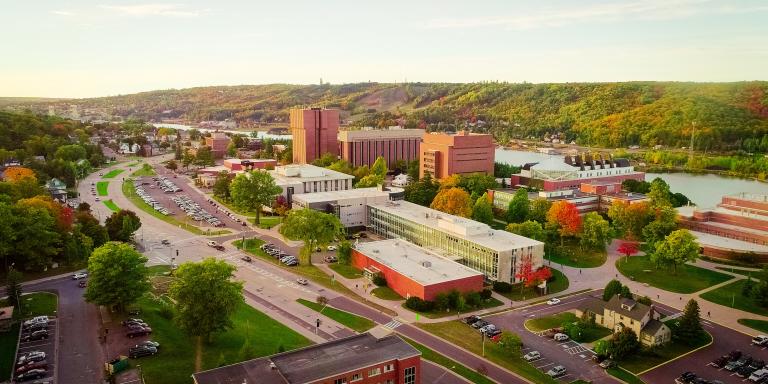 HED has been selected as the designer for the new Michigan Technological University H-STEM Engineering & Health Technologies ComplexHED is excited to partner with Michigan Technological University (MTU) to create a new H-STEM Engineering & Health Technologies Complex, which will house MTU’s integrated educational programs that apply engineering and science to issues related to human health. The complex will co-locate multiple departments including Biology, Biomedical Engineering, Chemistry, Chemical Engineering and Kinesiology/Integrated Physiology to work together in shared collaborative space to advance learning, develop new technologies and prepare a technologically skilled future workforce. One of the leading STEM Universities in the Midwest, the new H-STEM Complex will allow MTU’s scientists and engineers to make new discoveries through research, by supporting workforce and economic development in the state of Michigan and strengthening the University’s role as a leader in STEM education and innovation. The project will also look to advance MTU’s sustainability goals to create environments focused on the health of building occupants and efficient use of energy and resources.
HED has been selected as the designer for the new Michigan Technological University H-STEM Engineering & Health Technologies ComplexHED is excited to partner with Michigan Technological University (MTU) to create a new H-STEM Engineering & Health Technologies Complex, which will house MTU’s integrated educational programs that apply engineering and science to issues related to human health. The complex will co-locate multiple departments including Biology, Biomedical Engineering, Chemistry, Chemical Engineering and Kinesiology/Integrated Physiology to work together in shared collaborative space to advance learning, develop new technologies and prepare a technologically skilled future workforce. One of the leading STEM Universities in the Midwest, the new H-STEM Complex will allow MTU’s scientists and engineers to make new discoveries through research, by supporting workforce and economic development in the state of Michigan and strengthening the University’s role as a leader in STEM education and innovation. The project will also look to advance MTU’s sustainability goals to create environments focused on the health of building occupants and efficient use of energy and resources.
HED is inspired by MTU’s vision for the H-STEM project and its proposed plan to reimagine its existing facilities to create new state-of-the-art instructional and research spaces to support team-based learning and encourage interdisciplinary relationships. HED brings significant higher education, STEM and laboratory programming and planning experience to this project and will provide architectural design, lab planning, MEPFP engineering and landscape architectural design services for the project, on MTU’s campus overlooking Portage Lake in Houghton, Michigan. As part of this effort, HED will support MTU in securing State of Michigan approval at each project milestone.
The H-STEM Complex will be designed to support the University’s mission - to create solutions for society’s challenges by delivering action-based undergraduate and graduate education, discovering new knowledge through research, and launching new technologies through innovation.
The project is targeting completion by fall, 2023.
-
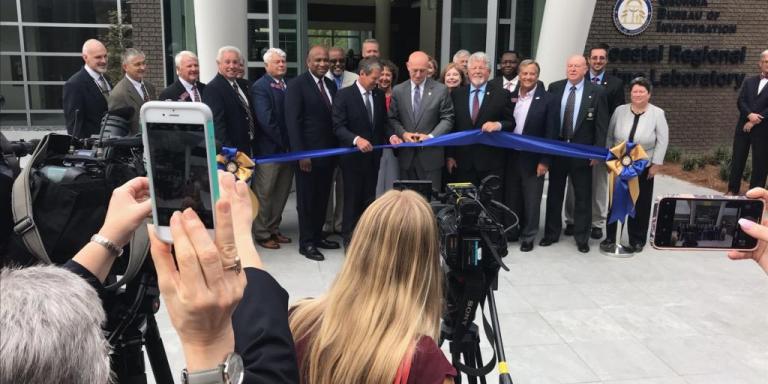 Georgia Bureau of Investigation Coastal Regional Crime Laboratory Holds Grand OpeningCongratulations to our client, The Georgia Bureau of Investigation, who celebrated the Grand Opening of their new Coastal Regional Crime Laboratory in Savannah, GA, last week!
Georgia Bureau of Investigation Coastal Regional Crime Laboratory Holds Grand OpeningCongratulations to our client, The Georgia Bureau of Investigation, who celebrated the Grand Opening of their new Coastal Regional Crime Laboratory in Savannah, GA, last week!
This new state-of-the-art forensic center replaced the oldest lab facility in the GBI regional system and serves 24 counties in southeast Georgia. The facility design proactively addresses the growing demand for forensic services in the southeastern region of the state and comprises forensic labs and lab support, medical examiner space and support, evidence control and storage, and office and shared space. Forensic services include DNA/forensic biology, firearms (including test and firing range), drug chemistry, toxicology, and pathology/autopsy along with associates support and evidence control.
Georgia Gov. Brian Kemp was in attendance along with many other state leaders and City officials, like Mayor Mike Lamb.
“I know that this crime lab is designed to better serve, and I believe that it will. I believe it will make the agency more efficient," the governor said. "I know that it will provide easier access for the law enforcement community, certainly in Southeast Georgia.”
GBI Director Vic Reynolds says the new facility will meet the growing demand of forensic services across the state.
“What this facility will do, it will allow them to bring those items that need to be tested to a brand new structure that has the most cutting edge scientific equipment; that has the ability to grow over the course of many years in this part of the state.”
Mayor Mike Lamb says the new lab will help create jobs while providing families and victims with finding the truth in their cases.
“This is going to help our city, but also the entire area around here, so it’s a blessing for our city, but it’s a blessing for the entire area so that they can bring evidence to this particular location and get back to their cities quickly.”
Through a collaborative approach, HED's sub-joint venture specialist company Crime Lab Design applied Lean Six Sigma principals to create efficient and organized workflows capable of meeting changes in forensic science capabilities and criminal justice expectations over the next three decades, providing programming, laboratory and equipment planning through CA, MEP design through DD, and CD peer review.
-
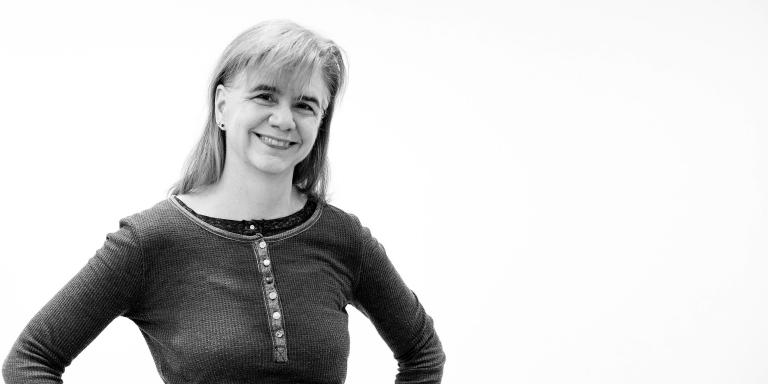 Susan King FAIA on 9 Ways the Dimensions of Wellness Improve Assisted Living Facility DesignSusan King, FAIA, LEED AP BD+C’s article “Nine ways the dimensions of wellness should be incorporated into assisted living facility design” has recently been published in Healthcare Facilities Today.
Susan King FAIA on 9 Ways the Dimensions of Wellness Improve Assisted Living Facility DesignSusan King, FAIA, LEED AP BD+C’s article “Nine ways the dimensions of wellness should be incorporated into assisted living facility design” has recently been published in Healthcare Facilities Today.
The 'Dimensions of Wellness' can range anywhere from 4 to 12 dimensions based on who you ask and have been defined by organizations such as the National Wellness Institute, The Institute for Wellness Education, and Universities all around the country. One thing that all agree on, though, is that wellness is more than just the absence of disease.
Can the built environment play a part in this effort? Absolutely.
-
 Kenneth Golovko joins HED as National Engineering Practice LeaderKenneth Golovko, a seasoned engineering leader with a reputation for shaping the industry’s approach to architecture and engineering integration, has joined HED in its Los Angeles office. Serving as the National Engineering Practice Lead, the move represents a focus on deepening the firm’s commitment to integrated engineering and architectural services to provide greater design excellence in both form and function.
Kenneth Golovko joins HED as National Engineering Practice LeaderKenneth Golovko, a seasoned engineering leader with a reputation for shaping the industry’s approach to architecture and engineering integration, has joined HED in its Los Angeles office. Serving as the National Engineering Practice Lead, the move represents a focus on deepening the firm’s commitment to integrated engineering and architectural services to provide greater design excellence in both form and function.
Ken Golovko’s 25+ years in the A/E industry have ranged from providing energy analysis for a multinational food and beverage manufacturer to leading multidisciplinary teams through hundreds of millions in design work. Ken’s passion for integrated design stems from his varied experience on both the contracting side and design side of the project development process. This passion has also led to a strong reputation for leadership of Design/Build projects, where he has worked to ensure that design solutions meet mission needs such as the pressing topics of resiliency and energy performance.
“Our firm has gone through significant growth in the last couple of years, and we have felt focused on ensuring strong engineering leadership through that growth,” said HED CEO J. Peter Devereaux, FAIA, LEED AP. “We are excited to have Ken join our team to help craft our strategic approach to both engineering integration as well as capturing new engineering assignments for our talented, growing group of engineers.”
Prior to joining HED, Golovko worked most recently as an Associate Vice President with AECOM. He has also been a long-time volunteer Board Member with the Orange Empire Chapter of ASHRAE (American Society of Heating Refrigeration and Air-Conditioning Engineers) organization and with the Ketchum Downtown YMCA in Los Angeles.
“HED has a strong reputation across the country for delivering high quality work for its clients. The firm has been a long-time leader in the integrated design movement, I am truly honored to be joining this team,” said Ken Golovko. “With eight offices now spread across the country, I am confident that we will continue to grow HED’s reputation for its engineering work, and I look forward to helping to enhance the multi-office collaboration and knowledge sharing in the years ahead.”
-
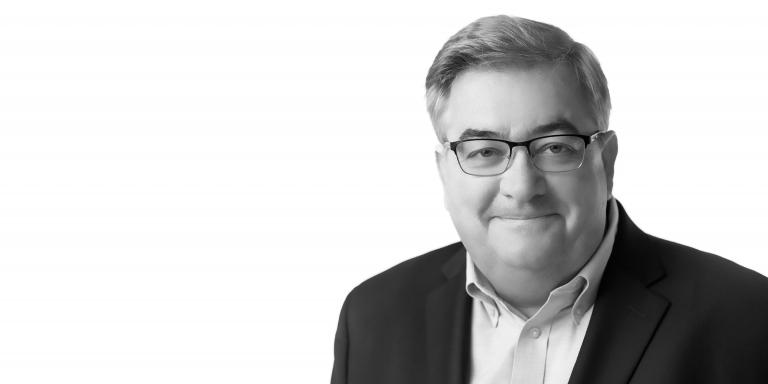 Data Center Studio Leader Gary Murphy moderates at DICE EastNational Data Center Studio Leader Gary Murphy moderates at DICE East, a full-day Data Center Investment Conference & Expo in Northern Virginia on May 29th.
Data Center Studio Leader Gary Murphy moderates at DICE EastNational Data Center Studio Leader Gary Murphy moderates at DICE East, a full-day Data Center Investment Conference & Expo in Northern Virginia on May 29th.
With over 100 data centers and over 4.7 million square feet of data center space, Northern Virginia takes the lead as the world’s largest data center market making it a natural choice for this year’s DICE East data center conference. As a Principal and Leader of HED’s Data Center Studio, Gary Murphy will serve as moderator for “Next-Gen Applications: AI, IoT, Data Security & Beyond,” a panel of C-Suite experts from industry and the public-sector like: Dr. Curtis Levinson, CISO of MetTel; Jon Greaves, CTO of QTS Realty Trust, Inc.; Carrie Parikh, COO & Chief Data Privacy Officer, Office of IT, State of New Jersey; Mehdi Paryavi, Chairman, International Data Center Authority (IDCA); and Christopher Steel, Senior Director, Artificial Intelligence & Machine Learning, IQVIA.
Gary has spent over 30 years in the built environment and specifically in data center design and construction. As the leader of HED’s Data Center Studio, Gary focuses on defining customers’ needs at any scale and assisting the team in developing creative solutions.
-
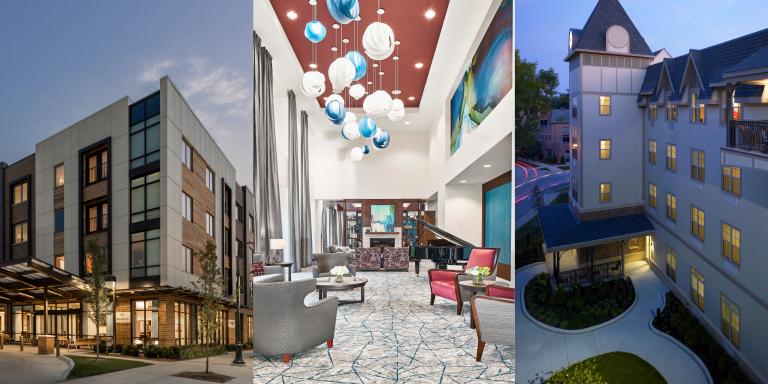 ReConnecting with LeadingAge Illinois – Our Team’s Thoughts and TakeawaysHere are our team’s takeaways on the Key Themes and Reveals of LeadingAge Illinois:
ReConnecting with LeadingAge Illinois – Our Team’s Thoughts and TakeawaysHere are our team’s takeaways on the Key Themes and Reveals of LeadingAge Illinois:
• Predapt!
• The Dimensions of Wellness and how the Built Environment can support them
• Senior Living in Urban Environments – worthwhile considerations
• The Arrival and Impact of For-Profit Developers
• The Fate of the 202 Program
Adaptation is too late – Predapt!
Wearable sensors are changing Senior Care. Using a wearable sensor, we can predict a fall within 3 weeks’ time with 86% accuracy by measuring walking gait. This is a huge innovation because we know that if we can avoid falls, we extend life 2.5 to 3 years, prolonging Independence, and prolonging entry into Skilled Nursing. Another example is a sensor that can detect a UTI. Another huge gain, especially for senior women, in whose population UTI’s take on symptoms of and are often mis-diagnosed as dementia or stroke. When applied creatively, the possibilities for technology extend to outside of the healthcare realm to things like autonomous vehicles or drones, which can provide independent mobility or even deliver medication.
This technology is not in the future, it’s here and affordable.
The solution? Reorient how we think about senior care challenges. Stop dealing with problems AFTER they happen. Change your approach to problems to solve at the source – PREDAPT.
(Learn more from Rebecca Costa at http://www.rebeccacosta.com)
The Dimensions of Wellness
The Dimensions of Wellness can have anywhere from 4 to 12 dimensions based on who you ask! But we all agree that wellness is more than the absence of disease. We also know that Seniors prefer to age in place – and that it becomes harder to age in place with multiple hospitalizations.
The solution? Predapt! Use Whole Person Wellness programming to support chronic disease management and reduce risk of injurious falls. This is accomplished by identifying challenges early and referring residents to the services they need prior to a devastating event – services that address Health Literacy Education, Chronic Condition Support, Maximizing function and mobility and touch on multiple dimensions of wellness like Emotional, Spiritual, Social, Physical, Intellectual and Vocational programs.
Can the built environment play a part in this effort? Yes!
At HED we use the wellness dimensions as an additional guide for senior living planning by looking for the opportunities where architecture can reinforce these dimensions. Like in exercise room planning – try to have windows in the space and orient the machines to have the user facing outward, adding a visual connection to nature that supports emotional health while supporting physical health.
For example, our takeaways from the Using the Built Environment to Support Dimensions of Wellness – especially for Residents with Dementia include:
• Lean into the influence of hospitality already present in the market by implementing hospitality design elements into care.
• Design a meal program that engages the resident’s social behavior appropriately. Some residents have a difficult time adjusting to new social behavior. A 90-minute formal dinner may not be as socially beneficial to some as a grab-n-go environment.
• Avoid glare by using sheer drapery. Horizontal louver blinds will create a striation effect that can be very disorienting for seniors.
• Provide contrast between horizontal surfaces (ex. an elderly person will not be able to discern the front edge of a light-colored chair that is placed on a light-colored rug). Use a contrasting cushion or table colors to avoid misjudging of furniture locations.
• Most seniors need to see each other to understand a conversation, so make sure to locate furniture to provide clear lines of sight between participants.
• Consider the mounting height of signage. Even though able-bodied persons may consider signage that is mounted per accessibility codes to be low, this height may already be above the line of sight for an elderly person with stooped posture.
• Signage should always be high contrast between the background and text. Consider using signage with graphics (ex. a picture of a toilet) in addition to text, for those who can no longer read.
• Consider how developments can create more energetic spaces by inviting resident's families and the community inside the development.
Senior Living in Urban Environments
We know that senior living developments in dense, urban environments are on the rise. But we took note of some important considerations of this trend, like:
• Consider the neighborhood: The importance of identifying cities with the existing appropriate density or urban infrastructure framework. By selecting a location within a neighborhood with the proper infrastructure or existing amenities, developments can reduce their own programming and amenities and allow residents to take advantage of the community’s activities.
• Consider the future: Municipalities are looking for developments with resilient designs that are “futureproofed.” If the development can be easily converted into apartments, hospitality, or event retail functions, its usability, and desirability, is greatly enhanced.
For more insights on how to design for the future resident, we recommended reading: “The Longevity Economy” by Joseph F. Coughlin, the Founder and Director of the MIT AgeLab.
The Arrival and Impact of For-Profit Developers
One of our biggest takeaways from this conference is the arrival and impact of For-Profit Developers in New Property Development. According to NIC Map Data Sciences, in Q4 of 2018 there were about 12 new property developments by Not-For-Profit agencies—compared to For-Profits, which had over 200. It’s a little early to know how this might change the landscape of Senior Housing and Care, but the sheer amount of developments is stunning.
The Fate of the HUD 202 Program
Linda Couch, Vice President of Housing Policy. Congressional Affairs confirmed that for the first time in several years’ money was budgeted for the HUD 202 program. The NOFA (Notice of Funding Availability) was released on April 4. While the allotment isn’t near what was originally requested with an original funding request of $600M for 4,300 new units, it’s important to remember that the debt program has been revised and this revision will be a huge improvement for the program. (Learn more from: https://www.leadingage.org/legislation/hud-announces-new-sec-202-housing-funds) -
 Palo Alto High School Opens Renovated LibraryOn 3/23/2019 the Palo Alto “Paly” High School celebrated the opening of its renovated library – marking the fourth project completed with HED as part of its overarching, 10-year master plan.
Palo Alto High School Opens Renovated LibraryOn 3/23/2019 the Palo Alto “Paly” High School celebrated the opening of its renovated library – marking the fourth project completed with HED as part of its overarching, 10-year master plan.
Built in the 1960s, the former library was disjointed, dark, and inefficient. Faculty offices and storage spaces crowded the building’s perimeter, leaving an echoing, two-story column in the building’s center to house the library.
Working closely with Paly staff and leadership, HED identified key goals for the renovation: a classic feel with modern finishes. Together, they envisioned a space that would support a wide variety of work styles and activities that featured updated technology, natural light, and a more functional, open layout with clear sightlines and improved circulation patterns.
Still contained within its original footprint, the modernized 37,500 square foot building now houses four distinct program areas: the library, an adjacent gallery, college and career counseling, and guidance services. Wood paneling and modern furnishings were introduced to add warmth and softness, unifying the interior and contributing to the perception of the new library as a cohesive space. A new mezzanine level with a dramatic spiral staircase now divides the space into upper and lower levels and displays the library’s old and rare books collections, previously in storage. Large windows and skylights were added to fill the interior with natural light, and acoustical panels quiet the previously loud, echoing space. Storage has been relocated, and in its place are silent study rooms, project rooms for individual and group work, and cozy, cushioned alcove reading nooks support a variety of work modes and styles.
“The new Paly library is proof that a renovation can be as transformative as new construction,” says HED K12 Leader Erwin Lee, “It’s not just about taking what’s there and making it larger or better—the right renovation can truly create something new.”
-
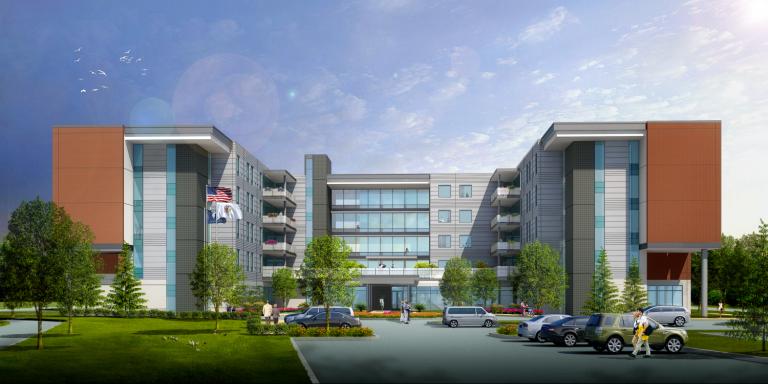 Bringing Our Heroes Home - The Illinois Veterans’ Home Project Tops OffOn 3/15/2019 the Illinois Veterans’ Home Project will hold it’s topping off ceremony – representing the culmination of decades of effort by the State of Illinois and Designer HED.
Bringing Our Heroes Home - The Illinois Veterans’ Home Project Tops OffOn 3/15/2019 the Illinois Veterans’ Home Project will hold it’s topping off ceremony – representing the culmination of decades of effort by the State of Illinois and Designer HED.
Located on an urban site on Chicago’s northwest side just 13 miles from downtown, the Illinois Veterans’ Home project will be the very first such facility to be built within the city of Chicago. It features non-age-restricted, licensed skilled care programming and features a strategic adjacency to the Read Mental Health Center.
As the first newly constructed veterans’ home in Illinois in over 20 years, the Illinois Veterans’ Home is also the first such facility in the state to incorporate the federal Community Living Center (CLC) guidelines, meaning it resembles “home” as much as possible while providing skilled nursing and medical care.
“This project embodies a paradigm shift in how the State of Illinois approaches veteran care,” says HED Principal and Studio Leader Susan King, “Using the CLC guidelines, which was mandated by the Federal Veterans Administration for all newly constructed projects in 2011, we’ve created a facility that incorporates small house design at a large scale.”
King continues, “The dining program utilizes a hybrid approach with central and residential format kitchens in each household to serve the population appropriately. Medical features and spaces such as nursing stations were approached through a hospitality lens, with finishes that recall a household environment.”
Expected to be completed in Winter of 2020, this facility will soon provide a home for 200 veterans.
-
 Sharon Woodworth Appointed to ACHA Board of RegentsHED Associate Principal and Healthcare Studio Leader Sharon Woodworth, FAIA, LEED AP BD+C, EDAC, ACHA has been appointed to serve a three-year term, from 2019 through 2021, as a Member of the American College of Healthcare Architects (ACHA) Board of Regents.
Sharon Woodworth Appointed to ACHA Board of RegentsHED Associate Principal and Healthcare Studio Leader Sharon Woodworth, FAIA, LEED AP BD+C, EDAC, ACHA has been appointed to serve a three-year term, from 2019 through 2021, as a Member of the American College of Healthcare Architects (ACHA) Board of Regents.
The ACHA was created in 1999 to offer board certification to licensed health care architects through an independent process involving a portfolio review, an assessment by peer architects, and a rigorous examination. It is the first and only design specialty so recognized by the American Institute of Architects (AIA).
Sharon joined the HED team in 2018 with over eleven million square feet of healthcare facility planning and design experience, spanning a wide range of operational and continuum-of-care issues from neonatology to senior living, and diverse cultural perspectives from the United Kingdom to Asia.
As one-of-ten ACHA Board Regents, Ms. Woodworth brings experience from previous board positions and a passionate belief that all healthcare architects should be board-certified. As a practicing healthcare architect, her designs recognize the value of research-based initiatives from EDAC and LEED Certification to Pebble Partnerships and Magnet Recognition; as an Assistant Professor at the University of California at San Francisco (UCSF), her graduate-level course on healthcare environments enables future healthcare executives to better understand the interplay between medicine and architecture. Through her four careers, Ms. Woodworth has leveraged perspectives from nursing, journalism, and teaching to redefine healthcare environments from merely functional rooms to inspiring spaces infused with natural light, and in so doing, sustaining health for us all.
To learn more about the ACHA, and the importance of this organization to the furthering of healthcare design, please visit their website at www.healtharchitects.org. -
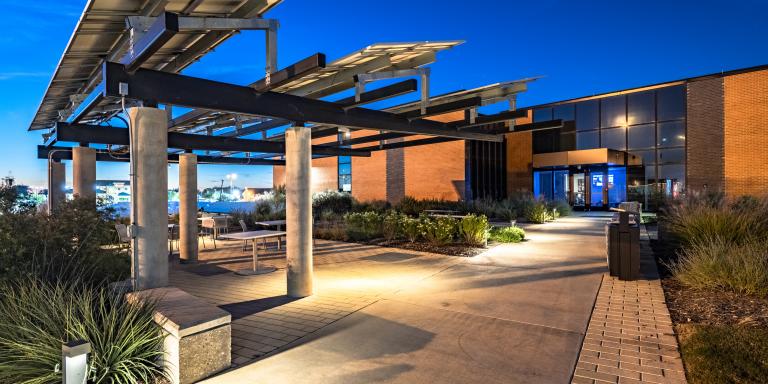 HED and Integrated Design Group Announce MergerHED is pleased to announce its merger with Integrated Design Group, also known as ID, an architecture, engineering, and planning firm with a strong reputation for data center design.
HED and Integrated Design Group Announce MergerHED is pleased to announce its merger with Integrated Design Group, also known as ID, an architecture, engineering, and planning firm with a strong reputation for data center design.
According to Peter Devereaux, FAIA, Chairman of HED, this is a natural step for the firm. “We are committed to strategic growth that increases the firm’s ability to create positive impacts for our clients and their stakeholders,” he says. “Bringing the ID team into the HED family is a step on our journey toward expanding our expertise and enabling a greater impact for our clients. It also allows us to reach new audiences -- both in this new market sector for HED and in all the sectors we serve in the regions surrounding Boston and Dallas.”
HED leadership recognizes that this is an important, fast-growing sector throughout the U.S. and beyond and see it as an opportunity. As Devereaux points out, “Many of our clients, in healthcare, higher education, and corporate work, for example, are seeking this intelligence and specialized expertise. This is an example of our ability to bring additional resources and insight to the table for our clients.”
The ID leadership and staff, working in two offices in Boston and Dallas, join the HED team working in Chicago, Detroit, Los Angeles, San Diego, San Francisco, and Sacramento offices. The team is now 420 strong.
Toni Asfour, Managing Principal of the Boston office, notes that the data center sector is experiencing tremendous growth and continues to evolve. “Data storage, transmission, and security are supporting almost every aspect of contemporary life. Our leadership in this realm is long and deep; we bring market intelligence to all scales of this work. Our clients include tech and retail corporations, financial institutions, health and pharma, educational institutions, as well as multi-tenant, cloud, and hyperscale data center providers.”
-
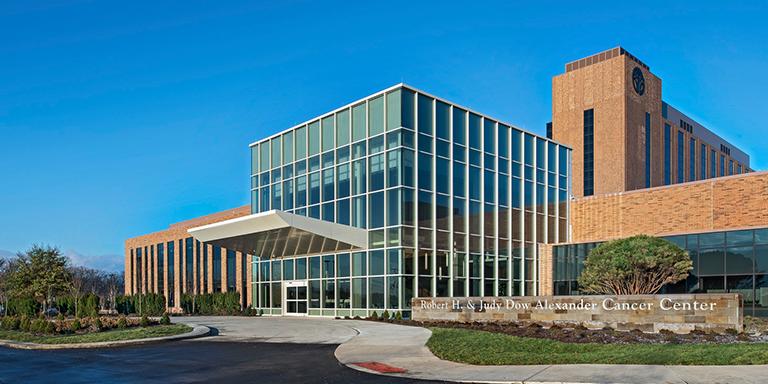 HED Celebrates Completion of St. Joseph Mercy Ann Arbor's Cancer Center RenovationHED is pleased to announce the completion of the Robert H. and Judy Dow Alexander Cancer Center at the St. Joseph Mercy Ann Arbor's hospital campus. The expanded 66,000 sf $24 million renovation creates new and expanded space for St. Joe's nationally-renowned cancer research while accommodating the facility's significant patient population expansion of recent years. As the only National Cancer Institute Community Oncology Research Program (NCORP) in Southeast Michigan, St. Joe's had a growing need to house expanded research and education for this field. The design's main floor hosts this important research work alongside a multi-disciplinary team of clinical psychologists, social workers, chaplains, geneticists and nutritionists. This space, designed to increase collaboration and communication among a comprehensive suite of providers, also features an education center offering community outreach and educational programming.
HED Celebrates Completion of St. Joseph Mercy Ann Arbor's Cancer Center RenovationHED is pleased to announce the completion of the Robert H. and Judy Dow Alexander Cancer Center at the St. Joseph Mercy Ann Arbor's hospital campus. The expanded 66,000 sf $24 million renovation creates new and expanded space for St. Joe's nationally-renowned cancer research while accommodating the facility's significant patient population expansion of recent years. As the only National Cancer Institute Community Oncology Research Program (NCORP) in Southeast Michigan, St. Joe's had a growing need to house expanded research and education for this field. The design's main floor hosts this important research work alongside a multi-disciplinary team of clinical psychologists, social workers, chaplains, geneticists and nutritionists. This space, designed to increase collaboration and communication among a comprehensive suite of providers, also features an education center offering community outreach and educational programming.
Home to 38 exam rooms, the expanded facility offers a separate entrance and exit for patients, providing a concierge-like oncology-care experience. Another key feature is its state-of-the-art new infusion center designed to host patients and their families in comfort with 22 private bays providing room for guests amidst a large amount of natural light which overlooks a healing garden.
"The interior approach in this facility is a new one for cancer care - utilizing fewer walls for a more open and flexible layout. The patient experience is made seamless with improved circulation. Unlike other hospitals and clinics, its organization is open rather than maze-like, preventing disorientation and reducing the feeling of a "clinical" experience for patients," said David Jaeger, HED's Healthcare Design Studio Leader.
-
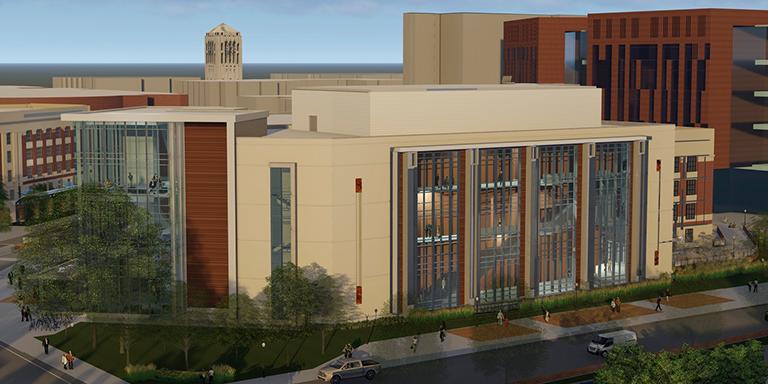 HED & SLAM Reveal Design of University of Michigan's Central Campus Classroom BuildingHarley Ellis Devereaux (HED), Architect of Record, and Boston-based The S/L/A/M Collaborative (SLAM), Design Architect, have just unveiled the design of the University of Michigan’s new Central Campus Classroom Building along with its connected renovation of the University’s historic Ruthven Museums Building. Some key features and opportunities posed by this high-profile project include:
HED & SLAM Reveal Design of University of Michigan's Central Campus Classroom BuildingHarley Ellis Devereaux (HED), Architect of Record, and Boston-based The S/L/A/M Collaborative (SLAM), Design Architect, have just unveiled the design of the University of Michigan’s new Central Campus Classroom Building along with its connected renovation of the University’s historic Ruthven Museums Building. Some key features and opportunities posed by this high-profile project include:
A total of 1,400 classroom seats in a variety of learning spaces, including a 550-seat auditorium, a 200- seat classroom “in the round” and other team-based learning rooms;
Utilization by more than 10,000 students per day during the University’s school year;
Adaptive reuse of the historic 1928 Albert-Kahn designed museum building into a new administrative center for the University;
Pursuing LEED Silver Certification for sustainable design;
Scheduled for construction completion and opening in Fall 2021.
The end result of a thoughtful, two-year design process will help propel U-M into its third century as a leader in education here in the U.S. -
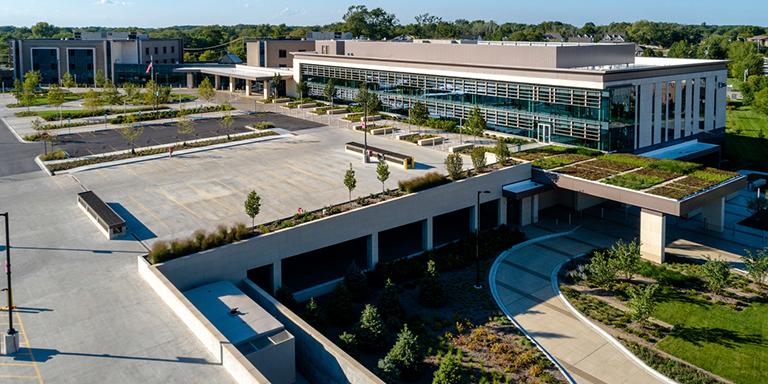 Palos Health $80M Modernization CompletedHED and Walsh Construction have finalized the $80 million design-build renovation of Palos Health South Campus in Orland Park, IL. The makeover was a five-year process consisting in adding modern technologies, incorporating a new, 83,000 square-foot Ambulatory Care Center, renovating 40,000 square feet of space in an existing building and constructing a new 316-car parking deck.
Palos Health $80M Modernization CompletedHED and Walsh Construction have finalized the $80 million design-build renovation of Palos Health South Campus in Orland Park, IL. The makeover was a five-year process consisting in adding modern technologies, incorporating a new, 83,000 square-foot Ambulatory Care Center, renovating 40,000 square feet of space in an existing building and constructing a new 316-car parking deck.
The master plan highlighted the need to unify the campus by organizing the clinics according to an academic health center model, which would enable better collaboration. The new building’s design preserves visual consistency, while the interiors feature biophilic elements such as wood and stone.
FIRM
/ NEWS